Germany: The perfect destination with beautiful nature and cultural attractions for every taste
Privacy settings.
Here you will find an overview of the types of cookies used on the website. You can set your consent for each category individually. Further information can be found in the privacy policy .
- Essential Cookies For the use of the website with all functions (e.g. user settings, watch lists, etc.)
- Statistics Statistics Cookies collect information anonymously. This information helps us to understand how our visitors use our website.
- Marketing In order to provide you with the best possible offer in cooperation with our partners, we use marketing tools. For example, in order to use our chatbot, you must activate this setting.
- External contents Required for viewing external media and third-party content. The provider may set cookies for its part. The respective data protection regulations of the provider apply.
- Inspiring Germany
- Cities & Culture
- Nature & Outdoor Activities
- Royal Palaces & Castles
- Experience & Enjoy

Current highlights
- Sustainable travel
- Barrier-free travel
- Easy language
- Federal states
Castles and Palaces: Fairytale Film Settings
Discover now
Classical Art Museums: Genuine Masterpieces
Must-see museums, enjoy vegan and eco-sustainable city getaways, 16 highlight natural landscapes, the latest trend: travelling out into the countryside by train., old towns with unesco world heritage status, 52 unesco world heritage sites and so much more, a 48-hour trip is full of possibilities, read our latest articles here, geological time travel: land of volcanoes, excellent hiking experiences in quality regions, creative and refreshing: the 'workation' travel trend, children are welcome: where the little ones take the main stage, 10 palaces and castles off the beaten path, slow travel by train: 9 gorgeous rail routes, 250 years of caspar david friedrich: pathways of history, university cities: youthful vibes and colorful atmosphere, capitals of culture: a grand entrance on the european stage, hotspots of automobile history, baroque cities: travel back in time to the 17th and 18th centuries, bauhaus: follow in the footsteps of this world-famous art school, nightlife cities: paradise for night owls, football hotspots: cities with an extra kick, action and adrenalin: tours for adventurers.
Aerial view of the Dauner Maar in the Volcanic Eifel ©AdobeStock (RalfenByte) Geological time travel: land of volcanoes To the overview
Experience nature and national parks as completely accessible
Pilgrimage: slow down, meditate, reflect, along the magic of peaceful lakes and wild river landscapes, romantic or fairytale: german holiday routes, the world of german animals: more than fox and deer, top spots for astronomy fans: starry skies, 16 highlights in germany, from medieval banquets to the song of the nibelungs, a journey back in time to the baroque era, top tips for special holiday experiences, where world history was written, dine and sleep in regal style, this is the taste of germany, wine experiences from the ahr to württemberg, craft beer: hop heroes everywhere, germany has a (wine) queen, an a to z of health and wellness, health spas and health resorts - a little time out, wine hikes: 5 regions for connoisseurs, discover german originality, 35 years since the fall of the wall, chemnitz: european capital of culture 2025, 52 unesco world heritage sites, summer of football: germany 2024, caspar david friedrich, simply feel good, germany’s top 100 survey, journey of discovery by train, travel from austria to germany with öbb, travel from switzerland to germany with sbb, from france to germany at high speed, barrier-free, experience germany barrier-free, all four seasons enchant in their own way.
The sun is warming the air, the days are getting longer, everywhere things are budding and blossoming: it's spring in Germany - time for getaways, blossom festivals, asparagus feasting and popular Easter traditions.
Summer At Last: Beer Gardens, Swimming Fun, Strawberry Ice Cream
Golden sunshine, colourful forests: the Indian summer can also be found in Germany. An ideal time for active holidaymakers and wellness fans. And for epicures, since this is harvest time.
Winter is the favourite season for any romantic. Outside, snowed-in forests and frozen lakes beckon. Inside, it feels cosy with baked goods, mulled wine and candlelight.
Follow us on Instagram
@germanytourism
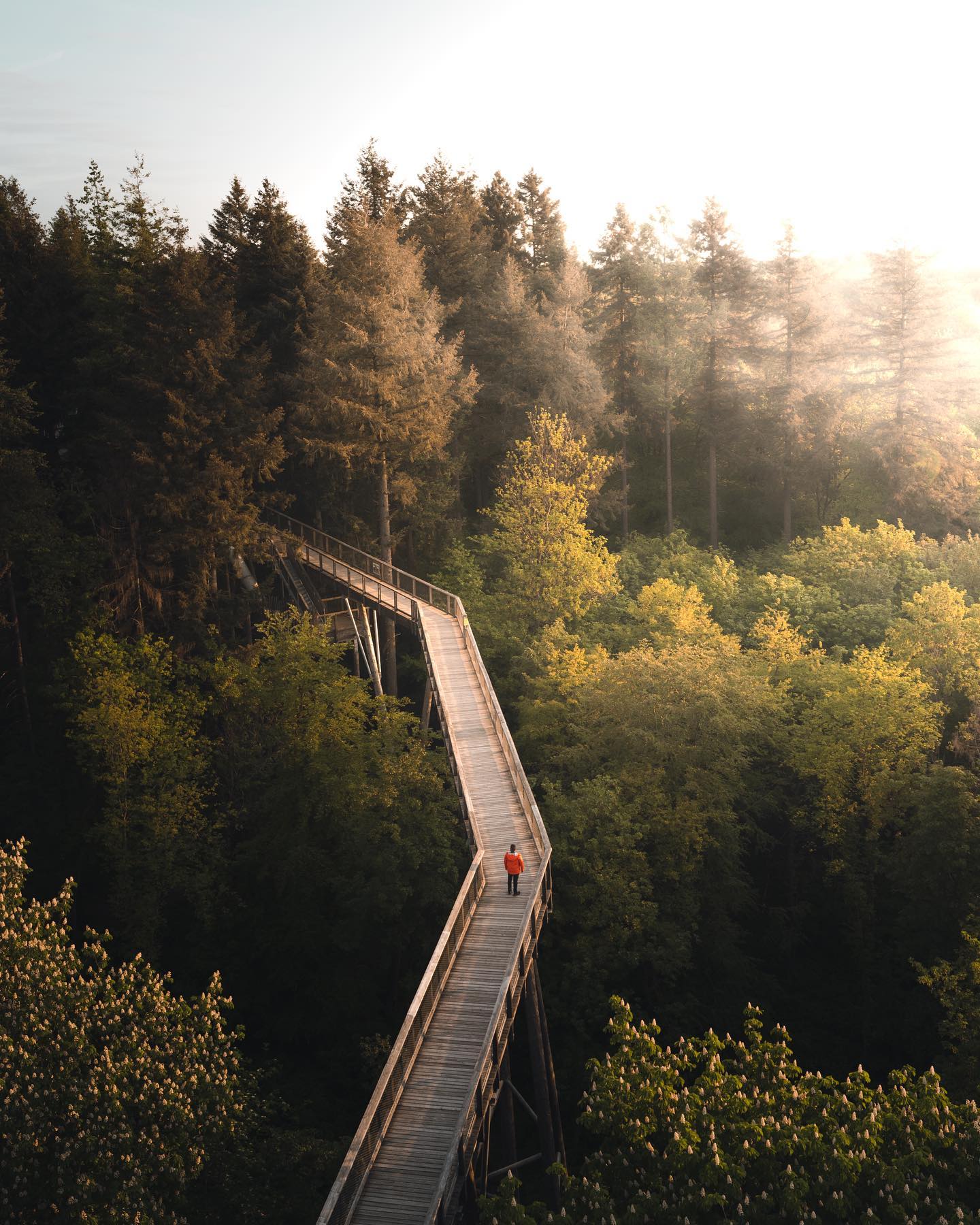
Discover Germany
You're almost there
You will shortly be receiving an email to confirm your subscription. Please remember to click on the verification link so we can authenticate your email address.
We look forward to sending you all the latest news and information about Germany.
You have clicked on the confirmation link. Your registration is now complete. You will now begin to receive our newsletter.
We're sorry to see you go...
You have been unsubscribed from the Destination Germany newsletter. Feel free to continue using our digital channels. We hope to see you again soon!
Your participation has been confirmed.

The Only Germany Travel Guide You’ll Ever Need
Last Updated: January 5, 2024
*FYI - this post may contain affiliate links, which means we earn a commission at no extra cost to you if you purchase from them. Also, as an Amazon Associate I earn from qualifying purchases. Check out our Privacy Policy and Disclosure. for more info.
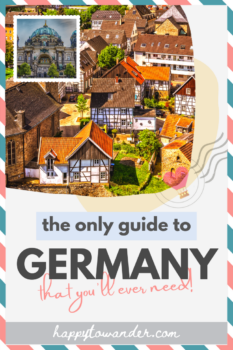
While most commonly associated with beers, bratwursts and tight leather pants, Germany is a country full of delightful finds that extend far beyond the stereotypes.
From dreamy castles and fairytale towns to awe-inspiring nature and sprawling cities, Deutschland has a little something for every kind of traveler… although I’ll admit the leather pants are also great.
I first visited Germany on a 6 week backpacking trip across Europe, and as I sipped my comically large beer under the toasty Berlin sun, I felt a strange sense of calm and belonging.
Spurred by this hunch, I moved to Munich. One study abroad, and 5 years later, I’m still here, with so much giddy enthusiasm for this country that I’ve become a thoroughly insufferable dinner guest.
But my social life’s loss is your gain, my friend… because today, I’ve decided to channel all my Deutschland fangirl tendencies into this concise Germany travel guide filled with all my top tips, itineraries, and recommendations.
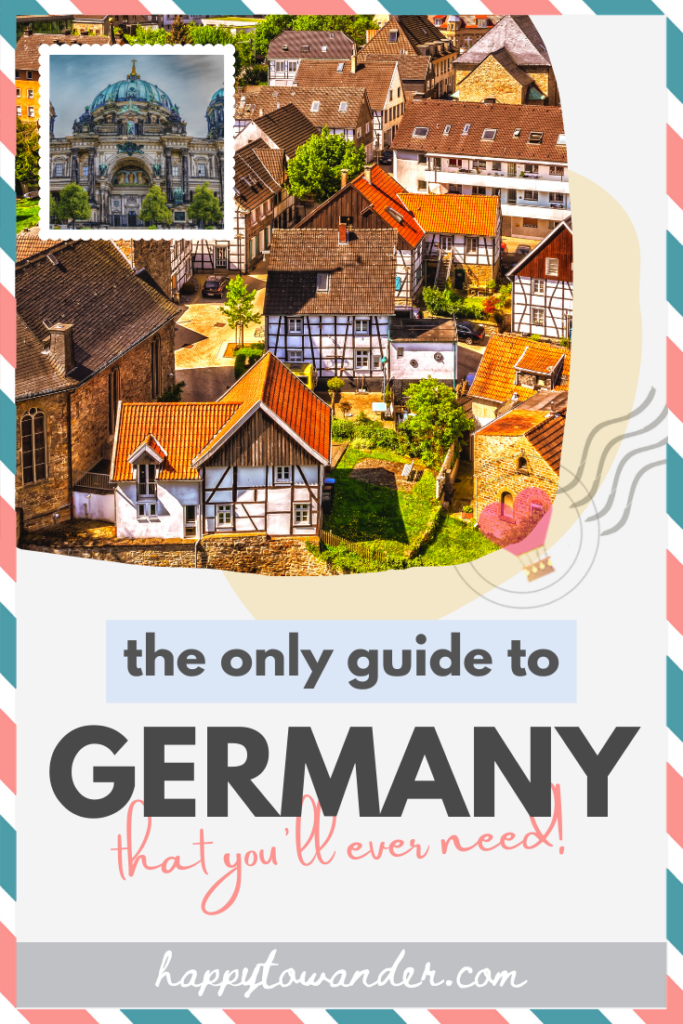
Save this Germany travel guide for later!
I promise it’ll come in handy!
I hope you find it helpful, and of course, feel free to ask any more questions in the comments section or on Instagram here.
Traveling to Germany Basics
Currency: Euro
Language: German, although accents and dialects vary wildly! In larger cities and tourist hotspots, most Germans also speak excellent English.
Getting Around: Trains, buses and flights are plentiful and affordable in Germany – my best tip is to use Omio to compare options easily. Having a car is ideal for visiting smaller towns, more remote locations and numerous destinations in a short amount of time, but is otherwise not needed for big cities.
Germany Highlights (By the Season)
- Winter: Christmas markets, skiing & alpine sports, Karneval and Fasching season (Carnival), Starkbier (Strong beer) season
- Spring: Cherry blossoms in Bonn , Frühlingsfest (Springfest) in Munich
- Summer: Hiking, Beer Garden season, summer festivals/celebrations
- Fall: Oktoberfest and other Volksfests, the world’s biggest pumpkin festival in Ludwigsburg, the Wurstmarkt (world’s largest wine festival)
My Favourite Places in Germany
Let’s get my mega-biased opinion out of the way first – Munich is the city I now call home, and I couldn’t recommend it more… especially if you’re obsessed with beer like I am. This is the birthplace of Oktoberfest after all!
There are lots of fun things to do in Munich , like hopping around the city’s sprawling museum district (many only cost 1 euro on Sundays!), eating up the best Bavarian food that Munich has to offer or soaking in the wealth of historical sites scatered around the city.
It’s also an ideal base for many epic day trips. Going from Munich to Neuschwanstein Castle (AKA the real life Sleeping Beauty castle) takes only 2.5 hours. Or, if you want to visit glorious Salzburg from Munich (AKA the birthplace of Mozart and setting of Sound of Music), that’s only 1 hour by train.
Why visit Munich when you travel Germany:
- Amazing beer & beer festivals
- The English Garden – one of the largest city parks in the world
- Beautiful palaces and museums
- Easy base for amazing day trips to the Alps
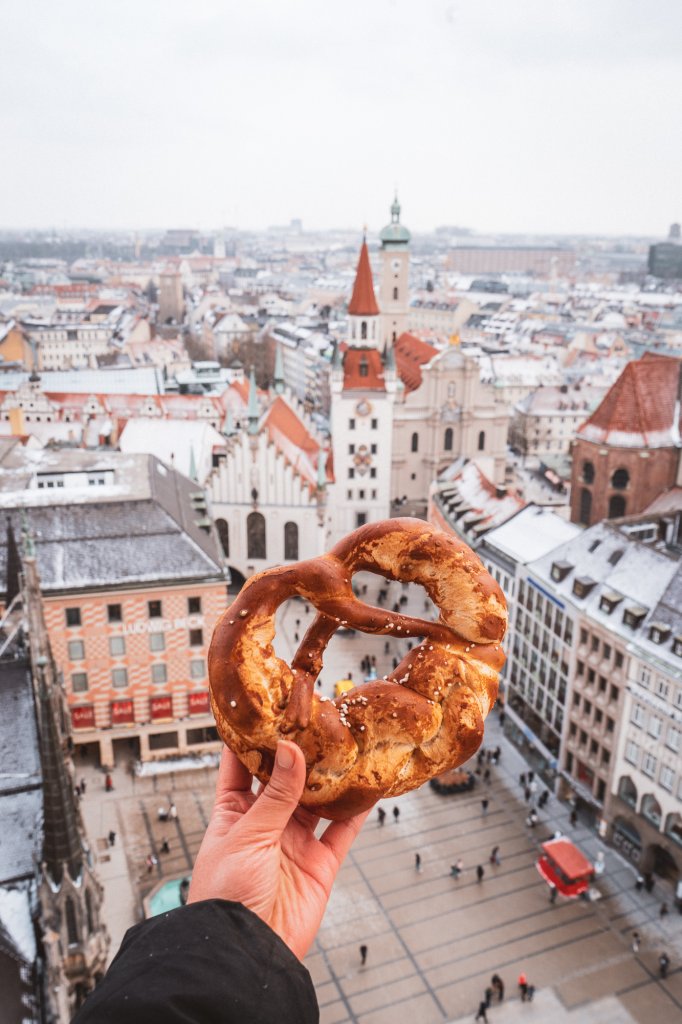
Berchtesgaden National Park
If it’s natural beauty you’re after, Germany’s Berchtesgaden National Park (near the border to Austria) is a must-visit.
Everything here is breathtaking – from the shimmering turquoise lakes and snow-flecked mountains to the adorable Berchtesgaden town center.
And, if you’re up for it, this is the ideal place to enjoy a typically Bavarian wellness weekend.
Why visit Berchtesgaden National Park when you travel Germany:
- Stunning hikes and scenery
- The glorious boat ride on Königssee to see the equally stunning Obersee
- Historic sights like Hitler’s Eagle’s Nest

Hands down one of my favourite places to visit time and time again is Berlin.
This endlessly fascinating city is home to incredible museums, delicious food, and a unique culture that makes it distinct from the rest of the country, despite its status as capital!
Whether you’re a history nerd, an avid partyer, or a famished foodie, Berlin has plenty to offer.
Why visit Berlin when you travel Germany:
- Fascinating history
- World-class museums and attractions
- A thriving nightlife and food scene
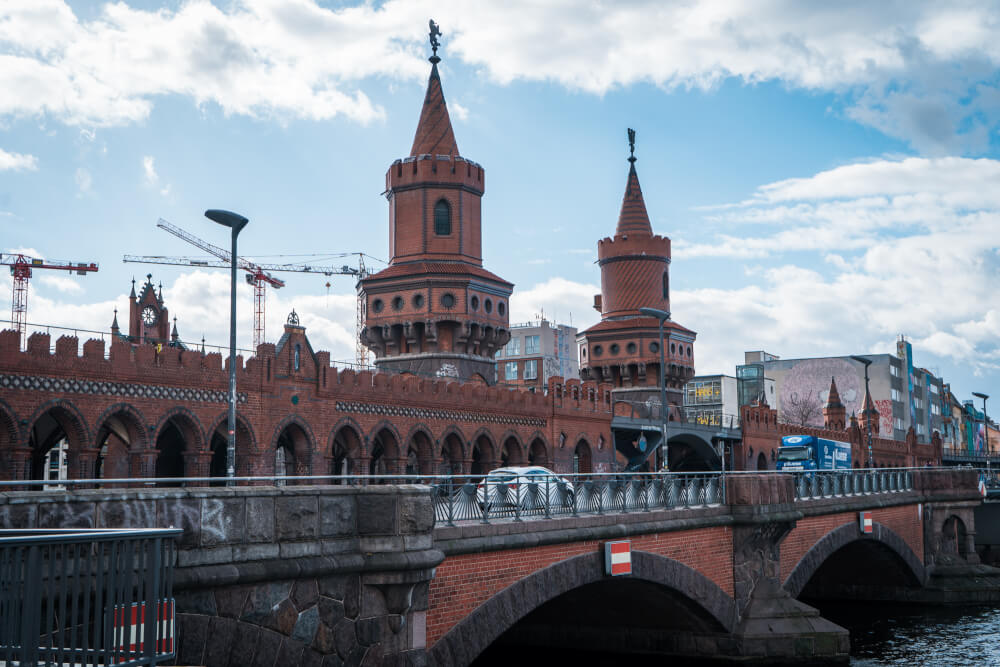
Franconia is a glorious region in northern Bavaria that is divided into Lower, Middle, and Upper Franconia.
To me, it’s one of the most underrated regions in Germany for international visitors, with an abundance of fairytale half-timbered houses, amazing beer, and unique natural landscapes.
Here are some places in Franconia that are absolutely worth visiting:
- Franconian Switzerland
- Würzburg (still haven’t been yet!)
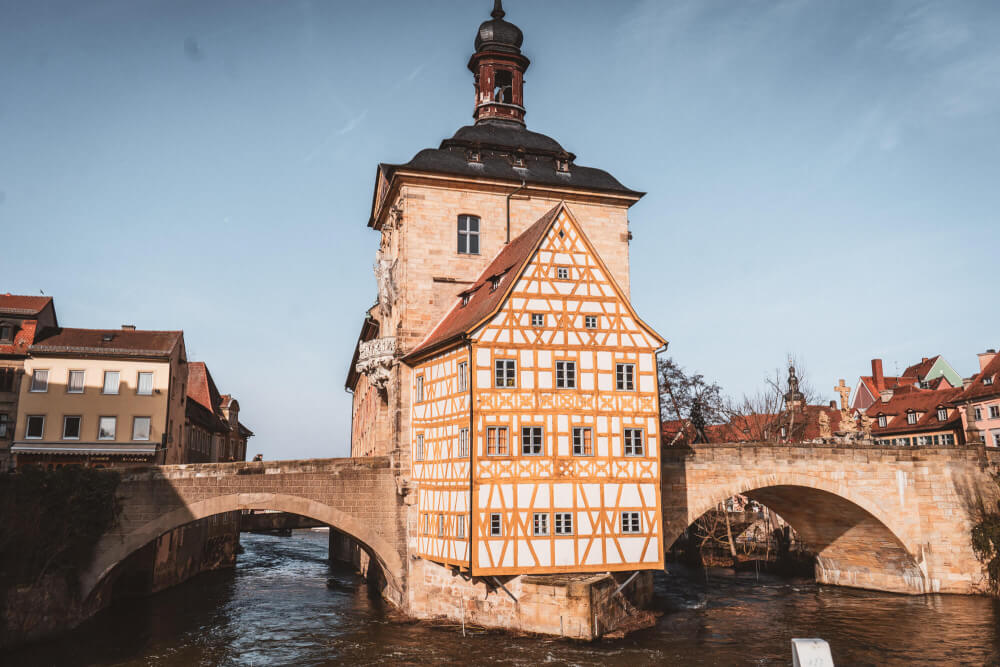
Perhaps the most idyllic entry of this list is Monschau, a sleepy but gorgeous village found near the border to Belgium.
I was lucky enough to come here for Christmas markets a few years ago, and I loved it so much, I skipped the train I’d pre-booked just so I could spend a few more hours there.
Picturesque half-timbered houses clustered around a roaring central river… oh, and a castle on a hill. Because of course they have one.
Why visit Monschau when you travel Germany:
- Super friendly locals
- Picture-perfect scenes at every turn
- Christina might cry if you don’t
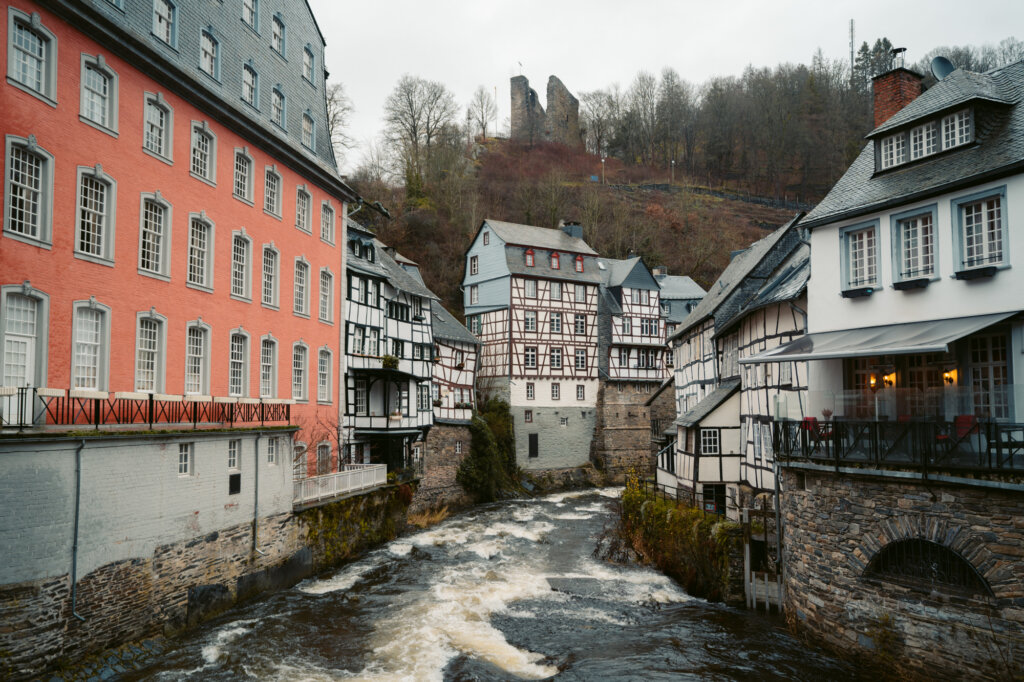
Hamburg is an amazing city I’ve had the chance to visit a few times now. It’s a lifestyle city that reminds me a lot of my hometown, Vancouver.
Home to a mix of classic and modern architecture (including the coolest opera house in the world!), as well as Germany’s #1 attraction – the adorable Miniatur Wonderland, Hamburg has a lot to offer tourists, but perhaps the best way to enjoy it is with a nice beer and sunset along the Elbe.
Why visit Hamburg when you travel Germany :
- Amazing architecture like the Elbphilharmonie
- Fresh and tasty seafood (and a booming foodie scene!)
- A fun, vibrant vibe
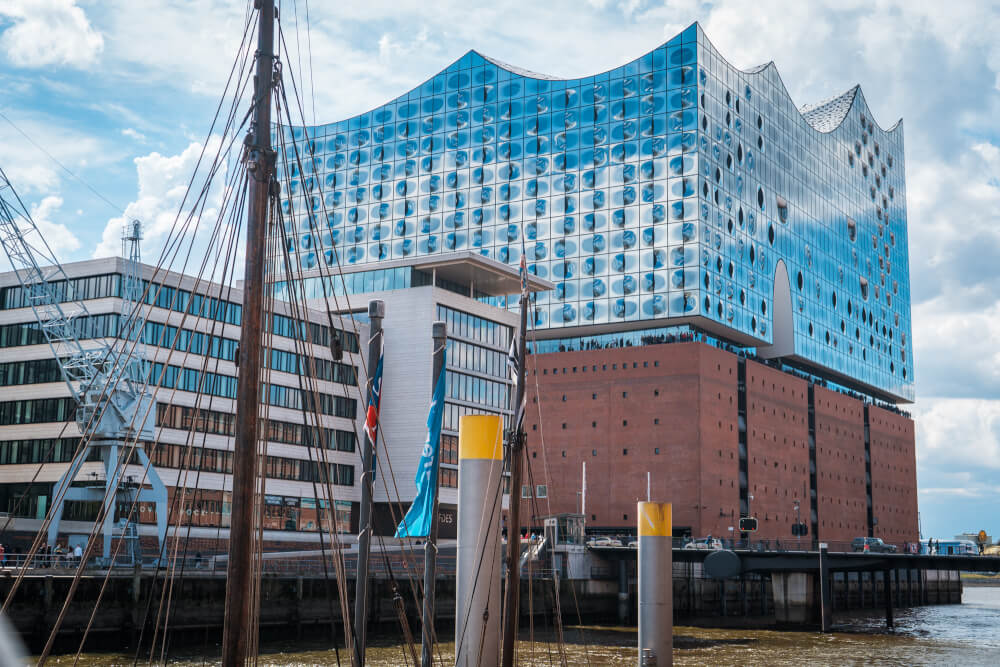
Dresden is one of the most beautiful cities in Germany, and its beauty is all the more astounding when we consider that much of the city was destroyed completely in WWII.
After decades of reconstruction however, Dresden once again shines with its former glory, establishing itself as one of the most important cultural hotspots in Germany.
… and all only a stone’s throw from Saxon Switzerland, one of the most beautiful natural wonders in the country!
Why visit Dresden when you travel Germany :
- Stunning architecture and sights
- World-class museums and culture scene
- Its jawdropping Christmas market (the oldest one in the country!)
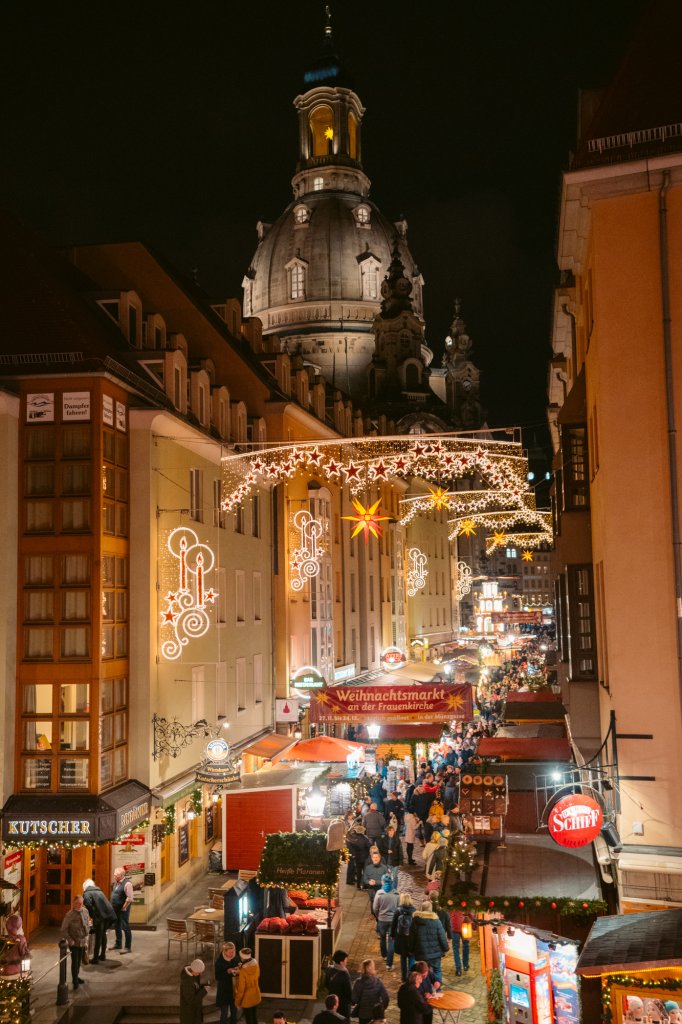
Stuttgart (and its Surrounding Area)
Stuttgart is the biggest city (and capital) of the German state Baden-Württemburg.
It’s perhaps best known as the ‘cradle of the automobile industry’, which explains why it’s home to not just one, but two car-centric museums: one belonging to Mercedes-Benz, and one to Porsche.
Besides cars though, the area around Stuttgart offers up some of the cutest small towns you can find in Germany, all easily reachable by public transport, meaning you get the best of all worlds during a visit here.
Why visit Stuttgart and the surrounding area when you travel Germany:
- Fairytale towns like Esslingen, Ludwigsburg, and Tübingen
- Stuttgart’s Stadtbibliothek, one of the most unique and beautiful libraries in the world
- Lots of fun events like Stuttgart’s Christmas Market and the Cannstatter Volksfest
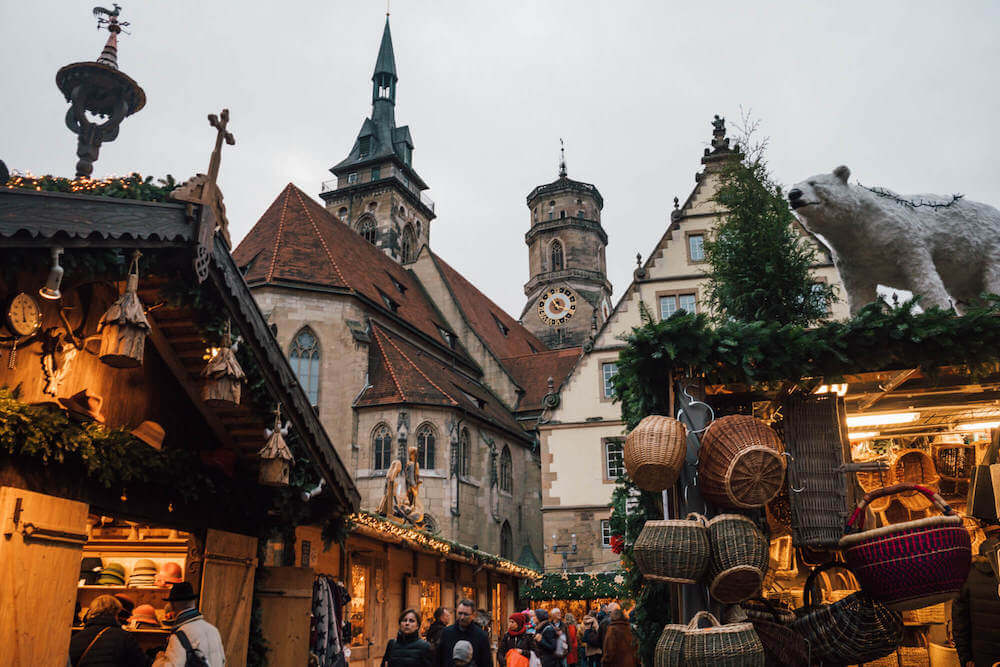
Thuringia is a state often overlooked by international tourists, but if you’re looking for a truly charming German escape, its capital Erfurt makes an excellent choice.
This beautiful city is famed for its unique Krämerbrücke, which is a gorgeous medieval bridge lined with residential buildings.
But that’s not all – there’s also an impressive cathedral, an imposing fortress, and surprises waiting on every corner… quite literally, because Erfurt is the HQ of the German children’s channel KiKA, and there’s plenty of fun statues of famous characters scattered around town.
Why visit Erfurt when you travel Germany:
- Krämerbrücke, the longest inhabited bridge in Europe
- Quirky and fun children’s channel sculptures all over the city
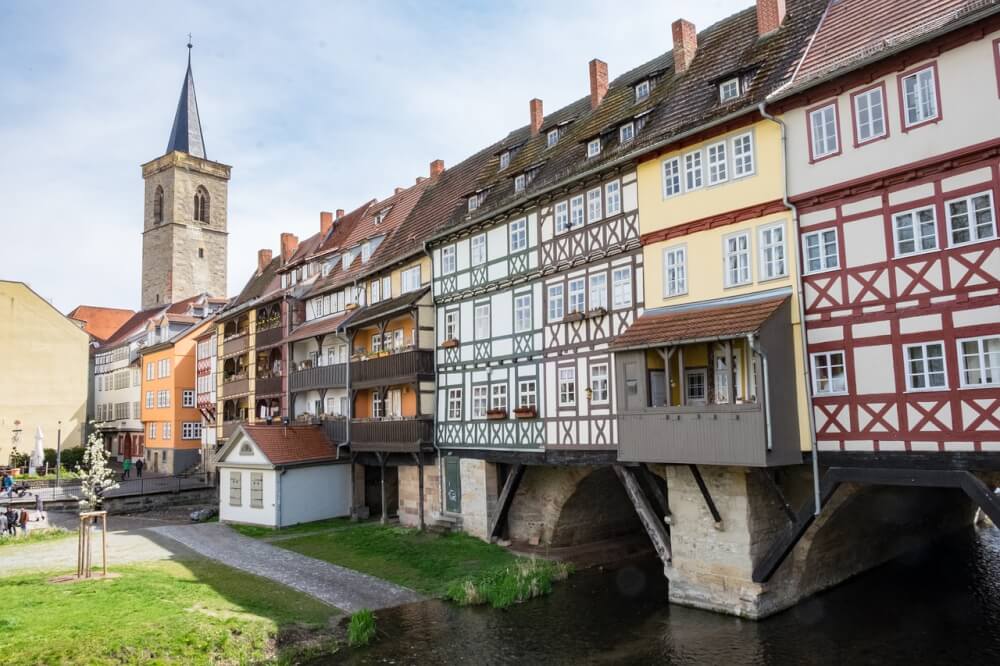
Cologne, to me, is a city synonymous with fun and celebration. While at first glance, it might not rank among the “prettiest” places to visit in Germany (much of it was destroyed in the war), it still boasts several impressive landmarks and sights, like the epic Cologne Cathedral.
Where Cologne really shines though is during special events – the Christmas markets here are some of the best I’ve been to in my entire life, and the Karneval celebrations… well, those are truly epic!
Why visit Cologne when you travel Germany:
- Bucket list events like the Cologne Christmas Market and Kölner Karneval
- The iconic Kölner Dom (Cologne Cathedral), one of the most famous churches in the world
- Fun-loving locals who are among the friendliest I’ve ever encountered in Germany
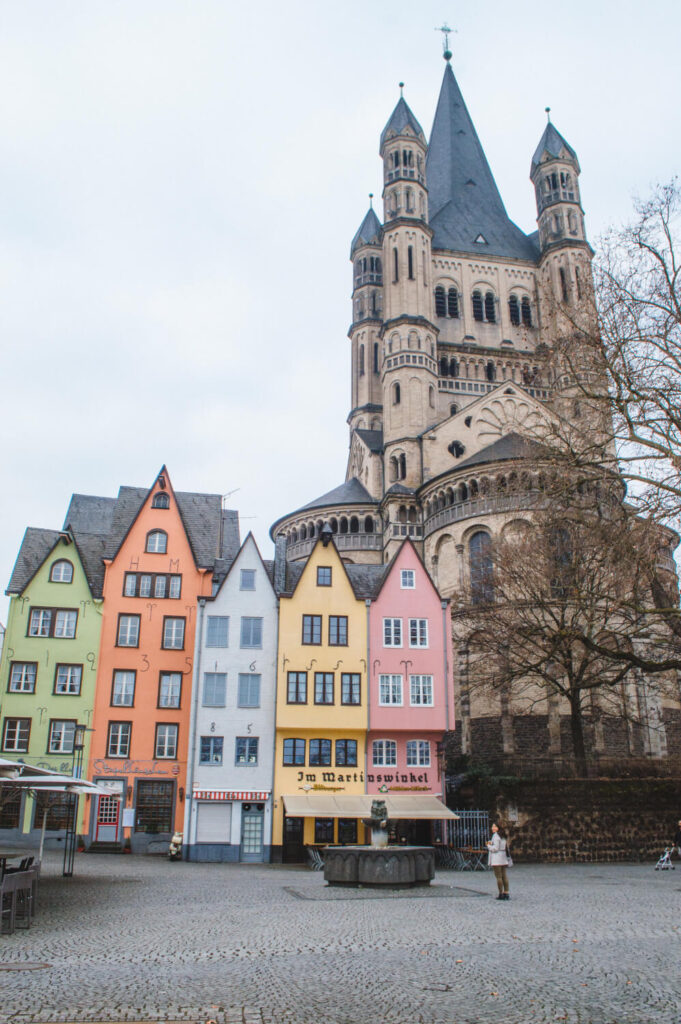
Last but not least, we have Hannover, a city which (in my opinion) is one of the most underrated cities in Germany where tourism is concerned.
Locally, people often joke that Hannover is one of the most boring cities in Germany, but I don’t think that’s true at all. One quick look and you’ll find a stunning palace within the city, an architecturally impressive Town Hall (with a unique elevator offering epic views), and a cool laidback vibe that many compare to what Berlin was like decades ago.
Here are some awesome things to do in Hannover.
Why visit Hannover when you travel Germany:
- Its gorgeous New Town Hall
- The stunning Herrenhausen Palace and its gardens
- A fun, laidback city vibe
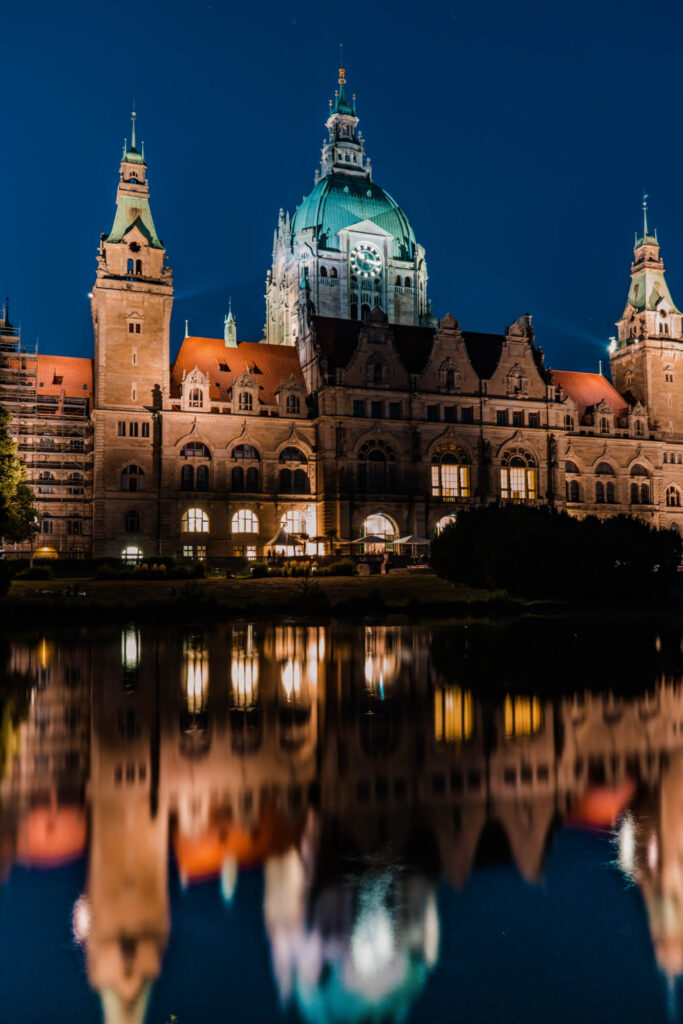
Bucket List Experiences in Germany
Germany is full of incredible bucket list experiences. Here are a few of my favourites:
Christmas Markets
German Christmas markets are the stuff of bucket list dreams.
If you adore Christmas, a German Xmas market trip needs to make it on your bucket list, because nobody captures Christmas coziness and joy quite like the Germans do.
The best part (besides the droolworthy assortment of German Christmas Market foods ) is that you’ll find Christmas markets in just about every city, town, and even the smallest of villages, each with their own unique take on traditions.
Trust me, you could never get bored of visiting these.
Here are some full guides to the Christmas markets I’ve visited in Germany:
- Munich’s Christmas Markets
- Berlin’s Christmas Markets
- Cologne’s Christmas Markets
- Esslingen Christmas Market
- Ludwigsburg Christmas Market
- Karlsruhe Christmas Market
- Düsseldorf Christmas Market
- Nuremberg Christmas Market
- Essen Christmas Market

Oktoberfest
Trust me – Oktoberfest , AKA the world’s largest beer festival, is reason enough to make a trip to Germany.
Typically celebrated annually in Munich, this is one of the most incredible events in the world, with millions of people attending, millions of beer served, and a guaranteed recipe for making memories to last a lifetime.
… If you can remember anything after 5L of beer that is.
Read my full Oktoberfest guide for more details.
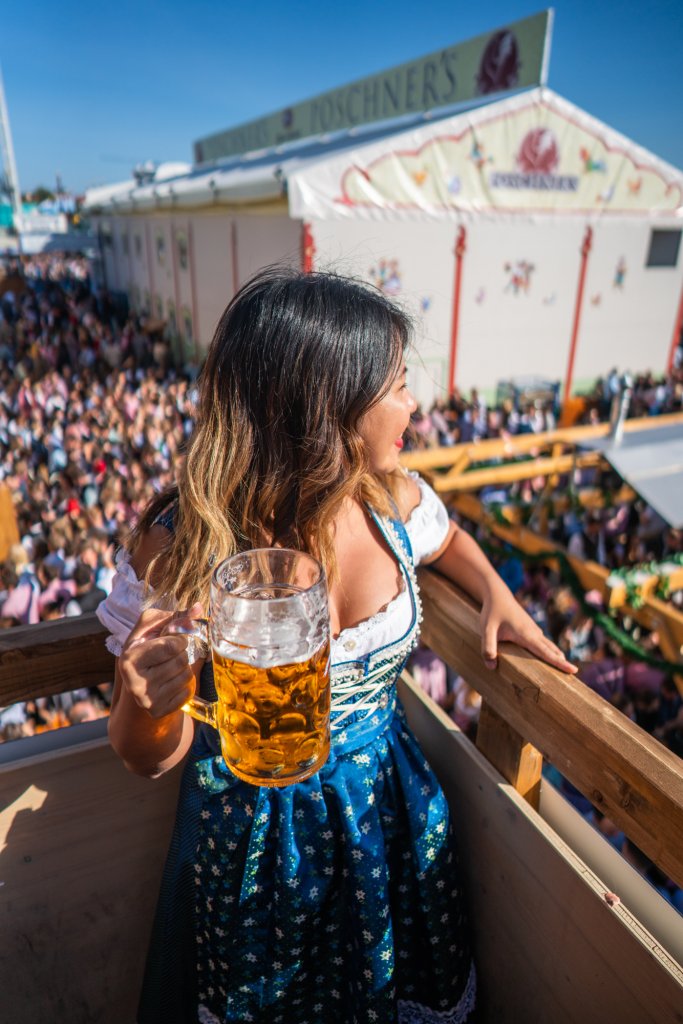
Visiting Fairytale Castles
If you love castles, I recommend avoiding Germany……. because you might just combust from sheer fangirl joy.
Seriously, Germany is every castle lover’s kryptonite, with elegant palaces and fairytale castles in the thousands. If you’re a Disney gal like me who grew up dreaming of happily ever afters, pack a ballgown and head to Germany ASAP.
I promise you won’t be disappointed.
Here are some castles that you must visit in Germany:
- Neuschwanstein Castle
- Nuremberg Castle
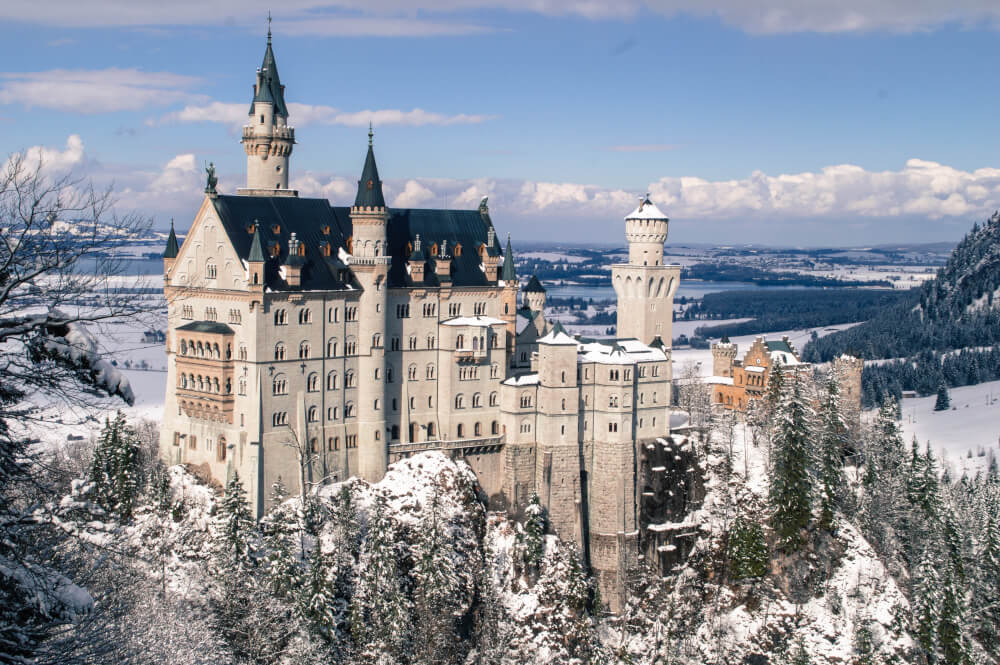
The Cherry Blossoms in Bonn
The cherry blossoms in Bonn (also the birthplace of Beethoven and gummy bear legend, Haribo) are absolutely spectacular, and 100% worth visiting in Spring time. In fact, I’d even say they’re one of the best things to see in Europe at Spring time.
Yes, you, too, can come frolic in these tunnels of pink! Here is my guide on where to find cherry blossoms in Bonn.
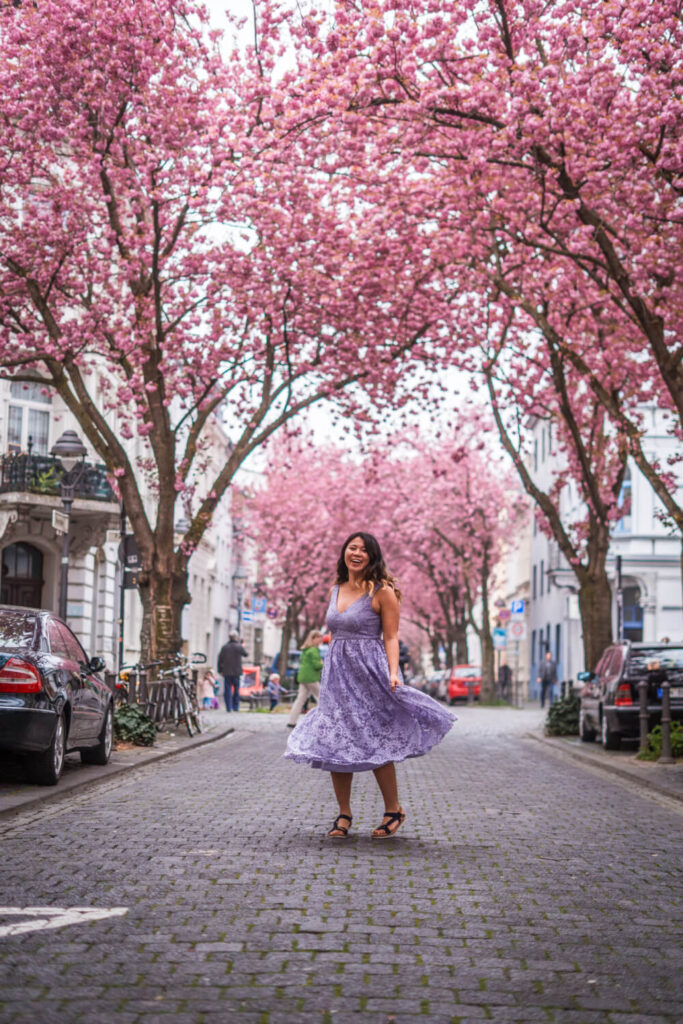
Karneval, Fasching, Etc.
Carnival Season is one of the best times to visit Germany if you’re looking for a party.
The grandest celebrations take place just before Lent, and are celebrated throughout the country, although the festivites in North-Rhine Westphalia are probably the best known.
My top recommendation? Go celebrate in Cologne, where the Kölner Karneval draws millions of visitors every year.
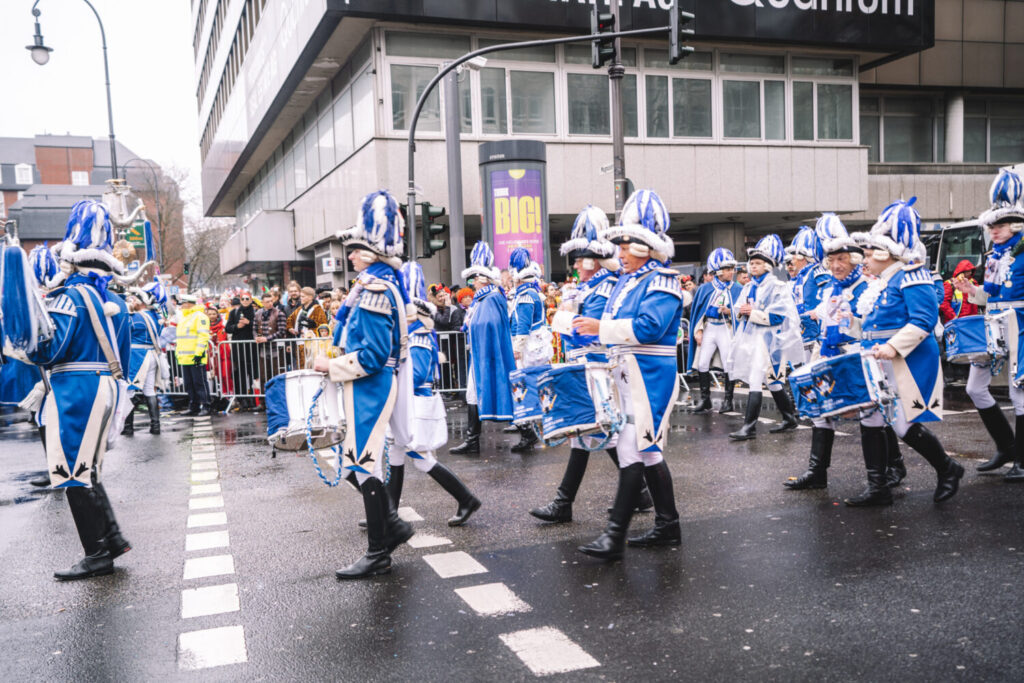
My Recommended Germany Itineraries
Germany is a huge country with a massive diversity in sights… so how can you organize your time efficiently and make the most of your trip? Here are some German trip itinerary ideas…
Germany itinerary ideas for a taste of everything:
- Southern Germany Classic: Munich, the Allgäu (for Castles!), Garmisch Partenkirchen, Berchtesgaden National Park, Stuttgart & Area, Black Forest
- Eastern Germany Classic: Berlin, Dresden, Saxon Switzerland
- Western Germany Classic: Aachen, Monschau, Eifel National Park
- Northern Germany Classic: Hamburg, Bremen , Lübeck, Kiel, Sylt
- The Rhine River Classic: Mainz, Koblenz, Burg Eltz, Cochem, Bonn, Cologne, Düsseldorf
- The Harz Mountains Experience: Harz Mountains, Goslar, Wernigerode, Quedlinburg
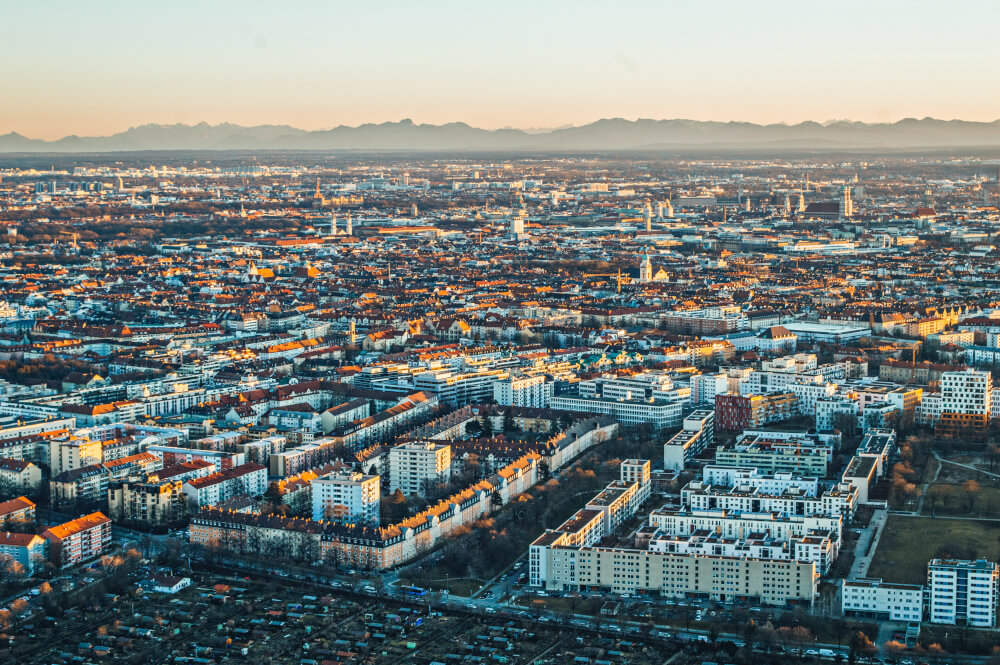
Germany itinerary ideas for city breakers and culture hunters:
- The Big City Tour: Berlin and Munich (a 4 hour express train connects them)
- The BaWu Special: Stuttgart, Ludwigsburg, Tübingen, Esslingen, Heidelberg
- The Bavaria Special: Munich, Nuremberg, Bamberg, Würzburg, Bayreuth
- The Saxony Special: Leipzig, Görlitz, Dresden
- The Rhine City Hop: Bonn, Cologne, Düsseldorf
- The Romantic Villages Hop: Würzburg, Dinkelsbühl, Nördlingen, Rothenburg ob der Tauber, Füssen

Germany itinerary ideas for nature lovers:
- Southern Germany Nature Itinerary: Berchtesgaden National Park, Garmisch-Partenkirchen, the Black Forest and Lake Constance (Bodensee)
- Bavaria’s Best Nature Itinerary: Berchtesgaden National Park, Garmisch-Partenkirchen, Munich’s Lake Region, Franconian Switzerland, Danube Gorge
- Eastern Germany Nature Itinerary: Dresden and Saxon Switzerland National Park

My Top Germany Travel Tips
- If you’re overwhelmed by transport options, Omio is a great resource for comparing trains, buses and flights in Germany at the same time.
- If travelling by train, look into group discount tickets like the Bayern Ticket which give you unlimited train travel for one day on regional trains. It can save you a TON of money.
- If you are traveling to multiple countries nearby (i.e. Switzerland), a Eurail pass might save you money.
Accommodation:
- Booking.com is a great place to search up hotels, and filtering by Free Cancellation allows you to book without paying upfront
- Airbnb can be a very affordable alternative for longer stays/bigger groups
Attractions and Tickets:
- GetYourGuide is a great site for finding tours and attraction tickets
- City passes like the Munich City Pass , Berlin Pass , and the Cologne Card can save you a LOT of money if you plan to visit many tourist attractions in a short time
- If you’re trying to find specific info about a place, try using Google Translate to search in German because German versions of sites always have more info
If you’re past the planning stage and heading to Germany soon, make sure you read this before you go:
- Hilarious must-knows before you visit Germany
More Germany Travel Reads
Feeling inspired to visit Germany after reading all that?
As you can (probably) tell, I’ve written extensively about Germany.
So, here are some more articles that might pique your interest:
- Unique Things to do in Germany (That You Can’t Do Anywhere Else)
- The Best Christmas Markets in Germany
- Hilarious Must-Knows Before You Visit Germany
My Go-To Travel Favourites:
🧳 Eagle Creek: My favourite packing cubes
💳 Wise: For FREE travel friendly credit cards
🍯 Airalo: My go-to eSIM
🏨 Booking.com: For searching hotels
📷 Sony A7IV: My (amazing) camera
✈️ Google Flights : For finding flight deals
🌎 WorldNomads: For travel insurance
🎉 GetYourGuide: For booking activities
4 thoughts on “The Only Germany Travel Guide You’ll Ever Need”
i found myself reading almost every post in your website for days and days and i ABSOLUTELY LOVE IT and adore and thank you for spending so much time and effort to make it so helpful, informative and fun to read. you have helped me plan my trip to munich in december and i cant wait to visit just because of your enthusiasm 🙂
We would like to Thank you for sharing such a beautiful blog! Very informative.
This Germany Travel Guide truly captures the multifaceted beauty of Deutschland, a country that has something to offer to everyone, from culture enthusiasts to nature lovers. Your personal anecdotes from living in Munich make it come alive, making me yearn for a taste of that amazing beer you’ve mentioned, and a wander around the English Garden! The varied seasonal highlights emphasize how Germany is a year-round destination, offering uniquely charming experiences, from the festive winter Christmas markets to the lively summer festivals. It’s heartening to know that navigating around the country is convenient, making it possible to explore its picturesque small towns and vibrant cities. This guide is a treasure trove for anyone planning to travel to Germany – it gives a well-rounded view of the country, infused with personal insights, which makes it even more valuable. I’m particularly intrigued to visit Munich, the city you so passionately call home.
As a Berliner, I can’t agree more with this guide. Germany truly is a delightful mix of tradition and innovation, natural beauty and urban charm, hearty cuisine and diverse cultures. Moving around in Germany is indeed quite convenient thanks to the well-organized public transportation system, including trains, buses, and trams. And yes, English is widely spoken in major cities, so communication shouldn’t be a problem for travelers. As for the varied dialects across regions, it just adds to the unique charm of exploring this beautiful country. Safe travels, fellow adventurers!
Leave a Comment Cancel reply
By using this form you agree with the storage and handling of your data by this website. *
Nomadic Matt's Travel Site
Travel Better, Cheaper, Longer
Germany Travel Guide
Last Updated: April 29, 2024
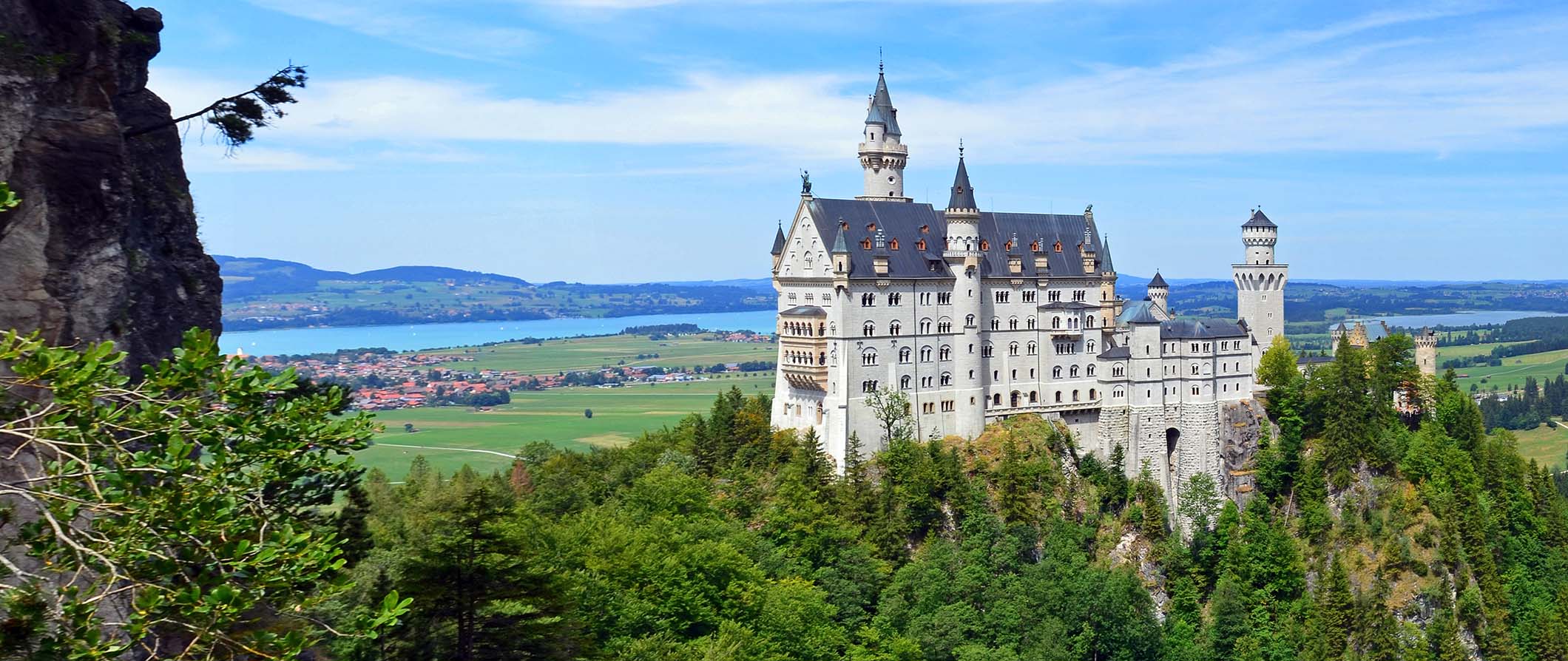
Germany. The country is synonymous with beer, sausages, incredible hiking, majestic castles, serious people, and wild techno parties. It’s huge, diverse, and utterly amazing.
There’s a vibrant art and music scene in Berlin , beautiful forests in the west, majestic cathedrals and castles throughout the country, picturesque “Sound of Music” cities in the south, and overlooked historic cities and beaches in the north.
The more I visit Germany, the more I fall in love with it. Whether you are backpacking, traveling on a mid-range budget, or looking to splash out, traveling around Germany is wonderful.
That said, Germany is a huge country so don’t rush your visit. There’s more to the country than just Berin and those cross-country train rides are longer than you think.
This travel guide to Germany will help you plan your trip, save money, and make the most of your visit!
Table of Contents
- Things to See and Do
- Typical Costs
- Suggested Budget
- Money-Saving Tips
- Where to Stay
- How to Get Around
- How to Stay Safe
- Best Places to Book Your Trip
- Related Blogs on Germany
Click Here for City Guides
Top 5 things to see and do in germany.
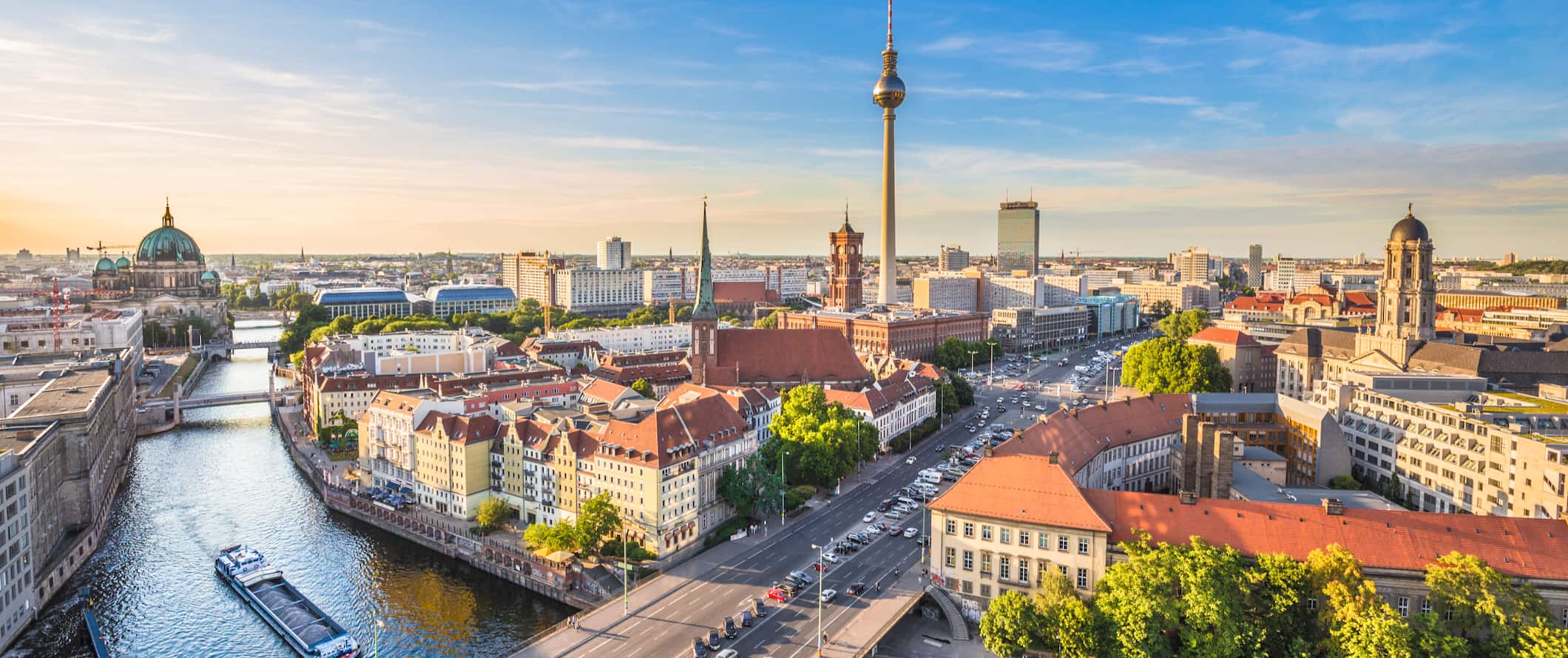
1. Get lost in Berlin
Germany’s hip capital has world-class museums, history, funky neighborhoods, and some of the best nightlife in Europe. From the museums to the art and music scene to the great bars and cheap food, Berlin is electric (and one of the cheapest European capitals). It’s a really amazing city that has grown on me with every visit.
2. See Munich
Berlin’s quiet, upscale cousin, Munich is a city steeped in history, lively beer halls, incredible food, lush parks, and a royal palace. It’s a beautiful destination and there are a lot of Bavarian towns nearby that make for scenic day trips.
3. Party at Oktoberfest
Held annually in September and October, the world’s largest beer festival is filled with huge steins and giant pretzels. I went there for 5 days and had the time of my life. Buy some lederhosen, raise a glass, and sing some German beer songs. Just make sure to plan your trip well in advance as things sell out fast!
4. Explore the Romantic Road
A string of historic cities in Bavaria, the “Romantic Road” is the name for the route through majestic Bavarian towns and their surrounding snow-capped mountains. The area can get quite touristy but it’s a beautiful area and a great choice for road trips and romantic getaways. There are a ton of tour options for the area that are worth checking out. For some of the more further afield attractions, the tours are a must as they are hard to visit without a car.
5. Hike the Black Forest
The Black Forest is so named because of the dark green pine trees that grow here. Spanning over 6,000 square kilometers (2,300 square miles), there are hundreds of miles of hiking trails worth exploring and you can spend some time stopping in towns that are famous for their cuckoo clocks and hearty German fare. If you want to go on a guided hike or adventure activity, you can find a lot here.
Other Things to See and Do in Germany
1. explore lake constance.
Lying along the country’s southwestern border with Switzerland and Austria , Lake Constance (known as Bodensee in German) is Germany’s largest freshwater lake and the third-largest in Central Europe. One of the lake’s main attractions is the island of Mainau, also known as Flower Island, which is home to many specialty gardens, a baroque palace, and one of the largest butterfly houses in Germany. Tickets to visit the island are 10.50 EUR. Be sure to visit the many picturesque medieval villages and castles nearby, enjoy water sports, and go hiking and biking along the 272-kilometer (170-mile) Lake Constance Trail.
2. Visit Hanover
This city was one of the hardest hit during World War II, leaving it with only a few historical landmarks. But what I loved about Hanover were its large green areas of forests and big parks, the River Leine winding through the city, and the Sprengel Museum. Not many people visit, but I think it is one of Germany’s most underrated destinations .
3. Hike Berchtesgaden National Park
This national park, located in the south of Germany along the Austrian border, is an alpine heaven of lush forests, steep rock faces, crystal clear lakes, sleepy villages, and rolling meadows. It’s just you, the chirping birds, and cows ringing their brass bells. Well-marked trails wind through the spectacular scenery, which brims with opportunities for hiking and cycling. While nature is the main attraction, the beautiful red-domed Church of St. Bartholomew (dating to 1697) is a worthwhile stop as well.
4. Check out Trier
Nestled in the Moselle River valley, picturesque Trier is the oldest town in the country. With a 2,000-year-old history, Trier was home to six Roman emperors and contains numerous UNESCO Roman ruins. The most outstanding example is the Black Gate, a monumental structure that was once part of the city walls. Other Roman sites worth visiting include the incredibly well-preserved basilica, the huge amphitheater, the bridge, and the baths. Trier is also home to several important Gothic and Baroque churches, a beautiful main square, and great wine due to its location in the Moselle wine region.
5. Visit Dresden
Dresden, the capital of the German state Saxony, is a vibrant city located along the majestic Elbe River near the Czech and Polish borders. During World War II, the city was subject to one of the most devastating bombings of the war. Tens of thousands of civilians died, and over 90% of the city was razed at the hands of British-American forces. After the war, the city was completely rebuilt. The famous Frauenkirche church, the Neumarkt historic district, the Zwinger Palace, the Royal Palace, and the Semper Opera House have all been restored to their former glory. Other must-see attractions include the Fürstenzug, a unique 102-meter-long (334-foot) porcelain mural dating to the 1870s; and the baroque Grosser Garten, the largest green space in the city.
6. Spend a day in Cologne
Cologne is a cool place to stop in West Germany on your way to or from the Netherlands . The cathedral is the most popular landmark in the city (and one of the most popular in the country), but there’s also a vibrant art scene, incredible international restaurants, and lots of riverside cafes and pubs. It’s an underrated stop worth exploring for a couple of days.
7. See Neuschwanstein Castle
This 19th-century Neo-Romantic palace is the model for the Disney castle and a must for any Germany itinerary. It’s one of the most popular tourist attractions in all of Europe, with over 1.5 million visitors each year. Perched on a rugged hill in Bavaria near the town of Füssen, the palace was commissioned by Ludwig II of Bavaria as a retreat and as an homage to Richard Wagner. Visitors can walk around outside and admire the stunning exterior for free, but the interior is only accessible by guided tour at specific times, which must be booked in advance. While the palace is 6,000 square meters (65,000 square feet) in size, only 14 of those rooms were ever finished. The finished rooms were fitted with very modern technology for the time, such as central heating, hot and cold running water, automatic flush toilets, and telephones. Admission is 15 EUR and guided tours are available . I think the guided tours add a lot of context and would really recommend taking one.
8. See Frankfurt
Often considered just a stopover city (there is a huge airport here), Frankfurt is home to a gigantic exhibition hall (one of the largest in the world so tons of events and conferences are held here), an excellent science museum, and a towering 14th-century cathedral. It’s less expensive compared to other cities in Germany and worth spending a day or two visiting.
9. Visit Olympia Park
Located in Munich, this massive complex was originally constructed for the 1972 Olympic Games. It is topped by the largest roof in the world, which spans over 700,000 feet. There is a really good restaurant here too. Tickets to the stadium cost 3.50 EUR while a ticket to the Olympic Tower costs 11 EUR. You can also skate in the ice arena, swim in the Olympic swimming pool, and reserve court time on the tennis courts. The BMW Museum is also nearby and worth a visit.
10. Tour to Schloss Colditz
Originally built to be a Renaissance palace, this interesting structure has a long, bizarre history. Located between Leipzig and Dresden in the region of Saxony, it’s been a hunting lodge, a poorhouse, and even a mental hospital. It is most famous for being a prisoner-of-war camp during World War II. There is a museum within the palace, with tickets costing 4 EUR. A two-hour guided tour through the castle (and escape tunnels built by prisoners) is 10 EUR. There is even a hostel within the castle (30.50 EUR per night).
11. Visit Hamburg
Located in northern Germany, Hamburg is Germany’s second-largest city. This port city, home to the second-busiest port in Europe, is famous for its parks and canals. Near its core, Inner Alster lake is dotted with boats and surrounded by cafes. The city’s central boulevard connects the Neustadt (new town) with the Altstadt (old town) and is home to landmarks like 18th-century St. Michael’s Church.
12. See Tierpark Hagenbeck
Located in Hamburg, this zoo and aquarium spans over 60 acres and is home to more than 2,500 animals including polar bears, penguins, and walruses. In addition to the classic attractions, there is a petting zoo, a miniature railway, pony rides, a playground for kids, and a serene Japanese garden. Combination tickets for the zoo and aquarium are 40 EUR.
13. Take a break in Bremen
Located in the north (near Hamburg), Bremen is a smaller city worth exploring. The charming medieval Schnoor district makes for a great stroll, and there is a beautiful cathedral and opulent city hall in the historic market square. The medieval harbor has been converted into the Schlachte, a large pedestrian promenade along the banks of the Weser River lined with countless restaurants, beer gardens, and riverboats. Bremen is also home to several fascinating museums, including the Universum Bremen, an interactive science museum in a modern whale-shaped building. The museum also offers a Dining in the Dark three-hour dinner experience, where you learn to experience food with just four out of your five senses.
14. Explore the Rhine Valley
The longest river in Germany, the Rhine holds incredible importance both historically and culturally. The most popular area to visit is the Upper Middle Rhine Valley. This 67-kilometer (41-mile) stretch is a UNESCO World Heritage Site with countless castles, ruins, villages, and vineyards. An extensive network of walking and cycling paths, as well as excellent public transportation, means you don’t even need to rent a car when visiting.
15. Step back in time in Bamberg
Located less than an hour from Nuremberg, Bamberg is one of Germany’s best-preserved medieval towns, home to Europe’s largest intact historic city wall. Founded in the 9th century, the town was important in both the 12th-century Holy Roman Empire and the 18th-century German Enlightenment. It’s an incredibly picturesque town so spend the day wandering around, seeing the old homes, visiting the 13th-century cathedral, the 17th-century palace, the 18th-century city hall, and the seven churches that sit atop each of the seven hills surrounding the village.
16. Take a river cruise
Many of Germany’s major cities lie along large rivers, making river cruises a popular way to see the country. While there are expensive multi-day cruises going from city to city, you can also take a day cruise for a more budget-friendly option . Generally, these are around 15-25 EUR for a 1-2 hour trip. They are super fun.
17. Ascend Germany’s tallest mountain
Located in the Alps along the German-Austrian border, the Zugspitze mountain measures 2,962 meters (9,718 feet) and is a popular destination for winter sports. Even if you’re not into skiing, you can still enjoy the trip up the mountain via one of three different cable cars and a 90-year-old rack railway line. At the top, you’ll be treated to panoramic views and several restaurants with traditional Alpine food. Round-trip cable car tickets cost 24-63 EUR depending on the season and which cable car you take. If you don’t want to go solo, day trips are available from Munich and are the best way to get there and around without transportation.
For more information on specific cities in Germany, check out these guides:
- Berlin Travel Guide
- Cologne Travel Guide
- Frankfurt Travel Guide
- Munich Travel Guide
Germany Travel Costs
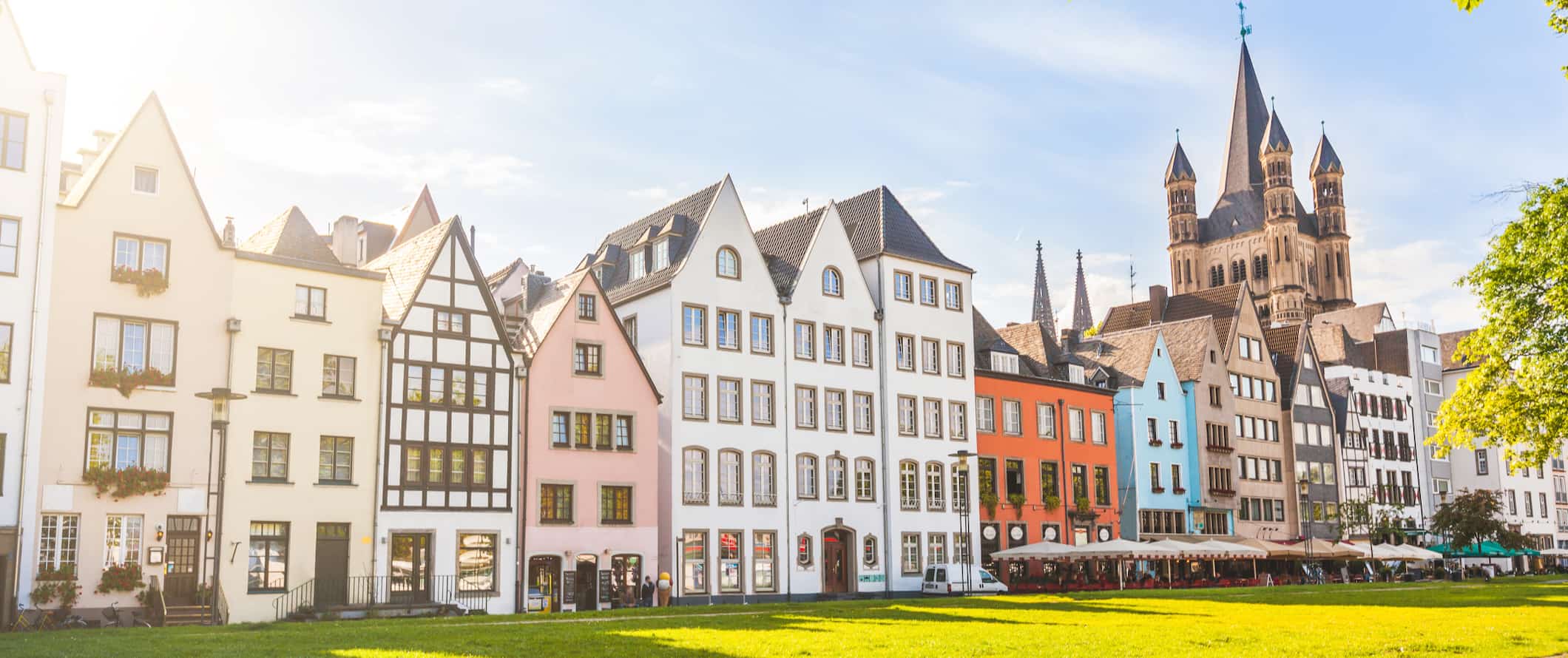
Accommodation – Accommodation in Germany is quite affordable compared to other Eurozone countries. Hostels are plentiful and range from 17-25 EUR per night for a dorm room with 6-8 beds. For a private room, expect to pay 40-60 EUR per night. Free Wi-Fi is standard and many hostels also include free breakfast.
Budget hotel prices begin around 45-65 EUR for a small double room with a private bathroom and free Wi-Fi.
Airbnb is available everywhere with private rooms going for as little as 30-45 EUR per night and entire apartments or homes starting at 50-75 EUR. Book early though or prices will double (or triple).
While wild camping is illegal, there are a ton of campsites around the country. Expect to pay 5-20 EUR per night for a basic plot for two people without electricity.
Food – Food in Germany is very cheap (and hearty). Meat is a staple of most meals, especially sausages; there are over 1,500 different kinds of sausages in Germany (sausages here are known as “wurst”). Stews are also a popular traditional choice, as are potato dumplings and sauerkraut. Breakfast is usually composed of bread, cold cuts, cheese, and boiled eggs.
You can get sausages and bratwurst from outdoor vendors for around 3-5 EUR. Meals at many of the beer halls around the country cost 9-15 EUR. Pre-made sandwiches cost around 5 EUR. Fast food (think McDonald’s) costs around 8.50 EUR for a combo meal.
If you eat in the beer halls, a traditional German meal costs around 14-18 EUR. Turkish, Middle Eastern, and Asian food can be found for as little as 5 EUR, while a nicer meal at a sit-down restaurant costs around 25 EUR.
Beer costs around 4 EUR while a latte/cappuccino is around 3 EUR. Bottled water is around 1 EUR.
If you plan on cooking for yourself, a week’s worth of groceries costs around 40-50 EUR. This gets you basic staples like rice, pasta, seasonal produce, and some meat. While they don’t always offer the most variety, the cheapest places are Aldi, Lidl, Penny, and Netto. Bring your own bag if possible.
Backpacking Germany Suggested Budgets
If you’re backpacking Germany, my suggested budget is 55 EUR per day. This is a suggested budget assuming you’re staying in a hostel dorm, cooking all your meals, limiting your drinking, using local transportation to get around, and doing mostly free activities like hiking and taking free walking tours. If you plan on drinking, add another 5-10 EUR to your daily budget.
On a mid-range budget of 135 EUR per day, you can stay in a private Airbnb room, eat a few meals out, take the occasional taxi to get around, enjoy a few drinks, take the bus between cities, and do more paid activities like visiting museums and castles.
On a “luxury” budget of 245 EUR or more per day, you can stay in a hotel, travel between cities via train, eat out at restaurants for all of your meals, drink more, take taxis to get around, and do whatever tours and activities you want. This is just the ground floor for luxury though. The sky is the limit!
You can use the chart below to get some idea of how much you need to budget daily, depending on your travel style. Keep in mind these are daily averages – some days you’ll spend more, some days you’ll spend less (you might spend less every day). We just want to give you a general idea of how to make your budget. Prices are in EUR.
Germany Travel Guide: Money-Saving Tips
Overall, Germany is not an expensive country to visit. Yes, river cruises are expensive. Yes, there’s plenty of high-end cuisine throughout the country. Visiting Frankfurt, the capital of finance, costs a pretty penny. But those are exceptions to the rule. Overall, Germany is quite affordable for a Eurozone country, with plenty of bargains throughout the country. Here are my best tips for saving money in Germany:
- Eat cheap – Throughout Germany, cheap outdoor sausage vendors offer quick eats for only a couple of euros. Additionally, some of the best and cheapest food in Germany is Turkish and Middle Eastern cuisine. You can get meals for 5-8 EUR that are delicious and filling. It’s what I mainly eat while in Germany whenever I want to eat out.
- Drink cheap – In Germany, buying beer and walking around — known as a ‘Weg bier’ — is totally acceptable. Take advantage of good weather by sitting outside in Germany’s lovely plazas and lush parks and buy your own drinks from the Späti shops, street kiosks, and supermarkets to save money. Also, find the student areas by the universities as you’ll find the discounted places.
- Take the free tours – The bigger cities in Germany have free walking tours. They’re a good way to see the city, learn about the history, and get your bearings without spending money. Just make sure to tip your guide at the end!
- Book your train early – Trains in Germany are expensive but you can get a saver ticket that is around 40-50% off the standard fare if you book at least a week in advance. These tickets have limited availability, so be flexible with your travel plans. Also, if you are more flexible with times, try Flixtrain instead, which has fewer routes between bigger cities sometimes at inconvenient times but is way cheaper than Deutsche Bahn.
- Take the bus instead of the train – While not as comfy or romantic, Flixbus or Postbus are two bus companies with super cheap prices. Download the app and you can get tickets last-minute but be aware that prices vary by time and availability so if you need to be somewhere by a certain time or day book in advance.
- Use rideshares – If you’re flexible in your schedule, use the ridesharing service BlaBlaCar and catch rides with locals between cities (or countries). You save money and get to spend time with locals. Drivers are verified and it’s perfectly safe (though sometimes rides don’t show up, which is why you need to be flexible). While the bus might be cheaper, this is usually faster (and more interesting). Just make sure to check where the pickup and drop-offs are as sometimes they are not exactly central places or main station.
- Stay with a local – While accommodation in Germany is pretty cheap, if you want to get some local insight into the country, you should Couchsurf. Not only will you save money on accommodation but you’ll meet locals who can help get you off the tourist trail and show you around! Plus, they have occasional meet-ups depending on the city so you can meet other travelers and locals
- Bring a water bottle – The tap water here is safe to drink so bring a reusable water bottle to save money and reduce your plastic use. LifeStraw is my go-to brand as their bottles have built-in filters to ensure your water is always clean and safe.
- Look out for free museum days – Most museums in Germany offer free admission on certain days or evenings. Check their website or ask the local tourism office to find out about discounts.
- Get transportation day passes – If you’re going to be using public transportation a lot in a city, get a day pass. Paying for single rides adds up quickly.
- Get city tourism cards – Most of the major cities in Germany offer city tourism cards. These include free admission to major museums and attractions, discounts on restaurants, and usually unlimited public transportation. If you plan on seeing a lot, these cards can save you money.
Where to Stay in Germany
There are lots of fun and social hostels in Germany. Here are some of my suggested places to stay:
- St. Christopher’s (Berlin)
- Circus Hostel (Berlin)
- Wombats (Munich)
- Jaeger’s Hostel (Munich)
- Five Elements Hostel (Frankfurt)
- Meininger (Hamburg)
- Generator Hostel (Hamburg)
- Station Hostel for Backpackers (Cologne)
- Black Sheep Hostel (Cologne)
- Lollis Homestay (Dresden)
- Hostel Mondpalast (Dresden)
- a&o Nürnberg Hauptbahnhof (Nuremberg)
- Five Reasons Hostel (Nuremberg)
How to Get Around Germany
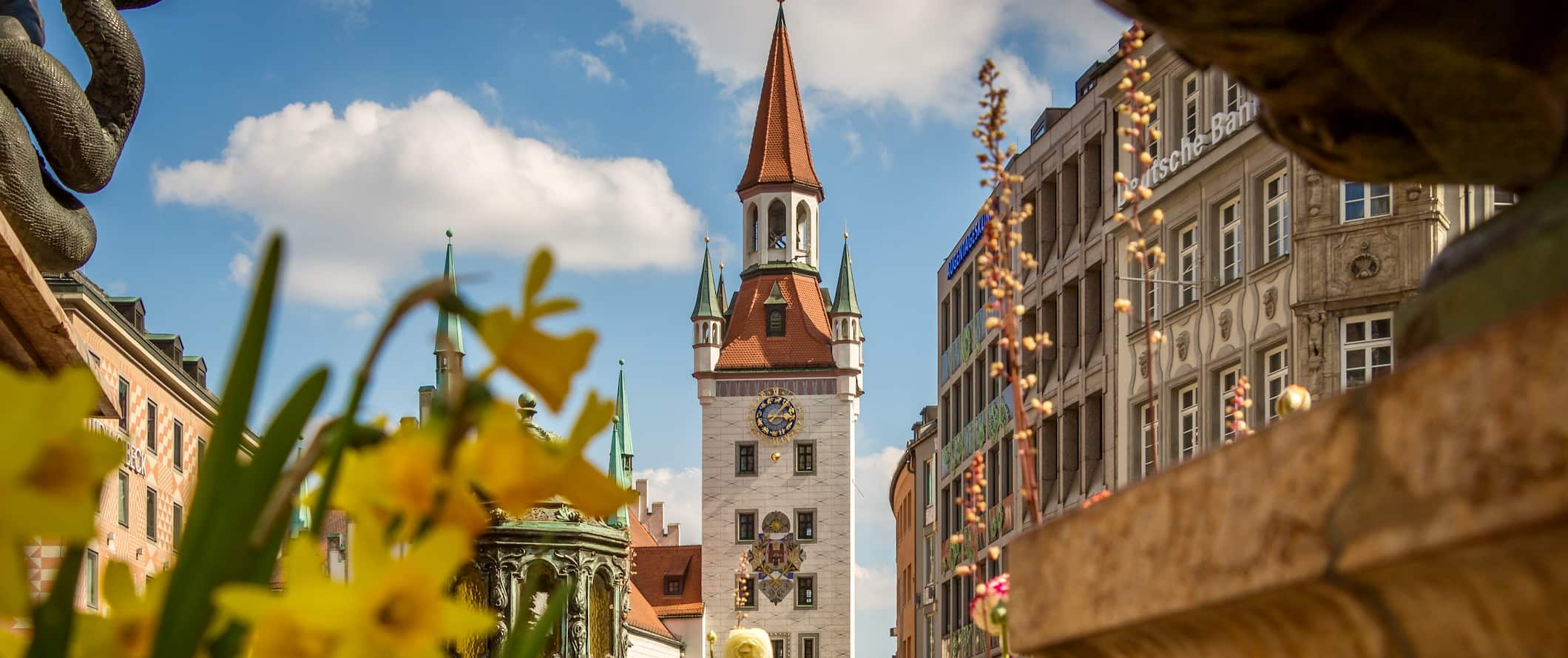
Public transportation – Germany has some of the best public transportation in the world. All the cities and larger towns have public transportation that is reliable and efficient. In cities like Berlin and Munich, all the various networks are integrated: one ticket gives you access to buses, trams, U-Bahn (subway), and S-Bahn (above ground train). Fares are determined by zone, but generally, a one-way fare starts from 2.90 EUR. A one-day unlimited pass is generally around 7-9 EUR while a three-day pass costs 17-20 EUR.
Train – Train travel is an incredibly efficient way to get around Germany, though it’s not cheap. Germany’s main rail system is Deutsche Bahn, which has both high-speed trains and regular trains. The high-speed trains are a quick way to get around but are usually much more expensive.
Take advantage of regional group tickets that start at around 22 EUR. These regional discounted tickets are available in Bavaria, Brandenburg-Berlin, Baden-Wüttermburg, Lower Saxony, North Rhine-Westfalia, Hesse, etc. For example, the Bavarian Bayern Ticket is 58 EUR for a group of 5 tickets for any train in Bavaria from 9am to 3am.
Last-minute tickets from Berlin to Hamburg can cost 50 EUR, but advance bookings start around 20 EUR. Frankfurt to Cologne is also around 20 EUR. It’s always best to book in advance when possible, otherwise, you’ll pay the price for last-minute bookings. You can track schedules and fares on the Deutsche Bahn website.
Another great site for trains around Germany (and into neighboring countries), is Trainline .
A Eurail Pass, which allows travelers to explore Europe by providing a set number of stops in a specific time period, might also be a good option if you’re doing some country hopping. Here’s a detailed breakdown of how Eurail passes work and can save you money .
Bus – Aside from hitchhiking, buses are the cheapest way to get around Germany. They are punctual but slow, with comfortable seats, air-conditioning, rest stops, and usually free Wi-Fi.
I recommend Flixbus for the cheapest rates and most comfortable buses. You can get from Berlin to Dresden for as little as 10 EUR, or from Berlin to Munich for 20 EUR. Munich to Hamburg is around 22 EUR.
To find bus routes and prices, use BusBud .
Ridesharing – Ridesharing in Germany is very common. Ridesharing means you travel as a passenger with someone in exchange for payment toward fuel costs. It’s usually not as cheap as the bus but it’s often faster and you’ll meet some interesting characters! BlaBlaCar and Mitfahren are the two most popular ride-sharing websites.
Car rental – German is a great country to explore by car. Car rentals start at 30 EUR per day for a multi-day rental. Renters need to be at least 21 years old.
For the best car rental prices, use Discover Cars .
When to Go to Germany
Germany is a year-round destination. Summer is the most popular time to visit as temperatures are hot and everyone’s outdoors enjoying the weather. People flock to beer gardens and to the lakes to swim. This is also the peak season, when prices are much higher than usual. During this time, average temperatures hover around 24°C (75°F) and can soar well into the 30s°C (high 80s°F). You’ll want to book accommodation and transportation early (especially in July and August).
Temperatures warm up fast in spring, and the season is marked by the arrival of cherry blossoms. By May it’s warm enough to walk around in t-shirts and shorts. May 1 (Der Erste Mai) is Germany’s Labor Day, and the country breaks out in full celebration. If you’re lucky enough to be here during this time, take to the streets with your fellow Germans and enjoy the live music, drinking, dancing, and general mayhem.
Thanks to the famous Oktoberfest, autumn is a very popular time to visit Germany (especially Munich). From the end of September to early October, millions of people flock here from all over the world to enjoy the most epic beer-drinking festival in the world. If you’re planning on attending Oktoberfest, book your accommodations in advance. Way, way in advance.
An autumn visit to Germany is overall a great idea, especially in Bavaria when the foliage in the hills and mountains makes for some amazing photography. Temperatures can sometimes be chilly, but with light layers, you’ll be fine.
Winter in Germany can be cold, with temperatures as low as -10°C (14°F), but Germany is known for its Christmas spirit and the holiday markets all over the country are well worth your time, especially in Munich, Berlin, and Dresden. Pack some warm clothes and let the delicious glühwein (mulled wine) warm you up.
Winter in Bavaria is a skier and snowboarder’s dream only around one hour outside of Munich. While people might not think of Germany first in terms of skiing in Europe, these slopes are pristine, truly breathtaking, and way cheaper than neighboring Switzerland. Check out Garmisch-Partenkirchen, Füssen, Kranzberg, Zugspitze, and Laber.
How to Stay Safe in Germany
Germany is an incredibly safe place to travel. However, due to a few high-profile terrorist attacks in the country, I often get asked if it’s safe to travel to Germany. I wrote a whole article about how Germany (and Europe) is safe to visit if that’s a concern of yours.
Generally, you just need to watch out for scams and petty crime as you would anywhere (especially in Berlin late at night). Keep an eye on your valuables when in large crowds and on public transportation. Violent crime is rare so as long as you keep your valuables secure you shouldn’t experience any issues.
Scams are rare but if you’re worried about getting ripped off you can read about common travel scams to avoid here .
Solo female travelers should feel safe in Germany, however, the standard precautions apply (never leave your drink unattended at the bar, never walk home alone at night intoxicated, etc.).
If you experience an emergency, dial 112 for assistance.
Always trust your gut instinct. Make copies of your personal documents, including your passport and ID. Forward your itinerary along to loved ones so they’ll know where you are.
The most important piece of advice I can offer is to purchase good travel insurance. Travel insurance will protect you against illness, injury, theft, and cancellations. It’s comprehensive protection in case anything goes wrong. I never go on a trip without it as I’ve had to use it many times in the past. You can use the widget below to find the policy right for you:
Germany Travel Guide: The Best Booking Resources
These are my favorite companies to use when I travel. They consistently have the best deals, offer world-class customer service and great value, and overall, are better than their competitors. They are the companies I use the most and are always the starting point in my search for travel deals.
- Skyscanner – Skyscanner is my favorite flight search engine. They search small websites and budget airlines that larger search sites tend to miss. They are hands down the number one place to start.
- Hostelworld – This is the best hostel accommodation site out there with the largest inventory, best search interface, and widest availability.
- Booking.com – The best all around booking site that constantly provides the cheapest and lowest rates. They have the widest selection of budget accommodation. In all my tests, they’ve always had the cheapest rates out of all the booking websites.
- HostelPass – This new card gives you up to 20% off hostels throughout Europe. It’s a great way to save money. They’re constantly adding new hostels too. I’ve always wanted something like this and glad it finallt exists.
- Get Your Guide – Get Your Guide is a huge online marketplace for tours and excursions. They have tons of tour options available in cities all around the world, including everything from cooking classes, walking tours, street art lessons, and more!
- The Man in Seat 61 – This website is the ultimate guide to train travel anywhere in the world. They have the most comprehensive information on routes, times, prices, and train conditions. If you are planning a long train journey or some epic train trip, consult this site.
- Rome2Rio – This website allows you to see how to get from point A to point B the best and cheapest way possible. It will give you all the bus, train, plane, or boat routes that can get you there as well as how much they cost.
- FlixBus – Flixbus has routes between 20 European countries with prices starting as low 5 EUR! Their buses include WiFi, electrical outlets, a free checked bag.
- SafetyWing – Safety Wing offers convenient and affordable plans tailored to digital nomads and long-term travelers. They have cheap monthly plans, great customer service, and an easy-to-use claims process that makes it perfect for those on the road.
- LifeStraw – My go-to company for reusable water bottles with built-in filters so you can ensure your drinking water is always clean and safe.
- Unbound Merino – They make lightweight, durable, easy-to-clean travel clothing.
- Top Travel Credit Cards – Points are the best way to cut down travel expenses. Here’s my favorite point earning credit cards so you can get free travel!
- BlaBlaCar – BlaBlaCar is a ridesharing website that lets you share rides with vetted local drivers by pitching in for gas. You simply request a seat, they approve, and off you go! It’s a cheaper and more interesting way to travel than by bus or train!
Germany Travel Guide: Related Articles
Want more info? Check out all the articles I’ve written on backpacking/traveling Germany and continue planning your trip:
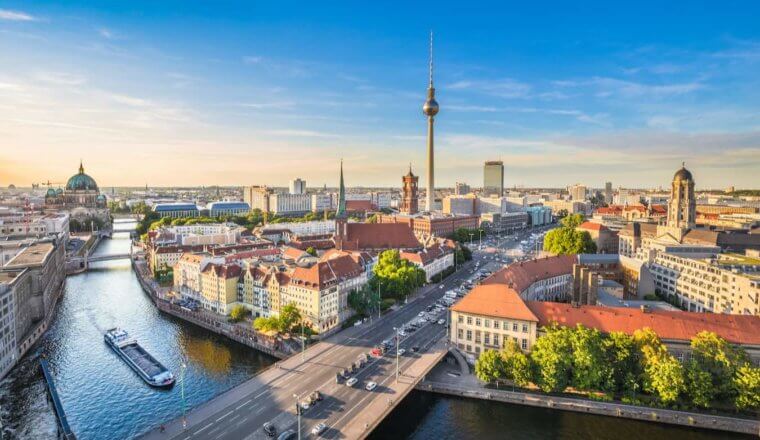
Where to Stay in Berlin: The Best Neighborhoods for Your Visit
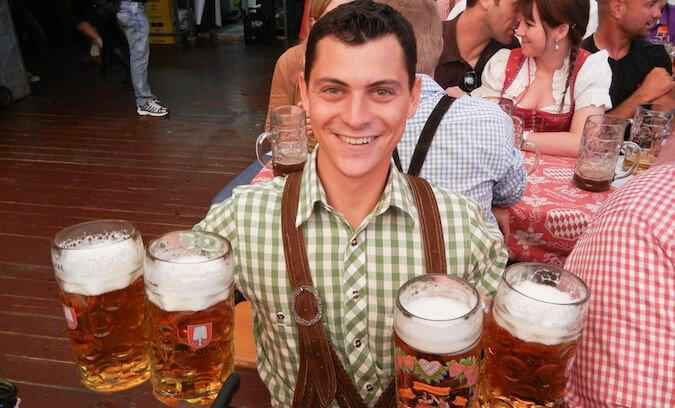
How to Survive Oktoberfest
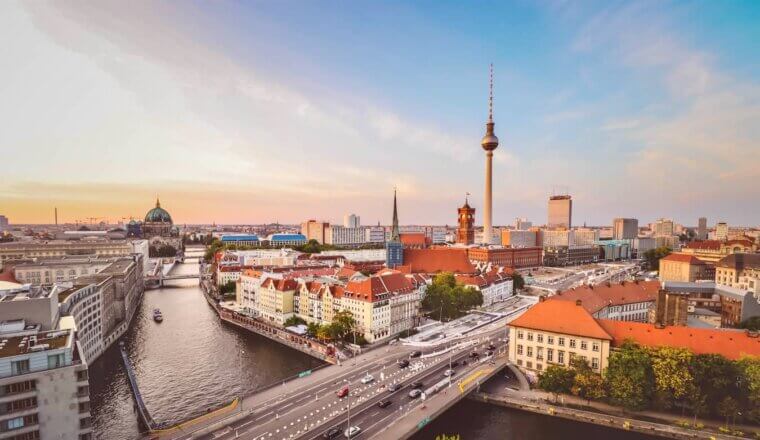
The 18 Best Things To Do in Berlin
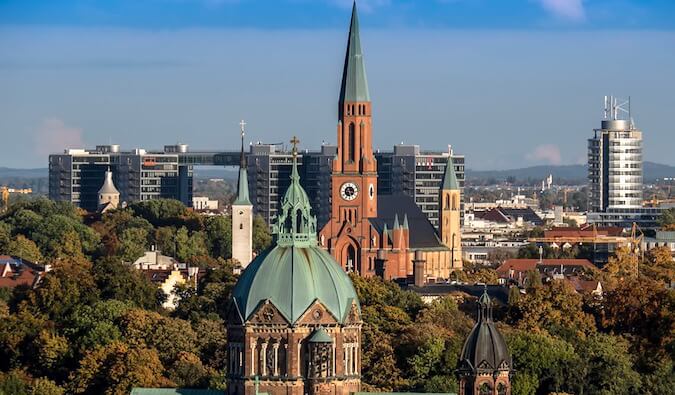
Munich is Better than Berlin
Get my best stuff sent straight to you, pin it on pinterest.
- Where To Stay
- Transportation
- Booking Resources
- Related Blogs
Germany Travel Guide: A Comprehensive Travel Guide to Europe’s Heartland
Welcome to your ultimate Germany Travel Guide! If you’re yearning to explore a nation where history and modernity coalesce, Germany is your go-to destination. This guide aims to be your compass, pointing you to Germany’s must-see sights, hidden gems, and unique experiences. From culinary delights to architectural wonders, we’ve got you covered.
In this comprehensive guide, we’ll take you on a virtual journey through Germany’s iconic landmarks, hidden gems, and unique experiences. Whether you’re a history buff, a foodie, or someone looking for off-the-beaten-path adventures, there’s something in Germany for you. We’ll also provide practical tips on accommodations, budgeting, and safety to ensure you have a smooth and memorable trip.
So, pack your bags (virtually, for now) and get ready to explore Europe’s heartland like never before!
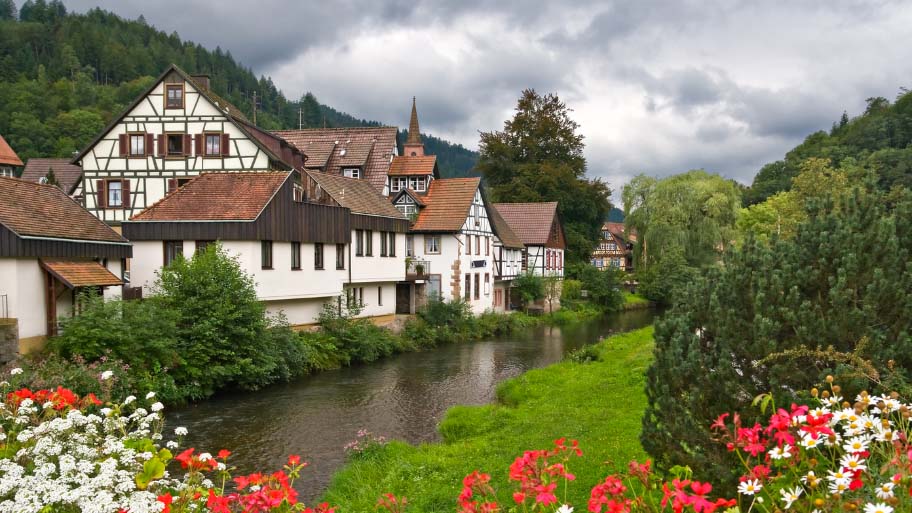
Dive into Deutschland: Why Vacation in Germany
Germany is a land of contrasts, where history and modernity coexist in a fascinating tapestry. From the ancient Roman ruins in Trier to the cutting-edge technology showcased in Berlin’s startup scene, Germany offers a rich blend of the past and the present . This duality makes it a unique destination, appealing to history buffs and tech enthusiasts alike.
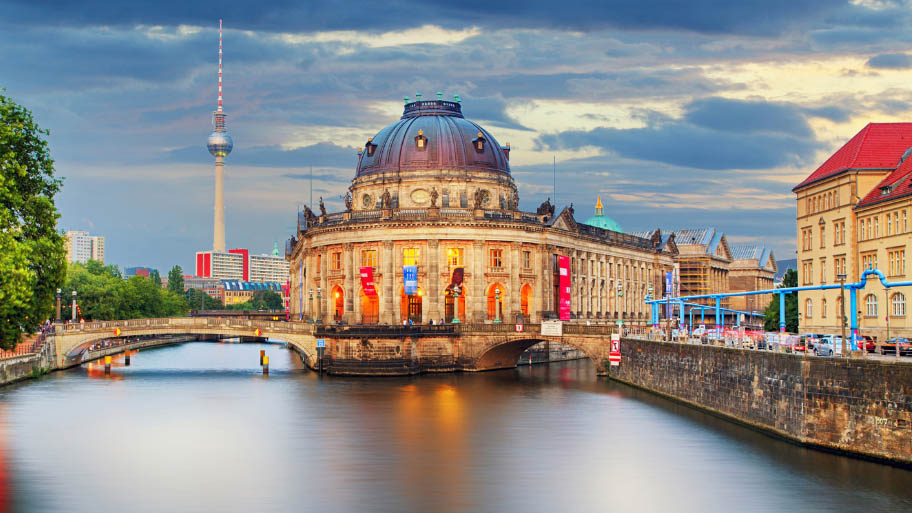
Germany’s Rich Tapestry of Past and Present
The country’s history is a compelling narrative that stretches back millennia. Germany has been the birthplace of great philosophers like Immanuel Kant, groundbreaking scientists like Albert Einstein, and iconic composers like Ludwig van Beethoven. This rich heritage is evident in its museums, art galleries, and historical sites, making it a haven for those who appreciate culture and history.
But Germany is not just about the past. The country is a leader in innovation , boasting some of the world’s most renowned companies like BMW, Siemens, and SAP. Whether you’re interested in automotive engineering or renewable energy, Germany’s modern industries offer a glimpse into the future.
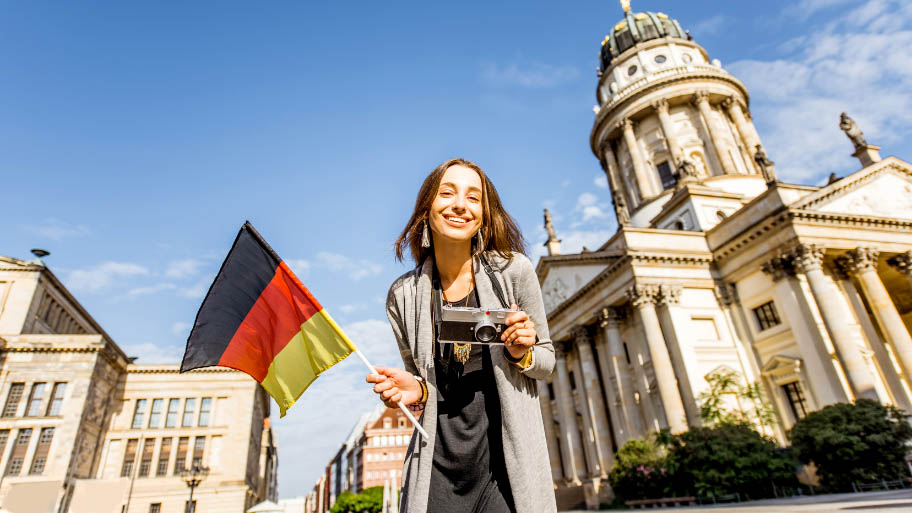
The Influence of Germany in the Modern World
Germany’s role on the world stage is far-reaching and influential. As Europe’s economic powerhouse and one of the top global economies, it holds a significant sway in matters of international governance and finance. The nation’s contributions to the fields of arts, science, and technology further solidify its standing as a multifaceted leader.
Moreover, Germany is at the forefront of eco-friendly initiatives . Through programs like Energiewende , the country is setting benchmarks in the use of renewable energy sources and efforts to combat climate change. This dedication to green practices makes Germany an appealing destination for travelers who prioritize sustainability.
Must-See Attractions: From Urban Jungles to Fairy Tale Castles
Germany is a treasure trove of iconic landmarks that capture the essence of its rich history and vibrant culture. From the bustling streets of Berlin to the tranquil landscapes of Bavaria, each region offers its own set of must-see attractions.
Iconic Landmarks of Germany
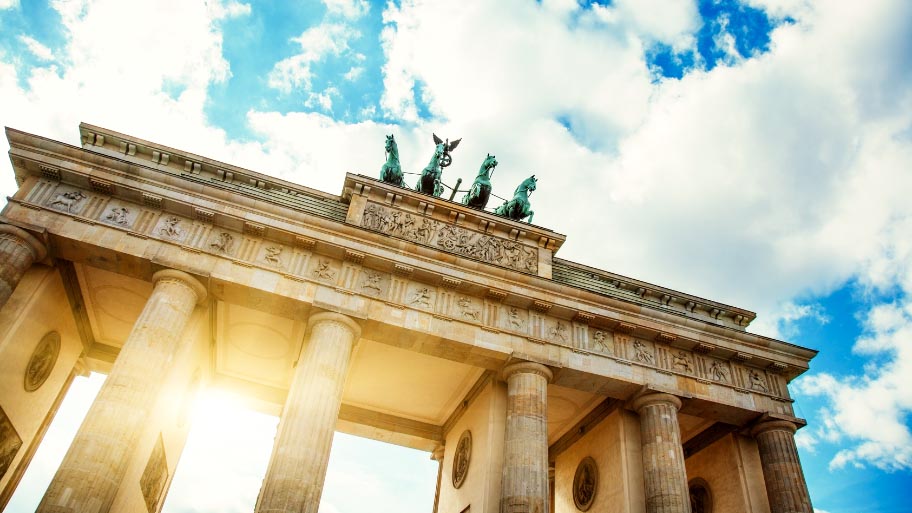
Brandenburg Gate, Berlin: A Neoclassical Symbol of Unity and Peace
The Brandenburg Gate is more than just an architectural marvel; it’s a symbol of Germany’s tumultuous history and its unification. Built in the 18th century, this neoclassical gate has witnessed everything from the rise and fall of empires to the tearing down of the Berlin Wall. Today, it stands as a beacon of peace and unity, drawing millions of visitors each year. The Gate is often the focal point for public gatherings and celebrations, especially New Year’s Eve, making it a living, breathing emblem of Berlin’s spirit.
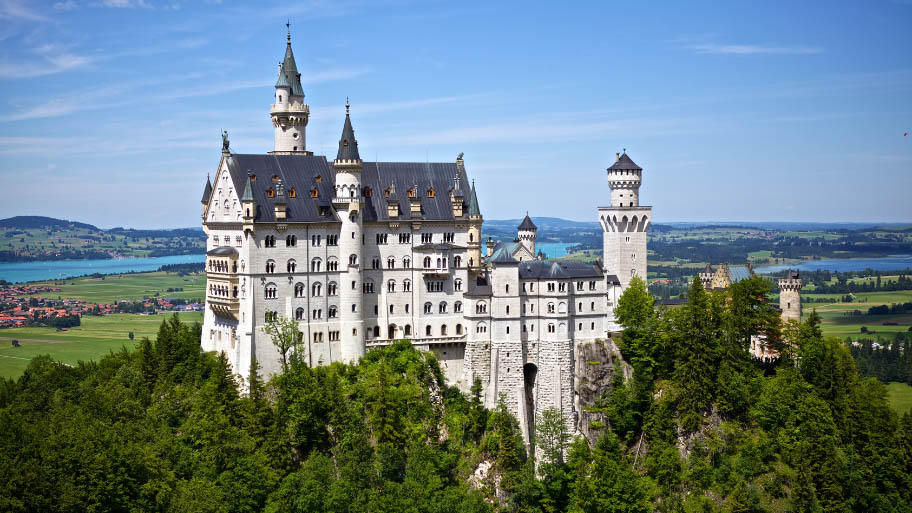
Neuschwanstein Castle, Bavaria: The Enchanting Fairy-Tale Castle that Inspired Disney
Nestled in the Bavarian Alps, Neuschwanstein Castle looks like it’s been lifted straight out of a fairy tale. Commissioned by King Ludwig II, this 19th-century palace served as the inspiration for Disney’s Cinderella Castle. With its turrets, frescoes, and stunning alpine backdrop, Neuschwanstein is a dream come true for romantics and history enthusiasts alike. The castle’s interior is equally captivating, featuring intricate wood carvings and magnificent murals that depict scenes from Richard Wagner’s operas.
Hidden Treasures: Exploring the Lesser-Known
Germany is not just about its famous landmarks; it also has a wealth of lesser-known spots that offer unique experiences.
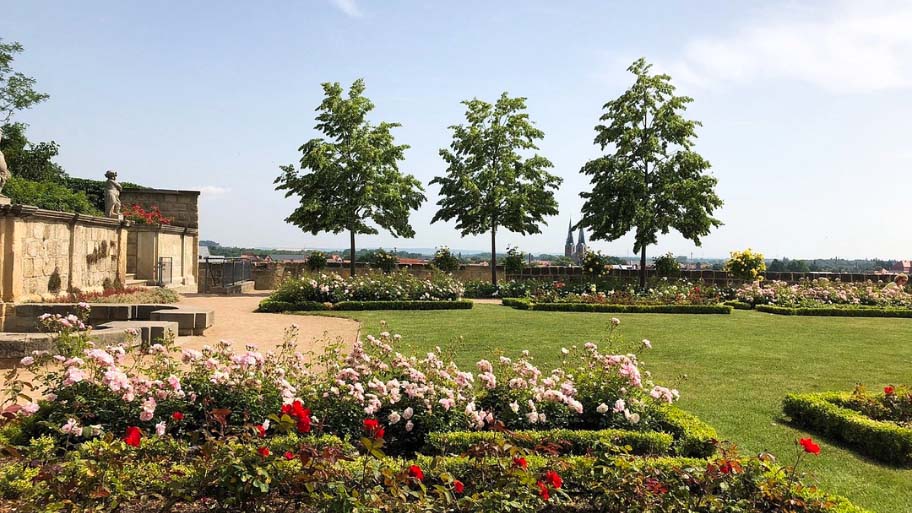
Quedlinburg, in the state of Saxony-Anhalt: A Time Capsule of Medieval Architecture
Step back in time as you wander through Quedlinburg, a UNESCO World Heritage town renowned for its well-preserved, timber-framed buildings, some of which have been standing since the 16th century. This charming town offers a different perspective on Germany, one that’s far removed from the usual tourist trails. Interestingly, Quedlinburg has a long history of being governed by women, spanning over eight centuries, making it a fascinating stop for those interested in both history and gender studies.
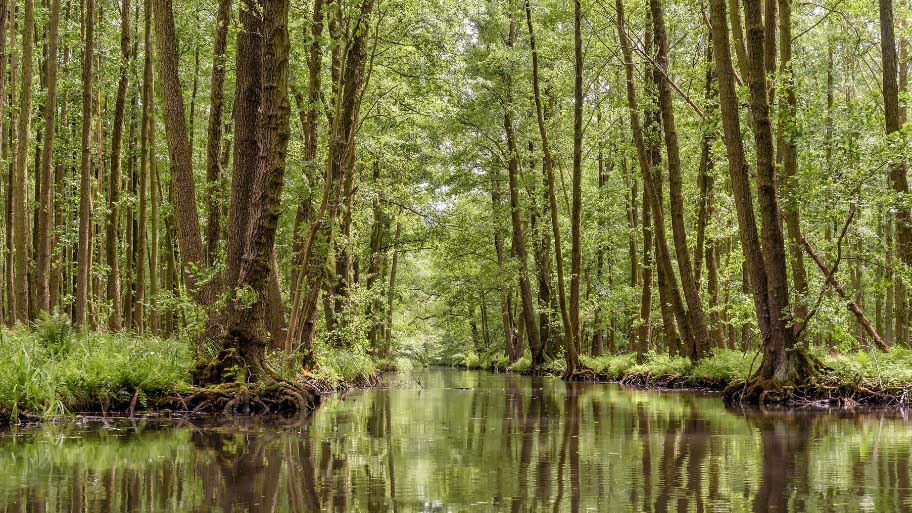
Spreewald, Brandenburg: A Serene Biosphere Reserve with Meandering Waterways and Traditional Villages
Spreewald offers a tranquil escape from the hustle and bustle of city life. This biosphere reserve is a labyrinth of waterways, forests, and traditional villages. Visitors can explore the area by paddleboat or canoe, and even sample the region’s famous pickles, made from cucumbers grown in the Spreewald’s fertile soil. The reserve is also home to a unique Slavic minority, the Sorbs , who maintain their own language and traditions, adding a unique cultural layer to your visit.
Germany offers an array of must-see attractions that cater to all kinds of travelers. Whether you’re a history buff, a nature lover, or someone looking for off-the-beaten-path experiences, Germany has something for you. And the best way to explore these iconic landmarks and hidden gems is with a travel partner who knows Germany inside and out. That’s where Allied Travel comes in. With years of experience and a deep understanding of what Germany has to offer, Allied Travel can customize your trip to include these must-see attractions and much more. Don’t just visit Germany—experience it to the fullest with Allied Travel.
READY TO BOOK THE PERFECT TRIP?
We never charge you a fee just to meet with us!
Unique German Experiences: Beyond Beer and Bratwurst
Germany is a land of contrasts, where centuries-old traditions coexist with modern innovation. But what truly sets it apart are the unique experiences that go beyond the stereotypical beer and bratwurst. In this section, we’ll delve into the cultural festivals and culinary delights that make Germany a one-of-a-kind destination.
Cultural Festivals and Traditions
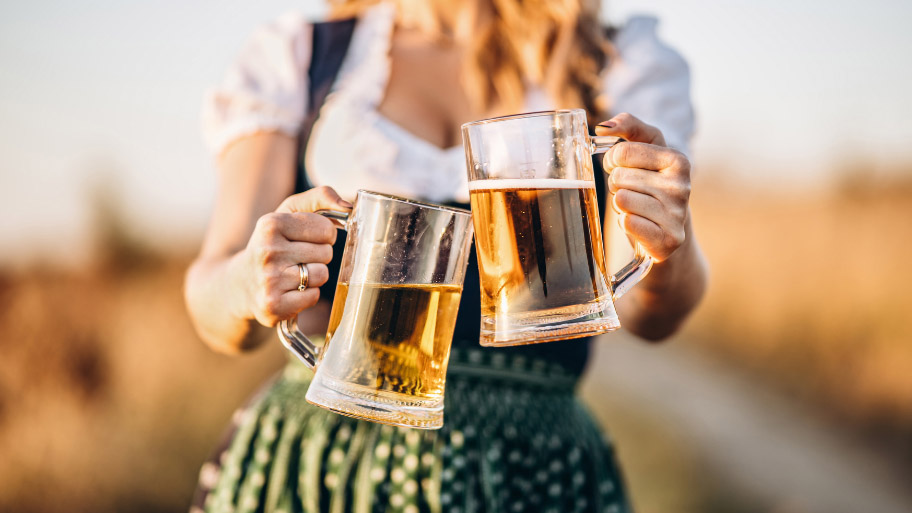
Oktoberfest, Carnival, and Christmas Markets
Germany is a country that loves to celebrate, and its festivals are the epitome of cultural immersion. Oktoberfest is perhaps the most famous, drawing millions to Munich for a 16-day extravaganza of beer, bratwurst, and Bavarian music. But it’s not just about the beer; it’s a celebration of Bavarian culture and a testament to German craftsmanship, from the meticulously crafted beer steins to the intricate designs of the festival tents.
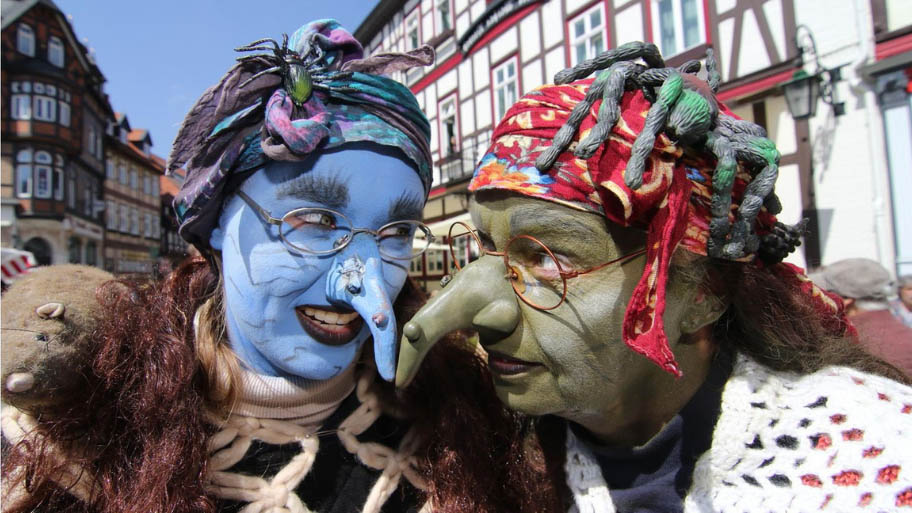
Lesser-Known Festivals Worth Experiencing
Beyond the well-known festivals, Germany offers a plethora of lesser-known but equally enriching experiences. Take the “Walpurgisnacht,” a traditional spring festival that celebrates the end of winter with bonfires and dances. Or the “Weinlesefest,” a wine harvest festival where you can partake in grape picking and wine tasting, offering a unique insight into Germany’s renowned wine culture.
Local Cuisine
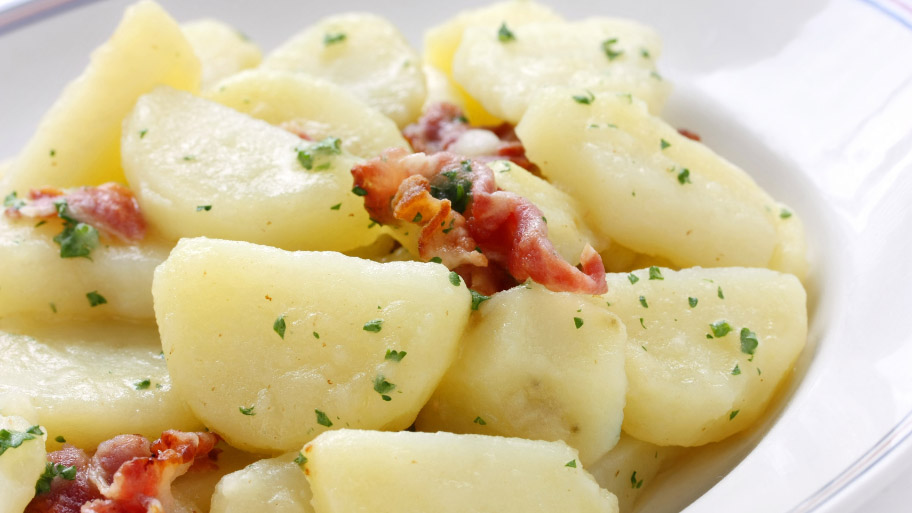
Must-Try Foods and Drinks in Germany
Germany’s culinary landscape extends well beyond its iconic bratwurst and brews. Be sure to sample “Kartoffelsalat,” a distinct take on potato salad, and “Sauerbraten,” a pot roast that holds a special place in German cuisine. For those with a sweet tooth, the “Black Forest Cake,” featuring layers of chocolate, whipped cream, and cherries, is an absolute delight. On the beverage front, Germany offers more than just its renowned beers. Don’t miss “Eiskaffee,” a delicious fusion of coffee and ice cream, and “Apfelschorle,” a fizzy apple juice concoction that’s incredibly refreshing.
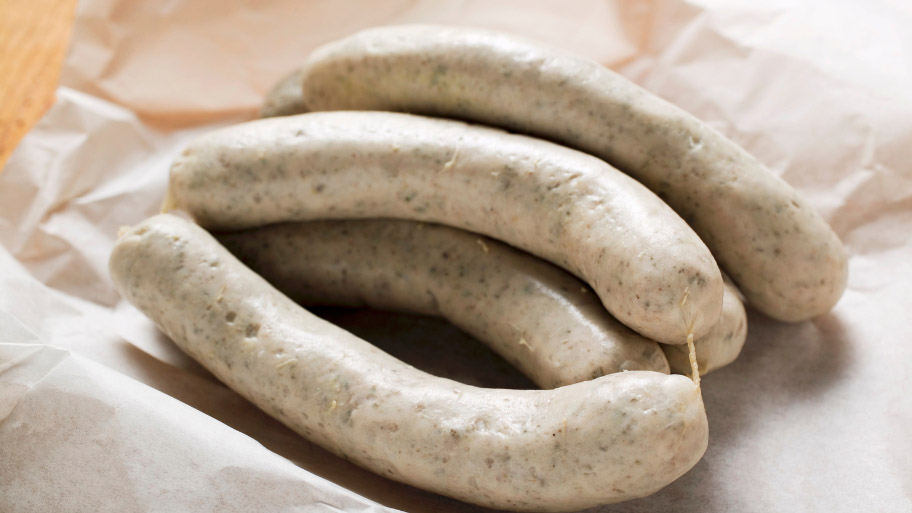
Regional Specialties and Where to Find Them
Each region in Germany has its own culinary specialties. In Bavaria, you’ll find “Weisswurst,” a traditional white sausage usually eaten as a snack. In the northern regions, “Fischbrötchen,” or fish sandwiches, are a popular local treat. And if you find yourself in the Rhineland, don’t miss the “Reibekuchen,” a type of potato pancake often served with apple sauce. These regional dishes offer a deeper understanding of Germany’s diverse culinary landscape and are often best enjoyed in local eateries, away from the tourist crowds.
So, if you’re looking to experience Germany beyond the beer halls and sausage stands, you’re in for a treat. From the vibrant festivals that celebrate the seasons to the regional dishes that tantalize your taste buds, Germany offers a rich tapestry of experiences that are as diverse as they are unforgettable. Don’t just visit Germany; immerse yourself in it.
Best Places to Stay: Top Accommodations for Every Budget
Whether you’re a luxury traveler or a budget-conscious explorer, Germany has a wide range of accommodations to suit every need and preference. From opulent hotels in bustling cities to cozy bed and breakfasts in quaint towns, here’s your guide to the best places to stay in Germany.
Luxury Hotels and Cozy B&Bs
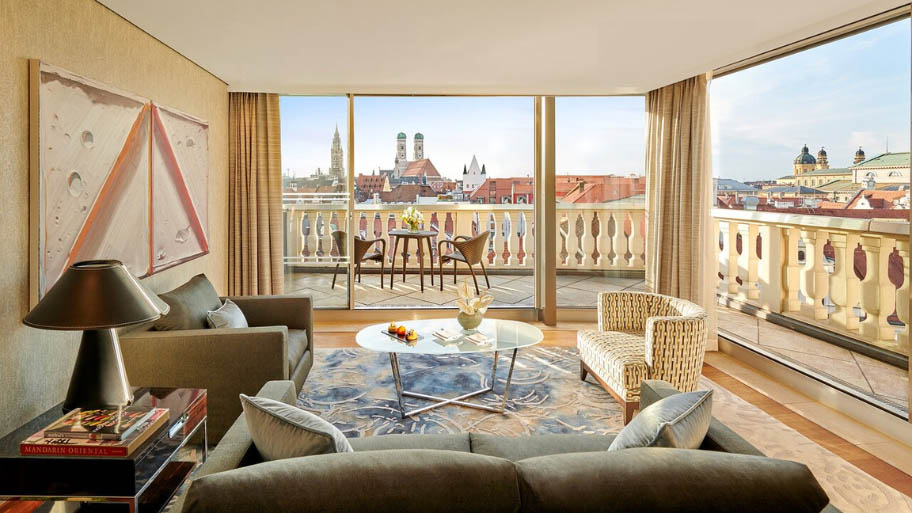
Recommendations for Comfort and Convenience
For those who prefer the finer things in life, Germany’s luxury hotels offer unparalleled comfort and convenience. Cities like Berlin, Munich, and Frankfurt are home to world-renowned hotels like the Adlon Kempinski, the Mandarin Oriental , and the Ritz-Carlton . These establishments offer top-notch amenities, including spa services, gourmet dining, and concierge services that will make your stay truly memorable.
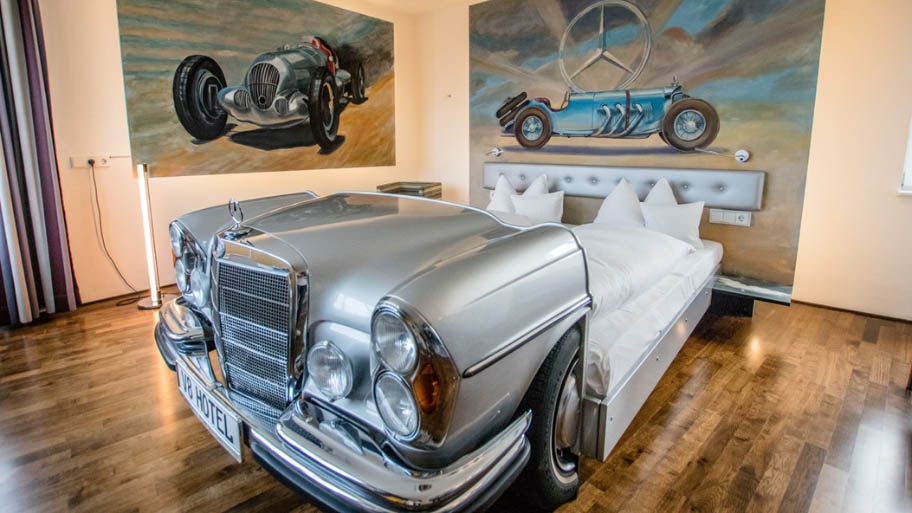
Unique Luxury Stays in Germany
If you’re looking for something a little different, Germany also offers unique luxury stays. Consider booking a room at the V8 Hotel in Stuttgart , where each room is car-themed, or the Propeller Island City Lodge in Berlin , an art-inspired hotel where each room offers a different experience. These unique accommodations provide not just comfort but also a story to tell.
Budget Stays: Cheapest Cities in Germany to Visit
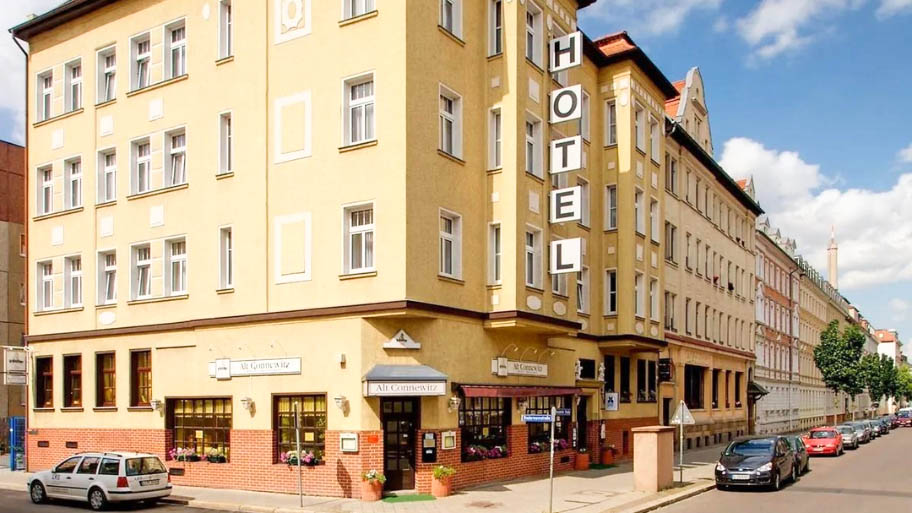
Stretching Your Euro Further
Traveling on a budget? No worries! Cities like Leipzig , Dortmund , and Nuremberg offer affordable accommodations without compromising on quality. Hostels and budget hotels in these cities often provide free Wi-Fi, breakfast, and even walking tours, allowing you to stretch your Euro further.
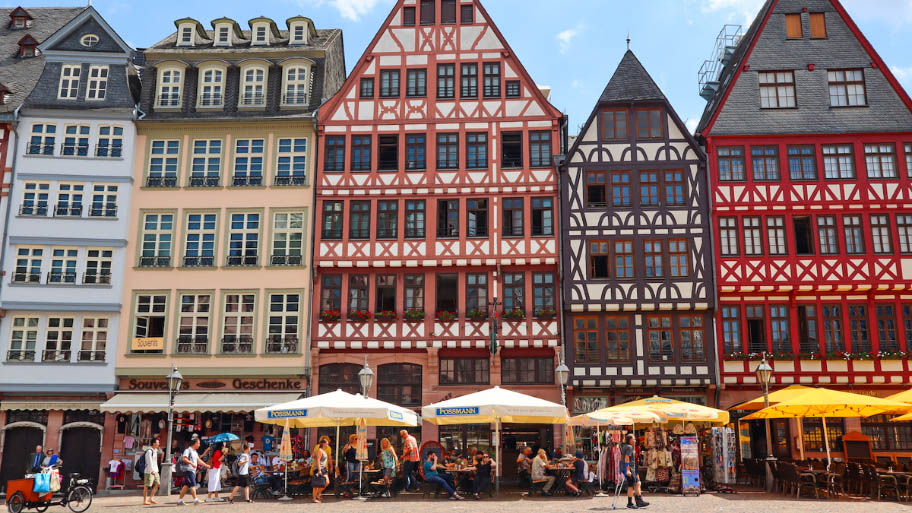
Best Hostels and Budget Hotels
For the budget-conscious traveler, Germany has a plethora of hostels and budget hotels that offer great value for money. The St. Christopher’s Inn Hostel in Berlin , for example, is known for its vibrant atmosphere and central location. Similarly, the Five Elements Hostel in Frankfurt offers a social experience with its communal kitchen and regular events.
Whether you’re splurging on a luxury getaway or pinching pennies on a backpacking trip, Germany’s diverse range of accommodations ensures that you’ll find the perfect place to rest your head. Ready to book your dream accommodation in Germany? Contact Allied Travel to find the best deals and personalized travel packages tailored just for you.
Budgeting Your Germany Trip: Navigating Costs Efficiently
Embarking on a German adventure is thrilling, but figuring out the financial aspects can be a bit overwhelming. Whether you’re an experienced globetrotter or setting foot in Germany for the first time, having a clear grasp of the expenses can enhance your travel experience. This guide aims to provide you with a thorough understanding of how to manage your budget effectively.
Average Costs for Food, Travel, and Accommodations
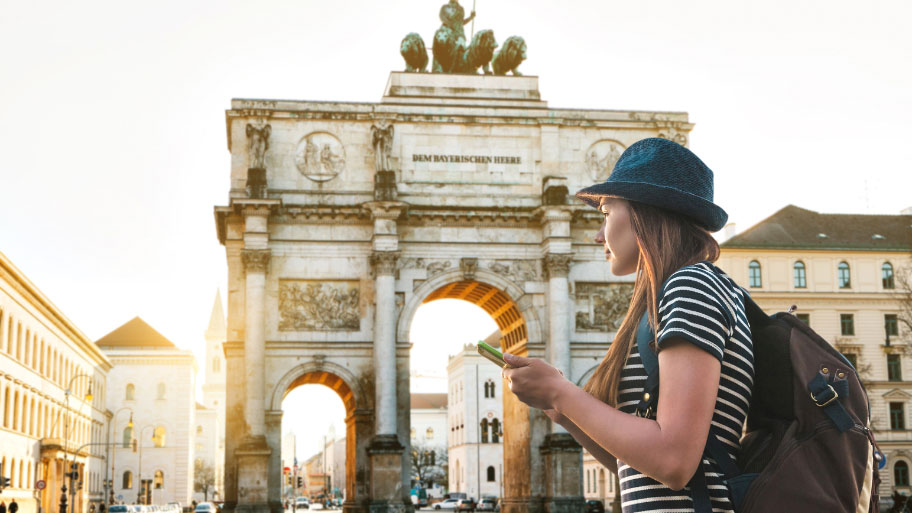
Tips for Economical Traveling to Germany for the First Time
If Germany is on your travel radar for the first time, having a general idea of potential expenses is crucial. Typically, daily expenditures can range from €50 to €100, encompassing meals, transportation, and lodging. This estimate can fluctuate based on your travel preferences. For those on a tight budget, daily costs could be as low as €30 if you choose economical options like hostels and affordable dining. On the other hand, if you’re inclined toward a more luxurious experience, you might find yourself spending more than €200 per day.
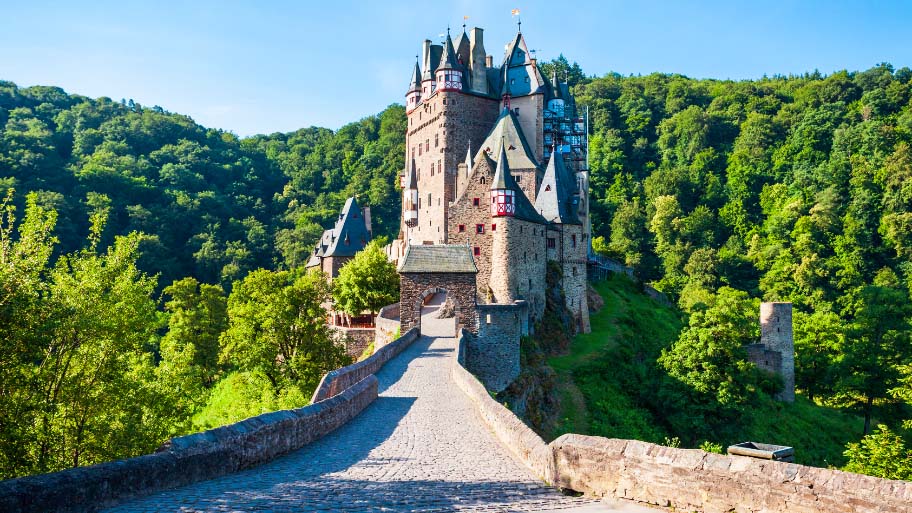
Cost Comparison: Germany vs Other European Destinations
In terms of affordability, Germany often outperforms other European nations such as France or the United Kingdom. For example, dining at a moderately priced restaurant in Germany is likely to set you back about €20, while a similar experience in Paris could cost you €30. Additionally, accommodation expenses are usually more economical in Germany, making it a compelling choice for travelers mindful of their budget.
Germany Travel Tips: Saving Money and Time
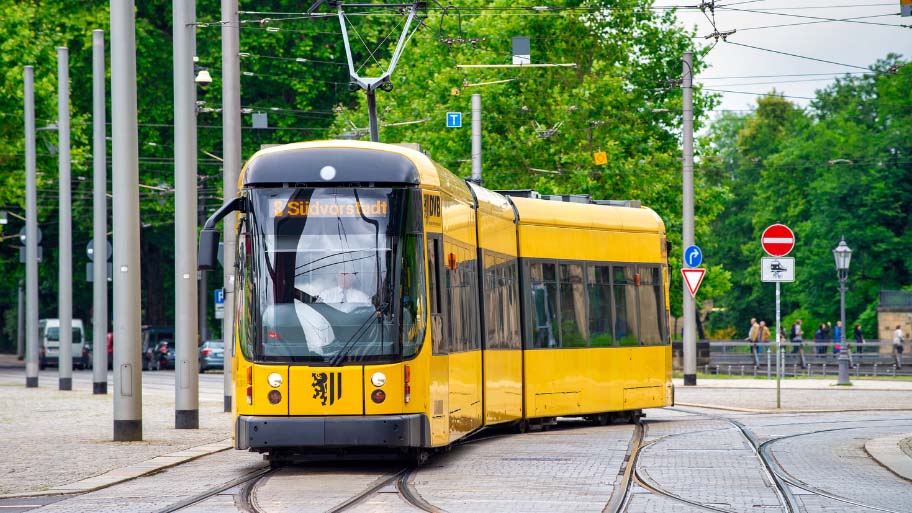
Utilizing Public Transportation and Local Insider Info
To make the most of your budget in Germany, taking advantage of the public transit system is key. Germany boasts a cost-effective and well-organized network of buses, trams, and trains. Investing in a day ticket or a city-specific travel card can offer you unlimited rides and substantial savings. Additionally, tapping into local wisdom can be invaluable; residents usually have the inside scoop on the most affordable dining, shopping, and sightseeing options.

Money-Saving Apps and Resources
In today’s digital age, there are numerous apps and resources designed to help you save money. Apps like “DB Navigator” for public transportation and “Too Good To Go” for discounted food can be lifesavers. Websites like Skyscanner and Booking.com can also help you find the best deals on flights and accommodations.
Budgeting for your German getaway needn’t be stressful. With some foresight and the proper tools at your disposal, you can relish Germany’s wonders without straining your wallet. Allied Travel takes pride in equipping our clients with savvy budgeting insights, guaranteeing a travel experience that’s both unforgettable and economical. So why delay? Allow Allied Travel to steer you through your inaugural or subsequent journey to Germany!
Safety Tips for Traveling in Germany
Traveling to Germany is generally safe, but like any other destination, it’s essential to be prepared and informed. Whether you’re a solo traveler or visiting with family, knowing the basics of safety can make your trip more enjoyable and secure. Here’s what you need to know:
Important Emergency Numbers and Safety Precautions
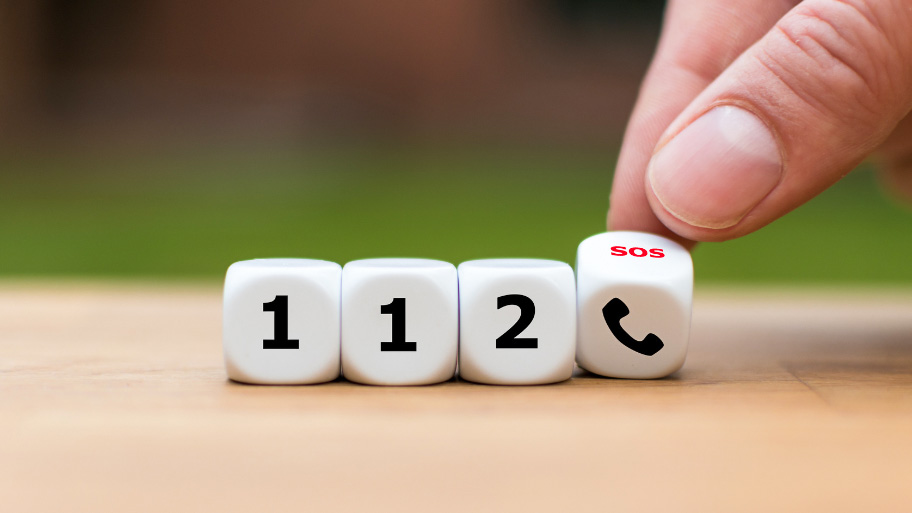
General Safety Tips
In Germany, the emergency number for police is 110 , and for medical emergencies, it’s 112 . It’s advisable to have these numbers saved in your phone. Always keep a copy of your identification and travel documents in a separate location from the originals. When using public transport or visiting crowded places, be aware of your surroundings to avoid pickpocketing.
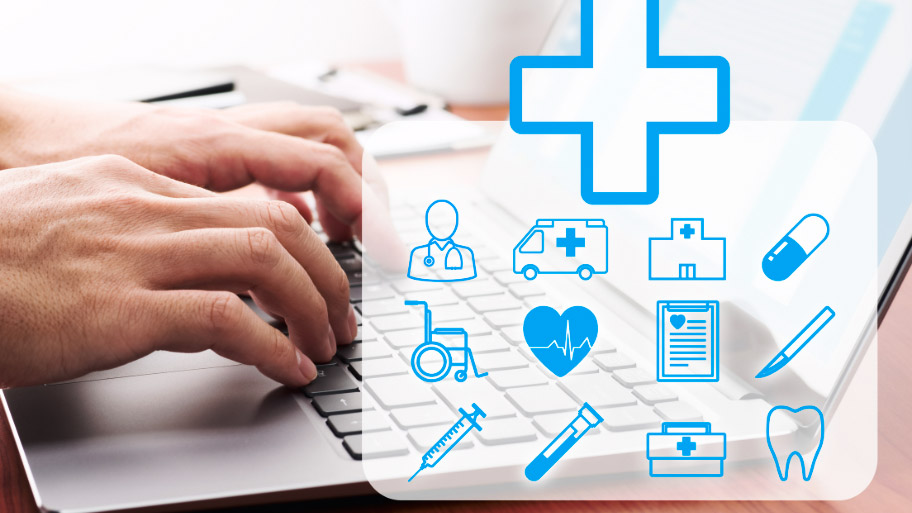
Health and Travel Insurance Recommendations
Before traveling, it’s crucial to have comprehensive travel insurance that covers medical emergencies, including COVID-19 related issues. Check if your policy includes repatriation in case of severe illness or injury. If you’re an EU citizen, the European Health Insurance Card (EHIC) will cover you for most medical services, but it’s still advisable to have additional coverage.
Safety Measures for Solo and Female Travelers
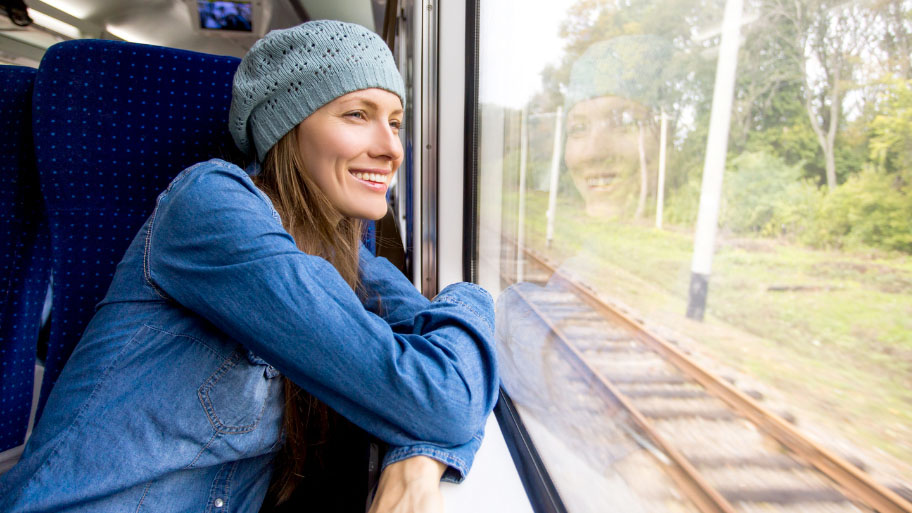
Personal Safety Essentials
Germany is widely regarded as a secure location for both solo and female voyagers. That said, vigilance is key. Steer clear of dimly lit or isolated spots when walking unaccompanied after dark. Make it a point to share your daily plans with someone you trust, and carry a backup power source for your mobile phone.
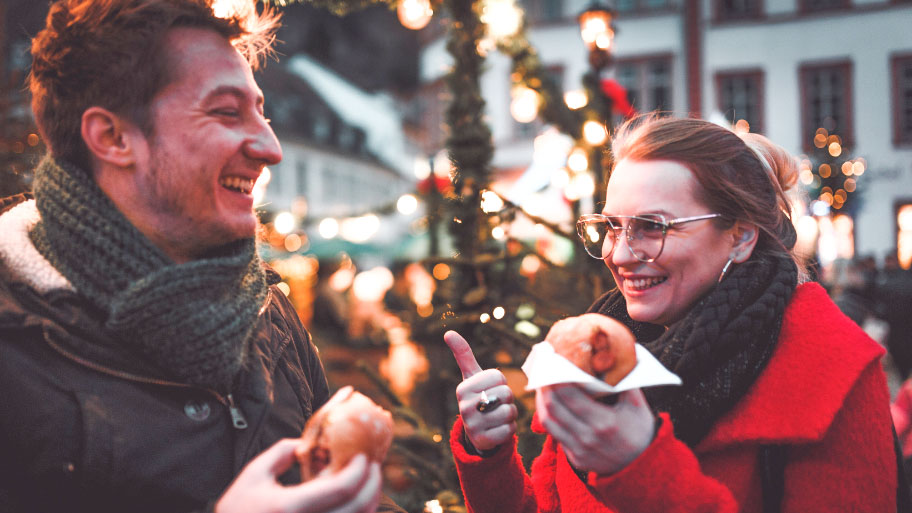
Cultural Norms and Respect
Understanding the cultural norms can also contribute to a safer experience. For example, jaywalking is frowned upon, and you could be fined. Also, it’s considered rude to snap your fingers to get someone’s attention; instead, a simple “Excuse me” will suffice.
Safety in Different Regions
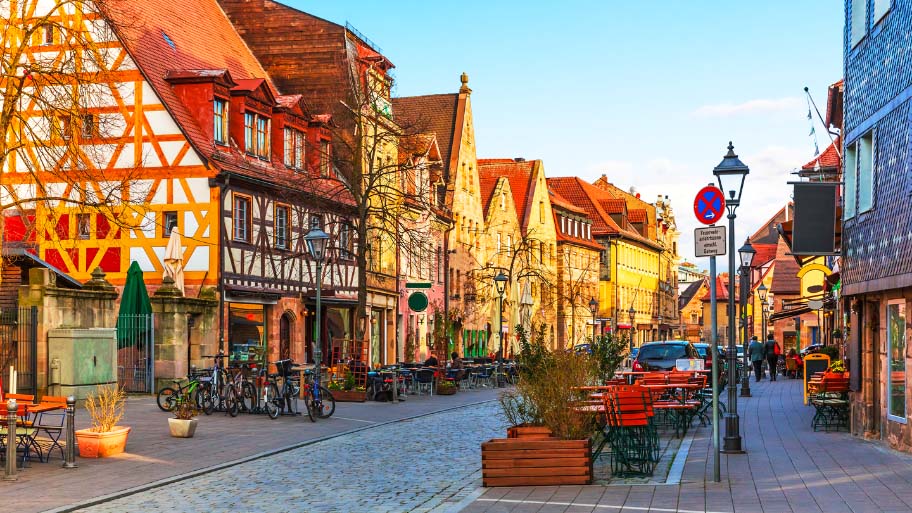
Urban vs Rural Safety
Cities like Berlin and Munich are generally safe, but petty crimes like pickpocketing can occur, especially in touristy areas. Rural areas are typically safer, but it’s always good to be cautious. If you’re hiking or participating in outdoor activities, make sure you have the right gear and are aware of the weather conditions.
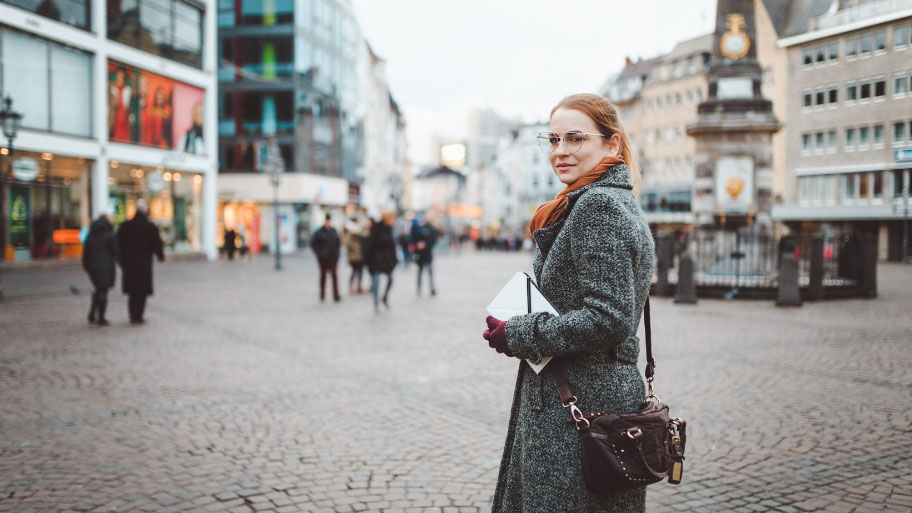
Seasonal Safety Tips
During winter, be prepared for icy conditions, especially if you’re driving. In summer, heatwaves can occur, so stay hydrated and take necessary precautions against sunburn.
Allied Travel’s Commitment to Your Safety
Your safety is our top priority at Allied Travel. We provide our clients with up-to-date information on safety measures and local laws. Our travel packages include options for comprehensive travel insurance, and we’re always available for support during your trip.
So, if you’re planning your German adventure, don’t just think about the castles and beer gardens. Consider your safety and well-being to make your trip truly memorable. Allied Travel is here to guide you every step of the way, ensuring a journey that’s as safe as it is exciting. Ready to embark on a worry-free German escapade? Let Allied Travel be your trusted guide.
FAQs: Frequently Asked Questions
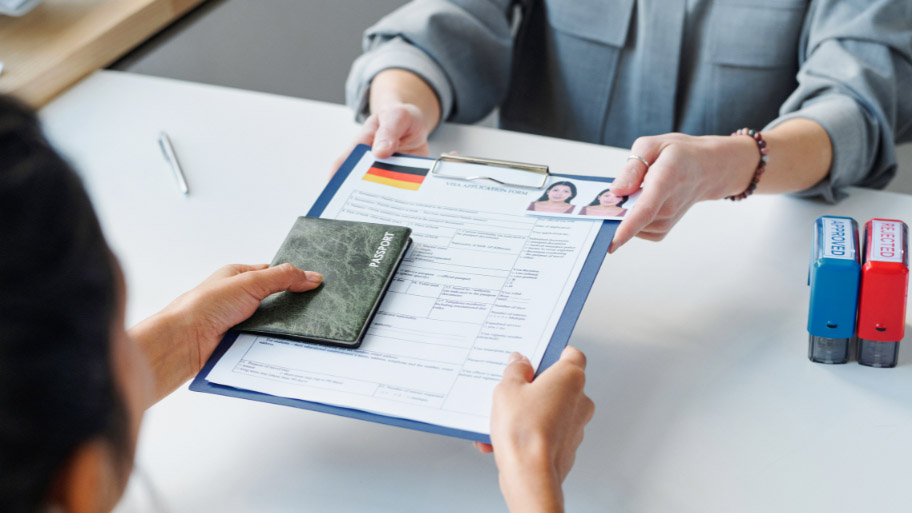
Visa Requirements and Entry Conditions
A common query among tourists pertains to the visa protocols for Germany. For those hailing from countries within the Schengen Zone, short-term visits typically don’t necessitate a visa. On the other hand, if you’re coming from a country outside the Schengen Area, visa requirements can vary based on the length and intent of your stay. Always consult up-to-date, authoritative information to understand the visa prerequisites. Allied Travel is here to guide you through the complexities of the visa application, making your entry into Germany as seamless as possible.
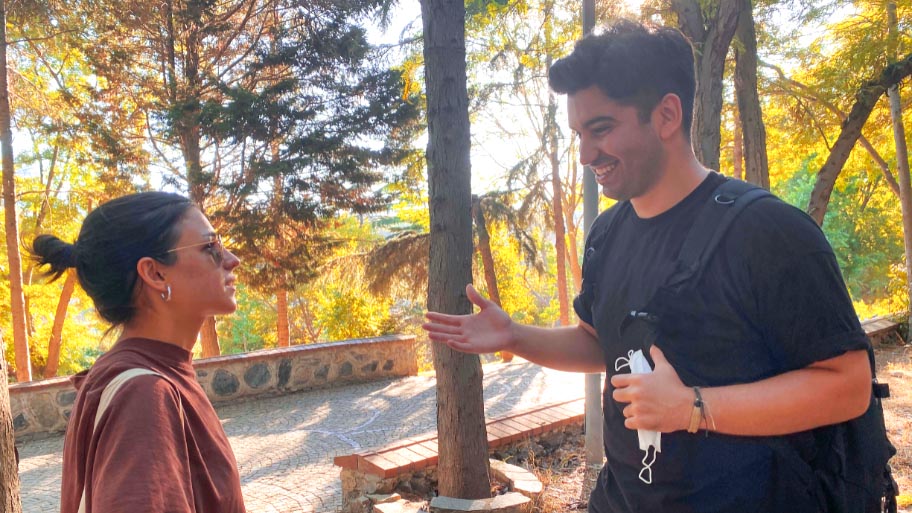
Common Language Barriers and How to Overcome Them
Although English is generally understood in Germany’s major cities and tourist hotspots, you might face some language challenges in less urbanized areas. Familiarizing yourself with essential German expressions can significantly enhance your travel experience. Translation apps on your smartphone can also be invaluable when you find yourself in a pinch language-wise. Here are some basic German words to help you out: “Hallo (Hello), “Danke” (Thank You), “Bitte” (Please), and “Entschuldigung” (Excuse Me).
Allied Travel equips its travelers with a useful language guide, so you’re always prepared to communicate effectively throughout your journey in Germany.
Unveil the Wonders of Germany: Your Next Chapter Awaits with Allied Travel!
Germany offers a kaleidoscope of experiences, from its deep-rooted history and vibrant cultural events to its varied gastronomic offerings and cost-effective travel solutions. Whether you’re an individual explorer, a culinary aficionado, or someone keen on venturing into Germany’s hidden gems, this country has something to cater to every taste. While Germany is generally a safe destination, it’s prudent to stay alert and follow essential safety guidelines. Language differences may pose challenges, but they’re surmountable with some initiative and the appropriate tools.
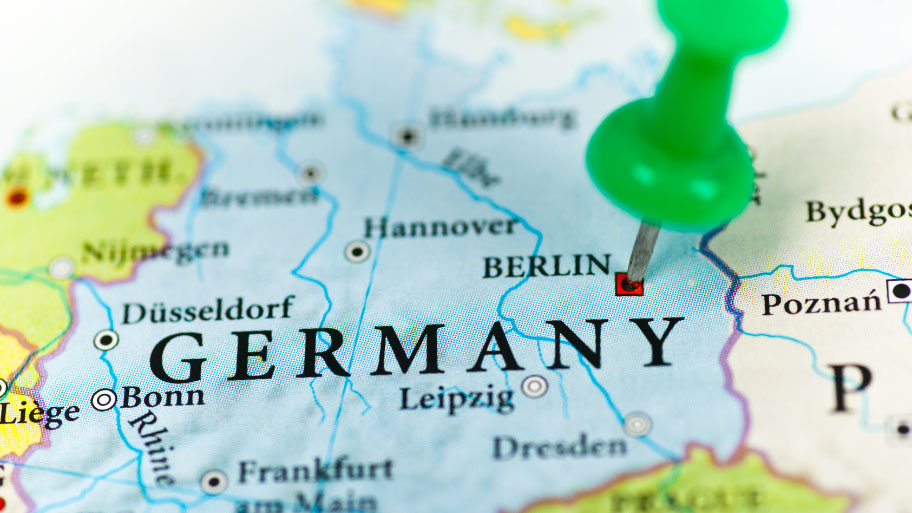
Allied Travel is committed to providing you with a seamless and enriching travel experience. We offer comprehensive guides, insider tips, and personalized services that cater to your unique travel needs. From visa assistance to budgeting advice, we’ve got you covered every step of the way.
So, what are you waiting for? Embark on a memorable journey through Germany, where every city is a new chapter and every experience a story worth telling. Let Allied Travel be your guide to this incredible destination, ensuring a trip that’s as cost-effective as it is unforgettable.
Share This Story, Choose Your Platform!
Related posts.
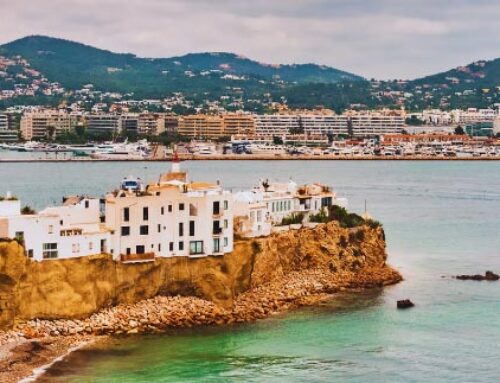
The Best Cruises in Spain: Royal Caribbean, Disney, and Princess
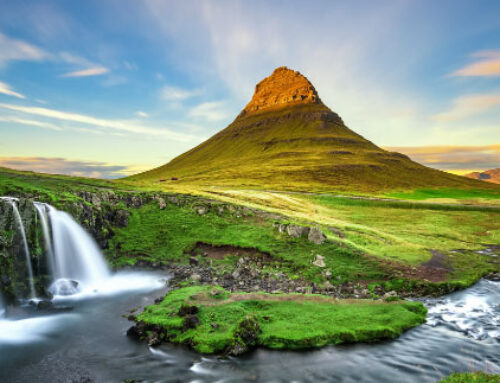
Iceland Travel Guide: Chasing Northern Lights and Natural Wonders
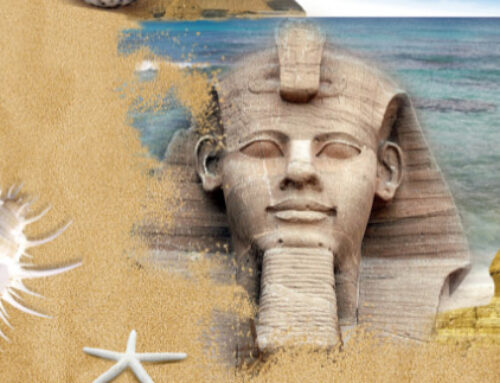
Egypt Travel Guide: Beyond the Pyramids and Sphinx
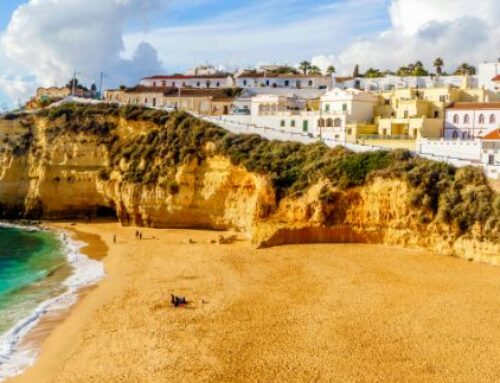
Portugal Travel Guide: Exploring the Hidden Gems
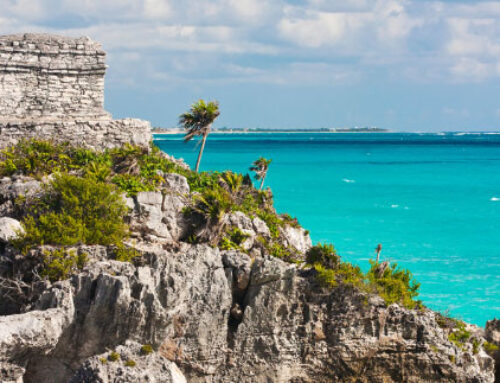
Mexico Travel Guide: Discover the Best of Mexico
Travel Guide Germany
Book your individual trip , stress-free with local travel experts
- roughguides.com
- Travel guide
- Itineraries
- Local Experts
- Travel Advice
- Accommodation
Plan your tailor-made trip with a local expert
Book securely with money-back guarantee
Travel stress-free with local assistance and 24/7 support
Though it remains far less well known or understood by outsiders than some of its neighbours, since reunification Germany has at last gained a higher profile as a place to visit, thanks partly to the remarkable resurgence of Berlin, one of the most fascinating and exciting cities in Europe. But the appeal of the reunified Germany is not limited to the capital. Use our travel guide to Germany to get inspired and plan your travel to Germany. If you prefer to be more hands-on, get a copy of the Rough Guide to Germany .
Travel facts about Germany
Where to go in germany, unesco world heritage sites in germany, food and drink in germany, outdoor activities and sports in germany, german wines: a wine-making renaissance, history and heritage in germany, art, architecture and culture in germany, tailor-made travel itineraries for germany, created by local experts.
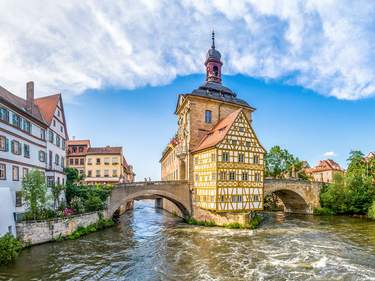
9 days / from 2263 USD
A self drive exploration of UNESCO Sites in Southern Germany
Explore UNESCO World Heritage Sites across different German states. This self drive trip allows you to design your own days with recommendations stated for each day.
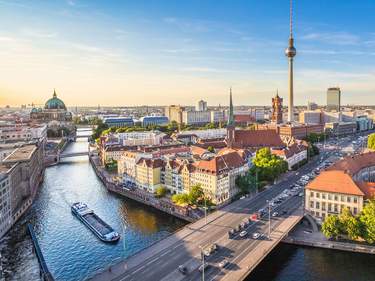
7 days / from 2905 USD
Explore Berlin and Potsdam in depth
The German capital Berlin has plenty to offer: from historical sites to world-class museums and a vibrant nightlife. Enjoy this private tour to explore a wide range of activities in Berlin and Potsdam, including several UNESCO World Heritage Sites.
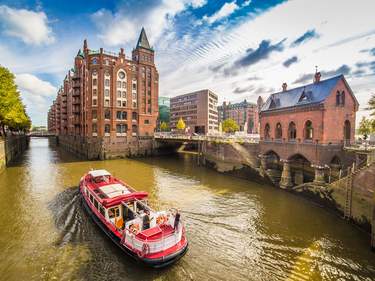
8 days / from 1501 USD
Explore Northern Germany on Your Own
From Bremen to Stralsund - Northern Germany offers plenty of gems to explore. With well-developed public transportation links, this itinerary is suited for everyone wanting to explore on their own - getting lost on the cobble-stoned streets of many UNESCO World Heritage Highlights.
- Germany occupies 357,112 square kilometres territory in Central Europe. It has land borders with nine countries and a coastline of 2389km on the North and Baltic seas.
- Politically, Germany is a parliamentary democracy, with an upper house – the Bundesrat – and a lower chamber, the Bundestag , both in Berlin. The administrative structure is federal, with the sixteen Länder (states) having a high degree of autonomy.
- Germany is the largest economy in the European Union , and it is the world’s largest exporter . As the economic heart of the euro zone it is also home to the headquarters of the European Central Bank .
- With a population of around 82 million, Germany is the most populous nation in the European Union, and it is also among its most densely populated and highly urbanized . The four largest cities are Berlin (3.46 million inhabitants), Hamburg (1.8 million), Munich (1.35 million) and Cologne (1 million).
- Germans DO have a sense of humour and they DO love to sunbathe naked . DON’T feel you can’t mention the war though. Today Germans are avid consumers of their own history, and the Nazi era is picked over exhaustively in TV documentaries, in books, and at the cinema.

Berlin is at the top of the list for places to visit in Germany / © canadastock/shutterstock
Best cities and towns in Germany
For many visitors, one of Germany’s cities will be where to go first. Berlin is genuinely exciting – a metropolis on fast-forward, growing into its rediscovered role as the nation’s capital yet preserving evidence of its sometimes unhappy role in European history.

Many other cities have proud histories as independent city-states or as capitals in their own right: thus, there’s nothing remotely “provincial” about ancient, liberal Cologne , Dresden’s restored Baroque splendour or the proud Bavarian metropolis of Munich . The financial capital, Frankfurt , impresses with its dynamism and international spirit, while Bonn , the former West German capital, charms with its scenic setting and excellent museums.
Elsewhere, chic Düsseldorf and laidback Stuttgart embody aspects of the German economic miracle, while the eastern city of Leipzig fizzes with fresh energy. Mercantile Hamburg looks askance at the rest of the country, maintaining the worldliness of a great port, while Nuremberg evokes the triumphs and tragedies of Germany’s past.
Cultural attractions of capital city-quality are not limited to the bigger cities, and many of the most rewarding places are quite small : the cathedral cities of Bamberg and Regensburg ; the Hanseatic ports of Lübeck , Stralsund and Wismar ; the “Prussian Versailles” of Potsdam ; and micro-capitals like Weimar , Schwerin and Eichstätt .
Germany has university towns as evocative as any: Heidelberg is the most famous, but Freiburg , Marburg and Tübingen are just as charming. As for the spa towns , at their best – in Baden-Baden, Bad Homburg or Wiesbaden – they combine health benefits with turn-of-the-century elegance and lovely natural settings.
Landscape, nature and road-trips in Germany
For a potted digest of Germany’s cultural riches the Romantic Road is deservedly popular, a road journey linking Rococo churches with medieval cities and eccentric royal castles. Other themed “roads” are devoted to fairy tales, half-timbering or wine. Often, the most magical places – a fortress on a crag, a placid village rising above vineyards, an ancient market square of improbable quaintness – await discovery on such routes.
Nor should Germany’s undeniable natural beauty be overlooked. The Bavarian Alps , the Black Forest and the valleys of the Rhine and Mosel have long been celebrated. Still, the talcum-powder softness of Rügen’s beaches , the smart resorts of Sylt and the lonely splendour of Mecklenburg’s lakes have yet to make it onto the international travel agenda. A shame, but great for travellers who like to explore great outdoor places away from the crowd.
One unsung pleasure of a visit to Germany is the opportunity to meet its people . The officious neighbour who complains if you don’t hang your socks out to dry in alphabetical order may not be entirely fictional, but you’re far more likely to be struck by the warmth and open-mindedness of Germany’s people – and particularly its young people. You can have fun testing how liberal a place is by observing how the locals react to the red Ampelmann when crossing the street: the bigger and more laidback the city, the more likely they are to ignore the no-jaywalking rule. In contrast, the sight of upright citizens waiting patiently for the green light despite an absence of traffic as far as the eye can see is still one of the more comic pleasures of small-town Germany.
Discover more places in Germany

- Hesse Travel Guide
- Mecklenburg-Western Pomerania Travel Guide
- Munich and central Bavaria Travel Guide
- Northern Bavaria: Franconia Travel Guide
- North Rhine-Westphalia Travel Guide
- Rhineland-Palatinate and Saarland Travel Guide
- Saxony Travel Guide
- Saxony-Anhalt and the Harz Travel Guide
- The Alps and eastern Bavaria Travel Guide
- The Black Forest Travel Guide
- Thuringia Travel Guide
- World Heritage sites in Germany
- Bremen and Lower Saxony
Germany sport a whopping 46 UNESCO world heritage sites worth your visit. There is a bit for everyone: from places of historical significance and cultural achievements to industrial heritage sites , palaces and castles , the natural beauty of parks and landscapes , whole medieval towns , modern architecture , and even some really obscure listings . If you intend to include some of these sites in your trip to Germany, download a free copy of the Rough Guide to the World Heritage sites in Germany .
The pleasures of travelling to Germany are not only intellectual. The excellence of its beer derives from the sixteenth-century Reinheitsgebot, the world’s oldest food purity law.
Germany’s food culture is traditionally characterized by wholesome but hearty dishes, a vast array of sausages and excellent but calorific cakes. Yet the impact of immigration, travel and increasing culinary ambition has been powerful, and most towns nowadays offer a wide selection of international options, usually including Balkan, Greek, Italian and Turkish. Learn more about food and drink in Germany .
Though the dangers of over-indulgence are ever present, so too is the antidote. The tradition of the Kur or spa visit has endured to a far greater extent in Germany than elsewhere. If you want to unwind in saline or hot springs while travelling in Germany, there are innumerable spa towns up and down the country.
In summer, the nation’s endless forests and mountains play host to hikers and cyclists while the Alps tempt international visitors with an excellent array of downhill ski runs in winter. Find out more about outdoor activities and sports in Germany .

The Black Forest in Germany is popular for hiking, cycling and motorcycle road trips © Funny Solution Studio/Shutterstock
Germany’s wine growers did themselves no favours when, in the 1970s, they responded to growing demand from abroad by exporting the cheapest and worst of what they produced. German wine was saddled for decades with a reputation for poor quality.
All that is now changing. A new generation of wine makers is eschewing high technology, chemicals and the mass market in favour of organic production that reflects the terroir , or soil and climate conditions of the region. It helps that Riesling – Germany’s most popular grape – strongly reflects the conditions in which it has been grown. The result is a resurgence of light, drinkable, dry white wines that range from elegant crispness to the subtly mineral. German wines are increasingly common on wine lists in North America and in parts of Asia, where they match the cuisines well.
Germany’s major wine regions are mostly in an arc that follows the course of the Rhine from the Mosel in the west to Baden in the south. To the east, wine is grown in more challenging climatic conditions in Franconia , Saale-Unstrut and along the Elbe near Dresden.
The 2006 football World Cup was something of a turning point, both with regards to Germany’s image abroad and to its own self-image, rehabilitating the idea of German patriotism for the first time since the war. When football fans descended on cities all over the country, they discovered a friendly, multiethnic and multicultural nation that was, for the most part, at ease with itself, finally happy to fly its own flag in a harmless display of national pride.
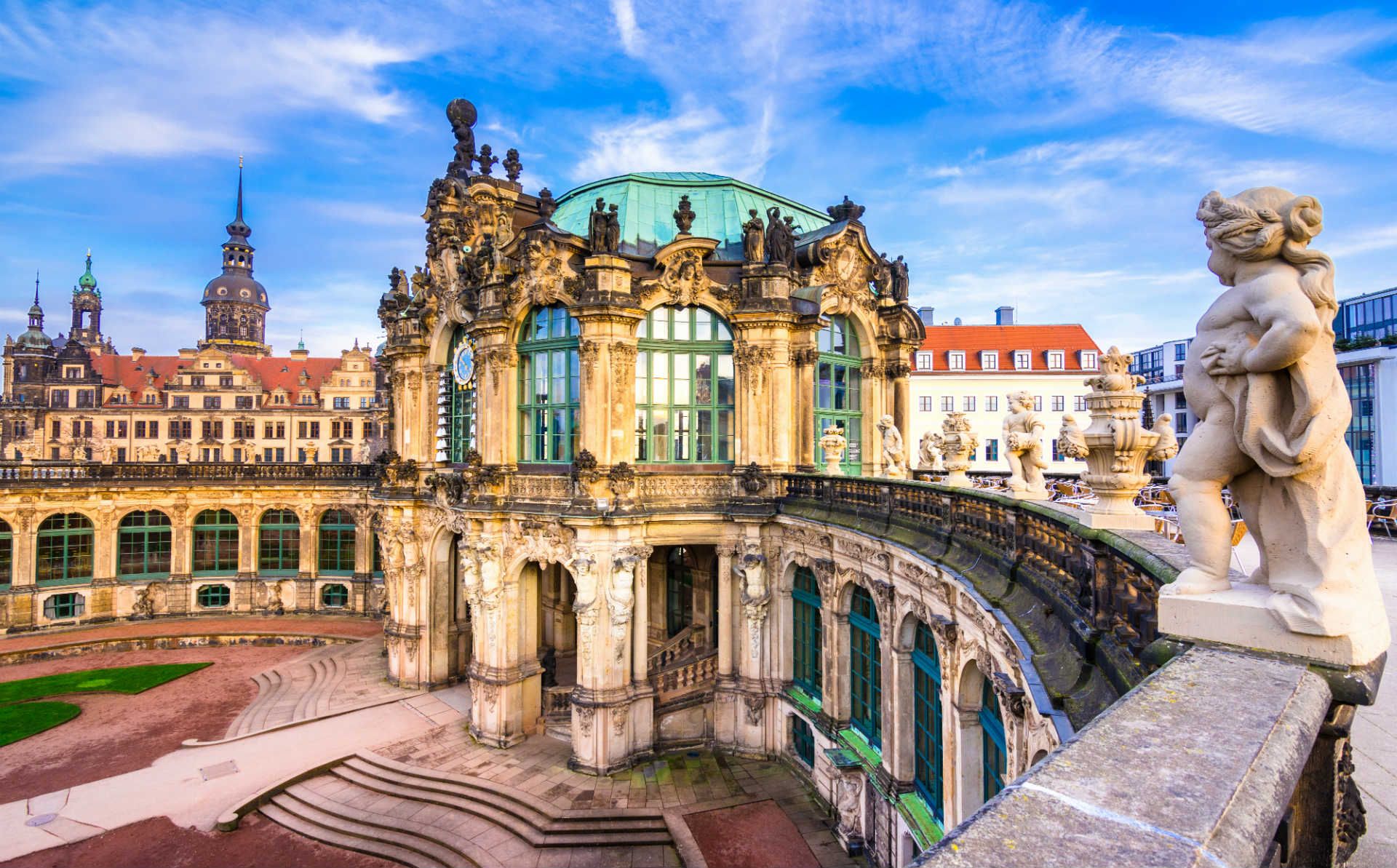
Throughout Germany you will find landmarks of its rich history, like the Zwinger in Dresden - © shutterstock
It’s now three decades since the events of 1989 swept away the Berlin Wall and brought to an uplifting end a turbulent and agonizing century for Germany, ill-served at crucial points in its brief history as a united nation-state by erratic and adventurous rulers who twice led it into disaster. In 1918, as Kaiser Wilhelm II’s vainglorious dream of empire ended in defeat, starvation and revolution; and at the end of World War II, as Hitler’s vile race-war rebounded in terrible fashion on the German people who had chosen him as their leader. There followed a period of forty-five years in which not one Germany but two faced each other across a tense international divide – the so-called Iron Curtain – throughout the years of the Cold War.
Political fragmentation is nothing new in Germany. From the tenth century until the early nineteenth, the Holy Roman Empire provided only a loose semblance of sovereignty over a vast collection of states, and it’s this jumbled history, as much as the country’s varied geography, that explains Germany’s sheer diversity. According to an old German expression, city air makes you free, and for centuries many of Germany’s cities governed themselves without feudal overlords.
In stark contrast was the absolutist yoke of the feudal states , which ranged from substantial kingdoms like Prussia, Saxony or Bavaria to tiny landgraviates and prince-bishoprics. Yet each made its contribution to Germany’s heritage, in the architectural and cultural splendour of many a former Residenzstadt. The Lutheran Reformation and its aftermath left their mark too: northern Germany is predominantly Protestant, the south more Catholic, yet the division is not clear cut. Staunchly Protestant towns alternate with devoutly Catholic ones, while in some places the two traditions share a single church.
Germany’s contribution to the world of classical music is undeniable, and provides a powerful pretext for a visit, whether to experience the glories of the Berlin Philharmonic or of Wagner’s Ring at Bayreuth, or to follow in the footsteps of great composers: Bach in Leipzig, Beethoven in Bonn.

Television tower in Berlin - © shutterstock
Germany’s reputation as the cradle of modernism is also well deserved, and a pilgrimage to the Bauhaus in Dessau or the Weissenhofsiedlung in Stuttgart is sure to please design fans. German modernism was preceded by the older traditions of the Romanesque, Gothic, Renaissance, Baroque and Rococo , each of which left a rich legacy of artistic and architectural treasures.
Germany’s prowess in fine art is less well known, yet from the pioneering realism of Albrecht Dürer to the ethereal Romanticism of Caspar David Friedrich , it’s a powerful tradition that is well worth discovering. Most German cities of any size have excellent art galleries , with Berlin and Cologne hubs of the European contemporary art scene.
Modern architecture in Germany - Reinventing the urban scene
Since reunification, Germany has experienced a rush of high-profile building projects, adding style and excitement to the urban landscape.
Berlin led the way, at times seeming like a perpetual building site. Daniel Libeskind’s Jewish Museum , the government quarter including the Reichstag, and David Chipperfield’s resurrection of the long-ruined Neues Museum all grabbed headlines, while Peter Eisenman’s monument for the murdered Jews of Europe ensures the Holocaust is remembered right at the heart of the capital.
But the action isn’t limited to Berlin. In Düsseldorf , star architects including Frank Gehry transformed a redundant dock into the Medienhafen , a funky setting for some of the city’s best restaurants and bars. In Munich , Herzog & de Meuron’s Allianz-Arena created a new symbol for the city, while a handsome new synagogue and museum reinstated a highly visible Jewish presence. In the Ruhr area , redundant industrial sites have been recycled to create some of Europe’s most original cultural spaces.
The stream of projects shows little sign of abating. Herzog & de Meuron’s extension of Duisburg’s Küppersmühle art gallery perches a translucent cube atop dockside silos, while their audacious design for the Elbphilharmonie in Hamburg places a concert hall above a portside warehouse.
Top image: Neuschwanstein castle © VOJTa Herout/Shutterstock
Travel advice for Germany
From travel safety to visa requirements, discover the best tips for traveling to Germany
- Eating and drinking in Germany
- Travel Tips Germany for planning and on the go
- Culture and Etiquette in Germany
- Getting around Germany: Transportation Tips
- How to get to Germany
- Shopping tips for Germany
- Sports and Outdoor activities in Germany
- Travelling with children in Germany
- Best time to visit Germany
The Rough Guides to Germany and related travel guides
In-depth, easy-to-use travel guides filled with expert advice.

Find even more inspiration here

Planning your own trip? Prepare for your trip
Use Rough Guides' trusted partners for great rates
written by Rough Guides Editors
updated 22.07.2021
Ready to travel and discover Germany?
Get support from our local experts for stress-free planning & worry-free travels.
- Travel advice
- Where to stay
8 top places to visit in Germany in 2024
Feb 23, 2024 • 5 min read
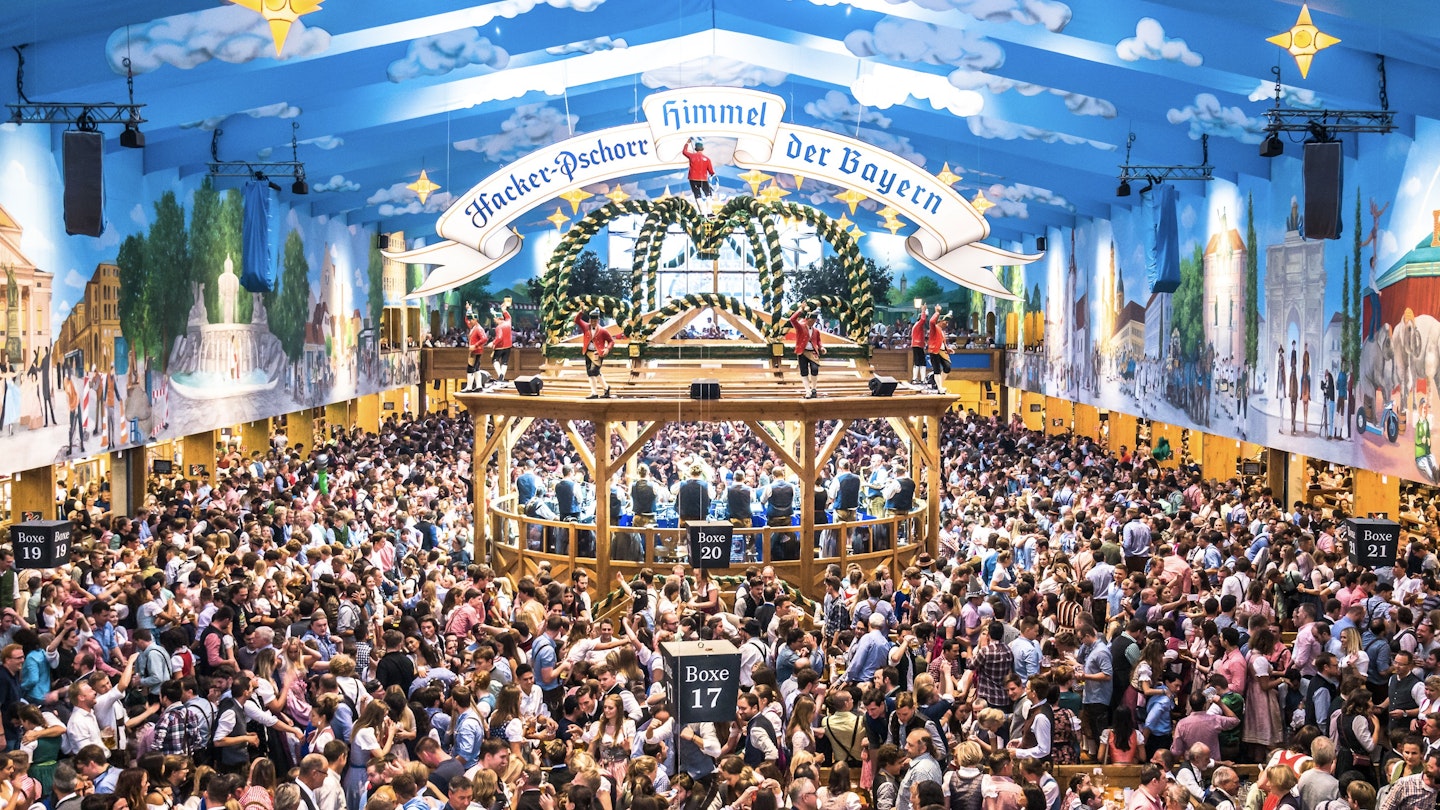
No highlights list of Germany would omit Oktoberfest in Munich © FooTToo / Getty Images
The heart of Western Europe , Germany is a boundless feast for travelers.
Its endless variety of historic yet cutting-edge cities; dark, romantic forests; and cultural riches can often make the task of planning a visit daunting. Yet though it would take a lifetime to take in all of this fascinating country’s highlights, you can get a good start indeed with this guide.
Here are eight of the very best places to visit in Germany.
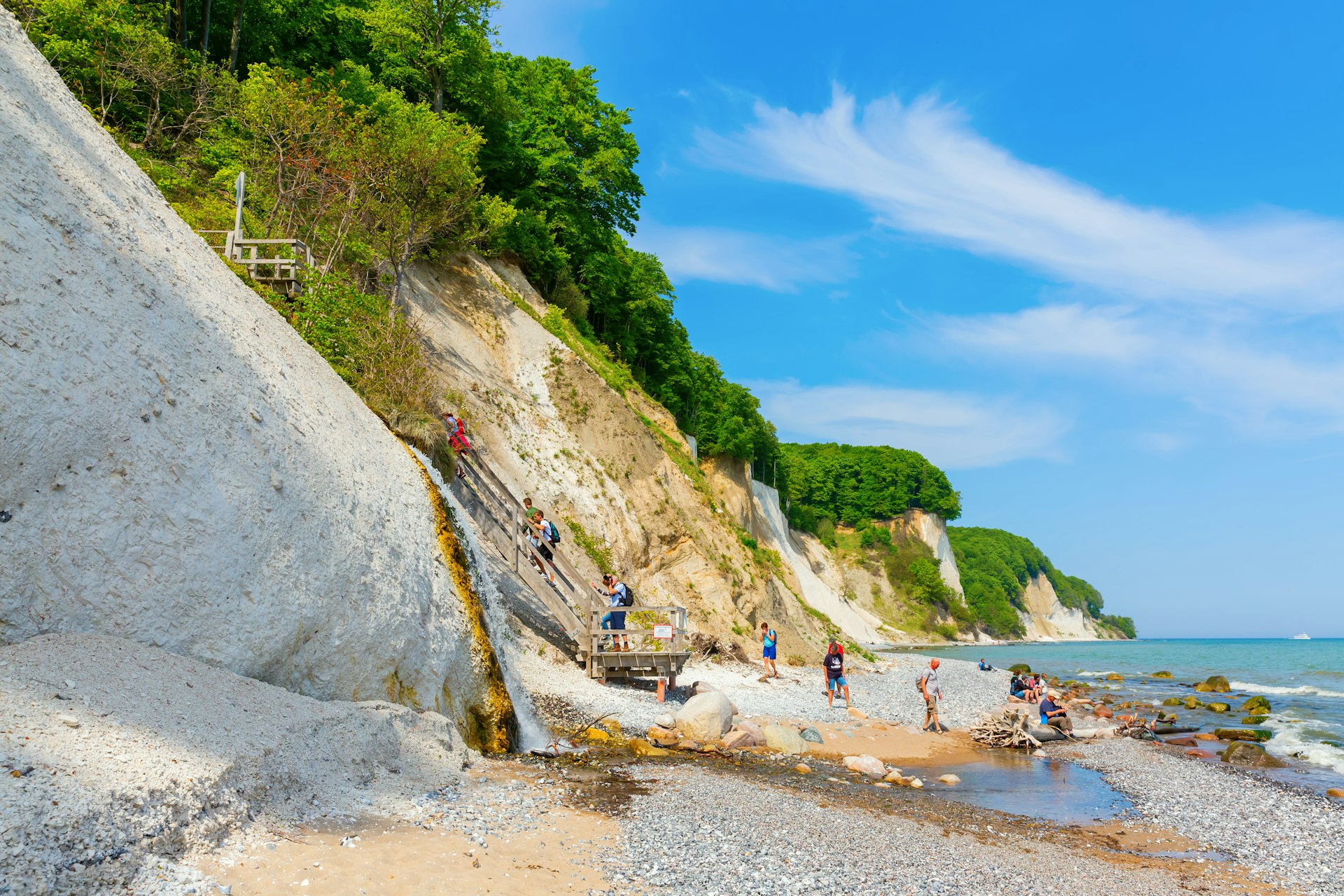
1. The Baltic Coast
Northern Germany’s Baltic Coast represents a side of the country not many visitors anticipate. The indented southern coast of the Baltic Sea hides great swathes of pure sand, susurrating pines and pristine nature sanctuaries. Highlights include the former Hanseatic power Stralsund, a classic of red-brick Gothic gabled architecture; the sheer cliffs of Jasmund National Park ; and the birdlife and beauty of the Darss-Zingst Peninsula .
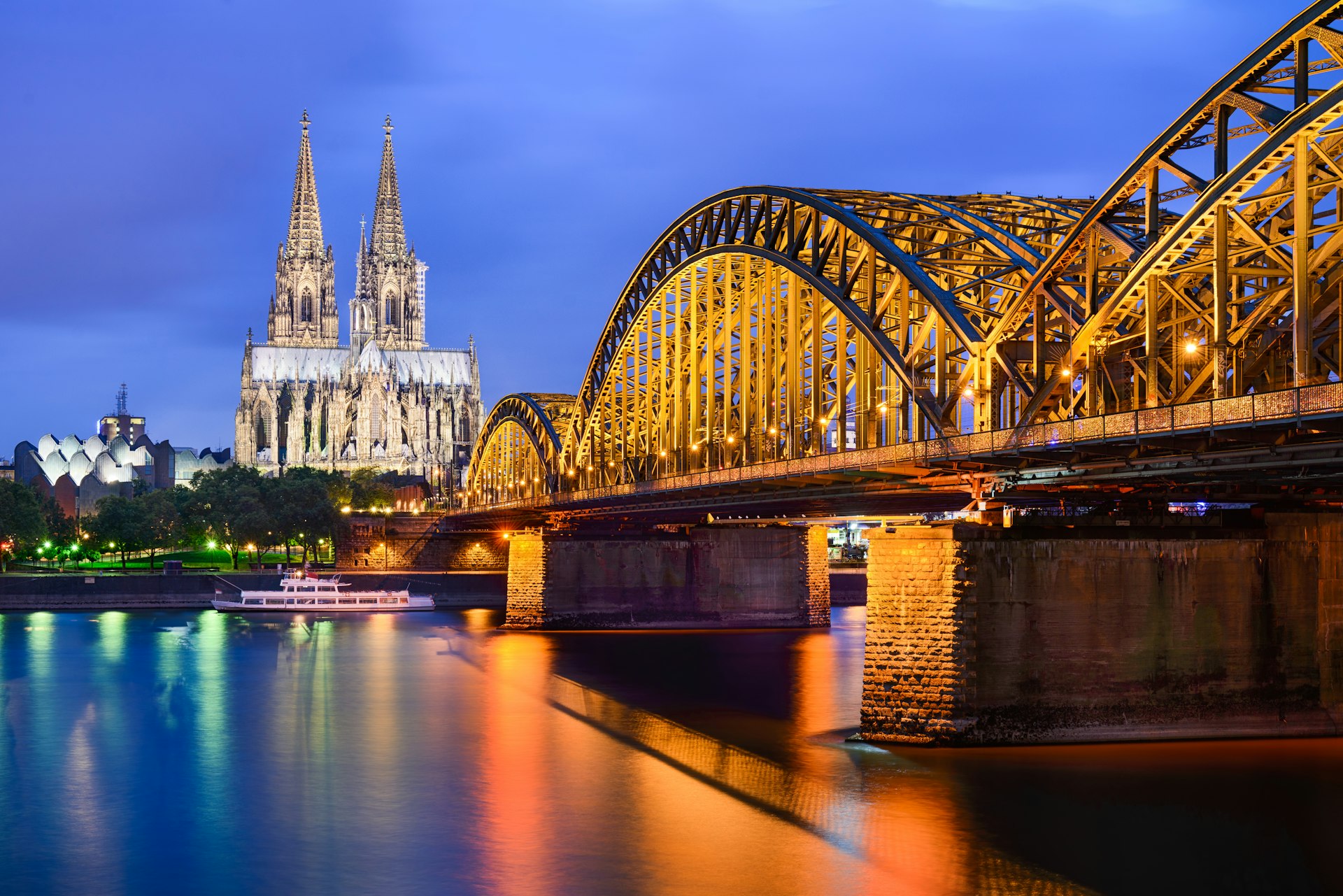
2. Cologne
Cologne (Köln) is known for its liberal climate and its wealth of historic sights. Taking its name from the Romans (who founded it in the first century CE as Colonia Claudia Ara Agrippinensium), it’s been a major center of German history for centuries.
The most tangible symbol of Cologne’s importance and the essential sight? Its magnificent 13th-century Gothic cathedral, the Kölner Dom , Germany’s largest church, which was also Europe’s highest building until eclipsed by the Eiffel Tower . Other must-see historical and cultural attractions include the Römisch-Germanisches (Romano-Germanic) Museum and the sublime collection of 13th- to the 19th-century European art at the Wallraf-Richartz-Museum & Fondation Corboud .
Planning tip: Pick up a KölnCard at the Cologne Tourist Board office (adjacent to the cathedral) or at any KVB or DB ticket machines. A 24-hour individual ticket (€9) gets you unlimited public transport and up to 50% off at many cultural attractions, restaurants and shops.
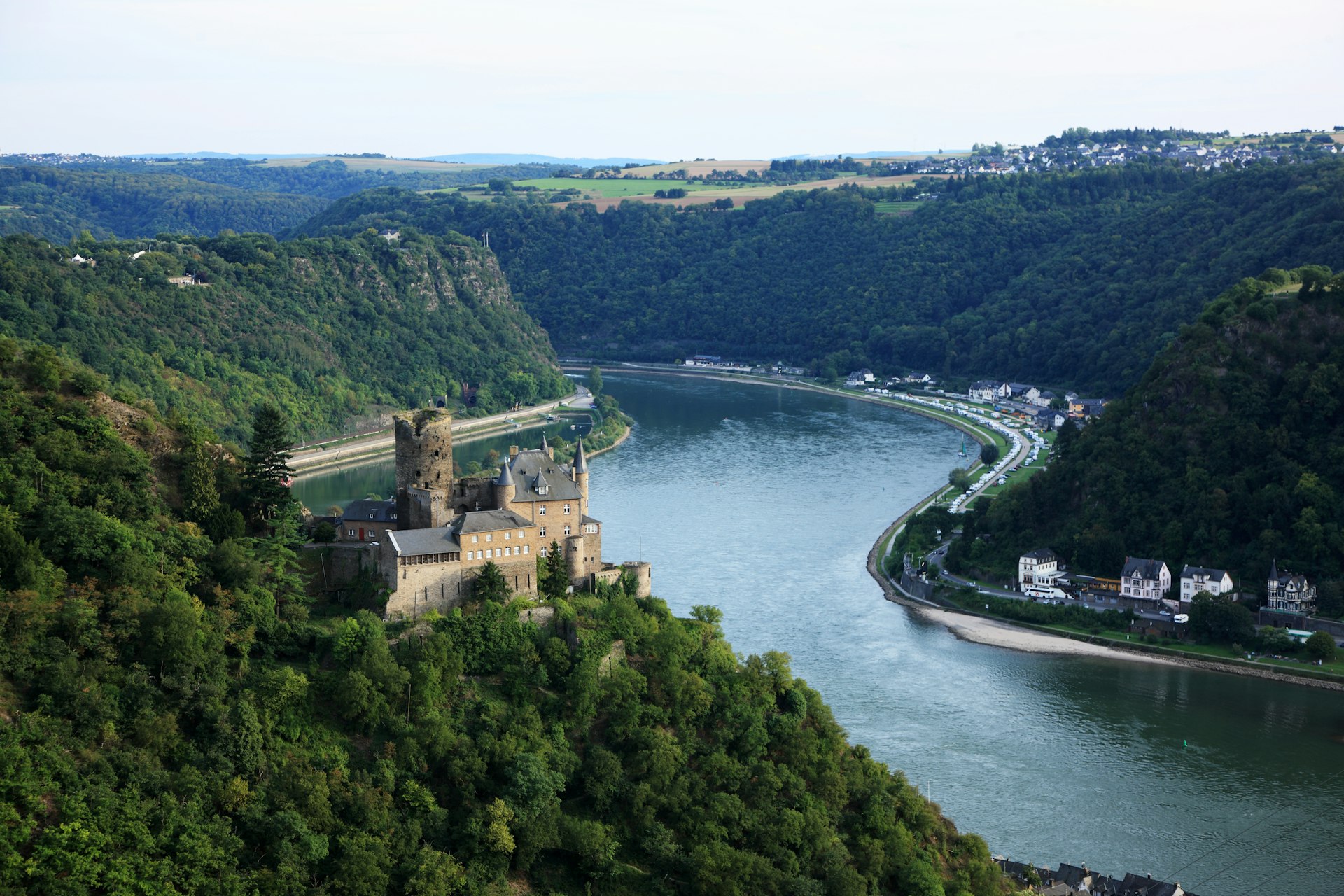
3. The Middle Rhine Valley (the Rhine Gorge)
As the Rhine , Germany’s second-longest river, flows south from Koblenz , it cuts a gorge through a gasp-inducing landscape of vineyards and castles. The stretch between Koblenz and Rüdesheim, known as the Oberes Mittelrheintal (Upper Middle Rhine Valley) is so special it won UNESCO World Heritage listing in 2002.
A land heavily contested over the centuries, the Oberes Mittelrheintal harbors wonderful castles like Pfalzgrafstein , Burg Rheinstein , Burg Reichenstein and Koblenz’s mighty Festung Ehrenbreitstein .
Of the many wineries and wine bars you might visit, we recommend Bingen’s Weingut Georg Breuer, Alte Weinstube Zum Hubertus in Koblenz and Zum Grünen Baum in Bacharach .
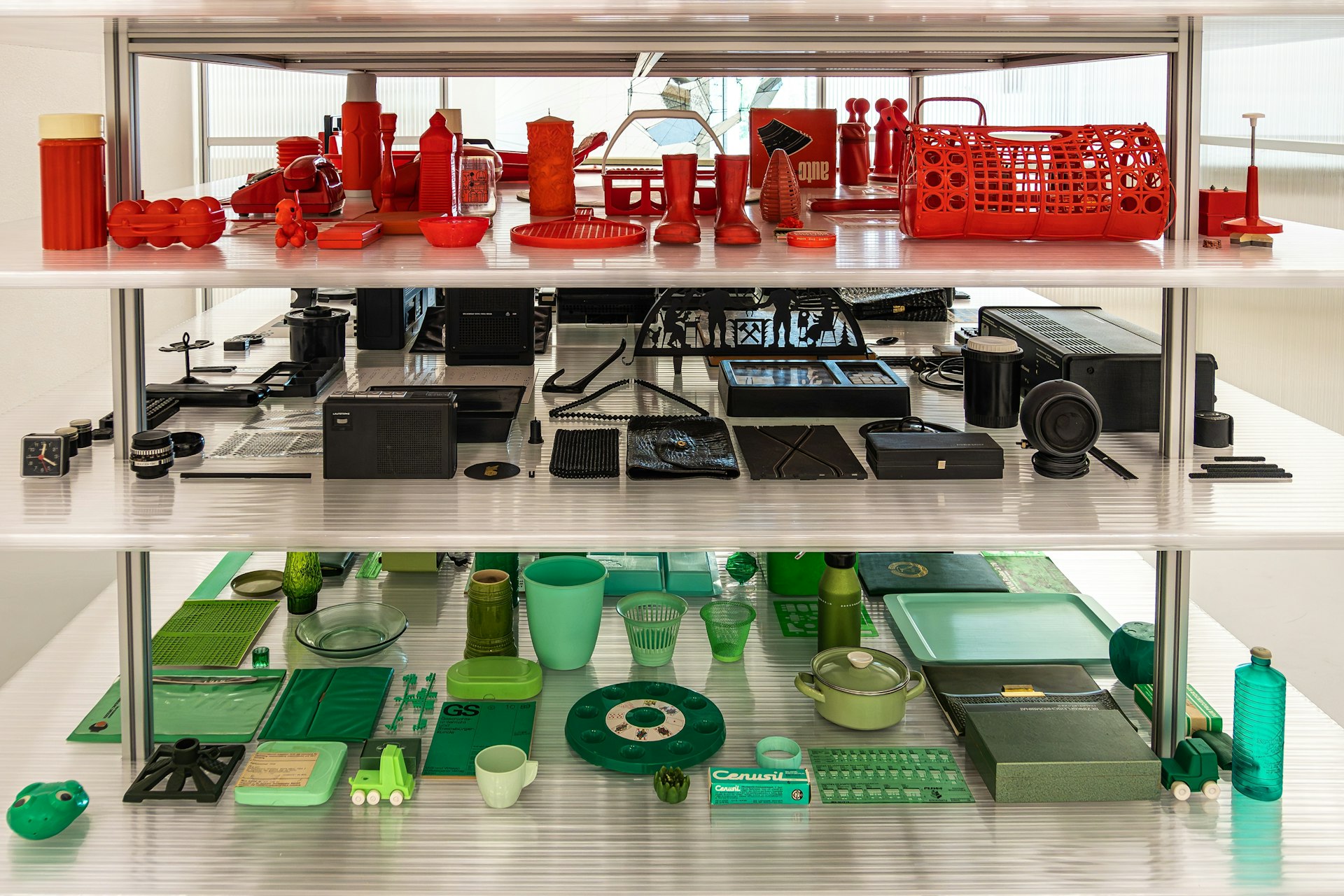
4. Erfurt and Weimar
The proximate central-German cities of Erfurt and Weimar represent an astonishing concentration of cultural achievement and historic significance. Erfurt, capital of Thuringia , has one of Germany’s loveliest medieval centers, while Weimar stands tall as the capital of the eponymous 20th-century Republic, and before that the home of cultural luminaries such as Bach, Goethe, Schiller and Nietzsche.
Erfurt’s essential sights include its cathedral , where Martin Luther was ordained, and the vast, baroque Zitadelle Petersberg . In Weimar, you’ll have to find time for the Goethe-Nationalmuseum , in a building that was the author’s home of 50 years; the UNESCO-listed Herzogin Anna Amalia Bibliothek ; and the modernist treasures of the Bauhaus Museum , which also originated here.
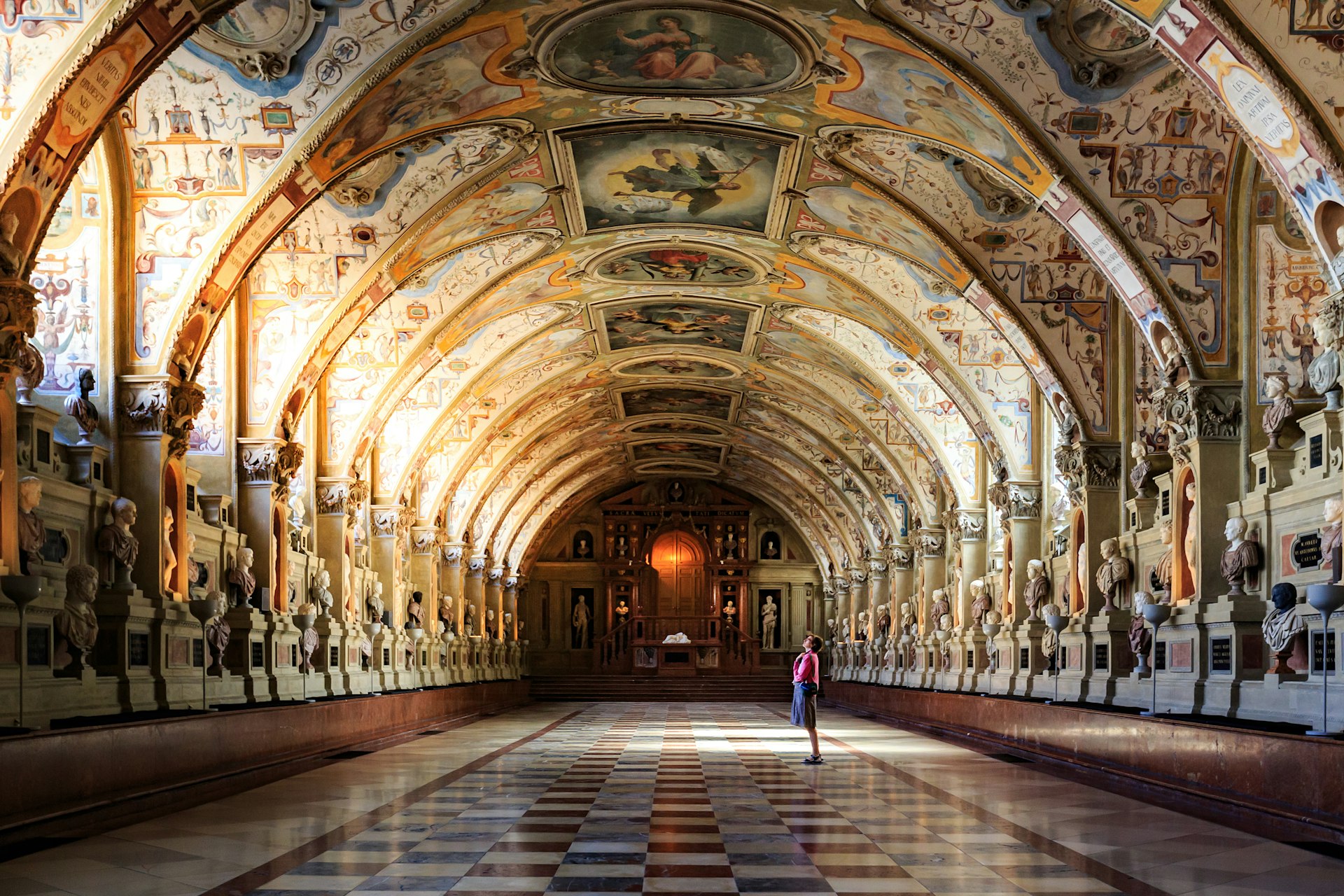
5. Munich & the Bavarian Alps
Munich (München), the capital of the Free State of Bavaria (Freistaat Bayern) is the city most visitors associate with “classic” German culture – for while Germany is in fact a patchwork of cultures and dialects, it’s often the Bavarian model of Bierkellers , Bratwurst and Lederhosen that outsiders have in mind. Munich is no cliché, though: Germany’s third-largest city is a center of high-tech manufacturing and cutting-edge culture, as well as the gateway to the magnificent Bavarian Alps .
Essential sights and experiences include the Residenzmuseum , the former palace of Bavaria’s ruling Wittelsbach dynasty; the museum-packed Kunstareal district; and the gracious 17th-century Schloss Nymphenburg . An easy drive south of Munich lie the forested mountains, photogenic villages and ski- and spa-resorts of the beautiful Bavarian Alps .
Planning tip: Oktoberfest , synonymous with Munich, is also the busiest and most expensive time to visit. Accommodation is booked solid long in advance, so plan ahead.
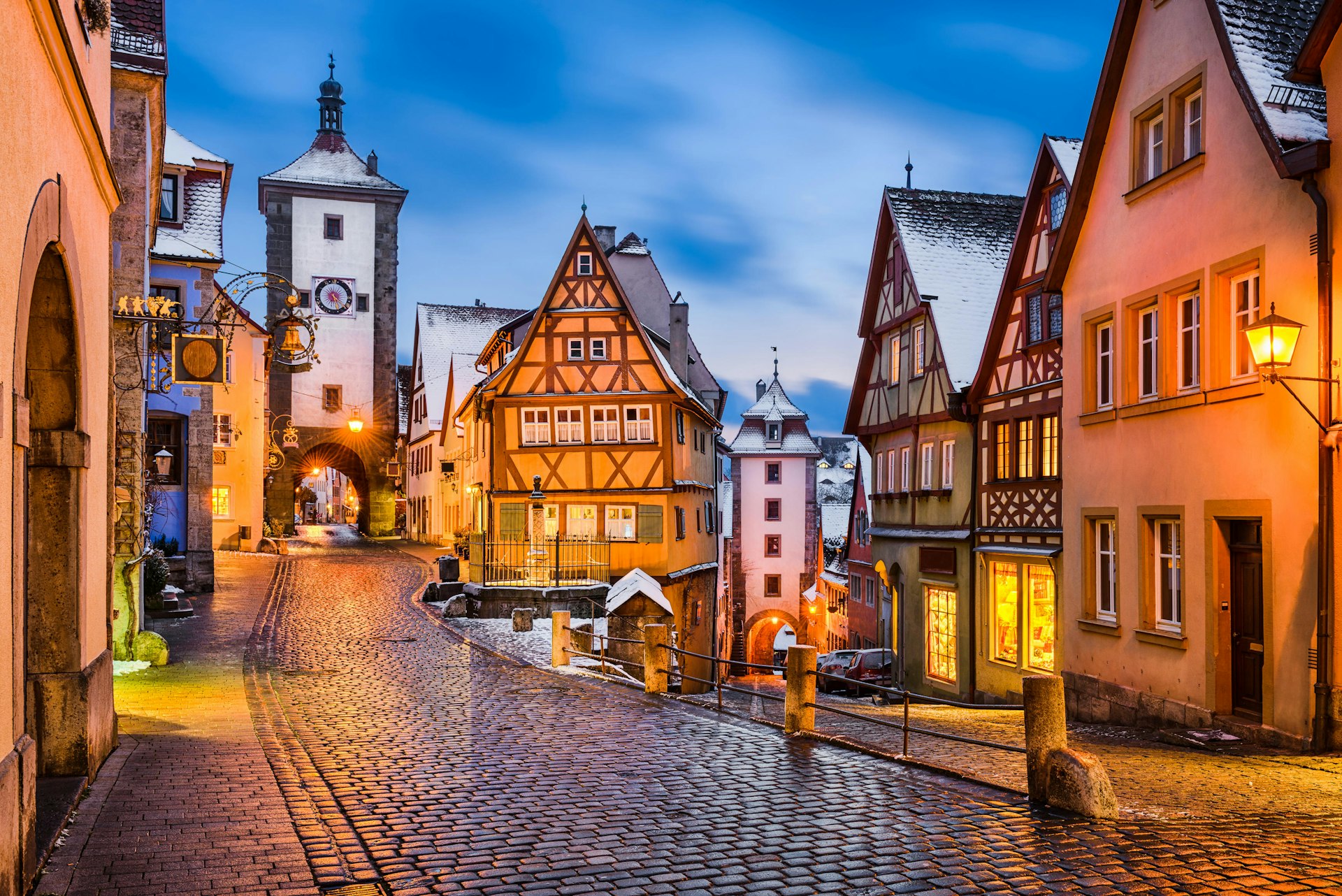
6. Rothenburg ob der Tauber
Perhaps the most enchanting village along the entire 400km (250 miles) of the Romantic Road , Rothenburg ob der Tauber (meaning “above the Tauber river”) is a wonderfully preserved example of a medieval German village. Strict heritage protection ensures that every turn reveals meandering cobbled lanes, glimpses of the intact city walls and venerable churches. Make time to see the local treasures collected in the Reichsstadtmuseum , housed in a former Dominican convent, and the Alt-Rothenburger Handwerkerhaus , where weavers, potters and other craftspeople ply their trade as they have done for over seven centuries.
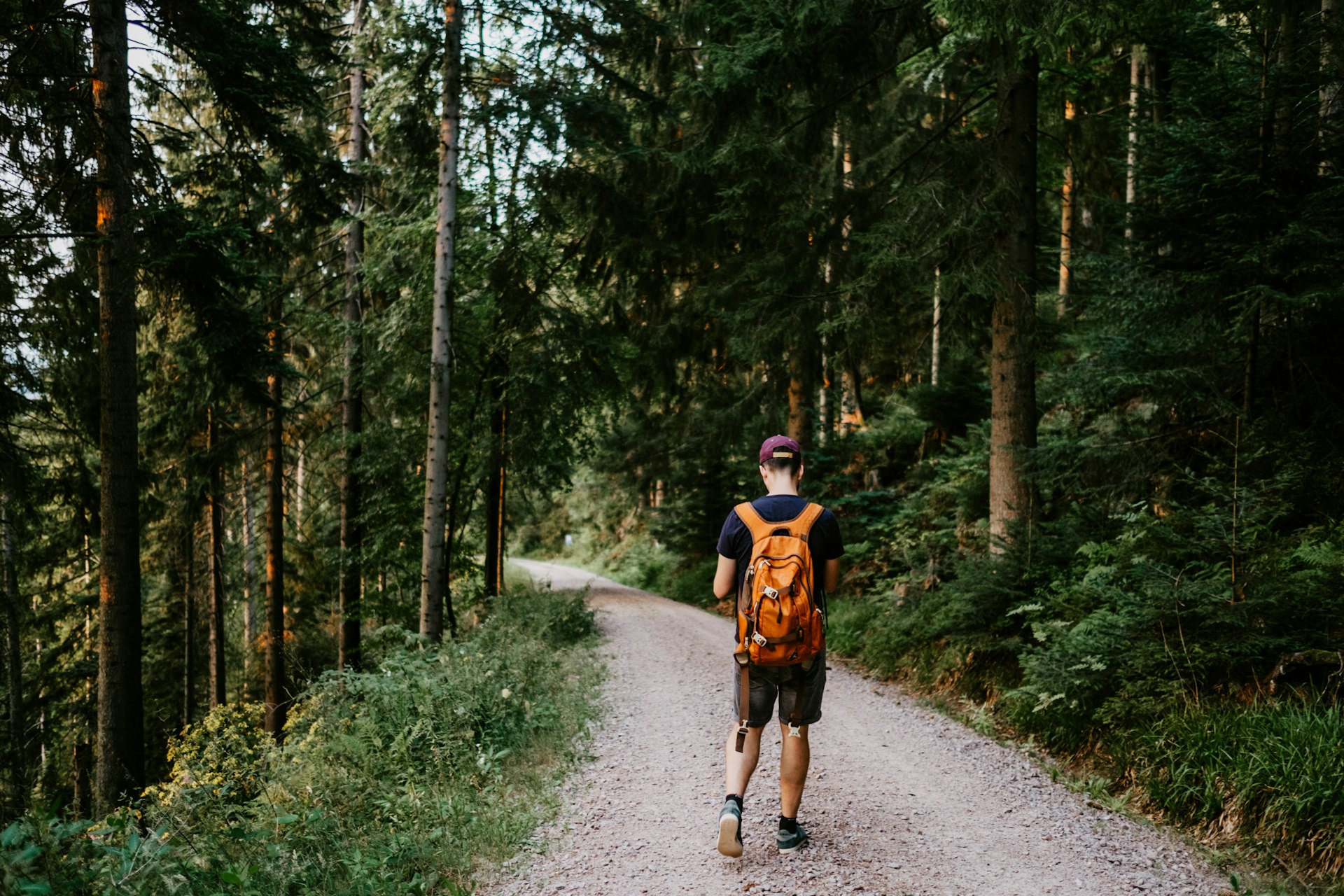
7. The Black Forest
Bordering France and Switzerland , the Black Forest (Schwarzwald) is a vast woodland of more than 6000 sq km (2316 sq miles). From its spruce-swaddled slopes to deep valleys broken by silvery lakes and traditional villages and farmsteads, this diverse rural playground just begs to be explored by car, cycle or foot.
If you’re pressed for time, a drive along the Schwarzwaldhochstrasse ( Black Forest High Road ) from Baden-Baden to Freudenstadt unfurls a series of gorgeous vistas. If you have more time, consider hiking the 40km (25-mile) Panoramaweg or the 12km (7.5-mile) Feldberg–Steig to the forest’s highest peak. Population centers you should definitely include on your visit include Triberg, with its waterfall and cuckoo clocks; the laid-back university town of Freiburg ; and Alpirsbach, with its 11th-century Benedictine monastery .
Planning tip: While travelers are naturally drawn to the Black Forest’s great outdoors, it would be a mistake to overlook the region’s excellent cuisine. There’s Schwarzwälder Kirschtorte (Black Forest gâteau), of course – while lesser-known specialities include venison Baden-Baden , smoked Schwartzwalder Schinken (ham) and skinless lange rote (long red) sausages from Freiburg.
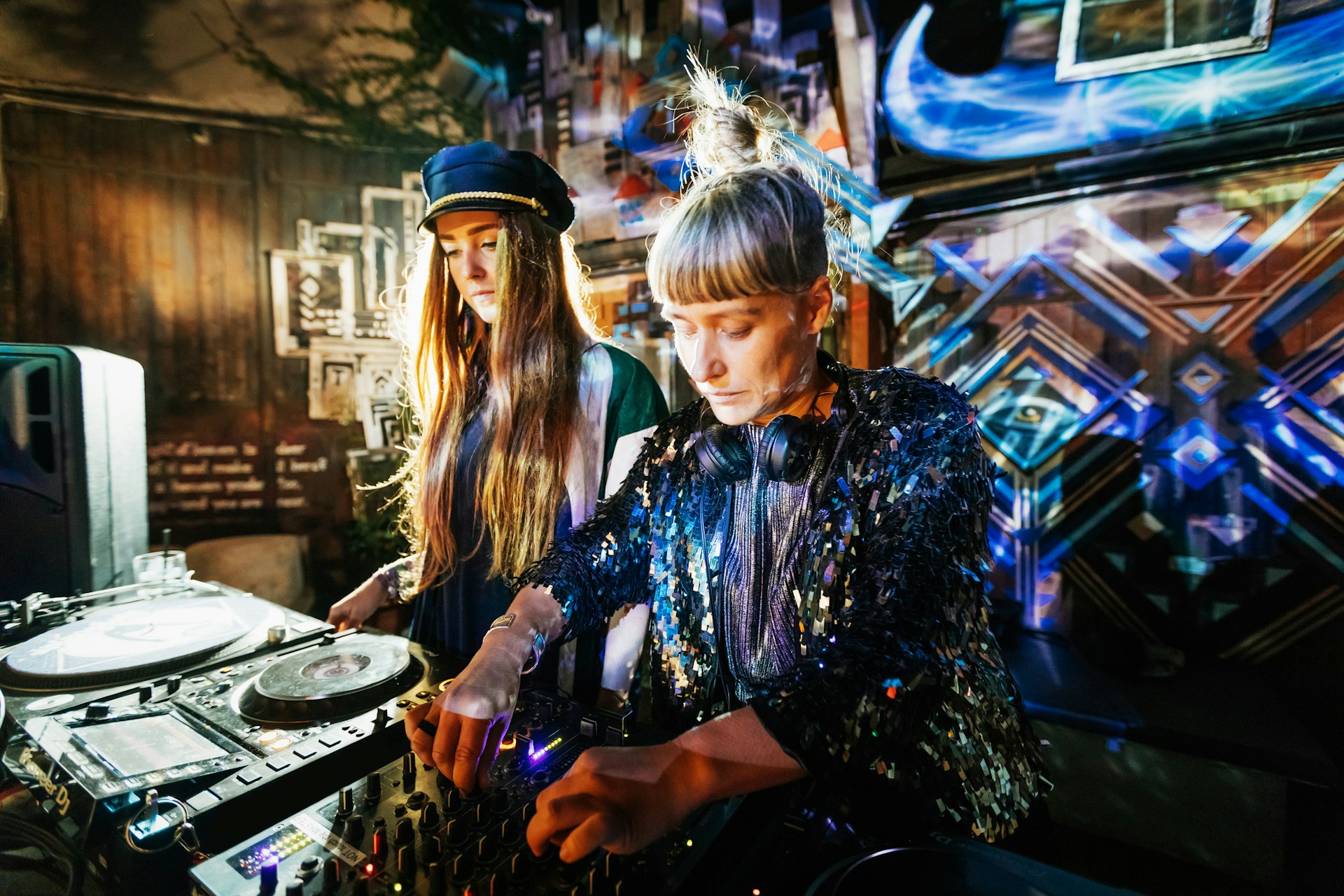
No list of German highlights would be complete without the country’s capital and dynamic cultural engine room. Germany’s most populous city, Berlin is a bountiful beast of a place, with some of the country’s definitive museums, dining, art and – perhaps above all – nightlife.
Boisterous Berlin has long had a bohemian streak. While you should definitely make time to for cultural highlights like the Mies van der Rohe–designed Neue Nationalgalerie and the treasure trove that is Museumsinsel (Museum Island), those seeking a party will surely find it in iconic venues like Berghain and Pratergarten , where beer and bonhomie have flowed together since 1837. As ever, Berlin’s party people continue to innovate .
Planning tip: Before you hit town, get yourself a Berlin Welcome Card online. This six-day, all-inclusive ticket (adults €169; children aged 3–14 €85) gives you unlimited rides on public transport, free entry to more than 30 top attractions plus up to 50% off entry to over 150 more, as well as other benefits.
This article was first published Jun 3, 2021 and updated Feb 23, 2024.
Explore related stories

Apr 19, 2024 • 10 min read
Summer is just around the corner in the northern hemisphere. Here's where the Lonely Planet team is going.

Apr 19, 2024 • 8 min read
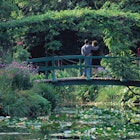
Apr 1, 2024 • 8 min read

Jan 19, 2024 • 11 min read

Jan 5, 2024 • 20 min read
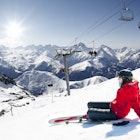
Dec 6, 2023 • 11 min read
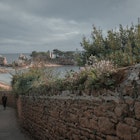
Nov 28, 2023 • 4 min read
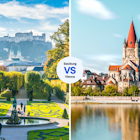
Oct 9, 2023 • 7 min read

Aug 28, 2023 • 11 min read

Aug 22, 2023 • 7 min read
- 3 Other destinations
- 4.1.1 Roman Empire
- 4.1.2 The Holy Roman Empire and the Middle Ages
- 4.1.3 Early modern Germany
- 4.1.4 Imperial Germany
- 4.1.5 The Weimar Republic
- 4.1.6 The Nazi Era
- 4.1.7 After the war
- 4.1.8 United Germany
- 4.2 Economy
- 4.3 Politics
- 4.4 Demographics
- 4.5 Holidays
- 4.6 Electricity
- 4.7 Tourist information
- 6.1 Entry requirements
- 6.2.1 Major airports and airlines
- 6.2.2 Minor and budget airlines
- 6.2.3 Business, charter & private aviation
- 6.3 By train
- 6.4.1 Ferries
- 6.4.2 Cruises
- 6.6 By tram
- 7.1 By plane
- 7.2.1 Long distance
- 7.2.2 Regional travel
- 7.2.3 Group train tickets
- 7.4.1 Electric vehicle (EV)
- 7.4.2 Recreational vehicle and campervans
- 7.5 By carpooling
- 7.6 By hitchhiking
- 7.7 By e-hailing
- 7.8 By taxi
- 7.9 By bicycle
- 7.10 By e-scooter
- 8.1 Cultural and historical attractions
- 8.2 Natural attractions
- 8.3 Itineraries
- 9.2.1 Classical music
- 9.2.2 Musicals
- 9.2.3 Theatre
- 9.2.4 Shakespeare
- 9.2.5 Music festivals
- 9.3.1 Public pools
- 9.3.2 Bodies of water
- 9.4 Fishing
- 10.3 Tipping
- 10.4.1 Supermarkets
- 10.4.2 Bottle and container deposits ( Pfand )
- 10.4.3 Factory outlets
- 10.4.4 Local products
- 10.4.5 Souvenirs
- 10.4.6 Other products
- 10.5 Opening hours
- 11.1 German food
- 11.2.1 Imbiss
- 11.2.2 Bakeries and butchers
- 11.2.3 Canteens and cafeterias
- 11.2.4 Biergarten
- 11.2.5 Gasthof
- 11.2.6 Restaurants
- 11.3 How to get service
- 11.4 Table manners
- 11.5 Typical dishes
- 11.7.1 Kosher and halal food
- 11.7.2 Vegetarian
- 11.7.3 Allergy & coeliac sufferers
- 11.8 On a budget
- 12.3 Coffee
- 12.4 Glühwein
- 12.5 Spirits
- 12.7 Hot chocolate
- 13.1 Hotels
- 13.2 Bed & Breakfast
- 13.3 Hostels
- 13.4 Camping
- 16.1 Emergencies
- 16.2 Racism
- 16.3 Police
- 16.4 Prostitution
- 16.6 Weapons
- 16.7 Fireworks
- 16.8 Gay and lesbian travellers
- 16.9 Wild animals
- 16.10 Swimming
- 17.1 Health care
- 17.2 Medication
- 17.3 Health insurance
- 17.4 Drinking water
- 17.5 Diseases
- 17.6 Toilets
- 18.1 Culture
- 18.2 Punctuality
- 18.3 Behaving in public
- 18.4 Smoking and vaping
- 18.5 Being a guest
- 18.6 People
- 18.7.1 World War II
- 18.7.2 German Democratic Republic era
- 18.8 Regional rivalries
- 19.1.1 Landlines
- 19.1.2 Mobile
- 19.1.3 Alternative methods
- 19.2.1 Wi-Fi
- 19.2.2 Mobile data plans
- 19.2.3 Copyright issues
- 19.3 Postal service
Germany ( German : Deutschland ), officially known as the Federal Republic of Germany ( Bundesrepublik Deutschland ) is the largest country in Central Europe . An economically, politically, and culturally influential nation, Germany is the richest and most populous European Union member state. Known for its rich cultural heritage, innovative inventions, its old-world charm and Gemütlichkeit (cosiness), and being home to some of the world's largest companies, Germany has something to offer for everyone. Discard any perceptions of Germany as simply homogeneous; a country of surprising regional diversity awaits your presence.
Regions [ edit ]

Germany is a federal republic consisting of 16 states (called Bundesländer - shortened to Länder ) that sometimes correspond to historic regions and sometimes group very different peoples into the same state. Three of these Bundesländer are city-states: Berlin , Bremen and Hamburg . For a long time, the cultural division between north and south was the most notable but, because of the legacy of the Cold War, nowadays the division between east and west is more noticeable.

Cities [ edit ]

Germany has numerous cities of interest to visitors; here are just nine of the most famous travel destinations. They are mostly the larger cities of Germany. Some, such as Berlin and Hamburg, stand like urban islands in more rural landscapes, others, like Düsseldorf and Frankfurt, are part of metropolitan areas together with other cities.
- 52.522 13.3873 1 Berlin – The reunified and reinvigorated capital of Germany; a metropolis of diversity with some of the world's best-known clubs, shops, galleries and restaurants. As a result of being split in two for decades during the Cold War, Berlin now boasts more opera houses and museums per capita than most other places in the world.
- 53.083333 8.8 2 Bremen – Its old market, the Schnoor , the Böttcherstrasse, the Viertel and its maritime flair all make Bremen a great urban experience.
- 50.936389 6.952778 3 Cologne ( Köln ) – Founded by the Romans 2000 years ago and known for its huge cathedral (second largest in the world), Romanesque churches, archaeological sites and the lively old town quarter. The Cologne Carnival is a major draw around February.
- 51.033333 13.733333 4 Dresden – Once called "Florence on the Elbe", known for the Frauenkirche (the finest baroque cathedral outside Italy) and its historic Altstadt , that were both rebuilt after being destroyed during World War II. The Zwinger and Residenzschloss are world-renowned museums.
- 51.233333 6.783333 5 Düsseldorf – Germany's capital of shopping that also has a wide variety of fascinating new architecture. The "Altstadt" quarter and the Rhine embankments have a vibrant nightlife.
- 50.116667 8.683333 6 Frankfurt – A magnificent skyline, financial and transportation hub of Europe, headquarters of the European Central Bank (ECB) and an important trade fair. Small reconstructed centre with half-timbered houses, important museums and galleries around the Museumsufer like the Schirn Art Hall, the Städel and the Senckenberg Natural Museum.
- 53.565278 10.001389 7 Hamburg – Germany's second-largest city is known for its harbour, its numerous channels and bridges, the Speicherstadt , the Michel church and the new Elbphilharmonie concert hall, the bustling nightlife around St. Pauli with the Reeperbahn, its musicals and the Hafengeburtstag festival.
- 48.133333 11.566667 8 Munich ( München ) – Germany's third-largest city and booming capital of Bavaria is known for the Oktoberfest, the Hofbräuhaus, its manifold cultural offerings including operas, theatres and museums, a vibrant nightlife, many music festivals, its beer gardens and river surfing, and being the gateway to the Alps.
- 49.45 11.083333 9 Nuremberg ( Nürnberg ) – A former Reichsstadt with a medieval touch, its old town was partly reconstructed after severe bombing in the war, including the Gothic Kaiserburg and the major churches. You can also visit the Nazi Party rally grounds, the Documentation Centre and Courtroom 600, where the Nuremberg war crime trials were held.
Other destinations [ edit ]
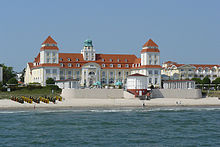
- 54.083333 12.133333 1 Baltic Sea Coast ( Ostseeküste ) – Once the playground for crowned heads, this region is coming into its own again after the Cold War shut much of it off from the wider world. Site of the famous Strandkorb picture of the 2007 G8 summit.
- 47.64 11.77 2 Bavarian Alps ( Bayerische Alpen ) – Germany perhaps at its most clichéd, but also its most beautiful; nice skiing in winter, hiking in summer and Schloss Neuschwanstein are just the most obvious attractions.
- 48.3 8.15 3 Black Forest ( Schwarzwald ) – You are likely to think "cuckoo clock" or cherry pie, and you'd be forgiven, but there is much more to this region than that.
- 53.733333 7.416667 4 East Frisian Islands ( Ostfriesische Inseln ) – Among Germany's most popular summer holiday spots, those largely car free islands in the Wadden Sea still see less international visitors than they deserve.
- 49.839 11.302 5 Franconian Switzerland ( Fränkische Schweiz ) – A favourite with early 19th-century poets who gave a name that stuck, this karst region is world renowned for its climbing and has some beautiful caves .
- 51.75 10.633333 6 Harz – Long forgotten due to German partition running right through it, the Harz today attracts tourists with superb hiking and the mystic romanticism of the Brocken mountain that is reputed to attract witches (as mentioned in Goethe's Faust ).
- 47.65 9.316667 7 Lake Constance ( Bodensee ) – Germany's largest lake, the "Swabian Ocean" (as it is jokingly known) offers alpine panorama and water activities at the same time.
- 50.364167 7.605556 8 Middle Rhine Valley ( Mittelrheintal ) – Part of the Rhine River is a UNESCO Heritage Site between Bingen/Rüdesheim and Koblenz; the valley is famous for its wines.
- 54.66112 8.44299 9 North Frisian Islands ( Nordfriesische Inseln ) – Calm islands with resorts at the North Sea coast, especially Sylt is known for its posh celebrity guests and pristine landscape.
Understand [ edit ]
History [ edit ], roman empire [ edit ].

In the first century AD, after a series of military campaigns, the Romans conquered what is now most of western and southern Germany from the Germanic and Celtic tribes living there. The limits of the Roman empire were marked by the "Limes". The section separating the empire from the Germanic tribes ( Limes Germanicus ) was 568 km long, stretching from the mouth of the Rhine to the Danube near Regensburg . You can still see and walk along sections of the raised bank. In Roman times the Limes were not a rigid border: trade and occasional Roman military expeditions influenced most of what is now Germany until at least the fourth century AD.
Several cities that are still important in Germany were founded by the Romans as military bases and later, settlements, including Mainz , Wiesbaden , Cologne and Bonn . Baden-Baden 's springs were also much appreciated by the Romans: the remains of their baths can be visited under the aptly-named Römerplatz (Roman Square). The most impressive Roman remains in Germany can be found in Trier , the oldest German city. These include the Porta Nigra, the largest Roman city gate north of the Alps, and the Trier Amphitheatre.
The Holy Roman Empire and the Middle Ages [ edit ]

Charlemagne, King of the Franks, was crowned first Emperor of the Holy Roman Empire on Christmas Day 800 AD by Pope Leo III. Charlemagne is often associated with France, but his realm was vast; his capital was in Aix la Chapelle, today the German city of Aachen . Remains of Charlemagne's winter imperial palace (the Kaiserpfalz ) can be seen in the town of Ingelheim . The roots of modern German history and culture date back to the post-Carolingian Holy Roman Empire.
Starting in the early Middle Ages, Germany fractured into hundreds of small states, with strong regional differences that endure, for example in Bavaria . During this period the power of local princes and bishops increased, their legacy being the many spectacular castles and palaces like the Castle Wartburg in Eisenach , Thuringia . From the 1200s, trade with the Baltic area gave rise to the Hanseatic League and rich city states such as Lübeck and Hamburg . Other cities also came to prominence from inland trade routes, such as Leipzig , Nuremberg and Cologne .
As German society gradually changed from having a feudal structure to a mercantilist system, guilds or Zünfte of craftsman were established and became a major factor in German economics and society. Some Medieval guild halls can still be visited. This period also saw the rise of banking families such as the Fugger, whose debtors included popes and emperors, and who influenced the growth of cities such as Augsburg .
In the Middle Ages and early modern times the Holy Roman Empire (today's Germany, Austria, Hungary, Czech Republic and parts of surrounding countries) consisted of some 2,000 semi-independent territories that were subordinate only to the emperor – and that often in name only. The Holy Roman Empire was — as Voltaire famously quipped — neither Roman nor holy nor an empire. While some petty dukedoms were not much more than a couple of hamlets, important cities gained the status of Reichsstadt , which made them city-states subject only to the emperor. Their former wealth can still be seen in places like Rothenburg ob der Tauber and Nördlingen . While there were some earnest efforts at modernisation from the 15th to early 17th centuries, the Holy Roman Empire eventually lost all but the most nominal central political power. And in the waning years, it wasn't even able to keep the peace between its two most powerful constituents at the time, Austria and Prussia , whose rivalry would dominate the fate of German-speaking areas for most of the 19th century.
Early modern Germany [ edit ]

A period of religious reform and scientific discovery was marked by the 1517 publication of Martin Luther's 95 Theses in Wittenberg , which started the Protestant Reformation . Luther would go on to translate the Bible into a Central German vernacular at the Wartburg, doing much to standardise German and exclude northern dialects as "Low German" or "Dutch". The empire split between Catholics and several branches of Protestants, while regional powers emerged from the more unified territories of Catholic Bavaria and Protestant Saxony and Brandenburg (later known as Prussia). The Protestant-Catholic conflict reached a climax in the Thirty Years War , which devastated many German territories. It took a century for Germany's population to grow back to prewar levels.
The rulers of the more affluent duchies and kingdoms of the empire supported the development of arts and sciences, like the works of Johann Sebastian Bach, employed by the Elector of Saxony , or the works of Goethe and Schiller who both had high paying sinecures in Weimar during their most productive years as writers. Richard Wagner found a willing patron in Ludwig II of Bavaria. Notable scientists included Daniel Fahrenheit, Alexander von Humboldt, Carl Wilhelm "hard luck" Scheele and, in mathematics, Gottfried Wilhelm Leibniz made major advancements in both Leipzig and Hannover . Another household name in German science is Carl Friedrich Gauß, a mathematician who developed the "Gaussian bell curve".
During the baroque period in arts and architecture, many of the German rulers created stately royal residences and rebuilt their capital cities to reflect their might and taste. Splendid creations of that period include Dresden and Potsdam .
Imperial Germany [ edit ]
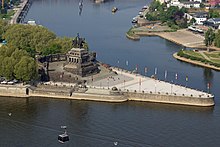
The Napoleonic Wars ended the last semblance of a German state when Emperor Franz II decided to step down in 1806. The various German states were later bound together by a military alliance with fewer federal powers than today's EU. This confederation was overshadowed by the conflict between a liberal bourgeoisie and a reactionary aristocracy on the one hand and between Prussia and Austria on the other. In 1848 one of those tensions erupted, but the liberal revolution failed because the revolutionaries spent a lot of time arguing about whether Austria should be a part of the new Germany ("großdeutsch") or not ("kleindeutsch"). The title of German Emperor was offered to Prussian King Friedrich Wilhelm IV, but he rejected the offer as it was "tainted" by being offered by the bourgeoisie, not his "equals" in rank. More radical elements fought on until 1849. The moderate elements made their peace with the authorities and later supported the Prussian-dominated empire, while the radical elements increasingly gravitated towards socialism and opposition to all things monarchical.
From 1866 to 1871 after decisive wars with Austria and France, Prussia united Germany as a nation state called the German Empire ( Deutsches Reich , or Kaiserreich ) under the leadership of Otto von Bismarck, who became the Reich's first chancellor. It was a federally organised state that kept the constituent states intact including their kings, dukes and princes. Some states, like Bavaria or Württemberg, kept their own armies, railways and postal services. The states and their residences were still important cultural centres.
The new empire combined traditional institutions such as the monarchy with elements of a modern democracy such as a democratically elected parliament ( Reichstag ) and political parties. There was universal adult male suffrage at the Reich level, but individual states could tie suffrage — or the weight of votes — to property requirements. Furthermore, gerrymandering and legal prosecutions hampered the activities of political parties which were in conflict with Bismarck and/or the Kaiser. First the wrath of the regime fell on political Catholicism with explicit laws banning political sermons against the government, but later social democrats and socialists were singled out. Civil marriage was introduced in that era and Protestant nationalism would remain a force on the political right — including being a major factor in Hitler's rise to power — until World War II.
Bismarck followed a shrewd "carrot and stick" approach with regards to the working class. On the one hand worker's clubs suspected of left wing leanings — even if they were outwardly "just" social clubs dedicated to athletics, singing or soccer — were outlawed or harassed by police. On the other, Bismarck introduced state pensions, health insurance and payments in case of illness, injury or death. Nonetheless, the Social Democratic Party increased its share of the vote, and in 1890 Wilhelm II fired Bismarck and ratcheted down persecution.
As trade barriers gradually fell, Germany found itself a hub of the later period of the Industrial Revolution and became a major industrial power. During this period, technological innovation took place in various fields, highlighted by the creation of the automobile by Karl Benz and Gottlieb Daimler in Baden-Württemberg . From the founding of the 'Bismarck Empire' to the First World War, German manufacturing underwent a development from cheap low quality mass goods (for which the British developed the "warning sign" Made in Germany ) to some of the best goods in their fields. Germany also began to climb to the top spot in the natural sciences and medicine, with the Nobel Prize until World War II going to Germans almost as frequently as it goes to Americans today, and the start of the Golden Age of Modern Physics . Names like Paul Ehrlich (medicine), Max Planck (quantum physics), Robert Koch (germ theory) or Albert Einstein (who however lived in Switzerland by the time of his annus mirabilis , 1905) are still known the world over and several research institutes of good reputation are named after them.
Millions of Germans emigrated overseas, especially to the United States , where they became the dominant ethnic group, especially in the Midwest . Canada had a city named Berlin in an area of heavy German immigration; it was renamed Kitchener , after a British general, in 1916. Australia , in particular Queensland and South Australia , also received many German immigrants who played a major role in kickstarting Australia's beer and wine industries. German immigration also occurred to Latin American countries and the German colonies in Africa and China , and while not always numerous, it has often left behind a trace in the economic or culinary history of the destination countries.
The Weimar Republic [ edit ]
After losing the First World War (1914–1918), Emperor (Kaiser) Wilhelm II was forced to abdicate. Germany was forced to give up all its overseas colonies, and also had to give up much of its land to neighbouring countries. A revolutionary committee prepared elections for a national assembly in Weimar which gave the Reich a new, republican constitution (1919). The republic is now usually called 'Weimar republic'. During the revolution, it briefly appeared as if Germany would become a socialist/communist state like Russia had two years prior, but the Social Democrats eventually made common cause with conservatives and reactionaries of the Kaiserreich era to squash anything to their left, murdering prominent socialists Rosa Luxemburg and Karl Liebknecht in the process. This perceived betrayal embittered many communists. Unlike in France or Spain, forces to the left of the Social Democrats never made common cause with democratic parties to stop the rise of fascism. Instead, the Communist Party and the Nazi party often voted in concert on motions of no confidence and populist but unrealistic bills.
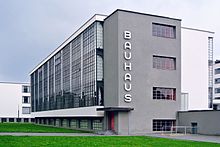
The young republic was plagued with massive economic problems stemming from the war (such as the 1923 hyperinflation). The reparations that Germany had to pay to the Allies under the Treaty of Versailles – while not economically crippling by themselves – exacerbated the disgrace of defeat in the First World War. Many members of the elite (judges, civil servants and even politicians) were openly monarchist and took a "wait and see" approach towards the new system. This led to a justice system that was famously lenient on right-wing political violence, and draconian when it came to communist insurrection.
Inflation and political turmoil led to the growth of radical parties, on the left most notably the KPD (the Communist Party) and on the right the NSDAP (the Nazi party). A failed coup attempt in 1923 seemingly discredited the Nazis, and the KPD lost support during the economic good times between the end of the hyperinflation and the Great Depression. Both radical parties returned in full force in the 1930 elections, and the non-Catholic political centre-right collapsed. The gains of the NSDAP and KPD meant there was no possibility to form a majority in the Reichstag without their votes. All cabinets between 1930 and 1933 relied on the extensive "emergency" powers of the Reichspräsident (who could appoint or fire chancellors on his own say-so without consulting the Reichstag). The parliament increasingly became a place for the enemies of democracy to stage their theatrics rather than the centre of political debate and power.
In the relatively good economic climate of the mid-1920s, many banks and business had taken out relatively cheap short-term loans to finance long-term investments which exposed the economy greatly in the Wall Street crash of 1929. Although the German economy recovered in the 1920s due to American investment, the Great Depression led to the withdrawal of this investment. Germany's economy was crippled, and the government's deflationary policy and global protectionism only worsened the situation. This allowed strong anti-democratic forces (such as the KPD and NSDAP) to take advantage of the inherent organisational problems of the Weimar Constitution. From 1930, there was never again a pro-democratic majority of any kind in the Reichstag.
The Nazis seized control by winning a plurality of disillusioned German voters seeking change. In early 1933, Nazi chief Adolf Hitler became Chancellor. President Paul von Hindenburg used his powers to support Hitler's emerging dictatorship. When Hindenburg died in 1934, Hitler declared himself simultaneously President, Führer and Chancellor, and from there on governed unchecked and on his own.
The Nazi Era [ edit ]
In 1933 the Nazi Party and its Führer , Adolf Hitler, came to power. Under the Nazi dictatorship, democratic institutions were dismantled and the police state was enhanced. Jews, Slavs, Romani/Sinti people (Gypsies), handicapped people, homosexuals, socialists, communists, unionists and other groups not fitting into the Nazis' vision of a Greater Germany faced persecution, and were enslaved or murdered in death camps. Europe's Jews and Romani/Sinti people were marked for total extermination. The site of the first Nazi concentration camp in Dachau as well as several others are now memorials.

Hitler's militaristic ambitions to create a new (third) German Empire in Central and Eastern Europe led to the Second World War.
Hitler's foreign policy became increasingly militaristic and aggressive. The leaders of France and Britain were wary of another European war, and as Germany had gained a lot of concessions through diplomacy between 1919 and 1933, some did not see the problem in letting Hitler getting away with breaking the Treaty of Versailles. Germany annexed the Saar Area after a plebiscite (1935), remilitarised the Rhineland (1936), aided the nationalist (Franco's) side in the Spanish Civil War (1936–1939), and annexed and invaded Austria (1938). The infamous Munich Agreement (1938) forced Czechoslovakia to give up the Sudetenland without being consulted in the matter.
When Germany attacked Poland on September 1, 1939, France and Great Britain finally felt bound by their alliance commitment and declared war on Germany on September 3. A 1940 offensive by the Nazis in the west led to the Fall of France and the withdrawal of British troops. In 1941 Hitler betrayed his erstwhile ally Stalin and invaded the Soviet Union, but neither Moscow nor Leningrad were captured. Eventually the Soviets managed to turn the tide with horrendous losses on both sides, including gruesome human rights violations and massacres, especially perpetrated by SS and Wehrmacht on civilians in the occupied areas. In 1944, the Allies (notably America, Britain and Canada) landed in Normandy. Hitler believed that landing to be a feint with the main thrust coming via Calais. The Soviets advanced steadily from the east, reaching Berlin on 16 April 1945, and culminating with the unconditional surrender of Germany of 8 May 1945.
In the later phase of the war, Allied bomber raids brought destruction to nearly every larger German city. Hitler meanwhile gave orders to leave nothing but "scorched earth" for the advancing allied armies; sometimes those utterly senseless orders were carried out by local commanders, sometimes not. Some pieces of infrastructure, architecture and urban landscapes still bear scars inflicted in the last weeks and months of an already lost war. As a consequence of the defeat, Germany lost most of its eastern territories and was faced with a major refugee crisis, with millions of Germans flooding westward into what remained of Germany, and from other countries where significant German minorities were escaping the military and political influence of the victorious Soviet Union.
After the war [ edit ]
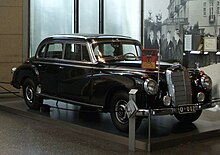
After the devastating defeat in World War II, Germany was divided into four sectors, controlled by British, French, Soviet and US forces. The UK, the US and the French decided to merge their sectors. With the beginning of the Cold War, Germany became increasingly divided into an eastern part under Soviet control and a western part which was controlled by the Western Allies. The western part was transformed into the Federal Republic of Germany (BRD for its German name), a capitalist, democratic country with Bonn as the de facto capital, which was often referred to as West Germany.
The Soviet-controlled zone became the communist/authoritarian Soviet-style German Democratic Republic (GDR - or "DDR" in German), commonly called East Germany. This encompassed the present-day Länder of Saxony , Saxony-Anhalt , Thuringia , Brandenburg and Mecklenburg-Western Pomerania . Berlin , which was geographically left in East Germany, had a special status as it was divided among the Soviets and the West, with the eastern part serving as the capital of the GDR and the western sectors of Berlin ( West Berlin ) being a de facto exclave of the Federal Republic.
The fates of East and West Germany differed markedly, in political and economic development. Thanks to Western aid, the economy and industrial base in West Germany was quickly rebuilt, resulting in the Wirtschaftswunder (economic miracle). The East became a socialist, centrally-planned economy with almost all of its economy nationalised, and increasingly lagged behind the West as this system proved much less efficient or conducive to growth. The limitations of personal freedoms, ever-present censorship and secret police as well as hopes for better economic conditions in the West led many of the East's citizens to attempt to flee to the West – even though the East Germans were on average wealthier than people in the other Soviet Bloc countries or even the Soviet Union itself.
In 1961, the Berlin Wall was erected around West Berlin as part of a heavily guarded frontier system of border fortifications to deter inhabitants from East Berlin from defecting to the more prosperous West. Today some remnants of the era are museums, such as the former prisons in Berlin-Hohenschönhausen and Bautzen . While many pieces of the Berlin Wall were destroyed or sold to enthusiasts around the world, parts have been preserved in their original location as monuments or art installations. The most widely known is the eastside gallery in central Berlin.
United Germany [ edit ]

Germany was reunited peacefully in 1990, a year after the fall and collapse of the GDR's communist regime and the opening of the Iron Curtain that separated German families by the barrel of a gun for decades. 3 October is celebrated as a national holiday ( Tag der Deutschen Einheit , "Reunification Day"). The united Berlin became the capital of the unified Germany again, and with all federal government branches gradually moving there in the 1990s.
Reunification meant that the affluent West helped the East rebuild its economy, while also accepting the willing migrants freely. This has not been without social and political tensions, but reunification is regarded as a success, with many cities of the East regaining their former glory (e.g. Dresden ) and industrial might (e.g. Leipzig ). The legacy of the GDR is still palpable in a slightly higher unemployment, a slightly lower standard of living and a more even distribution of wealth in some areas of the East. Many mementos to socialism remain, like the huge statue of Karl Marx in the city of Chemnitz . The DDR museum in Berlin offers a way to experience the peculiar, and sometimes absurd, life in the erstwhile East Germany.
While the major cities of the East are again growing, rural areas and minor towns have been hit hard, and some appear to be in terminal decline, having lost half their inhabitants to the big cities since 1990, with only elderly people remaining. However, even some places in the West are beginning to encounter problems once characteristic of the post-reunification East, such as dilapidated public infrastructure, empty municipal coffers and shrinking population figures. The overall downward trend was reversed — at least for the short term — due to the influx of refugees in 2015. There seems to be a trend of re-urbanisation driving up housing costs in major cities, but the decline of rural areas seems to be only getting worse.
Economy [ edit ]

As one of the 10 biggest economies in the world by GDP, Germany is a European economic powerhouse, and has the largest GDP in Europe. Much of Germany's economic reputation stems from the export orientation of many of its companies. Germany is known as an exporter of machinery and technology, be it consumer goods like automobiles, and machinery for all branches of industry, mining and agriculture. Creative industries, high-tech start-ups and the service sector are an increasingly important part of Germany's economic output.
A characteristic of Germany's economy is its relative decentralisation: large companies are headquartered in many different German cities and Länder , not just in or around the capital as the case in many other European countries. This means wealth is relatively widespread, living standards are high, and large cities and small towns are elegant and tidy. You can visit the factories and company museums of BMW in Munich or Mercedes-Benz and Porsche in Stuttgart . Increasingly, factories are built to include "experience centres", like the BMW and Porsche plants in Leipzig or VW's Gläserne Manufaktur in Dresden , which builds electric cars.
The global importance of the German economy and its decentralised nature are reflected in the country's transport network. Frankfurt Airport is an important European airport and Lufthansa's main hub. Other airports also have intercontinental, European and domestic flights, including those in Berlin , Munich , Düsseldorf , Cologne and Hamburg . Germany has a dense rail network which connects to neighbouring countries, much of which is made up of high-speed lines (served by Inter-City-Express trains run by state operator Deutsche Bahn). The Autobahn (motorway) network is world-famous for its quality and comprehensiveness, as well as the lack of speed limits on certain stretches. Unlike most of its neighbours, the vast majority of Germany's motorways do not have any tolls for cars. Bus companies offering low-cost alternative to airlines and railways also use the motorways.
Politics [ edit ]
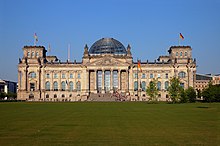
Germany is a federal republic, consisting of 16 federal states ( Bundesländer ). The federal parliament ( Bundestag ) is elected every four years in a fairly complicated system, involving both direct and proportional representation. The parliament elects the Federal Chancellor ( Bundeskanzler ), who serves as the head of the government. The Bundesländer are represented at the federal level through the Federal Council ( Bundesrat ). Many federal laws have to be approved by this council and this can lead to situations where council and parliament block each other if they are dominated by different parties. The Federal Constitutional Court ( Bundesverfassungsgericht ) has the right to pass judgement on the constitutionality of laws.
The head of state is the Federal President ( Bundespräsident ). He or she is not involved in day-to-day politics and has mainly ceremonial and representative duties. While the president lets his party membership "rest" during his time in office and the office is supposed to be non-partisan, all but one had had a clear party-affiliation prior to taking the office.
The two largest parties are the centre-right CDU (Christian Democratic Union) and the centre-left SPD (Social Democratic Party). Smaller parties are also represented in parliament. They cover a full spectrum of political views from free market economy (FDP), environmentalism (the Greens) to far left socialism (Die LInke), and the far-right populist party the "Alternative für Deutschland" (AfD).
The 16 states retain a great deal of political power, setting for example education policy, store closing hours and local rail traffic.
Demographics [ edit ]

Germany is very much a decentralised country, which does justice to the cultural differences between the regions. Some travellers will perhaps only think of beer, Lederhosen and Oktoberfest when Germany comes to mind, but Germany's famous alpine and beer culture is mostly in Bavaria and Munich . The annual Oktoberfest is Europe's most visited festival and the world's largest fair. Germany's south-western regions, however, are well known for their wine growing areas (e.g. Rheinhessen and Palatinate ) and Bad Dürkheim on the "German wine route" ( Deutsche Weinstraße ) organises the biggest wine festival worldwide with over 600,000 visitors annually.
Immigration has also played a large part in Germany since World War II, with approximately 20% of the total population being either foreign or of a 'migrant background' (Germans and non-Germans who moved to Germany after 1949 or have at least one parent who did so). Many cities have large communities of Turks, Poles, Italians as well as people from Southern and Eastern Europe or the Middle East. Immigration of various types also played a role before then, but in most cases descendants of refugees from the former German territories east of Oder and Neisse or descendants of French Huguenots are distinguished from other Germans by little more than their last name if that. Although the Jewish community was virtually wiped out by the Nazis, high levels of immigration from the former Soviet Union since its collapse in 1991 have resulted in many Soviet Jews settling in Germany. Germany again has one of the world's largest Jewish communities, and the third largest in Europe after France and the United Kingdom.
Many cities have a vibrant LGBT scene, especially Berlin and Cologne . Berlin's tourism agency and other tourism organisations actively attract gay and lesbian travellers to their cities. Laws legalising gay marriage were passed and implemented in 2017. Homosexuality is widely accepted in society. Open homosexuals have attained high political office, and even some rural and conservative places have elected openly gay mayors. Views on homosexuality have traditionally been more negative in rural areas and among blue collar workers, but even here acceptance is increasing, as is visibility. Some people of Middle Eastern descent — including urban youth — also have more negative views of homosexuals and homosexuality as do people on the extreme political right.
Holidays [ edit ]
Public holidays are called Feiertag (literally: "celebration day"). On these days, most people do not work, retail businesses are closed, and public transport tends to run at a reduced schedule. Restaurants and museums, on the other hand, sometimes open longer — or at all, if the holiday falls on a week day they would normally be closed on.
With the exception of German Unity Day, public holidays are established by the states. While many holidays are observed nationwide, a few others are specific to particular states. This is typically based on whether the state is historically Catholic or Lutheran, but it is not always apparent which is which.
- 1 January — New Year's Day ( Neujahr )
- 6 January — Epiphany ( Heilige Drei Könige ) (only in Bavaria, Baden Württemberg, and Saarland.) This is when the Sternsinger show up to paint "C+M+B" on the doors and collect money for charity
- the Friday before Easter — Good Friday ( Karfreitag ). Many Germans travel home during this period to celebrate with family. It's a "silent holiday" in most states, meaning that certain festivities are prohibited, including public dances
- A Sunday in March or April — Easter ( Ostern ), the holiday also extends to the following Monday ( Ostermontag ).
- 1 May — Labour Day ( Tag der Arbeit ) usually celebrated with parades by trade unions and leftist parties
- 39 days after Easter, normally a Thursday in May — Ascension Day ( Christi Himmelfahrt ) also known as "Vatertag" ("father's day") or "Herrentag" ("mister's day") and often celebrated by men consuming copious amounts of alcohol
- 49 days after Easter, normally a Sunday and Monday in May or June — Pentecost ( Pfingsten ), one of the few holidays celebrated on Monday. Many Germans travel home or make their first outdoor excursion of the year thanks to the late spring warmth. Many clinics or services may have extended closures due to their employees taking a long holiday.
- 60 days after Easter, normally a Thursday in May or June — Feast of Corpus Christi ( Fronleichnam ), celebrated only in southern and western Germany as well as select communes in central Germany.
- 3 October — German Unity Day ( Tag der deutschen Einheit ) — celebrating the German reunification in 1990. Every year, a city is selected where a large celebration is held. Due to the often iffy weather and the recent vintage of the holiday, there are few traditions associated with it. Hiking is popular, though.
- 31 October — Reformation Day ( Reformationstag ) — commemorating the start of the Reformation Movement by Martin Luther in 1517. Celebrated in Protestant-majority states such as northern and eastern Germany (except Berlin); now largely overtaken by Halloween in public observance
- 1 November — All Saints' Day ( Allerheiligen ) — Celebrated in Catholic-majority states in southern and western Germany (except Hessen). A "silent holiday" in some places, meaning public Halloween celebrations need to stop at midnight
- 25 & 26 December — Christmas ( Weihnachten ) Most shops close early on 24 December.
- 31 December (31 December) — New Year's Eve ( Silvester ). Not an official holiday, but stores close around midday as they do on December 24th. Big fireworks around midnight.
Some holidays are celebrated only in specific states, such as International Women's Day on 8 March in Berlin, Assumption of Mary on 15 August in most communes of Bayern and Saarland, and Children's Day on 20 September in Thuringia.
Many Germans travel at the long holiday periods of Easter, Pentecost, and Christmas. In addition, there are also summer school holidays that last 6 weeks, with states in the north already commencing in mid-June and staggered until late July in the southern states. Expect smaller businesses and clinics to be closed for extended periods and for travel to be more expensive.
A particular custom is "Brückentag" (literally "bridge day"): when a holiday falls on Tuesday or Thursday, many Germans will take Monday or Friday off to get a four day weekend, often used for short trips. Public transit operators may have slightly different schedules on Brückentage (for example: extra departures later into the night). Small family businesses may be closed entirely or have fewer staff on those days.
Electricity [ edit ]

Electricity is supplied at 230 V and 50 Hz and power failures are very rare. Almost all outlets use the common Schuko socket ("Type F", CEE 7/3), and most small appliances have the thinner but compatible Europlug ("Type C"). Travel adapters of all kinds are widely available in electronics stores, but they are often rather expensive.
Tourist information [ edit ]
- Tourist information . ( updated Feb 2024 )
Talk [ edit ]
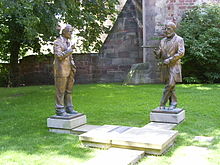
The official language of Germany is German ( Deutsch ). The standard form of German is called " Hochdeutsch " (High German). It's understood by all and spoken by almost all Germans. However, each region has its own dialects , which can challenge even native speakers. This is usually noticeable only in the south and rural areas of the north and east. Dialects remain a strong part of regional identity in Bavaria, Saxony, the southern Rhineland and Hesse, Württemberg and Baden. Generally, the Main River divides north Germany from the south in terms of both language dialects and local culture. Dialects are losing ground to some extent throughout Germany: they can be associated with ruralness, a lack of education and the prejudice that dialects impede acquisition of "proper" standard German in school.
Many Germans have learned some English at school (a compulsory subject in the West since the 1980s), so you should be able to get by. However, actual proficiency varies tremendously across social class, generational, and even geographical lines; you are just as likely to meet Germans with near-native fluency on a par with the Netherlands and Nordic countries, as you are to meet others that can barely utter a few sentences. Generally speaking, people in large and cosmopolitan urban areas such as Berlin, Hamburg, Munich, and Stuttgart speak very good English, whereas people from more industrial regions, such as much of Rhine-Ruhr, smaller urban areas (Hanover, Kiel, Münster), rural areas, and most of east Germany may not be as fluent. Younger people tend to be able to converse in English, whereas older generations tend not to speak any English at all.
It can be difficult to persuade many Germans to speak German to you if they know you are a native English speaker. Saying that you are (or pretending to be) a non-native English speaker can get around this situation. Germans fluent and confident in English usually have no issue speaking German with you.
Germans tend to be direct, and will often answer in English with short responses. Since it's polite to reply " Bitte " if someone thanks you, Germans may literally translate this with "please" instead of "here you are" or "you're welcome".
Other languages are spoken in Germany as well. A surprising number of Germans speak French , often with good proficiency. In parts of eastern Germany, a small Slavic community of 50,000 also speaks Sorbian (not to be confused with Serbian). People who grew up under communist rule in what was East Germany were taught Russian in school, and a sizeable community of immigrants from what was the Soviet Union tends to speak Russian. Turkish is spoken by many in the large ethnic Turkish community. Immigration means other foreign languages are becoming more common, such as Italian, Polish, Spanish, Bosnian, Serbian, Croatian, Montenegrin and Arabic. Many children of immigrants however do not speak the language of their parents or grandparents well or at all.
Virtually all movies and foreign TV shows are dubbed into German. Movies in English are sometimes shown undubbed in the biggest cities. Look for the letters OmU or OmengU ('Original [language] with subtitles'). An even rarer treat is a cinema showing movies without subtitles or dubbing — usually only in cities of half a million or more. Niche films and shows shown on high-brow channels like arte (a French-German channel) or 3sat (a German-Swiss-Austrian channel) may sometimes be shown with their original audio and subtitles due to the cost of dubbing niche media, but those are rare even on these niche channels. It's often possible to watch the undubbed versions of newer shows and films shown by public broadcasters online. The younger generation increasingly prefers the original audio for their entertainment (especially if high-brow) and they can be just as snooty about it as people with that kind of preference elsewhere, but the market is still oriented towards an older clientele very much used to dubbing.
Get in [ edit ]
There are a number of ways to get into Germany. From neighbouring European countries, a drive with the car or a train or bus ride are perhaps the easiest and most comfortable options; visitors from further away will probably be using air travel.
Entry requirements [ edit ]

Germany is a member of the Schengen Agreement . See Travelling around the Schengen Area for more information on how the scheme works, which countries are members and what the requirements are for your nationality. In summary:
- There are normally no immigration controls between countries that have signed and implemented the treaty.
- There are usually identity checks before boarding international flights or boats entering the Schengen Area. Sometimes there are temporary border controls at land borders.
- A visa granted for any Schengen member is valid in all other countries that have signed and implemented the treaty.
Recognised refugees and stateless persons in possession of a valid travel document issued by the government of any one of the above countries/territories (e.g., Canada) are exempt from obtaining a visa for Germany (but no other Schengen country, except Hungary , The Netherlands and Belgium , and for refugees, Slovakia ) for a maximum stay of 90 days in a 180-day period.
German citizens, including those with multiple nationalities, must enter Germany using either a German passport or German ID card ( Personalausweis ).
Citizens of Australia, Canada, Israel, Japan, New Zealand, South Korea, the UK and the US are eligible to obtain a residence permit, or Aufenthaltstitel (authorising a stay of more than 90 days and permission to work), upon arrival in Germany, but before the end of the 90-day period of visa-free entry. Before obtaining such status, they are not allowed to work, with the exception of some specific occupations (such as artists). Nationals of Honduras, Monaco and San Marino can also obtain such a permit, but this is issued only if they may not work on the residence permit. Other nationals will need to obtain a visa before if they intend to stay in Germany for longer than the 90-day period, even if they are visa-free for that period for a stay in the Schengen area, or if they intend to work.
Authorised members of the British and US military need to possess only a copy of their duty orders (NATO Travel Order) and their ID card to be authorised entry into Germany. The passport requirement, though, applies to spouses and dependents of military personnel, and they must obtain a stamp in their passports to show that they are sponsored by a person in Germany under the Status of Forces Agreement.
There are no land border controls: travel between Germany and other Schengen states, including Switzerland, is easy. However, plain-clothes officers of the German border police are known to ask travellers for their ID especially on the border between Bavaria and Austria.
When crossing a border in an international Eurocity train (especially to/from the Czech Republic and Poland) you will almost always be asked for ID.
By plane [ edit ]

Major airports and airlines [ edit ]
The most important airports are Frankfurt ( FRA IATA ), Munich ( MUC IATA ) and Berlin ( BER IATA ). Düsseldorf ( DUS IATA ), Cologne ( CGN IATA ), Hamburg ( HAM IATA ) and Stuttgart ( STR IATA ) also have many international flights. Frankfurt is Germany's main hub (as well as one of Europe's main hubs) for intercontinental flights. Munich is a growing secondary hub.
Lufthansa is the largest airline in Germany and also provides flights to many cities around the globe. Flights start or end in Frankfurt or Munich. Eurowings , Condor , and Discover Airlines also provide sizable intercontinental flights.
Many other airlines fly from their main hub to Frankfurt Airport and often also to other airports. Few countries are more than one connection away.
Frankfurt, Düsseldorf and Köln/Bonn airports are on the InterCityExpress high-speed rail network. Berlin Airport is served by local trains, S-Bahn and Intercity trains (on the Rostock-Berlin-Dresden route). Leipzig Halle airport ( LEJ IATA ) is served by both local and Intercity trains. Most other airports are either connected to the urban public transport network or have their own commuter rail station.
Lufthansa passengers travelling from Frankfurt Airport can check in at Cologne or Stuttgart train stations and travel to Frankfurt airport by ICE, dropping off their luggage at Frankfurt airport long distance railway station. Be sure to book the train journey as a Lufthansa connecting flight; otherwise you are responsible for any missed connection. All major German airports and most airlines also offer Rail&Fly , a programme that allows you to get a ticket to/from the airport and anywhere on the German rail network. Usually it has to be bought at the same time as the plane ticket, but some airlines allow you to buy it later on. For more see rail air alliances .
Minor and budget airlines [ edit ]

Flying can be the cheapest way to get to Germany and from there to other European countries. Before booking a budget flight, compare carefully as their destinations are often out of the way. After adding all the fees, taxes, and additional bus tickets to get to their airports, you might end up paying even more than you would for a discounted legacy airline ticket. A 2013 VCD (Verkehrs Club Deutschland) study found that inner-European flights are more expensive than a train ticket when booked on the same day as the flight would be over 80% of the time.
The major airports for budget airlines (esp. Ryanair and Wizz Air) are:
- Berlin ( BER IATA )
- Cologne ( CGN IATA )
- Memmingen ( FMM IATA ) – 110 km (68 mi) from Munich
- "Frankfurt"- Hahn ( HHN IATA ) – 120 km (75 mi) from Frankfurt
- Nuremberg ( NUE IATA )
- Weeze ( NRN IATA ) and
- Baden-Baden ( FKB IATA ).
Some smaller airports are former cold war military airports, far away from urban centres. "Frankfurt"- Hahn airport is a prime example for this: Despite the name, it is actually 130 km (81 mi) from the city of Frankfurt and its only public transport connection to the city is a two-hour bus route. Similarly, Düsseldorf-Weeze is 85 km (53 mi) to the south east of the city. No frills airlines are notorious for changing the airports they serve at short notice, and several airports that had dozens of flights daily have become slumbering general aviation fields.
There are budget flights from almost every city in Europe to Germany. The major budget airlines in Germany are easyJet , Ryanair , Eurowings , and Wizz Air (for flights from eastern Europe), all of which fly from many countries throughout Europe. easyJet's main hubs are Berlin-Brandenburg and Dortmund, for Ryanair Hahn and Weeze and for Eurowings Cologne/Bonn and Stuttgart. Those airlines also fly into and out of other airports but usually with a more limited choice of flights.
For budget flights from European holiday destinations , for example around the Mediterranean, some of Germany's other carriers are Condor (also from main tourist destinations throughout the world), Corendon and TUIfly . Holiday charter airlines offer (often seasonal) flights, largely from Mediterranean destinations. Almost all of them sell flight-only tickets. Antalya (Turkey) has several daily flights to relatively minor German airports during the holiday season.
Alternative airports
You can also enter Germany by flying to these airports not far away from the land border:
- To the west: Eindhoven ( EIN IATA ), Brussels ( BRU IATA ), Luxembourg ( LUX IATA ), Amsterdam ( AMS IATA ) and Maastricht ( MST IATA )
- To the south-west: Strasbourg ( SXB IATA ), Basel and Zurich ( ZRH IATA )
- To the south-east: Salzburg ( SZG IATA ), Vienna ( VIE IATA ) and Innsbruck ( INN IATA )
- To the east: Prague ( PRG IATA ), Wrocław ( WRO IATA ), Poznań ( POZ IATA ) and Szczecin ( SZZ IATA )
- To the north-west: Billund ( BLL IATA )
Business, charter & private aviation [ edit ]
If you're entering the Schengen area on a general aviation flight and would like to avoid the big international airports, there are a few regional airports that also offer customs and immigration services. The German customs agency has a list of all Zollflugplätze available on their website .
By train [ edit ]
Regular train services connect Germany with all neighbouring countries. Almost all neighbouring countries (especially Switzerland , Poland , the Netherlands , Denmark , Czech Republic and Austria ) and even some non-neighbouring countries (e.g. Italy and Hungary ) are quite well connected with "EuroCity" trains. They are a little bit slower and sometimes slightly less comfortable than the European high-speed trains but still reach speeds of up to 200 km/h. Rail is attractive to budget travellers (though budget airlines can sometimes be cheaper) and people interested in the scenery (the Rhine valley lines are particularly beautiful). Booked in advance, Deutsche Bahn sells very competitive tickets to many European destinations under their "Europa-Spezial" brand, with tickets starting at €39 (or less for short "hops" across the border) one way. You can usually book no earlier than 180 days in advance; you cannot change the train or date of travel and refunds are limited. If you miss the train that usually means the ticket becomes worthless.
Several European high-speed trains cross into and out of Germany:
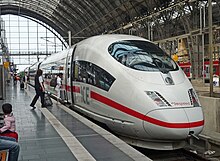
- The ICE brings you at 300 km/h top speed from Frankfurt (3.25 hr), Cologne (2.5 hr) or Düsseldorf (2.25 hr) to Amsterdam. The train journey from Frankfurt to Paris (320 km/h) using the ICE will take about four hours; going from Hamburg to Paris can take eight and a half hours. There is also an ICE line from Frankfurt to Brussels via Cologne.
- The Eurostar brings you from Cologne ( Köln ) to Paris in approximately four hours and to Brussels in about two hours.
- The TGV brings you from Marseille , Lyon and Strasbourg to Frankfurt, and from Paris and Strasbourg to Munich.
- Between Stuttgart and Milan you can travel with one stop in Zurich , the fastest trans alpine train connection. The Italian and German lines feeding into the Gotthard Base Tunnel (which opened in late 2016) are being upgraded. The German and Swiss railways plan to introduce new services along this route for the 2018 schedule.
Standard rail fares are quite high, but a number of special fares and discounts are available – see the "Get Around" section for more information. In particular, Bahncard discounts apply to an entire journey, as long as it starts or ends in Germany. If you have the time, local trains to the border on a domestic ticket might actually be cheaper, especially to/from the Czech Republic and Poland.
By boat [ edit ]
Ferries [ edit ].
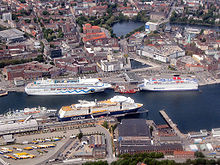
International ferry services exist, notably to Scandinavia . Some of the most popular connections are listed below:
- Lübeck and Sassnitz are connected to Kaliningrad , Saint Petersburg , Russia . Sassnitz is also connected to Rønne , Denmark and Trelleborg , Sweden.
- Kiel has connections to Gothenburg , Sweden, Klaipeda , Lithuania and Oslo , Norway .
- Rostock has connections to Helsinki ( Finland ), Trelleborg ( Sweden ) and Gedser ( Denmark ). Germany's busiest cruise port is at Rostock-Warnemünde.
- Travemünde has connections to Helsinki ( Finland ), Malmö ( Sweden ), Trelleborg ( Sweden ), Ventspils and Liepaja , Latvia
- Puttgarden is connected to Rødby , Denmark .
Ferries also cross Lake Constance to and from Switzerland .
Cruises [ edit ]
Rostock is by far the most important cruise port in the country. Other ports also see some cruises, including Hamburg and Kiel , the latter mostly for cruises passing through the Kiel Canal.
River cruises along Rhine and Danube also cross international borders. The Main Donau Kanal is popular with river cruises as it allows easy access to both Rhine and Danube and makes Nuremberg reachable by boat.
By bus [ edit ]
The German intercity bus market has grown and changed significantly since it was fully liberalised in the 2010s. Most operators have folded and Flixbus dominates both the German domestic market and international routes. France-based "Blablabus" became the first serious challenger to Flixbus after they cornered the market. Newer non-German entrants to the market include Student Agency /Regiojet from the Czech Republic. New routes appear and disappear quickly, so beware of outdated information from other sources.
By tram [ edit ]
Germany is served by two foreign tram systems with connections across the border. The Basel tram has one line to Weil am Rhein , whereas the Strasbourg tram system has a line to Kehl . As both Switzerland and France are part of the Schengen Area, there are no border controls. However, when going to/from Switzerland, you pass a customs border as Switzerland is not in the EU and thus there may be a customs inspection.
Get around [ edit ]
On the whole transportation is efficient and fast, though last minute tickets can be a bit on the expensive side. All modes of transportation are up to a high modern standard, including a dense network of airports, high speed rail services connecting most major cities and regional trains reaching almost every settlement of any size, one of the densest and best maintained highway networks on earth (with stretches where the speed limit is shrug emoji), and intercity bus services introduced in 2013.
With the Deutschland-Ticket you can ride all regional trains and the local public transport throughout Germany. The ticket costs €49 (Jan 2024) and can be used for a whole calender month. Take care, the ticket is a subscription! Still it is possible to buy it for only one calendar month. The ticket is also valid on these international routes:
- To Arnhem in the RE19 which departs e.g. from Düsseldorf
- To Venlo in the RE13 which departs e.g. from Düsseldorf
- To Nijmegen in the SB58 which departs e.g. from Kleve and Emmerich
- To Basel in the S6 and regional trains
- To Salzburg in the local and regional trains
- To Kufstein in the RB54 which departs e.g. from Munich
- To and inside Luxembourg – the public transport in the whole country is for free
- To Świnoujście in the RB23 e.g. from Usedom
The ticket is not valid in long distance trains (IC, EC, ICE, EST, Flixtrain). Journeys with "local/regional transport only" are displayed after selecting this option in the app "DB Navigator" or on bahn.de . For travellers it's recommended to buy the smartphone ticket online at Mopla : The first advantage at Mopla is that you can cancel the subscription until the second last day of the month. Click on cancel, not pause. The second advantage at Mopla is that you can pay with credit card or debit card (in addition to EU SEPA withdrawal). For the ticket inspections you need to have a government-issued photo ID like an ID card or passport.
Given the size of Germany, there are few routes where flying makes sense . High-speed rail services offer better overall travel times on all but the longest routes, and flights are almost never cheaper than other options. These days the domestic options are usually "hub-feeder" services to either Frankfurt Airport or Munich Airport . You can of course book a domestic itinerary with a connection in either of those, but that is hardly ever faster than a train. The once considerable point-to-point networks of domestic flights outside those hubs all but disappeared during the Covid pandemic (the flights were cancelled when the pandemic began and never put back on the schedule as of 2023).
Domestic flights are also more prone to cancellation or weather delays. Strikes are at least as common on airlines as they are on the railways and when only some flights have to be cancelled, domestic flights are invariably the lowest priority. Don't worry though, you might be given a voucher for a train to complete your journey regardless.
Lufthansa or its subsidiaries are the only airlines on many domestic routes. Because of a fast connection by train from Berlin to Munich offering travel times competitive with aviation, and the Coronavirus in 2020, Easyjet has withdrawn and Lufthansa scaled back its domestic flights. DB meanwhile is increasing its frequencies on many busy routes — Hamburg Berlin has a train every half-hour — and can sometimes charge "premium" fares for business travellers with few other options.
- Lufthansa has greatly reduced its domestic network. Some routes were turned over to no-frills subsidiary Eurowings, others have been replaced by trains, bookable through Lufthansa if you are booking an international flight with them
- Eurowings Lufthansa's no-frills subsidiary based in Düsseldorf flies some domestic routes in Germany
The picture is a bit different for Germany's islands, but only Sylt is served by major airlines (Lufthansa, SWISS, and Eurowings as of Aug 2022) and from any airport much farther away from the coast than their harbour. Local carriers offer scheduled and charter flights to Sylt, Heligoland and some of the East Frisian islands . Operators include:
- Sylt Air : scheduled flights Hamburg–Sylt (summer only)
- OFD (short for Ostfriesischer Flugdienst ; East Frisian flight service): scheduled flights to Heligoland from several places in Northern Germany as well as on the route Emden – Borkum .
- FLN Friesia : scheduled flights to Juist and Wangerooge .
Germany's railway system is usually fast and reliable. If you book tickets in advance (180 days before departure at the earliest) it can be surprisingly affordable. The on-time performance of regional trains is higher than that of long-distance trains. But if a long-distance train is cancelled or delayed more than 20 min at your departure station, you can simply take any other train connection to your final destination without asking any staff beforehand.
Regional trains are now run by a variety of private operators as well as Deutsche Bahn subsidiaries, but they can all be booked through bahn.com . Long distance trains on the other hand are almost exclusively run by Deutsche Bahn , with the other formidable competitor being Flixtrain , the train unit of Flixbus. Those few that aren't have to be booked through the operating company. To give you a hint of just how dense the German railway system is: the biggest town without any rail service has below 50,000 inhabitants and you've probably never heard of it. This town is called Bergkamen .
Long distance [ edit ]
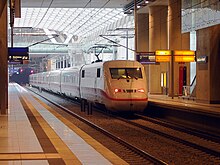
All major cities are linked by DB's ICE (InterCity-Express) and regular InterCity trains. ICE is a system of high speed trains that are capable of speeds up to 330 km/h. They can be expensive, with a 1-hr trip ( Frankfurt to Cologne , around 180 km) costing around €67 one-way (normal price "Flexpreis" without any discount). However, unlike high-speed trains in most other countries (e.g. France), taking the ICE on a "Flexpreis" fare does not require a reservation or bind you to a particular train.
If you want to save money, try for discounted Super Sparpreis or Sparpreis tickets, starting at €17.90 or €21.90, respectively regardless of distance. As those tickets are sold mainly to attract people to use less popular routes and times, you should try looking for them on off-peak times (Tuesday at noon is the time when trains are emptiest, according to statistics). You cannot change the train or departure time with the Super Sparpreis tickets and you will incur a change fee (plus fare difference) for changes to a Sparpreis ticket. However, if you miss a train due to a delay on another train you can use the next train, if you have a confirmation for the delay. With a BahnCard 25 or a BahnCard 50 you will get a 25% discount on the Sparpreis (reduced fare) tickets.
Sparpreis and Flexpreis ICE tickets include a DB City-Ticket, which gives passengers access to most local public transport networks to allow them to get to the station where they will commence their main train journey and from the station where they terminate their main train journey to their final destination (e.g. hotel). This is particularly useful if your actual origin and final destination are not covered by DB's railway network.
Seat reservations are not mandatory but are recommended, especially when you travel on weekends or holidays. This means that with an Interrail or Eurail pass you can use domestic ICE trains without a supplement (except for international ICE trains).
Next are the regular InterCity (IC) and EuroCity (EC) trains. The latter connect the larger European cities and are virtually identical to the regular ICs. These trains are also fairly comfortable, even if they lack the high-tech feeling of the ICE. The rolling stock used for IC services varies widely with both old coaches from the 1970s and 1980s and much newer ones – sometimes on the same train – as well as bilevel (Doppelstock or Dosto in German) multiple units that only entered service in 2015. Most older rolling stock, including the first two generations of ICE (dating to the 1990s) have since undergone extensive refurbishment. Eurocities on the other hand are often composed of cars from several different countries with the style and quality difference that implies.
On the major lines, an ICE or IC train will run each hour or so during the day, and even certain minor cities of tourist importance like Tübingen or Heringsdorf are connected on a daily or weekly basis. Before you shell out the money for the ICE ticket, you may want to check if it actually makes a significant time difference. ICE trains travel faster than other IC trains only on specially equipped high-speed routes. There are also long distance trains operated by other companies than Deutsche Bahn, usually running over secondary routes. Virtually all of them are marketed by Flixbus under its Flixtrain brand. Other than that international trains such as Thalys or TGV serve stations in Germany and sometimes even domestic routes to an extent. However, a number of operators have announced plans to offer some train service, especially in the sleeper train business, as DB has abandoned that service completely. Usually DB only sells tickets for other operators if a cooperation exists or if forced to by law (e.g. all regional trains). DB tickets are not usually sold by other operators either.
Regional travel [ edit ]
Regional and local trains in Germany come in several flavours:
- RE (Regional-Express). Semi-express trains, skips some stations. On many routes, this is the highest available train category.
- IRE (Interregio-Express). Basically the same as the RE.
- RB (Regional-Bahn). Stops everywhere except that it may skip some S-Bahn stops.

- S-Bahn . Commuter network for a city or metropolitan area but can travel fairly long distances. S-Bahn trains do not offer a toilet, with the exception of those in Bremen, Dresden, Hanover, Leipzig, Nuremberg and some S-Bahn Rhein-Neckar trains.
Within a region (Bundesland), it is often possible to get a statewide day ticket for unlimited rides on all regional trains and buses, many of which can also be used until the outskirts of a neighboring state. It is available as a single or group ticket. Prices for Ländertickets vary from region to region, but start generally at about €23-27 for one person and usually between €3 and €5 for any additional member of your group up to a party of five. More information is provided at the Website of Deutsche Bahn as well as in the get around section of most Bundesländer.
While regional trains are more and more operated by companies other than Deutsche Bahn and carrying a livery other than DB red, in practice this makes little to no difference as all regional trains are subject to franchising with the state prescribing everything from timetables to rolling stock and the operators receiving a subsidy as well as the ticket price. You may see ticket machines or counters for several regional train operators at stations they serve but Deutsche Bahn is - with very limited exceptions - forced to sell you a ticket for them as well and Ländertickets will be accepted there as well. While many non-DB operators follow the scheme outlined above, some chose to name their services something other than RB or RE, however they will still often follow a distinction between (semi)"express" and "local".
In general local trains have no on board food or beverage service, but sometimes a salesperson passes through the seats to sell (usually overpriced) beverages and snacks. Some lines and operators - such as Metronom - also have vending machines aboard their trains.
Group train tickets [ edit ]
It is possible to get around cheaply with regional trains when you get a small group together. There are some caveats:
- The price of the ticket usually depends upon the number of travellers with a relatively high base price and a small supplement for every other member of the group up to five. If your group consists of more than five people, contact Deutsche Bahn about special offers for larger groups.
- Those tickets are only valid on regional trains (RE, RB and S-Bahn) and some local transport (subway light rail and bus) depending on the city. Taking an ICE or IC with such a ticket is not possible.
- While some Ländertickets are available for first class (provided you pay extra) they are only valid for second class unless specified otherwise.
If you know your itinerary, you can arrange a group on the Internet, buy a ticket and get started. Group tickets can be bought through the DB Navigator app. All tickets are valid from 09:00 on weekdays and from midnight on Saturday and Sunday. Their validity usually ends at 03:00 the following day.
There are dozens of daily services between most major cities, which are often significantly cheaper than trains. Most buses offer amenities like Wi-Fi, A/C and power outlets and some can even transport bicycles. Flixbus is the biggest player. Rides of other intercity bus companies are covered in the website and app Busradar.
Apart from the intercity buses, there is a very dense network of regional and local bus lines. In rural areas, though, many lines run only once per day. Regional and local express bus line designators usually contain the letters CE (local), E (regional around Hamburg; in other areas, E is used for special runs), S (regional), SB (regional and local) or X (local within Berlin), city bus line designators may contain the letters BB ("Bürgerbus", not integrated within tariff unions), C or O. Always check the departure boards carefully: sometimes, especially at night or in rural areas, you have to order your bus by phone.
By car [ edit ]

Germany has a world-famous network of excellent roads and Autobahn (motorways) with no toll or fees for cars. Although public transport in Germany is excellent, those who choose to drive will find the road network fast and efficient as well. Like most of Europe, Germany drives on the right-hand side.
Check in advance on whether your non-German driving licence is valid in Germany. Otherwise, you may risk a heavy fine or up to one year in jail. For longer stays most foreign licences are not valid no matter what your residence status is. If you plan on driving on a longer stay (several months or years) try getting a European drivers licence that is usually valid throughout the European Union.
Always respect red traffic lights , with one exception: a green arrow board affixed to the red traffic light allows you to turn right on red. Unlike a green arrow lighting up as part of the traffic light itself, this still requires you to come to a full stop, assess the situation and yield to other traffic. In either case, you may still have to give way to pedestrians crossing the street.
Speed limits are taken seriously, with a large number of speed cameras. Speed limits are:
- Walking speed in traffic calming zones (marked by a blue/white sign showing playing kids), pedestrians have priority
- 30 km/h (19 mph) in most residential areas within cities (marked with a sign "30 Zone", "20 Zone" also exist)
- 50 km/h (31 mph) inside towns and cities (marked on entry by yellow town name sign), including "Kraftfahrstraßen" (marked by a sign showing a white car on a blue background)
- 100 km/h (62 mph) outside towns and cities
- There is no constant general speed limit on the "Autobahn" or on "Kraftfahrstraßen" for cars and motorcycles that are not towing a trailer. It's not entirely unrestricted as there are sections that have periodic or permanent speed limits and the recommended maximum speed on the Autobahn is 130 km/h (81 mph), and you should try and keep to that if you are new to high speed driving.
Autobahns, especially those with single digit numbers (connecting larger regions over longer distances) or those in or close to urban areas (e.g. Rhein/Ruhr) get very crowded starting Friday afternoon or the summer holidays. Popular thoroughfares leading south to Italy or North to the Baltic and North Sea Coast experience a certain crowding with the beginning of every state's school holidays. When planning your trip look for the beginning of school holidays and try to avoid driving on that day or the weekend following it. In winter holidays (Christmas and Carnival) the streets leading to the skiing resorts in the Alps can also get somewhat crowded which is made much worse by even moderate snowfall - particularly if it is the first snow of the season.
Parking is usually easy to find but free parking is getting rarer and rarer. While some neighbouring countries would laugh even at the highest of parking rates in Germany, the supply of cheap parking is notably lower than in the U.S. One type of free parking that is still widely available are park&ride lots (known under P&R in Germany) which are adjacent to usually rail based public transit. Some of those lots fill up in the morning and stay occupied until the evening commute but they can be almost empty on weekends. Malls and supermarkets usually have free parking for customers for the duration of their stay, but increasingly enforce parking violations such as non-customers storing their motorcar on their land or cars being left on the lot for hours on end.
Electric vehicle (EV) [ edit ]
Most charging stations in Germany are listed on the webpages of www.goingelectric.de (a network of EV-Drivers) under the point ''Stromtankstellen''. An official website is the '' Ladesäulenkarte '' of the German authority Bundesnetzagentur.
Recreational vehicle and campervans [ edit ]
German campgrounds (like most others in western Europe) usually offer a full range of amenities. You always have your own electricity hookup, and water and sewer hookups for each are common. Every campground has toilets and showers as well as kitchens, washing-machines and a spin dryer.
The yellow pages of camping, or, if you like, the German camping bible, is the ADAC Campingführer , a campground guide by Germany's largest automobile club ADAC. It lists almost all campgrounds along with prices, type of location, size, opening hours, amenities, you-name-it. Since the guide uses lots of symbols which are explained in a number of languages, it is suitable for travellers from abroad, too.
A general speed limit applies to RVs and anything towing something – even on stretches of Autobahn without a posted limit. Usually there will be a sticker on the back or your papers or rental contract will spell it out.
By carpooling [ edit ]
It's popular in Germany and the fare for a ride is often cheaper than rail. Blablacar is a popular website for arranging shared rides. International journeys can also be arranged using the site.
By hitchhiking [ edit ]
It is possible to hitchhike in Germany and most Germans speak basic English, so you will be understood if you speak slowly. Drivers rarely expect you to give them any money for the ride. The first letters of the German number plate (before the hyphen) indicate the city in which the car is registered. If you know the code for your destination, it will increase your chances of stopping the right vehicle.
It is illegal to stop on the Autobahn , but hitchhiking from service areas or petrol stations is a good way of getting long rides (100–200 km). The hard part is getting onto the Autobahn, so it pays off to sleep near the gas stations if you are going far. At the gas stations, you can get a free booklet called Tanken und Rasten with a map of the Autobahn and its gas stations. When getting a lift, agree with the driver where to get off, and make sure there is a gas station. Try to avoid the Autohof s.
It is also quite common to arrange a ride in a private vehicle in advance through on offline agency or the Internet. Offline agencies like Citynetz or ADM have offices in major cities, mostly near the city centre or the main railway station. These offline agencies charge a commission to the cost for fuel you need to pay for the driver.
Online services to arrange rides in private vehicles are very popular, as neither party pays a commission to traditional agencies. You need to contribute only towards fuel costs (example: Frankfurt to Berlin €25). You can contact the driver directly by e-mail, phone or sms. As the drivers need to be registered, it is safer than hitchhiking.
Hitchhikers is a comparable service, multilingual and free. Blablacar is another well known player with plenty of rides in its database.
By e-hailing [ edit ]
Uber, Bolt, Free Now and Sixt Ride are available in several German cities.
By taxi [ edit ]
They are expensive and often only accept cash. The conditions are usually not written on the car, so ask the driver. The rates are defined by local authorities.
By bicycle [ edit ]
Germany is, in general, bicycle friendly, with many bike lanes in cities. There is also a substantial network of well signed, long distance bike routes. The German Cycle Network ( Radnetz Deutschland ) consists of twelve official routes (D1-12). You can download GPX-tracks for each of the sections on the webpage for free.
Cyclists are expected to follow the same road rules as motor vehicles. While in theory cyclists are subject to many of the same road rules as people in cars or on motorcycles, enforcement tends to be more lenient and for instance the DUI limit is much higher (at 1.3 per mill) than the 0.5 per mille for motorists. Using a mobile phone while cycling is also a fine but not as high as with a motorised vehicle. If there is a cycleway parallel to the road posted with white-on-blue "cycle" signs (see right), cyclist must use it. These cycleways are generally one-way , unless explicitly indicated otherwise, and you may be fined for going in the wrong direction. In some towns bike lanes are marked by dark red paving stones in the main walking area. Be careful though, as cyclists and pedestrians tend to drift across these boundaries. Cycling on the sidewalk is not allowed, unless it is marked as a cycleway (there are exceptions for children younger than 10).
Most rail stations, shopping areas, hotels and business premises have bike stands (some covered) with a place to attach your own bike locking chain.
On regional trains there is usually one carriage that allows you to bring your bike on board. InterCity trains also allow taking a bike, while only a few new ICEs accommodate bicycles. Usually bringing a bike requires a separate ticket and/or reservation. For more details see Rail travel in Germany#Bicycles .
If you want to take your bike on a long distance bus you have to book several days ahead and may not be successful, as the storage room for bikes is very limited (only two or three per bus).
Several German cities now offer bike-share programmes , most run by either nextbike or Deutsche Bahn subsidiary call a bike. They are a great way to go short distances within a city but not the best option for longer tours, because the maximum rental time is usually 24 hours. Classic bike rentals still exist in many cities, as well as in smaller villages close to the coast that see many tourists. They often require a deposit or ID card for rental.
By e-scooter [ edit ]
In a number of larger cities such as Berlin, Munich and Cologne; with the right app loaded you can pick up an extricable scooter that are scattered around the streets. Run by a number of companies including Bolt , Tier , Lime , Voi , Bird and Circ . The app eScoot has all providers (except Voi) included and shows you the nearest available scooter. You must be over 14 to ride and are under the same regulations as a bicycle; that is cannot use on pavements/side-walk (only use of cycle-paths or roads) and being over the alcohol limit will affect your driving licence status. They are limited to 20 km/h, but even so are a common cause of accidents since their introduction.
See [ edit ]
Cultural and historical attractions [ edit ].
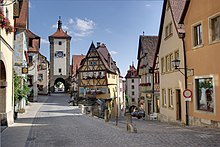
When thinking of Germany, beer, lederhosen and Alpine hats quickly come to mind, but these stereotypes mostly relate to Bavarian culture and do not represent Germany as a whole. Germany is a vast and diverse country with 16 culturally unique states that have only formed a political union since 1871. Even within states there is often considerable cultural diversity. The government of Bavaria for instance likes to talk of the three "tribes" living in the state; "old Bavarians", Franconians and Swabians. Especially the former two like being lumped together about as much as English and Scots.

If you're still looking for the cliches, the Romantic Road is a famous scenic route along romantic castles and picturesque villages. With its fairy tale appearance, the Neuschwanstein Castle could be considered the most iconic of German castles. The walled city of Rothenburg ob der Tauber has a beautiful mediaeval centre that seems untouched by the passage of time. Some similar typical German towns can be found elsewhere in the country, like Augsburg , Bamberg , Celle , Heidelberg , Lübeck , and Quedlinburg . Your picture postcard visit to Germany will be complete with a visit to the beer halls of Munich and a peek of the Alps at Garmisch-Partenkirchen . In Ulm you can visit the highest church spire in the world - the Ulmer Münster. You can also go to the lovely yet seldom visited medieval city of Schwäbisch Hall . For those who are fans of the Grimm's Fairy Tales, which include many famous ones such as Rapunzel, Rumpelstiltskin, Snow White and The Pied Piper, the German tourism board has a recommended Fairy Tale Route which takes you to places where the Brothers Grimm lived, as well as towns that were featured in the Grimm's Fairy Tales.
Germany is a modern industrial nation, and the Wirtschaftswunder is best represented by the industrial heritage of the Ruhr . Hamburg is another economic powerhouse with the second busiest port of the continent. Frankfurt is the financial centre of Germany, and of Europe as a whole, as it is the base of the European Central Bank. Its skyline comes close to those found at the other side of the Atlantic. The fashion city of Düsseldorf , media industry of Cologne , and car companies in Stuttgart each represent a flourishing sector of the German economic miracle.
A completely different experience can be found in Berlin , a city unlikely to be found anywhere else on the planet. While architecturally an odd mismatch of sterilised apartment blocks, post-modernist glass and steel structures, and some historic left-overs, it has a laid-back atmosphere and a culture of internationalism. Its turbulent history gave rise to an enormous wealth of historical attractions, among them the Berlin Wall, Brandenburger Tor, Bundestag, Checkpoint Charlie, Fernsehturm, Holocaust Memorial and Rotes Rathaus. But do not miss out the Prenzlauer Berg neighbourhood if you want to feel like a true Berliner. Kreuzberg (once famous for punks, now largely gentrified) and the delightfully named Wedding aren't far behind either.
The dark memories of the Nazi era have also made traces in Germany; see World War II in Europe and Holocaust remembrance . While the subject is a touchy one and "jokes" about the subject are a bad idea unless you know your hosts well, Germany has gone to great lengths to conserve monuments of the era as a warning and the detailed educational exhibits at places like former concentration camps, the former Nazi party rallying grounds in Nuremberg and the former seats of Nazi ministries and offices in Berlin are well worth a visit, if a chilling and depressing one.
Germany is the origin of the cuckoo clock and has dozens of clock towers dating to the 14th century. The Rathaus-Glockenspiel in Munich, for example, is one of the most famous clock towers in the world.
Germany is also home to numerous world class museums , with the Pergamon Museum on Museum Island in Berlin perhaps being the best known among them, and its neighbours the Neues Museum , Altes Museum , Alte Nationalgalerie and Bode Museum also housing world class collections. Just next to Museum Island is the Deutsches Historisches Museum , dedicated to German history. Other well-regarded museums include the Deutsches Museum in Munich and the Germanisches Nationalmuseum in Nuremberg . Car enthusiasts will be thrilled by museums run by Germany's most famous car brands, such as the Mercedes-Benz Museum and Porsche Museum in Stuttgart , and the BMW Museum in Munich.
Natural attractions [ edit ]

Due to its size and location in Central Europe, Germany boasts a large variety of different landscapes. In the north, Germany has an extensive coastline along the North Sea and the Baltic Seas in a vast area known as the North German Plain . The landscape is very flat and the climate is rough with strong winds and mild, chilly temperatures. Due to the south-easterly winds that press water into the German Bight, tidal variations are exceptionally high, creating the Wadden Sea . Vast areas of the seabed are uncovered twice a day, allowing one to walk from one of the numerous islands to another. (This should only be done with a guide.) The East Frisian Islands just off the coast are very picturesque, although mostly visited by the Germans themselves. Favourite white sand resorts along the Baltic Sea include Rügen and Usedom .

The central half of Germany is a patchwork of the Central Uplands , hilly rural areas where fields and forests intermix with larger cities. Many of these hill ranges are tourist destinations, like the Bavarian Forest , the Black Forest , the Harz , the Ore Mountains , North Hesse and Saxon Switzerland . The Rhine Valley has a very mild, amenable climate and fertile grounds, making it the country's most important area for wine and fruit growing.
In the extreme south, bordering Austria, Germany contains a portion of the Alps , Central Europe's highest elevation, rising as high as 4,000 m (12,000 ft) above sea level, with the highest summit in Germany being the Zugspitze at 2962 m (9717 ft). While only a small part of the Alps lie in Germany, they are famous for their beauty and the unique Bavarian culture. Along the country's southwestern border with Switzerland and Austria lies Lake Constance , Germany's largest fresh-water lake.
Itineraries [ edit ]
- Bertha Benz Memorial Route – follows the world's first long-distance journey by car
- Romantic Road – the most famous scenic route in Germany that starts in Würzburg and ends in Füssen
- Rheinsteig and Rheinburgenweg – Walk the high level path through some of Germany's most beautiful landscapes with spectacular views of castles above the River Rhine between Wiesbaden and Bonn or Bingen and Bonn-Mehlem.
Do [ edit ]
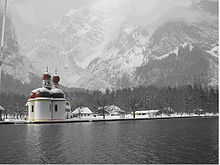
Germany offers a wide variety of activities of both a cultural and sporting nature. Many Germans are members of a sports club.
Sports [ edit ]
Germany is crazy about football ( soccer ) and the German Football Association ( DFB ) is the biggest football association in the world with 6.35 million members (8% of the German population) in more than 25,000 clubs. Many German football clubs are among the most valuable football brands in Europe, like Borussia Dortmund and FC Bayern Munich. Every village has a club and the games are often the main social event on weekends. Keep in mind that due to the nature of (a small minority of) soccer fans, there is often a heightened police-presence during games and violence is rare but not unheard of. Other popular team sports include (Olympic) handball (especially popular in the north), ice-hockey ("Eishockey"), volleyball and basketball. Motor sports are a popular visitor attraction, with many famous Formula one courses like Hockenheim and Nürburgring ("Green Hell").
Germany - particularly the North - is also one of the best countries when it comes to Handball . Teams like Flensburg, Kiel and others draw sellout crowds to their halls week in week out and produce some of the best Handball in the world.
American football is also played in Germany, enjoying a tradition that goes back to the 1970s. The German national team has won the last two European championships (2010 and 2014). While the crowds are nowhere near those of more popular sports (2,000 fans are a number many teams only get for important games) the final draws somewhere between 15,000 and 20,000 spectators and the atmosphere is relaxed with even supporters of the visiting team welcomed and the worst that can happen to you being good natured jabs at your team or its history. On Super Bowl Sunday there are a bunch of "public viewing" (that's the actual German term) events, even though it is in the middle of the night and it is a good opportunity to meet other football enthusiasts as well as the local North American expat population.
During the winter, many people go skiing in the Alps or in mountain ranges like the Harz, Eifel, Bavarian Forest or Black Forest.
One of the more popular individual sports is tennis; although it has declined somewhat since the days of Steffi Graf and Boris Becker, there are still tennis courts in many places and most of them can be rented by the hour.
Almost every medium-sized German city has a spa (often called Therme ) with swimming pools, water slides, hot tubs, saunas, steam baths, and sun roofs.
Cultural events [ edit ]
Several theatres in bigger cities play outstanding classical and contemporary plays. Germany prides itself on the wide variety of cultural events and every city works out a cultural agenda. Most theatres and opera houses receive generous subsidies to keep tickets affordable and a cheap seat can be had for less than €10 in many venues if you qualify for certain discounts.
Classical music [ edit ]
Germany is known for its several world class opera houses (especially Berlin , Bayreuth , and Munich ), and the Berlin Philharmonic Orchestra is one of the top three orchestras in the world. Germany is considered to have one of the strongest classical music traditions in Europe, with many famous composers such as Bach, Handel (called Händel before he settled in London in 1712), Beethoven, Schumann, Brahms and Wagner originating from Germany.
While France and Italy may have a longer history with opera, Germany too has developed its own unique operatic tradition. German, along with Italian and French, is considered to be a main operatic language, with many famous German-language operas having been composed by famous composers like Mozart, Beethoven, Wagner, and Strauss.
Germany has more than 130 professional orchestras – more than any other country in the world. This is a legacy of feudal times, when the country's territory was fragmented and each of the local rulers employed a separate court orchestra. Nowadays most orchestras are run by state or local governments or public service broadcasters. The biggest one is the Gewandhausorchester in Leipzig with 185 salaried musicians (however they rarely play all at the same time, parts of the orchestra accompany the opera, ballet, the Thomaner boys' choir and play its own symphonic concerts).
Musicals [ edit ]
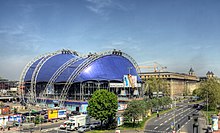
Musicals are popular in Germany. Although there are some touring productions from time to time, most shows stay in a specific city for a few years. The main 'musical cities' are Hamburg, Berlin, Oberhausen, Stuttgart, Bochum and Cologne. German performances include The Lion King , Wicked , Starlight Express and Rocky .
Theatre [ edit ]
In general, German theatres are plentiful and—compared to most other western countries—dirt cheap, as the government considers them to be "necessary" and subsidises many of them in order to make visits affordable to everyone. Even some unsubsidised theatres are still pretty affordable compared to, e.g., musicals. There are often special discounts for students or elderly people. Most plays are performed in German, but there are occasional events with plays in other languages as well. The best known German language authors can be found both in the names of many streets and in many theatres on a daily basis. Goethe, Schiller and Lessing are all household names but more contemporary authors like Brecht are also frequently interpreted and played. There is really no easy line to be drawn between German theatre and German language theatre outside Germany, so works by Austrian, Swiss, or other German-language writers and directors are also often shown on German stages and vice versa.
Shakespeare [ edit ]

Rather interestingly, William Shakespeare is perhaps nowhere more adored than in Germany — the Anglosphere included. For example the - still extant - Deutsche Shakespeare Gesellschaft dates to 1864 and thus predates any English or American Shakespeare society. This can be attributed in large part to Goethe, who fell in love with the Bard's works. If your German is up to it, seeing a performance can be very interesting. According to some Germans, Shakespeare is actually improved in translation, as the language used is arguably somewhat more contemporary. Judge for yourself.
Music festivals [ edit ]
There are some well known and large annual festivals in Germany. Rock am Ring and Rock im Park are a double festival that takes place simultaneously at the Nürburgring race track in the Eifel region and in the Volkspark of Nuremberg with a shared line-up. The Wacken Open Air (or W:O:A) in the little town of Wacken near Itzehoe is among the world's largest festivals for hard rock and metal. Then there are the Wave-Gotik-Treffen in Leipzig and M’era Luna Festival in Hildesheim for "dark" music and arts, as well as the Fusion Festival for electronic music in the Mecklenburg Lake District ).
Swimming and bathing [ edit ]
Public pools [ edit ].
Germans love swimming, bathing, and going to the sauna. Public pools come in different flavors, and even relatively small towns will often boast at least one of those.
Freibad is an open air public pool (lido), usually but not always with the water heated on the colder days. They often come with diving towers, wave pools and plenty of lawn for sunbathing. Open air pools usually charge admission per day irrespective how long you stay, but should you leave and come back later, you'll be charged admission again. The most expensive ticket option will often still cost as little as €5 per person and day, so if you bring your own picnic (no glass bottles!), the local Freibad is a great and inexpensive place to spend a hot summer day.
Hallenbad is a somewhat old-fashioned term for an indoor swimming pool, it usually hints at simple no-frills facilities used primarily for sports and teaching. Then there are Thermen , literally "thermal baths" even though most of them are unrelated to any thermal waters bubbling up from the ground. They're indoors (with perhaps an outdoor pool or two directly linked by water to the indoor pools and kept comfortably warm even in winter) and focused more on a relaxed, often elderly clientele offering health, wellness and relaxation oriented extras. A Spaßbad or Freizeitbad will usually be privately run (the others are mostly run by local government) and tend towards the pricy end. They'll invariably have slides and other "action" oriented attractions and aim towards a younger clientele. Large aqua parks ( Wasserpark or Erlebnisbad ) exist too, the most famous among them probably being the Tropical Islands park that was built inside a giant airship hangar in Spreewald south of Berlin.
In indoor pools you pay for admission by time, usually either two hours, four hours or an entire day. You'll then be issued a chip and an armband to contain the chip which tracks when you entered and may be used to pay for concessions. If you stay longer than your allotted time, you'll have to pay before leaving and the same is true for your concessions purchases. Most German indoor pools have attached saunas which are usually charged in addition to regular admission. In German saunas the rule is that everyone is naked and they are gender mixed with the exception of the occasional "women only" day or hour.
Bodies of water [ edit ]
Both of Germany's seacoasts, the Baltic Sea Coast of Germany and Germany's North Sea Coast are popular with German holidaymakers and despite the North Sea being towards the colder end (water temperatures rarely exceed 25°C even in summer and usually hover around the low 20s) they're popularly used for bathing. Most natural lakes are similarly used for bathing. Rivers are more rarely used for swimming as many of them were historically quite polluted and the local river swimming traditions died down in those times. Furthermore there is considerable danger when ships pass by as they may cause turbulence that'll drag people underwater.
More than in natural bodies of water, however, Germans love swimming in artificial lakes. Germany must hold some sort of record in the sheer amount of artificial bodies of water commonly used for recreation. The German generic term for a small bathing pond or lake, "Baggersee" (lit. digger lake ) even implies it being excavated. A lot of former sand or gravel pits have filled up with water after resource extraction was done and are now used recreationally. Then there are numerous Stauseen (reservoirs created by a dam) and finally artificial lakes like the Franconian Lake District created for water management or the results of gigantic open pit lignite mines like the Lusatian Lake District or the Central German Lake District .
In general there'll be lifeguards, concession stands and all sorts of infrastructure at the more popular swimming places. In some places there is a nigh ritualistic "anbaden" or "first swim of the season" in the dead of winter (or in other cases in the spring when water temperatures are still low, but the claim that this represents "the beginning of the season" is at least somewhat credible) with great fun for both the crazy few who actually swim and the much larger number of spectators.
Fishing [ edit ]
Fishing laws differ from state to state, but in any case you will need both a license ( Fischereischein ) to certify your competence and a permit that allows you to fish at a specific place. Obtaining the license typically requires you to pass a multiple-choice-test. In some states participation in a preparatory course is mandatory, and some states will require a practical exam too.
Permits are issued by the local authorities, and due to animal protection laws obtaining one may entail a highly bureaucratic process depending on your location. As German law dictates that every new body of water ipso facto creates a new fishing territory, the majority of canals and artificial lakes are legal and popular to fish in.
Catch-and-release fishing, where you fish with the intention of setting your catch free at the end, is illegal.
Buy [ edit ]
Money [ edit ].
Germany uses the euro , like several other European countries . One euro is divided into 100 cents. The official symbol for the euro is €, and its ISO code is EUR. There is no official symbol for the cent.
All banknotes and coins of this common currency are legal tender within all the countries, except that low-denomination coins (one and two cent) are phased out in some of them. The banknotes look the same across countries, while coins have a standard common design on the reverse, expressing the value, and a national country-specific design on the obverse. The obverse is also used for different designs of commemorative coins. The design of the obverse does not affect the coin's acceptability.
Notes larger than €100, while legal tender, aren't seen in circulation all that often and will be refused at some stores or for small purchases. Be prepared for larger notes to face more scrutiny with regards to potential counterfeits. Small shops and even a few automated machines for public transport do not accept €50 or larger banknotes.
Currency exchange has diminished greatly since the introduction of the euro, though you may still find exchange bureaux at or near major train stations and airports. Foreign currency, even from neighbouring countries, will rarely be accepted and often at pretty bad exchange rates. However, you might have some luck with Swiss francs in the immediate border area, as Germany is quite a popular shopping destination for Swiss tourists. Similarly some fast food restaurants, especially near US Army facilities, accept US dollars (again, at pretty bad exchange rates). Banks usually offer currency exchange, but they sometimes charge considerable fees for non-customers, and when changing from euros to foreign cash, advance notice may be required. Travellers checks are increasingly rare. Banks still exchange them, but just withdrawing money from regular ATMs with your debit or credit card avoids the hassle.
Most ATMs will accept credit cards. In comparison to other European countries, many ATMs charge a usage fee; however, EU legislation mandates the machine to tell you the fee before the withdrawal, either through a sticker or a notice on the screen. Your card issuer may levy their own charges regardless of or in addition to the presence of charges levied by the ATM operator; check with your issuer.
In common with most other Western European languages, the meanings of points and commas are exactly inverse to the English custom in the context of numbers; in German a comma is used as decimal separator. For example, "2,99€" is two euros and 99 cents. The "€" symbol is not always used and is virtually always placed after the price; some Germans consider the "currency sign first" notation weird. A dot is used to "group" numbers, with one dot for three digits. So, "1.000.000" is one million.
Taxes [ edit ]
All goods and services include VAT ( Mehrwertsteuer ) of 19%. The tax is always included by law in an item's price tag. Fuel, sparkling wine, spirits and tobacco are subject to higher taxes. There is a reduced VAT of 7% for hotels (but not for edibles consumed within), edibles (certain items considered luxury goods, e.g. lobster, are exempt from this reduction), print products, all short-distance public transportation and long distance trains, and admission price for opera or theatre. The precise details of whether goods or services get the full or reduced VAT rate are incredibly complicated and arcane but to give just one example, the question "eat here or takeout" you'll hear at a fast food restaurant has tax implications with takeout being taxed at 7%. Milk is taxed at 7 %, while plant-based milk substitutes aren't allowed to be called "milk" and are taxed at 19 %.
Tipping [ edit ]
In Germany tips ( Trinkgeld , literally "drink(ing) money") are commonplace in restaurants (except fast-food ones), bars, taxis and hair salons. Whilst not mandatory, it is always appreciated as a thanks for excellent service. Tips rarely exceed 10% of the bill (including tax); often the customer rounds the bill up to avoid having to deal with small change (e.g. a bill of €13.80 will commonly be rounded up to €15). The server will never propose this and even when dealing with one of the annoying €x.99 prices, they will diligently search for the copper coins to make change unless you say otherwise.
Unlike in some other countries, service staff are always paid by the hour and the minimum wage of €12.00 an hour (as of 2023) applies to service staff as well as any other profession. However, service staff is more likely to get only the minimum wage or barely above even in establishments where other jobs get higher wages. A tip is therefore mainly a matter of politeness and shows your appreciation. If you didn't appreciate the service (e.g. slow, snippy or indifferent service) you may not tip at all and it will be accepted by the staff. Americans in particular are known among service staff for being generous tippers pretty much regardless of service, so they may be a lesser priority on busy days in some places.
Tipping in Germany is usually done by mentioning the total while paying. So if, e.g., a waiter tells you the bill amounts to "€13.50", just state "15" and they will include a tip of €1.50. Alternatively, if you wish to ask them to keep the change, you may say "Stimmt so!" or simply "Danke!" .
Tipping in other situations (unless otherwise indicated):
- Taxi driver: 5–10% (at least €1)
- Housekeeping: €1–2 per day
- Carrying luggage: €1 per piece
- Delivery services: 5–10% (at least €1)
Shopping [ edit ]
Retail prices - especially for groceries - are much lower than one would expect given the GDP per capita and to some extent even compared to local wage levels. This in no small part is due to intense competition on price led by "Discounter" (that's the usual German term for a low price, no-frills supermarket) since the 1960s in the food sector and in other sectors since at least the 2000s. Germans are said to be very cost-conscious and advertisements tend to put an emphasis on price. That said, there's no upper limit for the price of high-quality or high-value goods in specialty stores.
Supermarkets [ edit ]

Chains like "Aldi", "Lidl", "Penny" and "Netto" are discount supermarkets ( Discounter ). Their range of products is limited to the necessities of daily life (like vegetables, pasta, milk, eggs, convenience foods, and toiletries), sold in rather simple packaging for tightly calculated prices. While quality is generally surprisingly high, do not expect delicatessen or local specialities when you go to shop there. Don't blame discounter personnel for being somewhat brusque; although they are paid slightly better than usual, they have to cope with a rather grim working atmosphere and a significantly higher workload than colleagues in "standard" supermarkets. Lidl and Aldi have tried to brand themselves as more "upscale" and laying focus on quality since about the mid-2010s but prices have stayed the same while new "gimmicks" such as coffee machines (€1 per drink) or freshly baked (from frozen dough) bread, rolls and other baked goods were introduced as part of that strategy.

Examples of standard supermarket chains are Rewe, Edeka, Real, Kaufland, Globus and Famila. Their prices are slightly higher than in discount supermarkets, but they have a much wider range of products (including cheap to high-end quality). Usually there are big cheese , meat and fish counters where fresh products are sold by weight. The personnel in these shops is trained to be especially helpful and friendly.
Plenty of chain supermarkets only exist in certain parts of the country or show a clear geographic focus. Norma is only found in the south, Sky only in the north and Netto "with dog" (there are two separate chains both named "Netto", one of them having a dog as their symbol) only in the north and east.
Besides those major chains, Turkish supermarkets (which can be found in virtually all west German cities) can be a worthwhile alternative since they combine the characteristics of discounters (low price levels but limited assortment) with those of "standard" supermarkets ((Turkish) specialities and usually friendly staff). Fruits and vegetables at Turkish supermarkets tend to be particularly good value for money. Other diaspora groups also own some supermarkets, but they tend to be rarer outside big cities. In Berlin you might find an ethnic enclave of many groups, but they can be harder to find even in Munich or Hamburg and non-existent in smaller cities. The East has a surprisingly large Vietnamese diaspora and "Asia Shops" of varying kinds can be found in many parts of the country. Specialised Asian food items tend to be cheaper, of better quality and more readily available here than at Rewe and co. However, the shop might not look like much from the outside and feel rather cramped on the inside.
If you are looking for organic products , your best bet is to visit a "Bioladen" or "Biosupermarkt". ( Bio- generally means organic .) There are also many farmers selling their products directly ("Hofladen"), most of them organised in the "Bioland" cooperative. They offer reasonable food at reasonable prices. Fresh produce, both organic and "regular", can also be bought at roadside stalls or (for seasonal stuff like asparagus or strawberries) at temporary stalls on store parking lots. Buying directly from producers cuts out a lot of middlemen and you'll likely get fresh, high quality goods, but finding them can be a challenge as even internet based solutions (e.g. a website listing all agricultural producers who sell directly to producers or an order online service) tend to be rather local.
Toiletries, makeup, skincare and other amenities are best bought in Drogerie (drugstore) such as dm, Rossmann and Müller, as the supermarkets do not usually provide the complete lineup. They also sell simple medicines and supplements that do not require a prescription. Common painkillers sold in drugstores elsewhere around the world such as aspirin or ibuprofen however are only sold in pharmacies as they are apothekenpflichtig (only allowed to be sold in a pharmacy). Higher doses than, for example, 400 mg of ibuprofen even require a doctor's prescription.
Be prepared to bag your own groceries and goods as well as provide your own shopping bags for doing so. While most stores provide plastic or paper as well as canvas shopping bags at the checkout, you are charged up to €1 per bag for them. Buggies/shopping carts usually have to be unlocked with a euro coin which you get back. Packing the items is like a national sport, in which the cashier simply moves them on the scanner and you need to pack them yourself and prepare your payment as fast as possible, so as not to make the person behind you impatient.
Bottle and container deposits ( Pfand ) [ edit ]
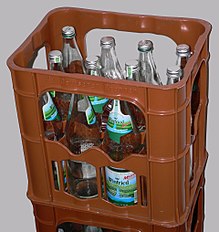
Germany has an elaborate beverage container deposit (" Pfand ") system. Reusable bottles, glass and plastic, usually cost between 8 and 25 cents Pfand per bottle depending on size and material - the actual value depends on the material but isn't always spelled out on the bottle (it will be spelled out on the receipt, though). Additional Pfand is due for matching bottle crates. The Pfand can be cashed in at any store which sells bottles, usually by means of a reverse vending machine that recognizes the bottle or crate and issues a ticket redeemable with the cashier. Unless marked as pfandfrei , single-use plastic bottles and cost 25 cents of Pfand , while multi-use plastic bottles cost 15 cents, cans and glass bottles cost 8 cents. Exempt from Pfand are liquors and plastic boxes usually containing juice or milk. There are also a few other instances where Pfand is due, for example for standardised gas containers or some yogurt glasses. Pfand on glasses, bottles and dishware is also common at discotheques, self-service bars or public events, but usually not at a students' cafeteria.
Factory outlets [ edit ]
Outlet centres as such are a rather new phenomenon, but the similar concept of " Fabrikverkauf " (literally factory sale) where products (including slightly damaged or mislabeled ones) are sold directly at the factory that makes them, often at greatly reduced prices. American style outlets not associated with a factory have become more common and Herzogenaurach for instance has outlets of Adidas and Puma (whose headquarters - but no production - are there) and of other clothing and sports companies.
Local products [ edit ]
You can find local food products (not necessarily organic) in most places at the farmer's market ("Wochenmarkt" or simply "Markt"), usually once or twice a week. While your chances of finding English-speaking sellers there may be somewhat reduced, it's nevertheless quite fun to shop there and mostly you will get fresh and good quality food for reasonable prices. Most winemakers sell their products either directly or in "Winzergenossenschaften" (winemaker cooperatives). These wines are almost always superior to the ones produced by German wine brands. Quality signs are "VdP" ("Verband deutscher Prädikatsweingüter", symbolised by an eagle) and "Ecovin" (German organic winemaker cooperative). Wines made of the most typical German wine varieties are usually marked with "Classic".
Some agricultural producers have also started to sell their produce directly to consumers, either via a small stand at the roadside (often along rural Bundesstraßen but sometimes also inside urban areas) or directly from their farm. Dairy farmers sometimes run "Milchtankstellen" (a compound noun from the German words for milk and gas station) where you can get milk from a vending machine similar to a soda fountain. All of those tend to be cash only but prices and value for money tend to be rather good.
Souvenirs [ edit ]
German honey makes a good souvenir, but only "Echter Deutscher Honig" is a guarantee of reasonable quality. Along the German coasts, smoked eel is quite a common delicacy and a typical souvenir. You can discover an astonishing number of German cheese varieties in cheese stores or in Bioläden.
Some of those products may not be taken into some other countries due to concerns about possible agricultural contamination.
Other products [ edit ]
Some German brands of high-end goods such as kitchen utensils, stationery, and hiking gear are considerably cheaper than abroad.
Cheap clothing of sufficient quality might be bought at C&A, but don't expect designer clothes. During the end-of-season sales you should also compare prices of conventional stores since they may be even cheaper than the discounters. H&M sells cheap, stylish clothing, but with notoriously awful quality.
Germany is also a good place to shop for consumer electronics such as mobile phones, tablets and digital cameras. Every larger city has at least one "Saturn" or "MediaMarkt" store with a wide selection of these devices, as well as music, movies and video games on CD/DVD. MediaMarkt and Saturn belong to the same company, but there are also independent stores and the Expert/TeVi chain. Prices are generally lower than elsewhere in Europe. English-language movies and TV shows are universally dubbed into German, and computer software and keyboards are often German-only. For photography enthusiasts, Zeiss and Leica are among the world's leading lens manufacturers, but ensure that whatever lens you buy is compatible with your camera.
Germany is justifiedly famous for world-class board games . Board games are taken very seriously as a field even of academic study: Germany boasts "board game archives", several scientific publications on the phenomenon, and the prestigious "Spiel des Jahres" ("[board] game of the year") award first awarded in 1979. Many book stores, several Drogeriemärkte of the Müller chain, and some general purpose stores will boast a board game section. In most bigger towns, there will be one or several dedicated board game stores. While games in languages other than German are hard to get, dedicated board game stores will often also have the raw materials for tinkerers to build their own board games. There are often conventions of board game enthusiasts to buy, play or exchange games.
Supermarkets sell cigarettes , but they are usually encased in a special section adjacent to the cashier, where you must ask if you want to get one. Vending machines can also be found near bus stops, but you must insert a German ID card before using it. One pack of 20 cigarettes would usually cost €5-7,50. Cheaper alternatives are roll-your-own tobacco, yet these cannot be bought in vending machines.
In nearly every city you can find a Dampfershop [vaping store] where you can get hardware or liquid , with or without Nicotine, €3-6 per 10 ml. If you stay longer buy base and aroma separate and mix by yourself, it is much cheaper. Bringing large liquid bottles with Nicotine into Germany, in particular with more than 20 mg/ml and from outside the EU, can be illegal. To be safe carry only what you need for a few days.
Opening hours [ edit ]
Opening hours vary from state to state. Some states like Berlin , Hamburg and Schleswig-Holstein have no more strict opening hours from Monday to Saturday (however, you will rarely find 24-hour shops other than at petrol stations), while most stores in Bavaria and Saarland are by law required to close between 20:00 and 06:00. With some exceptions, shops are closed nationwide on Sundays and national holidays (including some obscure ones) , including pharmacies; single pharmacies remain open for emergencies (every pharmacy will have a sign telling you which pharmacy is open for emergencies or the list can be found here ). An exception would be on special occasions called Verkaufsoffener Sonntag , in which shops at selected communes are open from 13:00 to 18:00 on selected Sundays, usually coinciding with public holidays or local events. Train stations however are allowed to and frequently have their stores open on Sundays, though usually for limited hours. In some larger cities such as Leipzig and Frankfurt , this can include an entire shopping mall that happens to be attached to the train station. Some shops in tourist areas and towns designated as a Kurort (health resort) are also allowed to have their stores open all week during tourist season.
As a rule of thumb:
- Smaller supermarkets: 08:00 - 20:00 give or take an hour
- Big supermarkets 07:00 - 22:00 or midnight
- Shopping centres and large department stores: 10:00 - 20:00
- Department stores in small cities: 10:00 - 19:00
- Small and medium shops: 09:00 or 10:00 - 18:30 (in big cities sometimes to 20:00 ). Small shops are often closed 13:00 – 15:00 .
- Spätis (late night shops): 20:00 - 23:59 or even longer, some open 24 hours, especially in big cities
- Petrol stations & their attached minimart: in cities and along the "Autobahn" usually 24 hours daily - however during night hours you might have to pay and order through a small window and night cashiers might not always speak English well
- Restaurants: 11:30 – 23:00 or midnight, sometimes longer, many closed during the afternoon
If necessary, in many big cities you will find a few (sometimes more expensive) supermarkets with longer opening hours (often near the main station). Bakeries usually offer service on Sunday mornings (business hours vary) as well. Also, most petrol stations have a small shopping area.
In some parts of Germany (like Berlin , Cologne , Düsseldorf and the Ruhr area ) there are cornershops called "Späti" oder "Spätkauf" ("latey"), "Kiosk", "Trinkhalle" ( drinking hall ) or "Büdchen" ( little hut ) that offer newspapers, drinks and at least basic food supplies. These shops are, depending on the area, open till late night or even 24/7.
Eat [ edit ]
German food [ edit ].

German food has traditionally been simple and hearty, and a typical dish will consist of meat with some form of potatoes and gravy, accompanied by vegetables or salad. That said, with an increasingly cosmopolitan Germany, as well as imports and technological advancements that have made it possible to procure new ingredients that were historically unavailable locally, a new style known as modern German cuisine has developed, particularly in fine dining restaurants. This new style has absorbed influences from other European countries such as Italy and France , making it lighter than traditional German food. Modern German cuisine has also absorbed considerable Turkish influences, due to the large number of Turkish immigrants in Germany. Dishes show a great local diversity, interesting to discover. Most German Gaststätte and restaurants tend to be children and dog friendly, although both are expected to behave and not be too boisterous.
Places to eat [ edit ]
Putting places to eat into 6 categories gives you a hint about the budget and taste. Starting from the lower end, these are:
Imbiss [ edit ]

The word Schnellimbiss (meaning 'quick snack'), Imbiss , or Grill (often with a local prefix) on a sign, indicates stalls and small shops that primarily sell fries ( Pommes Frites ) and sausages ( Wurst ), including Bratwurst . A very German variant is Currywurst : sausage chopped up and covered in spiced ketchup, dusted with curry powder. Beer and often even spirits are available in most Schnellimbisse.
Döner Kebab is a dish of veal, chicken or sometimes lamb stuffed into bread, similar to Greek gyros and Arab shawarma. Despite being considered Turkish, it was invented by Turkish immigrants in West Berlin during the 1970s. The Döner is Germany's most loved fast food, and where available is usually among the cheapest options.
Fast food giants like McDonald's, Burger King and Pizza Hut can be found in most cities. Nordsee is a German seafood chain, which offers 'Rollmops' (pickled herrings) and many other fish and seafood snacks. Many independent seafood snack-bars (most common along the German coasts) offer slightly better and slightly cheaper seafood. You can also find independent shops selling pizza by the slice.
In addition to being able to grab a sweet snack at a bakery, during the summer, it seems like ice cream shops are on every block. Try Spaghettieis for a popular sundae that is hard to find elsewhere. They press vanilla ice cream through a potato ricer to form the "noodles". This is topped with strawberry sauce to mimic the "spaghetti sauce" and usually either white chocolate shavings or ground almond nuts for "Parmesan cheese".
Bakeries and butchers [ edit ]
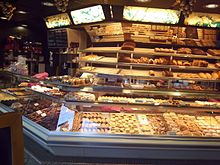
Germans do not have a tradition of sandwich shops, but you will find that bakeries and butchers sell quite good take-away food and are serious competition for the fast food chains. Even the smallest bakeries will sell many sorts of bread or rolls, most of them darker (for example, using wholemeal or rye flour) than the white bread popular around the world and definitely worth a try. Many of them also offer a variety of sandwiches and pastries, as well as a decent coffee. Larger bakeries often even have tables and chairs and serve you more or less like a Café .
Even if they don't already have it prepared, almost all butchers will prepare a sandwich for you if you ask. In some regions, butcher shops often have a "Heiße Theke" ( hot counter ), where you can get hot sausages or a slice of Leberkäs or crunchy pork roast in a bread roll. They will often have a narrow, stand-up counter along one edge, so that you have a place to put your food while you stand up and eat it. This kind of Imbiss inside a butcher shop is mainly popular in southern Germany, and the quality and freshness of food is usually high. Some butchers even offer hot meals and a place to sit down.
Canteens and cafeterias [ edit ]
If you want to sit down to eat but have little time or a limited budget, canteens and cafeterias are a good alternative to fast food restaurants. Many companies allow non-employees to eat at their canteens as do the university and college cafeterias. Another option popular with pensioners and office workers are self-service restaurants in the larger furniture stores such as XXXL or IKEA.
Biergarten [ edit ]
In traditional beer gardens in Bavaria , you can bring your own food if you buy their drinks. Most places will offer simple meals. Some Biergärten are also known as Bierkeller (literally beer cellar), especially in Franconia . As the name implies, a beer garden is in a garden. It may be entirely outdoors, or you may be able to choose between an indoor (almost always non-smoking) area and an outdoor area. They range in size from small, cozy corners to some of the largest eating establishments in the world, capable of seating thousands. Munich's Oktoberfest , which happens at the end of September each year, creates some of the most famous temporary beer gardens in the world.
Gasthof [ edit ]

Also called Gasthaus or Wirtshaus , probably 50% of all eating places fall into this group. They are mainly family-run businesses that have been owned for generations, comparable to pubs in the UK. You can go there simply for a drink, or to try German food (often with a local flavour). Food quality differs significantly from place to place but the staff will usually give you an indication of the standard. Regulations require restaurant owners to indicate usage of food additives as footnotes on the menu; a menu containing lots of such footnotes can be a sign of a chef taking shortcuts with convenience products, rather than cooking everything freshly from scratch. If a cheap "Gasthaus"/restaurant is overcrowded with Germans or Asians, this indicates at least sufficient quality (unless the crowd is thanks to an organised Bustour (coach excursion) - pay attention whether there are one or more coaches nearby). A subclass of this is the Brauhaus , where smaller breweries sell their product straight to the customer.
Restaurants [ edit ]

Germany has a wide range of flavours (e.g. German, Chinese, Japanese, Thai, Polish, Indian, Italian, French, Spanish, Greek, Turkish, Vietnamese) and almost all styles of the world are represented.
Turkish cuisine in Germany ranges from simple "Döner" shops to mostly family-run restaurants offering a wide variation of usually very cheap (in relation to German price levels) Turkish home cooking.
In most restaurants in Germany you can choose your own table. You can make reservations (recommended for larger groups and haute cuisine on Saturday nights) and these are marked by reservation cards ("Reserviert"). In expensive restaurants in larger cities you will be expected to make reservations and will be seated by the staff (who will not allow you to choose your table).
"XXL-Restaurants" are rising in popularity. These offer mostly standard meat dishes like Schnitzel or Bratwurst in big to inhumane sizes. There is often a dish that is virtually impossible to eat alone (usually bordering 2 kg!) but if you manage to eat everything (and keep it inside), the meal will be free and you'll get a reward. Unlike in other restaurants it is common and encouraged to take leftover food home.
How to get service [ edit ]
In Germany, at sit-down establishments, you usually look for a table that pleases you by yourself. Tables that have been reserved in advance will be clearly marked with a little "Reserviert" sign. You are expected to choose a table without one of those signs, but if there's none left don't hesitate to ask the staff if they can find a table for you. If it's not too busy, they will usually find a way to make some room for you in their schedule. In more expensive restaurants, it is more likely that a waiter attends you at the entrance who will lead you to a table.
When you get a table, it's yours until you leave. There is no need to hurry, but if you stay to chat, it is polite to order some coffee or another round of drinks. That said, if the restaurant is getting really crowded and people find it difficult to get a place, consider continuing your after meal conversation with your friends elsewhere.
It is also not absolutely unheard of in restaurants in the countryside, and in cities like Munich, to take a seat at a table where other people are already seated, especially if there are no other seats available. While it is uncommon to make conversation, in this case saying a brief hello goes a long way.
In Germany, the waiter or waitress is contacted by eye contact and a nod. He or she will come to your table immediately to serve you. Many service staff are university students who do it as a side gig, so the service might not always be as prompt and flawless as you could expect of trained staff. Have a bit of patience. Also keep in mind that waiters in Germany are expected to be as professional and unintrusive as possible. They will check in on you on occasion, but certainly not as frequently as they do in the United States, so be sure to ask if you need anything.
You will usually pay your bill directly to your waiter/waitress. Splitting the bill between individuals at the table is common. For tipping practices, see "Tipping" in the "Buy" section.
Table manners [ edit ]
At very formal events and in high-end restaurants, a few German customs may differ from what some visitors may be used to:
- It's considered bad manners to eat with your elbows resting on the table. Keep only your wrists on the table.
- When moving the fork to your mouth, the tines should point upwards (not downwards as in Britain)
- When eating soup or other food from your spoon, hold it with the tip towards your mouth (not parallel to your lips as in, again, Britain). Spoons used to stir beverages, e.g. coffee, should not be put in the mouth at all.
- If you have to temporarily leave the table, it's fine to put your napkin (which should have rested, folded once along the centre, on your lap until then) on the table, to the left of your plate, in an elegant little pile—unless it looks really dirty, in which case you might want to leave it on your chair.
- If you want the dishes to be cleared away put your knife and fork parallel to each other with the tips at roughly the half past eleven mark of your plate. Otherwise the waitstaff will assume you are still eating.
Typical dishes [ edit ]
Rinderroulade mit Rotkraut und Knödeln: this dish is unique to Germany. Very thin sliced beef rolled around a piece of bacon and pickled cucumber flavoured with onion and German mustard, and served with red cabbage, potato dumplings and gravy.

Schnitzel mit Pommes Frites: there are probably as many different variations of Schnitzel as there are restaurants in Germany, most of them have in common a thin slice of pork that is usually breaded, and fried for a short period of time and it is often served with fries (usually called Pommes Frites or often just Pommes ).
Rehrücken mit Spätzle: in and around the Black Forest, Bayrischer Wald and Odenwald, you can enjoy the best game in Germany. Rehrücken means venison tenderloin and it is often served with freshly made noodles such as Spätzle and a very nice gravy based on a dry red wine.

Wurst : there is hardly a country in the world with a greater variety of sausages than Germany and it would take a while to mention them all. "Bratwurst" is fried, other varieties such as the Bavarian "Weißwurst" are boiled. Here is the shortlist version: "Rote" beef sausage, "Frankfurter Wurst" boiled pork sausage made in the Frankfurt style, "Pfälzer Bratwurst" sausage made in Palatine style, "Nürnberger Bratwurst" Nuremberg sausage, the smallest of all of them, but a serious contender for the best tasting German sausage, Landjäger, Thüringer Bratwurst …. If you spot a sausage on a menu this is often a good (and sometimes the only) choice. Often served with mashed potato, fries or potato salad. The most remarkable way to prepare a sausage probably is the Currywurst (cut into slices and served with spiced ketchup and curry powder) and some variation of it can be bought almost everywhere.
Königsberger Klopse : Literally "meatballs from Königsberg ", this is a typical dish in and around Berlin. The meatballs are made out of minced pork and anchovies and are cooked and served in a white sauce with capers and rice or potatoes.
Fischbrötchen : Fish in a bread roll, a typical street food in the coastal areas. It comes in different varieties, often with soussed ( Matjes ) or otherwise pickled herring ( Bismarckhering , Rollmops ), salmon, mackerel, or tiny bay shrimps ( Krabbenbrötchen ).
Bread [ edit ]
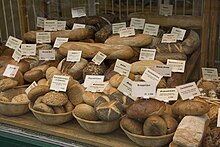
Germans are very fond of their bread ( Brot ), which they make in many variations. This is the food that Germans tend to miss most when away from home. Most people like their bread relatively dark and dense and scorn the soft loaves sold in other countries. Bakeries will rarely provide less than twenty different sorts of bread and it's worth trying a few of them. In fact, many Germans buy their lunch or small snacks in bakeries instead of takeaways or the like. Prices for a loaf of bread will range from €0.50 to €4 , depending on the size (real specialities might cost more).
Because German bread tends to be excellent, sandwiches ( belegtes Brot ) are also usually to a high standard, including in train stations and airports. However, if you want to save money, do as most locals do and make the sandwich yourself, as belegtes Brot can be quite expensive when bought ready made.
Dietary requirements [ edit ]
You will rarely find restaurants catering for special needs within Germany, although most restaurants will prepare special meals or variants for you if they are neither relying on convenience foods only nor too fancy.
Kosher and halal food [ edit ]
Muslims may want to stick to Turkish or Arabic restaurants. Kosher restaurants are common only in cities with a notable Jewish population like Berlin. For not-so-strict Jews the halal (sometimes spelled helal for the Turkish word for it) Turkish food stalls are also the best option for meat dishes.
Vegetarian [ edit ]
Veganism and vegetarianism are on the rise in Germany, and most restaurants offer one or two decent vegetarian dishes. Outside of bigger cities, there aren't many places which are particularly aimed at vegetarian or vegan customers, though. If the menu doesn't contain vegetarian dishes, don't hesitate to ask. If a seemingly vegetarian dish is not marked as such on the menu, it may be wise to confirm with the waiter, as it may well contain ingredients like chicken stock or bacon cubes.
German fast food stalls are still very meat-heavy, but at Turkish and Arab food stalls vegetarians will usually find at least some falafel and baba ganoush to suit their tastes.
Most cities have at least one organic food shop ("Bioladen", "Naturkostladen" or "Reformhaus"), providing veg(etari)an bread, spreads, cheese, ice cream, milk substitutes, tofu and seitan. The diversity and quality of these products is great and you will find shop assistants that can answer special nutritional questions in great depth. Many supermarkets now also have a small selection of vegan products such as seitan-sausages, tofu or soy milk at a reasonable price.
Allergy & coeliac sufferers [ edit ]
When shopping for foods, the package labelling in Germany is generally reliable. All food products must be properly labelled including allergens, additives and preservatives. Places that sell unpackaged food also have to provide a list of allergens, typically either on the menu (restaurants, etc.) or upon request in a separate binder (most butchers, bakeries, etc.).
With coeliac disease, be on the look out for Weizen (wheat), Mehl (flour) or Malz (malt) and Stärke (starch). Be extra cautious for foods with Geschmacksverstärker (flavour enhancers) that may have gluten as an ingredient.
- Reformhaus . 3,000-strong network of health food stores in Germany and Austria that has dedicated gluten-free sections stocked with pasta, breads and treats. Reformhaus stores are usually found in the lower level of shopping centres (e.g. PotsdamerArkaden).
- DM Stores . This retailer offering cosmetics, healthcare items, household products and health food and drinks has dedicated wheat- and gluten-free sections.
- Alnatura . A natural foods store with a large dedicated gluten-free section.
On a budget [ edit ]
Restaurants in commercial areas often offer weekday lunch specials. These are cheap (starting at €5 , sometimes including a beverage) options and a good way to sample local food. Specials tend to rotate on a daily or weekly basis, especially when fresh ingredients like fish are involved. Some restaurants offer all-you-can-eat-buffets where you pay around €10 and can eat as much as you want. Drinks are not included in this price.
Cooking by yourself costs way less than eating in any restaurant. Look for a hostel or Airbnb with a kitchen. A good variety of groceries you find in the widespread supermarkets of Lidl, Penny, Aldi, Rewe, Netto, Edeka and Kaufland. All of the named supermarkets have store brands for food, which have a high quality and a lower price than the known brands.
You get tasty fresh baked products for a low price from German supermarkets, especially before mid-day when all of them are fresh out of the oven. You get them in Lidl, Penny, Netto Marken Discount, Aldi and Rewe (not that good in "Rewe To Go").
Germany is covered by Too Good To Go . With the app you get the food of restaurants and eateries about 70% cheaper. It's in order to reduce food waste. So it's saving money and doing something good at the same time. The app can be switched to English language. You can pay for example with Paypal, credit card, Google Pay and Apple Pay.
Drink [ edit ]
Pubs are open in Germany until 02:00 or later. Food is generally available until midnight. Germans typically go out after 20:00 (popular places are already full by 18:00).
The legal drinking ages are:
- 14 - minors are allowed to buy undistilled (fermented) alcoholic beverages in a restaurant, such as beer and wine, as long as they are in the company of their parents or a legal guardian.
- 16 - minors are allowed to buy undistilled (fermented) alcoholic beverages, such as beer and wine without their parents or a legal guardian. Any drink that contains distilled alcohol (even if the overall alcohol content is lower than for a typical beer) is not allowed
- 18 - having become adults, people are allowed unrestricted access to alcohol.
Beer [ edit ]
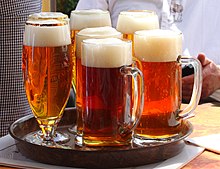
The Germans are world-famous for their beer, and have exported its production and consumption around the world.
For centuries, beer-making in Bavaria has been governed by the Reinheitsgebot (purity law) that was made national policy with the unification of Germany in 1871. It states that German beer may be made only from hops, malt, and water. Modern laws have added yeast to the list (which was unknown back then) and give some leeway for industrial brewing techniques. But any major changes to the laws that would go against the spirit of the historic Reinheitsgebot would certainly be seen as the ultimate demise of German culture.
Usually bars and restaurants serve the local varieties that differ from town to town. However, the North has less variety than the south and especially in localities that aren't specialised in beer you are more likely to get mass-produced Pilsner from the big breweries. Mirco-breweries are on the rise, though, and even the big ones have been jumping on the craft beer train, so there's a lot to discover. For those who want to experience traditional German brewing at its best, the region of Upper Franconia with its hundreds of ancient family run breweries is certainly worth a visit. The little town of Aufseß even holds the Guinness world record in breweries per capita.
For Germans, a lot of foam is both a sign of freshness and quality; thus, beer is always served with a lot of head. (All glasses have volume marks for the critical souls.)
Germans are not afraid of mixing beer with other drinks . Most commonly, beer is mixed with carbonated lemonade and called a "Radler" or "Alsterwasser". Beer mixed with cola is also popular especially among younger Germans, and "Berliner Weiße" is a local Berlin specialty that mixes wheat beer with fruity syrups.
Cider [ edit ]
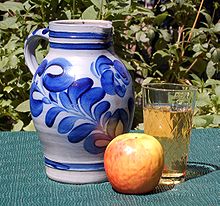
Undisputed capital of "Apfelwein" (or Äbblwoi as it is locally called) cider in Germany is Frankfurt . Frankfurters love their cider. There are even special bars ("Apfelweinkneipe") that will serve only Apfelwein and some gastronomic specialities. Cider is often served in a special jug called "Bembel". The taste is slightly different from ciders in other countries and tends to be quite refreshing. In autumn when apples are turned into cider you might find "Frischer Most" or "Süßer" signposted at some places. That is the first product in the chain of "Apfelwein" production; one glass of it is nice, but after two or three glasses you will have a problem unless you enjoy spending lots of time on the toilet. In the Saarland and surrounding regions "Apfelwein" is called "Viez". It varies here from "Suesser Viez" (sweet), to "Viez Fein-Herb" (medium sweet) to "Alter Saerkower" (sour). The Viez capital of that region is Merzig . During winter it is also quite common to drink hot cider (along with some cloves and sugar). It is considered an efficient measure against an oncoming cold.
Coffee [ edit ]
Germans drink lots of coffee . The port of Hamburg is the world's busiest place for coffee trading. Coffee is invariably freshly made from ground coffee or beans, rarely instant. However, people coming from countries with a great coffee tradition (like Italy , Portugal , Turkey , Greece or Austria ) might find the coffee that is served in normal restaurants a bit boring. A German speciality, originating from North Frisia but nowadays also common in East Frisia, is "Pharisäer", a mixture of coffee and a spirit, usually rum, with a thick cream top. A variation of this is "Tote Tante" ( dead aunt , with coffee replaced by hot chocolate).
Over the past few years, American coffee house chain Starbucks or clones have expanded into Germany, but mostly you will encounter "Cafés" which usually offer a large selection of cakes to go along with the coffee.
Glühwein [ edit ]
Visiting Germany in December? Then go and see one of the famous Christmas Markets (the most famous taking place in Nuremberg , Dresden , Leipzig , Münster , Bremen , Augsburg and Aachen ) and this is the place where you find Glühwein ( mulled wine ), a spiced wine served very hot to comfort you in the cold of winter.
Spirits [ edit ]
Korn , made of grain, is probably the most common spirit in Germany. Korn is more popular in the North, where it exceeds beer in popularity. In the South the situation is reversed. Its main production centre ( Berentzen ) lies in Haselünne, where tours and tastings can be arranged in the distilleries. A common mixture is Korn with apple juice ("Apfelkorn") which usually works out to about 20% abv. and is usually consumed by younger people. Another town famous for its Doppelkorn (with over five hundred years of tradition to boot) is Nordhausen in Thuringia, where tours and tastings are also easily arranged.
A generic word for spirits made from fruit is Obstler , and each area has its specialities. Kirschwasser literally means cherry water ; it certainly tastes of cherry but on the other hand it is not regular drinking water. There is a long lasting tradition in making spirits in Baden, and "Kirschwasser" is probably the flagship product and it might encourage you to taste other specialties such as Himbeergeist (from raspberry), Schlehenfeuer (flavoured with sloe berries), Williamchrist (pear) and Apfelkorn (apple juice and Korn).
Bavarians like their Enzian , a spirit high in alcohol that is best as a digestive after a hefty meal.
In Lower Saxony, especially in areas surrounding the Lüneburg Heath, different specialised liquors and schnaps are prominent. Ratzeputz holds 58% alcohol and contains extracts and distillates of root ginger. Heidegeist is a herbal liquer that contains 31 heather ingredients with an alcohol content of 50%. It is clear in colour and has a strong, minty taste.
In North Frisia, Köm (caraway spirit), either pure or mixed with tea ("Teepunsch", tea punch ), is very popular.
Eiergrog is a hot mixture of eggnogg and rum.
Tea [ edit ]
Herbal ( Kräutertee ) and fruit infusions ( Früchtetee ) are very popular, and supermarkets and drug stores offer an enormous selection of different flavours. The choice of tea proper ( Tee ) is somewhat more limited, but some form of (mostly bagged) black and green tea is available virtually anywhere. For the connoisseur, specialized tea shops exist in most cities, though.
The region of East Frisia is a notable exception in that it is probably the only place in Germany where tea is more popular than coffee. The traditional East Frisian tea ceremony consists of strong black tea ( Ostfriesentee ) served in a flat porcelain cup with large white rock sugar ( Kluntje ) that is put into the cup before pouring the tea. Cream is added afterwards, but is not stirred into the tea. The East-Frisian fondness for tea was made fun of in a rather infamous commercial for a certain sweet that supposedly goes well with coffee, only for the claim to be interrupted by a noisy East Frisian who would say "Und was ist mit Tee?" (And what about tea?) in a stereotypical Northern German accent. Most Germans still know this sentence, if not necessarily its origin.
Hot chocolate [ edit ]
Especially in winter, Germans love their hot chocolate ( heiße Schokolade ), which is widely available. Hot chocolate in Germany tends to be more or less Zartbitter — that is, bittersweet — and in the more gourmet establishments, it can be quite dark and bitter and only a little sweet. It is commonly served with Schlag (fresh whipped cream, also called Schlagsahne ). Although usually served pre-prepared some cafes will serve a block of chocolate that you mix and melt into the hot milk yourself.
Water [ edit ]
Many Germans prefer sparkling (carbonated) water, although regular water is also widely available and slowly gaining popularity. When ordering Wasser at a restaurant or cafe, you will typically be served a small bottle of sparkling mineral water, and ordering stilles Wasser will get you the non-sparkling variant from the same spring. Tap water is not usually served, and trying to order some may lead to confusion.
Bottled water is sold in any store that sells beverages and prices range from inexpensive 19-cent bottles (1.5 L) of "no-name" brands to several euros for fancy "premium" brands. There is not much to be gained from buying the expensive ones, though: Regulations are very strict and you will be hard-pressed to find anything other than high-quality natural mineral water ( Natürliches Mineralwasser ) on the shelves. Most people buy bottled water in crates of 12 reusable or packs of 6 single-use bottles, all of which include a returnable deposit (see section on "Pfand" above). When buying water at a supermarket, make sure you can spot the difference between still ( ohne Kohlensäure ) and sparkling water ( mit Kohlensäure )—it can sometimes be unclear unless you read the small text on the back label. To make things even more confusing, sparkling water is often sold in two degrees of sparkling: one with more CO 2 (usually called spritzig or classic ) and one with less CO 2 (usually called medium ).
Wine [ edit ]
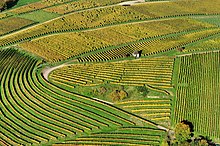
Some Germans are just as passionate about their wines ( Wein ) as others are about their beer. The similarities don't stop here; both products are often produced by small companies, and the best wines are consumed locally. The production of wine has a 2,000-year-old history in Germany as may be learned from the Rheinisches Landesmuseum in Trier but, of course, this was a Roman settlement at that time. Sunshine is the limiting factor for the production of wines in Germany and, therefore, wine production is limited to the south. White wine plays a main role in wine production, but some areas produce red wines (Ahr, Baden Württemberg). White wines are produced from Riesling, Kerner and Müller-Thurgau grapes (there are many more), and produce generally fresh and fruity wines. German wines can be rich in acid and are quite refreshing. It is generally accepted that Riesling grapes produce the best German wines, but they demand a lot of sunshine and they grow best in very exposed areas such as the Mosel, Rheingau, Bergstraße, Kaiserstuhl and Pfalz.
Germany is known for its ice wine ( Eiswein ), in which the grapes are left to freeze on the vines before being harvested. German varieties of ice wine are generally less sweet than their Canadian counterparts.
The best way to learn about wines is to go to the place where they are grown and taste them on the spot. This is called " Weinprobe " and is generally free of charge - though in touristed areas you have to pay a small fee.
Good wines usually go together with good food so you might like to visit when you are hungry as well as thirsty. The so-called Straußenwirtschaft , Besenwirtschaft or Heckenwirtschaft are little "pubs" or gardens where a wine-producer sells his own wine, normally with little meals such as sandwiches or cheese and ham. Normally, they are open only in summer and autumn, and not longer than 4 months a year (due to legal regulations). As they are sometimes in the vineyards or in the back streets, they are not always easy to find, so you'd best ask a local for the next (or best) Straußenwirtschaft he knows.
Sleep [ edit ]
Germany provides almost all options for accommodation, including hotels, B&Bs, hostels, and camping. You might also consider staying with members of a hospitality exchange network.
German mattresses tend to take a middle ground for firmness, compared to plush American ones and hard Japanese ones. The bedding tends to be simple: a sheet to cover the mattress, one duvet per person ( Decke , very nice if you sleep with someone who tends to hog the blankets, but sometimes a little breezy around the toes for tall people) and an enormous square feather pillow, which you can mold into any shape that pleases you. Making the bed in the morning takes mere seconds: fold the Decke in thirds with a quick flick of the wrists, as if it were going to sleep in your place while you are out, and toss the pillow at the top of the bed.
Hotels [ edit ]
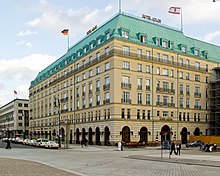
Most international hotel chains have franchises in the major German cities, and a large variety of local hotels exist. All hotels in Germany are ranked by stars (1 to 5 stars). The rankings are made independently and are therefore generally reliable, but in some cases they may be based on rather outdated inspections. The rate always includes VAT and is usually per room. Prices vary significantly by city ( Munich and Frankfurt are most expensive). You can find many "value-oriented" chain hotels like Motel One or Ibis , both in the suburbs and city centres of most cities, which are often quite new or renovated and surprisingly nice for the price. For people who travel by car, much like France, Germany has a dense network of Ibis Budget hotels at the outskirts of cities near Autobahns, offering a truly bare-bones hotel experience at prices that can compete with hostels.
On the other end of the scale, Germany has many luxury hotels. The market penetration by hotel chains is high. Local brands include the ultra-luxury Kempinski (a global brand), while Dorint and Lindner operate upscale business hotels. Most global hotel chains have solid presence, with Accor (Sofitel, Pullman, Novotel, and Mercure) leading the way.
It is not a cliche that you can count on German hotels delivering quality and a predictable experience. You may not get pampered if the brochure doesn't say so, but it is very rare that your experience will truly be bad. Moreover, German domestic tourism is quite family-oriented, so you should have no trouble finding family-friendly hotels with extra beds in rooms, often in the form of a bunk bed, and amenities for your younger ones.
When the name of a hotel contains the term "Garni", it means that the breakfast is included. So there can be a good number of hotels whose name contains " Hotel Garni " in a city; when asking directions, mention the full name of the hotel and not only " Hotel Garni ".
Bed & Breakfast [ edit ]
B&Bs ("Pensionen" or "Fremdenzimmer") (usually) provide less comfort than hotels for cheaper prices. The advantage is that you are likely to meet Germans and get a touch of the German way of living. A sign saying "Zimmer frei" indicates a B&B with a room available.
Hostels [ edit ]

Hostels provide simple, budget accommodation primarily in shared rooms. They are good places to get to know other travellers. In Germany, as in many countries, two types exist: international youth hostels and independent hostels.
International Youth Hostels ("Jugendherbergen") are owned and run by the association "Deutsches Jugendherbergswerk" (DJH) , which is part of the Hostelling International (HI) network. There are more than 600 hostels spread all over Germany in big and small cities and in the countryside. Not only individual travellers are guests but also school classes and other youth groups. To sleep there, you have to be or become a member in a youth hostel organisation belonging to the HI network . Detailed information about this and each of their hostels can be found on the DJH's. Generally, this entails simply filling out a card and paying a few extra euros per night. In general, the advantage of these places is that they tend to serve a buffet style breakfast for no additional charge, though this is not an absolute rule. However, the quality is often below that of private hostels, and many do not provide a good opportunity for socialising.
Privately run independent hostels are starting to be an attractive alternative for a similar price. More than 60 already exist in Germany, and more and more open every year. They are found in bigger cities, especially in Berlin , Munich , Dresden , and Hamburg . Only a few are in the countryside. Sometimes run by former travellers, hostels refrain from having strict rules. Especially small ones are frequently places where you can feel at home. Many are known for their vibrant, party atmosphere and can be an excellent way to meet other travellers. There is no need to be a member of some organisation to stay there. About half of the hostels have organised themselves in a "Backpacker Network Germany" [dead link] , which provides a list of their members hostels. Of course, international room booking agencies such as Hostelsclub, Hostelworld & Hostelbookers are also good resources, and give travellers the ability to leave reviews. A & O Hostels/Hotels have a number of quality central city locations in Germany providing an interesting blend of hostel and hotel style accommodation usually catering for young adults and families.
Camping [ edit ]

There are countless campsites in Germany. They vary significantly in the infrastructure and standard. The ADAC, the German automobile club, offers an excellent guide for most German camping grounds.
Some travellers just put up their tents somewhere in the countryside. In Germany this is illegal (except in Mecklenburg-Vorpommern), unless you have the landowner's permission. Practically however nobody cares as long as you are discreet, stay for one night only and take your trash with you. Be aware of hunting ranges and military practice grounds or you could be in significant danger of being shot.
Learn [ edit ]

German universities are competitive with the best in the world. In general, Germans do not think much about the relative quality of one German university compared to another, but state-owned ones are usually deemed more prestigious than private ones and older ones more than younger ones. There has been an "Excellence initiative" by the federal government to honour the most prestigious universities and give them extra funding, however the funding was strictly given on the basis of their research not their teaching and is often limited to a few select departments. One of the best known universities in Germany among English-speakers Heidelberg University ( Ruprecht-Karls-Universität Heidelberg ), which is also Germany's oldest university.
Since the vast majority of the universities are state-owned, studying in Germany is usually very cheap (€50–700/semester), but the cost of living in most of Germany is quite high (for example Tübingen : €350–400 rent per month for a one-room apartment and living expenses) with rent being the major factor. Because of this, most students either share a flat or live in a dormitory. Dormitories also often consider the financial situation of the applicants and decide accordingly.
Whereas admission to German universities is straightforward for EU nationals, prospective students from non-EU countries may face bureaucratic hurdles such as being asked to provide proof that they can cover their own expenses. Due to the demand for young skilled workers, the German government is encouraging foreign students from countries such as USA and India, with more universities offering courses in English. There are very few scholarships easily available to foreigners, "classic" student loans are atypical and "duale Studiengänge" (working and studying at the same time earning a professional and an academic degree) tend to pay less than comparable entry level jobs, especially considering the workload involved. Many Universities were founded centuries ago and have long outgrown the buildings originally built for them and thus having a coherent campus is the exception rather than the rule. Still, many universities try to at least keep related fields close to each other, but if you happen to study a combination of subjects that are taught at different parts of town, or even in different towns, you'll have to do quite a bit of commuting. Some universities are also the result of mergers and thus have locations in different towns. Offices of student advice or university administration can have odd opening hours or may even be closed entirely outside the semester. It is also not unheard of that they'll rather gruffly tell you that you should go to some other office: they mean you no harm, they are just overworked and don't want to deal with stuff that isn't their job.
While the German university system used to have many unique quirks, in the course of the "Bologna Process" most subjects are now offered in the EU-wide "Bachelor/Master" system which is, compared to the earlier system, rather school-like and streamlined. Nevertheless, more self-initiative is expected at German universities than in many other places. Help with problems is not "automatic" and newcomers may feel a little left alone in the beginning. "Fachhochschulen" or sometimes simply "Hochschulen" (often calling themselves "Universities of Applied Sciences" in English) tend to focus on "practical" or "applied" fields and are even more school-like. While "FH" (the German short-form) used to be seen as a "lesser" grade of university, that stigma is fading in many fields.
- German Academic Exchange Service
- Goethe-Institut offers German language courses
Work [ edit ]
The unemployment rate in Germany is 5.1% as of February 2022 and there are jobs for those with the right qualifications or connections. Non-EU foreigners wishing to work in Germany should make sure they secure the proper permits. Getting these permits can mean extended dealings with the distinctly Germanic bureaucracy, especially for non-EU citizens, and so may not be a practical way to help your travelling budget.
Non-EU students are permitted to work on their residence permits, but there is a limitation of 120 full (more than four hours worked) days per year or 240 half-days (under 4 hours worked) without special authorisation. Working through one's university, though, does not require a special permit.
Citizens of some non-EU countries (Australia, Canada, Japan, Israel, New Zealand, South Korea and the US) can apply for resident status with a work permit during their 90-day visa-free stay in Germany; however, they may not work without a visa/authorisation. Other nationals require a work visa before entering the country, which they need to exchange into a residence permit after entry. For more information, see the 'Entry requirements' subsection of the 'Get in' section above. Illicit work is rather common in the German hospitality and tourism industry (about 4.1% of the German GDP) and virtually the only way to avoid the German bureaucracy. Being caught, however, can lead to a prison sentence, and you are liable to your employer to almost the same extent as if you worked legally.
If you want to stay in Germany for an extended period of time, but do not speak German, your best bets are large multinational companies in the banking, tourism or high-tech industries. Frankfurt , Stuttgart , Munich and of course Hamburg and Berlin are likely the best places to start looking. A good knowledge of German is usually expected, but not always a prerequisite. English speakers who are certified teachers in their home countries might be able to secure work at American or British international schools. English teaching without these qualifications is not lucrative in Germany. If you are fluent in other languages (preferably Spanish or French) teaching on a private basis may be a (additional) source of income.
During the asparagus season (April to June) farmers are usually looking for temporary workers, but this means really hard work and miserable pay. The main advantage of these jobs is that knowledge of German is not required.
In Germany, the government collects tithes on behalf of the churches and synagogues in the form of a "church tax", meaning that it is standard practice (and perfectly legal) for your employer to ask for your religion. If you are not Christian or Jewish, you do not have to pay this tax.
Stay safe [ edit ]
Germany is a very safe country. Crime rates are low and the rule of law is strictly enforced.
Violent crimes (murders, robberies, rapes, assaults) are very rare compared to most countries. For instance, 2010 murder rates were 0.86 cases per 100,000 inhabitants — significantly lower than in the UK (1.17), Australia (1.20), France (1.31), Canada (1.81) and the US (5.0) – and they continue to decline. Pickpockets may sometimes be an issue in large cities or at events with large crowds. Begging is not uncommon in some larger cities, but to no greater extent than in most other major cities and you will rarely encounter aggressive beggars.
If you're staying in certain parts of Berlin or Hamburg around 1 May (Labour Day) expect demonstrations that frequently degenerate into clashes between the police and a minority of the demonstrators.
Take the usual precautions and you will most likely not encounter any crime at all while staying in Germany.
Emergencies [ edit ]
The nationwide emergency number for the police, fire and rescue services is 112 (same as in all EU countries) or 110 for police only. These numbers can be dialled toll-free from any phone, including phone booths and mobile phones (SIM-card required). If you are reporting an emergency, the usual guidelines apply: stay calm and state your exact location, the type of emergency and the number of persons involved. Do not hang up until the operator has received all required information and ends the call.
There are orange emergency telephones interspersed along the main motorways. You can find the closest SOS-phone by following arrows on the reflection posts at the side of the road.
Ambulances (Rettungswagen) can be summoned via the national toll-free emergency number 112 and will help you regardless of insurance issues. If an emergency physician (Notarzt) is required, they will typically arrive in a separate vehicle. All hospitals (Krankenhäuser) except for the smallest private ones have 24-hour emergency rooms able to cope with all kinds of medical problems.
Racism [ edit ]
The overwhelming majority of foreign visitors will never deal with issues of open racial discrimination or racism in Germany. Virtually all cities in Germany are some of the most cosmopolitan and multi-ethnic in the world, with large communities of people from all continents and religions. Public displays of overt anti-Semitism are strictly forbidden by laws that are very much enforced. Most Germans are also very aware and ashamed of the historical burden of the Nazi era and are usually open-minded and tolerant with foreigners. Non-white visitors may get an occasional wary look in rural areas, but not to a greater extent than in other countries with a predominantly white population.
This general situation may be different in some predominantly rural parts of East Germany, including the outskirts of some cities with higher unemployment levels and high rise neighbourhoods, e.g., "Plattenbau". Incidences of racist behaviour can occur with a few incidents of violence. Most of these happen at night when groups of drunken "neo-Nazis" or some migrant groups might look for trouble, and solitary victims, in city centres or near public transport stations. This might also affect foreign visitors, homeless persons, West Germans and people with alternative looks such as punks and goths.
Police [ edit ]

German Police (German: Polizei ) officers are always helpful, professional and trustworthy, but tend to be rather strict in enforcing the law, which means that one should not expect that exceptions are made for tourists. When dealing with police you should remain calm, courteous and avoid getting into confrontations. Most police officers should understand at least basic English or have colleagues who do.
Police uniforms and cars are blue. Green used to be the standard, but all states and the federal police have transitioned to blue uniforms and cars to comply with the EU standard. This process is almost complete, only very few vehicles are still green.
Police officers are employed by the states except in airports, train stations, and border crossings, which are controlled by the federal police ( Bundespolizei ). In mid-sized towns and big cities, local police (called Stadtpolizei , kommunale Polizeibehörde or Ordnungsamt ) have some limited law enforcement rights and are in general responsible for traffic issues. States have a pretty big leeway when it comes to police and their tactics and as most police are state police, there is a marked difference between left-wing city states like Berlin and conservative southern states like Bavaria. As a broad generalisation, police in the north tend to be more hands-off and tolerant of minor misbehaviour while police in the south show more presence and are stricter about the rules, but you may get fined for jaywalking in Berlin just as well. The only major cases of police using violence on citizens (or vice versa) happen during demonstrations and soccer games, but you will notice that by the riot gear and mounted police patrolling in seemingly vastly excessive numbers. It's not advisable to talk to police during political demonstrations or soccer matches as they might construct a case of " Landfriedensbruch " (disturbing the peace) during such events on pretty flimsy grounds, sometimes misrepresenting what you said. Police are armed but will hardly ever use their weapons and never on unarmed people. As firearms are hard to get and a permit to carry one in public is virtually unheard of, police usually do not think anybody is armed unless the suspect brandishes a weapon and are thus unlikely to shoot somebody reaching in their pocket or the likes.
If you get arrested, you have the right to have an attorney. Foreign nationals also have the right to contact their respective embassy for assistance. You are never obliged to make a statement that would incriminate yourself (or someone related to you by blood or marriage) and you have the right to remain silent. Wait until your lawyer arrives and talk to your lawyer first. If you do not have a lawyer then you can call your embassy or else the local justice official will appoint a lawyer for you (if the alleged crime is serious enough).
If you are a victim of a crime (for example robbery, assault or theft in public) and wave an oncoming patrol car or officer, it is not uncommon that the officers will (sometimes very harshly: " Einsteigen ") command you to enter the back seat of the police cruiser. This is an action to start an instant manhunt to identify and arrest the suspect. In this case remember that you are not under arrest but to help the officers to enforce the law and maybe get back your property.
German police do have ranks but are not that keen about them; many Germans won't know the proper terms. Do not try to determine seniority by counting the stars on the officers shoulders in order to choose the officer you will address, since such behaviour can be considered disrespectful. Talk to any officer and they will answer your questions or redirect you to the officer in charge.
Prostitution [ edit ]
Prostitution is legal and regulated in Germany.
All larger cities have a red light district with licensed bars, go-gos and escort services. Tabloids are full of ads and the internet is the main contact base. Brothels are not necessarily easily spotted from the streets (outside of red light districts) to avoid legal action by neighbours. Places best known for their redlight activities are Hamburg , Berlin , Frankfurt and Cologne .
Recreational vehicles parked by the roadside in forests along Bundesstraßen (German for "federal highway"), with a red light in the front window and perhaps a lightly dressed woman on the passenger's seat, are most likely prostitutes soliciting customers.
Due to Germany's proximity to Eastern Europe, several cases of human trafficking and illegal immigration have taken place. Police regularly raid brothels to keep this business within its legal boundaries, and check the identity documents of workers and patrons.
Drugs [ edit ]
Alcohol may be purchased by persons 16 years and older. However, distilled beverages and mixed drinks with those (including the popular 'Alcopops') are available only at 18. It is not illegal for younger people to drink, but it is illegal to allow them to drink on premises. Youth 14 years and older are allowed to drink fermented beverages in the presence and with the allowance of their legal guardian. If the police notices underage drinking, they may pick the person up, confiscate the drinks and send the person home in the presence of an officer.
Smoking in public is allowed starting at age 18. Vending machines for cigarettes require a valid "proof of age", which in practice means that you need a German bank card or a (European) driving licence to use them.
The situation on marijuana can be confusing. The Constitutional Court ruled that possession for "personal use", though still illegal, should not be prosecuted. Germany is a federal state; therefore the interpretation of this ruling is up to the state authorities. In fact charges are sometimes pressed even for tiny amounts, which will cause you a lot of trouble regardless of the outcome. As a general rule the northern states tend to be more liberal while in the south (especially Bavaria), even negligible amounts are considered illegal. The customs officials are also aware of the fact that you can legally buy marijuana in the Netherlands and therefore set up regular border controls (also inside trains), as importation of marijuana is strictly prohibited.
Even if you get off the charges, the authorities may cause different problems, like revoking your driving licence and if you have more than a few grams, you will be prosecuted in any case. Drugs will be confiscated in all cases.
All other recreational drugs (like ecstasy) are illegal and possession will lead to prosecution and at least a police record.
Crimes with date-rape drugs have been committed, so as anywhere else in the world be careful with open drinks.
Weapons [ edit ]
Some types of knives are illegal in Germany: this includes gravity knives, butterfly knives, knuckle knives, and the like, as well as most switchblades — possessing such knives is an offence. Possession of other knives that are intended as weapons is restricted to persons over 18.
Beyond the above, any knife with a fixed blade longer than 12 cm, as well as locking folding knives that can be opened with one hand, are considered dangerous. Mere possession of these is not illegal, but you may not carry them on your person in public unless you have a valid reason to do so. For example, while you are out fishing you are still entitled to carry a fishing knife on your belt. A chef's knife is fine in the kitchen, but if you want to transport it on the U-Bahn, it needs to be stowed away securely. Self defence is not a valid reason to carry such a knife.
In daily life, carrying anything beyond a regular Swiss army knife without an obvious professional reason to do so is inadvisable. Germans will consider it very rude, as they see it as a sign of aggression. Flashing a knife (even folded) may cause bystanders to call the police, who will be very serious in handling the upcoming situation.
Firearms are strictly controlled. It is practically impossible to legally carry a gun in public unless you are a law enforcement officer. "Fake" firearms may not be carried in public if they resemble real guns. CO 2 and air guns are relatively easy to acquire. If the police find any kind of weapon or firearm on you, you will appear highly suspicious.
Bows and arrows do not legally count as weapons while crossbows do, but you're certain to get stopped by police openly carrying either. Hunting is only legal with firearms or employing birds of prey and requires a licence with rather strict requirements for environmental and animal welfare reasons. Furthermore, nunchakus, even soft-nunchakus, are illegal to possess in Germany.
Fireworks [ edit ]
Avoid bringing any fireworks into Germany, especially from outside the EU. Even bringing those can be an offence. Fireworks are traditionally used on New Year's Eve. Most "proper" fireworks (marked as "Klasse II") will be available at only the end of the year; they may be used by persons only over 18 on December 31 and January 1. Really small items (marked as "Klasse I") may be used around the year by anyone.
Gay and lesbian travellers [ edit ]
Germany is in general very tolerant of homosexuality, with openly gay politicians and celebrities being considered increasingly normal. Nevertheless, like in every country some individuals still may disapprove and some areas are more accepting than others, so use common sense and be geared to the behaviour of the locals around you. In small towns and in the countryside, open displays of homosexuality should be limited.
Wild animals [ edit ]
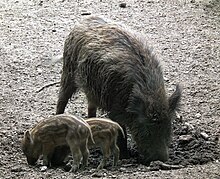
Today, wild animals, although they abound, are mostly very shy, so you might not get to see many. A few wolves in Saxony and Pomerania and a bear in Bavaria have been sighted.
The most dangerous animal in Germany's forests is by far the wild boar; in particular, sows leading young are nothing to joke about. Wild boar are used to humans, since they often plunder trash cans in villages and suburbs, and their teeth can rip big wounds. Boars are even found on the outskirts of cities like Berlin where they can be found scavenging for food at night. If a boar, particularly a mother with young children, thinks you are a threat to it or its family, it will charge you and it can seriously harm or even kill an adult human by charging. Do not try to outrun a charging boar, but slowly walk in the opposite direction while still facing the animal. Try to climb up a tree if possible.
The poisonous crossed viper can pose a threat (in the Alpine region and natural reserves), though they are rare. Don't provoke them.
The most underrated dangerous animals in German woods are ticks, as they can transmit serious diseases. Rabies is also a remote possibility – see the section on diseases below.
Swimming [ edit ]
Many lakes and rivers, as well as both the North Sea and Baltic Sea are generally safe for swimming. Nevertheless, while there may be no life-threatening pollutants in most bodies of water, you would do very well to inform yourself about local regulations. If you intend to swim in a large river, at best do so only on official bathing locations. Keep away from structures (power plants might cause streams you don't see from the surface) in the river or reaching from the shore into the river, also keep out of the path of ships. Both structures and ships, even if they look harmless or far away, may create major sucks underwater. Take particular care of children.
If you intend to swim in the North Sea you should inform yourselves about the tide schedules and weather conditions – getting caught in a tide can be fatal, getting lost in the mist, too. Hiking in the Wattenmeer without a local guide is extremely dangerous. In the Baltic Sea, on the other hand, there are virtually no tides.
Stay healthy [ edit ]
Sanitary and medical facilities in Germany are excellent. See the section on emergencies above if you are in an emergency.
Health care [ edit ]
If you have an non-urgent medical problem, you may choose from any local doctor. The German health system allows specialists to run their own surgery so you will usually be able to find every discipline from dentistry to neurology on duty within reasonable reach. In remote regions finding a doctor might require a ride to the next town but the German infrastructure allows fast connections. GPs/family doctors will usually describe themselves as "Allgemeinmediziner", meaning "general medical doctor".
Medication [ edit ]

Pharmacies are called "Apotheke" and are marked by a big, red "A" symbol. This is where you get prescription drugs as well as over-the-counter medications such as aspirin, antacids, and cough syrup. You will not find these in grocery stores, nor in a "Drogerie" like dm, Rossmann, or Müller: these "drug stores" may only sell you things like vitamins, herbal infusions, and traditional remedies.
There can be a significant price difference between the name brands and equivalent generic drugs with the same active ingredients, so it may well pay off to ask for a "Generikum". Antibiotics and some other drugs that are freely available in other countries need a prescription in Germany.
The staff of an Apotheke is well-trained, and it is mandatory to have at least one person with a university degree in pharmaceutics available in every Apotheke during opening hours. A German pharmacist is qualified to offer advice on medications. Outside regular opening hours, at least one pharmacy in the area will be open at all times (usually a different one every day), and all pharmacies will post the name and address of the pharmacy-on-duty in the window.
Health insurance [ edit ]
EU citizens who are members of any public health insurance can get a European Health Insurance Card . The card is issued by your insurance provider and lets you use the public health care system in any EU country, including Germany.
If you're from outside the EU, or if you have a private health insurance, check if your insurance is valid in Germany. If not, get a travel health insurance for the trip; German health care is expensive.
Foreign insurance, even if it covers travel abroad, may not be accepted by local hospitals.
In any somewhat urgent case you will be treated first and asked for insurance or presented a bill later.
Drinking water [ edit ]
Tap water ( Leitungswasser ) is of excellent quality, and can be consumed with little concern. There is no chlorine taste to it, and often tap water is of better taste and quality than bottled water elsewhere on the planet. However, in some regions, tap water has elevated nitrate content and should not be consumed by women in early stages of pregnancy for any prolonged period.
Any public source of non-potable water has to be clearly marked with the words "kein Trinkwasser" or a symbol showing a glass of water with a diagonal line through it. You may find these for example in public toilets, on planes or trains or decorative fountains. If there is no sign and the surroundings don't indicate otherwise, it is safe to assume that the water is safe for human consumption.
Diseases [ edit ]

In general, Germany is a low risk area for infectious diseases . However, two tick-borne diseases have become a growing concern. In some parts of Germany there is a (low) risk of contracting tick-borne encephalitis . Especially in the South, vaccination is advised if you plan out-door activities. Lyme disease is prevalent throughout the country and vaccination is not available. After spending time in nature, it is thus advisable to thoroughly check your body for ticks. Long clothes and chemical repellents can offer some additional protection but should not be relied upon for activities like hiking or mushroom-hunting. See Pests#Ticks for advice on tick removal and if in any doubt do not be afraid to consult a doctor.
Toilets [ edit ]
Peeing or even defecating in public is illegal. Yet it can be surprisingly hard to locate a public toilet when needed. They are usually indicated by the letters WC or pictograms. Doors to sex-separated facilities may bear the letters "H" (Herren; gentlemen) or "D" (Damen, ladies). Public toilets are rarely free. Sometimes you have to be a customer at the place they're attached to, sometimes there's an attendant and a "tip plate" to guilt trip you into paying money that may or may not be handed on to cleaning personnel. But one of the more common ways they charge you is the Sanifair system whereby you pay an amount of money and get a voucher for a lower amount of money (75 cents pay, 50 cents value) that you are able to cash in for goods at the adjacent (and other) stores, often subject to a bunch of conditions. Since 2022, this model is being phased out in favor of the "1:1:1 principle", where you pay €1, get a voucher for €1, but can only use 1 voucher per product bought.
Toilets on trains, air-planes and buses are still free, but patrons often leave them in a disgusting state, and there isn't always anyone to clean them. Fast food outlets and hotel receptions are usually a good option, fuel stations will usually provide facilities on request of a key. Shopping centres (Globus, Kaufland, Real, MediaMarkt, etc.) or hardware stores (Bauhaus, Hagebau, Hela, Hornbach, Obi, etc.) also have customer toilets, which can mostly be used free of charge. Aldi, Lidl or Netto mostly have no customer toilets. Last but not least, although those public toilets are not specifically advertised, during regular office hours public buildings such as courthouses, city halls, hospitals, churches, or schools usually have a fairly easy to find “public”/non-staff restroom.
Respect [ edit ]
Culture [ edit ].
The Germans have earned a reputation for being stiff and strict with rules but also hard-working and efficient. If you are caught breaking the rules or seen doing something wrong, this will be readily pointed out to you by someone. The main exception in Germany seems to be speed limits. A quintessentially German action is waiting at a red traffic light at 02:00 with all streets empty.
More importantly, the German sense of "politeness" differs significantly from the Anglo-American concept of courteous remarks, small talk and political correctness. Germans highly value honesty, straight talking, being able to cope with criticism and generally not wasting other people's time. For instance, while the answer to "How is your day?" is a standard pleasantry like "It's going very well" in the Anglosphere, Germans will feel obliged to answer the question honestly when asked. Consequently, business meetings tend to lack introductory chit-chat. The Germans are direct communicators and rarely hesitate to state their thoughts. This said, they tend to communicate their thoughts tactfully and respectfully. Try not to be offended or upset by how Germans speak; most Germans rarely intend to offend or insult you in any way. Germans prefer to get straight to the point instead of beating around the bush.
When Germans introduce themselves to you, they will often simply state their surname, prompting you to call them "Mr/Mrs...". Germans would not expect you to use the German words "Herr" (man) and "Frau" (woman) when speaking in English. The title "Fräulein" for an unmarried woman is considered to be dated or even sexist nowadays, so just stick to "Frau".
Using first names immediately may be seen as derogatory, depending on the situation. Of course, there are differences between the young and older people. As a general rule, you should consider the use of the surname and the formal pronoun Sie as a sign of friendly respect. Unlike many other Western countries, it is customary in the workplace that colleagues address each other by their surname and the Sie . This is also true of colleagues that have known each other for a long time. If you have a drink together, you may be offered the non-formal Du and to call your colleague by their first name. You can also offer it yourself, but it might be seen as a faux-pas to do so if you are clearly younger or "lower-ranking". Start-up culture usually values informality and will address every employee with Du , and there are a few organisations in which members have been addressing each other with Du since the 19th century, including leftist parties like the SPD, railroaders or the Scouting movement. Still, being too formal by using "Sie" is virtually always the "safer" option and saying "Du" to a police officer on duty can even get you fined.
The German word Freund actually means close friend , or "boyfriend". Someone you may have known for a few years may still not refer to you as a Freund but rather Bekannter (an acquaintance).
There is also a strong desire to achieve mutual agreement and compromise. As for the infamous efficiency: Germans are the world's leading recreationists (at an average of 30 days of paid leave per year, not counting public holidays), while maintaining one of the highest productivity rates on earth.
Despite popular belief, the Germans do have a sense of humour although it is often expressed differently than it is in English-speaking countries. If you are around people, you get to know well that sarcasm and irony are very common kinds of humour. Puns are popular too, just like in anglophone countries. However, humour is not the default approach to the world, and therefore a quip in the wrong situation may draw blank stares or disapproval or simply not be understood as a joke.
Punctuality [ edit ]
The Germans have a reputation for being very punctual people. In official and professional contexts (when conducting business) punctuality is seen not as a courtesy but as a precondition for future relations. As in most countries, you are expected to arrive on time at a business meeting unless you can give a good reason in your defence (i.e. being stuck in unforeseeable heavy traffic). It is seen as a courtesy to call the other participants if you seem to be running late, even if there is still a chance that you will arrive on time. Regular delays are seen as disrespect for the other participants. A late-running train is considered a sign of the degradation of society, which is a bit of a pet peeve .
For personal relations, importance attached to punctuality may differ from individual to individual. It is still always safer to be punctual than late, but the subject may be a negotiable matter: if unsure just ask 'is punctuality important to you?'. Punctuality also depends on the milieu, in a collegiate environment, for example, it is taken much less seriously. For private invitations to a home, it may even be considered more polite to be 5–15 minutes late as to not embarrass the host in case not everything has been prepared.
Behaving in public [ edit ]
Germany, especially urban Germany, is rather tolerant and your common sense should be sufficient to keep you out of trouble.
Drinking alcohol in public is not forbidden and is even a common sight in the far west (Cologne and the Rhine-Ruhr Area). In some larger cities (such as Cologne), there are local laws that in theory make drinking alcohol in public a misdemeanour punishable with a fine of tens of euros; these laws are rarely enforced against tourists, except in cases when drinking leads to rowdy behaviour. Such laws have also been successfully challenged in court in several places. Behaving aggressively or disturbing the peace will earn you a conversation with German police officers and possibly a fine or an order to leave, regardless of whether you're drunk or stone-cold sober.
Be particularly careful to behave respectfully in places of worship and places that carry the dignity of the state, such as the numerous war and Holocaust memorials, parliaments and other historical sites. Some such sites will post Hausordnung (house rules) that prohibit disrespectful or disruptive behaviours. These rules may range from common-sense prohibitions against taking pictures during religious ceremonies to things that may seem strange to you, like prohibiting men from keeping their hands in their pockets. You should keep an eye out for these signs and obey the posted rules. Another very common sight is a sign that says Eltern haften für ihre Kinder (parents are liable for their children). This is a reminder that German people believe both that children should be children, and also that parents should supervise them, so that no one gets hurt and nothing gets broken. If your child is being rowdy and accidentally spills or breaks something in a store, you can generally expect to pay for it.
Insulting other people is prohibited by German law and, if prosecuted, can result in jail time and a heavy fine. It is unusual that charges are brought, but exercise common sense in all cases. Insulting a police officer will always lead to charges.
On German beaches, it's generally alright for women to bathe topless. Full nudity is tolerated on most beaches, although not a frequent sight outside of the numerous nudist areas (labelled "FKK" or "Freikörperkultur", literally free body culture ). These are especially common at the East German Baltic Sea coastline, due to the high popularity of nudism in the former GDR. It's also possible to spot nudists in Berlin's public parks and in Munich's "English Garden". In most saunas, nudity is compulsory and mixed sessions are common practice. One day of the week is usually only for women.
Smoking and vaping [ edit ]
Laws on smoking in public places and other areas vary from state to state. As a general rule of thumb, smoking tends to be forbidden anywhere inside unless explicitly allowed, and allowed outside unless explicitly forbidden. The laws are strictly enforced.
Smoking is generally banned in all restaurants, cafes, pubs and the like. Some places may provide separate smoking areas but it is best to inquire when booking. Smokers should be prepared to step outside if they want to light up. In bars and restaurants it is widely accepted for customers to leave their table without paying the bill to go outside for a smoke and return later. If you are alone, tell the staff that you are going outside to smoke, and if you have a bag or coat, leave it there.
Smoking is banned on all forms of public transport including on railway platforms (except in designated smoking areas, which are clearly marked with the word Raucherbereich ).
The law says vaping is not smoking and thus not affected by the non-smoking law, but most people do not know this. So if you like to safe, do it like smoking and accept the common no-smoking rules too. Deutsche Bahn and other state-level public transport companies do not allow vaping on stations (except in the smoking areas), nor on their public transport.
Being a guest [ edit ]
In general, Germans will only invite you to their home if they expect you to take them up on the offer. The "Yeah let's hang out sometime" that Americans sometimes use as a piece of meaningless conversation fluff will not be understood by Germans. While Germans value hospitality ("Gastfreundschaft", literally "guest friendliness"), they see their culture of hospitality as weaker than that of the Arab world, for example.
When invited it is certainly courteous to bring a small gift. Consumable gifts are usually prepared as many Germans dislike filling their home with trinkets they don't know what to do with. If the invitation is one where the consumption of alcohol can be expected, bringing a bottle of wine or spirit can be a good gift and if you are invited by younger people for a party you can also bring a crate of beer - though preferably of a smaller independent and more upmarket brand. If you can gift something connected to your place of origin, all the better - a treat from abroad will virtually always arise the curiosity of your hosts.
Germans like to keep their home neat and tidy and will likely "apologise for the mess" even if there isn't any. This entails that you usually should leave your shoes at the entrance - when in doubt, just ask. Most hosts will provide you with Hausschuhe (literally "house shoes") to be worn inside. When you are invited to a German's home, you can expect to have some sort of food or drink. Should you have any allergies, religious dietary restriction or be a vegan or vegetarian, you should make that clear ahead of time, to avoid the mutual embarrassment of a menu being cooked for you which you can't or won't eat.
"Kaffee und Kuchen" ("coffee and cake") is the quintessential German afternoon food and it is likely that any invitation during the afternoon for an informal gathering will entail that. If you don't drink coffee, it is usually possible to replace the coffee with tea or cocoa.
People [ edit ]
Owing in part to the long era of numerous German petty states being de jure or de facto sovereign, Germany has strong regional identities and local patriotism that may refer to a city, a federal state or a region within a federal state or crossing state lines. While some state boundaries are drawn pretty arbitrarily, states are politically powerful and many have their own unique character. Especially in large cities and metropolitan areas, however, traditional cultural differences between the regions are increasingly dissolving.
The rule of thumb is that wealth rises towards the south and west: The most prosperous regions are to be found in Baden-Württemberg and Bavaria , while the economy in many of the eastern states is still lagging behind. The richest city in Germany and one of the ten richest regions in Europe is Hamburg , even outpacing Munich in this regard. Northern Germany is in the same cultural sphere as the Netherlands and Scandinavia, and the food and architecture are often more pragmatic, simple, and unrefined than in the south, where Catholicism has been predominant. The capital Berlin is known for its cultural diversity, its nightlife and its density of young artists, and thus attracts especially young people from all over the world.
Sensitive issues [ edit ]
World war ii [ edit ].
Much care is required when it comes to talking about World War II and Nazi Germany. Nazi Germany was a devastating and tragic part of German history and has had a lasting impact on the country and its people.
As a traveller, it's important to be aware of the country's troubled history. You may encounter young people particularly eager to talk to you about it, wanting to demonstrate how far Germany has come since then.
All Nazi-era slogans, symbols, and gestures (most notably the Nazi salute) are strictly prohibited except in a historical context for educational purposes, and even these are strictly regulated. Displaying them in public or sharing Nazi propaganda is a criminal offense, and foreigners are not exempt from this law. If the authorities suspect an individual of having propagandistic intentions, they can face a fine of €500 and up to three years in prison. Although religious swastikas are exempt from this rule, it is still recommended to not display the symbol to avoid any misunderstanding or offense.
Also, do not sing the first stanza ( Deutschland, Deutschland über alles ) of the German national anthem Deutschlandlied ; only the third stanza is used as the official German national anthem today. While not forbidden, the first stanza was used as the national anthem during the Nazi era, and even today is strongly associated with ultra-nationalism and neo-Nazis in Germany.
German Democratic Republic era [ edit ]
Compared to the Nazi era, Germans have a more open attitude to the postwar division of Germany into East and West. Communist symbols, GDR songs and other East German related regalia are circulated freely (though uncommon in the western parts) and many are somewhat nostalgic about the country, hence the artistic and commercial movement "Ostalgie" (nostalgia for the East). Be careful when discussing the East German secret police (Stasi) since many people in the East were negatively affected by the control of all aspects of life by this organisation, that maintained an extensive network of informants throughout the country during the communist era. While the division is some time in the past now, there are still cultural remnants often referred to as the "mental wall" (Mauer in den Köpfen) and the last couple of years seem to have reinforced stereotypes between East and West if anything. More and more positive aspects of East German policies are openly discussed these days - be they the more extensive use of rail as a mode of transportation or the comparatively high gender equality of the East, but attitudes vary from person to person and generally follow the political spectrum - right wingers will be less inclined to see anything positive about the GDR.
Regional rivalries [ edit ]
Many Germans are fiercely attached to their region or even town and it is nothing out of the ordinary to hear people making disparaging remarks about a town a few miles over or even a different neighbourhood in large cities like Berlin. While the purported reasons for such rivalries vary, they're almost never as serious as they may appear. Some of those rivalries overlap with sports rivalries (mostly football), but even then they only get heated when a game is on or someone is wearing the uniform of a team involved. While saying positive things about the town or region you're in is always appreciated, you should tread more lightly with bashing other places, even if locals seem to be doing it constantly.
Traditionally, regional rivalries also extended to religion, with the north and east being predominantly Lutheran, and the south and west being predominantly Roman Catholic, though cuius regio eius religio and early modern splintering of territories ensured heavily Catholic areas could lie right next to heavily Lutheran or reformed areas. However, this has diminished significantly in modern times as Germany has transformed into a largely secular society, with regular churchgoers now being in the minority. Work migration and the influx of (post-) World War II refugees has also made erstwhile confessionally homogenous villages much more mixed. In general, people from formerly communist East Germany tend to be less religious than people from the West because religion was undermined in various ways by the officially-atheist communist regime. There has also been a tendency for Lutheran areas to secularise more rapidly than Catholic areas and East Germany was overwhelmingly Lutheran at the end of World War II.
Connect [ edit ]
Telephone [ edit ].
The international calling code for Germany is 49, and the prefix for international calls is 00; the area code prefix is 0. Some number blocks are reserved for special use: Numbers starting with 010xx let you choose a different phone provider, 0800 and 00800 are toll-free numbers, 0180 are service numbers (which may or may not be more expensive than a local call). Avoid 0900 prefix numbers. These are for commercial services and usually incredibly expensive.
Landlines [ edit ]
German phone numbers are of the form +49 351 125-3456 where "49" is the country code for Germany, the next digits are the area code and the remaining digits are the "local" part of the subscriber number that can be called from within that particular area code using abbreviated dialling. Since there are no standard lengths for either geographic area codes or subscriber numbers, the last part may be as short as two digits! The 5000-odd German area codes vary in length from 2 through 5 digits. You need to dial "0" in front of the geographic area code from outside that particular area code (but when still within Germany).
Since the liberalisation of Germany's phone market, there are a multitude of phone providers on the market. If you're calling from a private landline phone, you can usually choose from the different providers (and thus from different pricing schemes) by using special prefix numbers (starting with 010xx) with prices of €0.01 or €0.02, sometimes below €0.01 even for international calls. Hotels usually have contracts with a particular phone provider and won't let you use a different one. The telephone rates charged by hotels can be staggering, especially at luxury hotels, where a five-minute phone call to make restaurant reservations can cost €50. Check the tariff card before picking up the phone.
Mobile [ edit ]
Mobile numbers in Germany must always be dialled with all digits (10-12 digits, including a "0" prefixing the "1nn" within Germany), no matter where they are being called from. The 1nn is a mobile prefix, not an "area code", as such and the second and third digits (the nn part) denotes the original mobile network assigned before number portability is taken into account, for example +49 151-123-456 .
Mobile phone coverage on the three networks (Deutsche Telekom, Vodafone, and O 2 ) is by and large excellent throughout the country. UMTS (3G data and HSDPA), LTE (4G), EDGE, and 5G is also available. LTE is still somewhat limited to urban areas. All mobile providers use GSM technology on the 900 and 1800 MHz frequency ranges . This is different from the GSM 1900 standard used in the United States, but modern "multi-band" handsets will usually work in all GSM networks. Non-GSM phones cannot be used in Germany. If you have a GSM mobile telephone from the USA, make sure to call your provider in the USA prior to your trip and have them "unlock" your telephone handset so that you can use it with a German SIM card, since they're sometimes incompatible with those SIM cards. The toll for a phone call to a German mobile phone number is paid by the caller.
If you're staying for a longer period of time, consider buying a prepaid phone card from one of the mobile phone companies or one of the endless number of MVNOs; you won't have trouble finding a Deutsche Telekom (bought at a Telekom Shop ), Vodafone, or O 2 store in any major shopping area.
Mobile telephony is still comparatively expensive in Germany. Depending on your contract you may be charged about €0.10–0.39 per minute for calls to German mobile and landline phones. Calls from your German mobile phone to non-German telephone numbers (including non-German mobile phones that are physically present in Germany) often cost €1 to €2 per minute, depending upon the country in question and your plan. Data costs are also generally on the high side compared to many of Germany's European neighbours. Generally, for mobile phones, T-Mobile and Vodafone are the preferred choices for people who want high-quality service, especially outside of cities. O 2 /E-Plus has lower prices. If you expect to need customer support in English, then Vodafone might be one of your better options.
In most supermarket chains (for example Aldi, Lidl, Penny, Netto, Tchibo, Rewe, and toom) you can buy prepaid SIM cards from their own virtual providers, although their networks are still operated by the big 3 German telecom operators. These are normally quite cheap to buy (€10–20 with 5–15 minutes' airtime) and for national calls (€0.09–0.19/minute), but expensive for international calls (around €1–2/min), but incoming calls are always free and SMS's cost around €0.09–0.19. While international calls using German SIM cards can be expensive, there are some prepaid offers with good rates.
Companies like Lyca Mobile, Lebara and others have specialised in providing rather affordable international calling rates (sometimes cheaper than Voice over IP services), mostly aimed at diaspora and immigrant groups.
However, unfortunately, paranoia over mobile phones being used in crime or terrorism have made it increasingly hard to simply buy a phone or a pre paid SIM and start calling. Depending on the provider you may need to provide a credit card number, identify yourself via Post ID or video ID. Even when those are doable, they are not always easy for foreigners without residency status, although in theory, anyone with valid identification can purchase these cards. That said, it's best to purchase a SIM card from a store that offers on-the-spot SIM card registration services and make sure you bring your ID card/passport with you.
If you have an existing subscription with an EU-based mobile provider , you should be able to use at least some of your bundled minutes, SMS, and data in Germany at no extra cost. This should save you the hassle of purchasing another SIM and a prepaid bundle. See European Union#Connect and check with the provider of the SIM.
Alternative methods [ edit ]

Since the vast majority of Germans own mobile phones, the once-common phone booths have almost completely vanished. Although they can still be occasionally found, most booths (especially those operated by Telekom) have been turned off.
Alternatively, you can also buy prepaid phone cards you can use by calling a toll-free number; this is an especially good deal if you intend to make international calls. Card quality and prices vary wildly, however, so a good recommendation cannot be made.
In phone shops , which you can find in major cities, you can make international calls at cheap rates. These call shops are mostly in city areas with a lot of immigrants and are your best option to call internationally. Apart from offering calls abroad, they sell international calling cards for use from any phone in Germany. You can usually spot these shops by the many flags decorating their windows.
Internet [ edit ]
Wi-fi [ edit ].
Internet access through Wi-Fi (also commonly called WLAN ) is common in Germany. Internet cafes are starting to become less common due to widespread free Wi-Fi in shops, restaurants or cafes. Usually it's free within the premises but sometimes requires a purchase. Phone shops will often offer internet access, too. Most bigger supermarket, hardware store and fast food chains provide free Wifi, in addition to these: Galeria, IKEA, H&M, dm-Drogerie, and Starbucks.
Many hotels offer internet access for guests; however, speeds are limited and may be inadequate for viewing and using multimedia-rich pages/apps quickly. Premium high-speed internet may be available - it's often expensive so confirm with your hotel before using. Small private hotels and cheaper chain hotels often offer free Wi-Fi (e.g. Motel One) when you book as a package with breakfast, larger chains will usually charge exorbitant rates. Free internet access is often a perk for members of loyalty programmes .
In several cities, projects provide free "community" hotspots for wireless networking. For example, "Freifunk" hotspots are provided free by local communities and don't require any registration. There´s a map of the hotspots at freifunk-karte.de .
Passenger lounges at some airports and central railway stations also provide internet access to their customers.
Public libraries often offer internet access, though it is often not free or only available to library members. The Internet access options at the National Library branches in Leipzig, Frankfurt am Main and Berlin are free.
Most universities in Germany participate in eduroam . If you are a student or staff member of a participating university, the service may allow you to get guest access to their wireless networks. Check with your own university for details before your trip.
On transport , there is Wi-Fi in a small (but growing) number of local trains (mostly due to pre-smartphone era contracts between the railway and the state subsidising the service WiFi was not always seen as a huge priority). Intercity trains do not have any kind of WiFi, but virtually all ICE trains do have free WiFi in second and first class. Long distance buses are usually equipped with WiFi but bandwidth is often limited and buses may lack WiFi. Local buses are increasingly equipped with WiFi. Connecting to WiFi on transport will send you to a landing page where you either enter some data or an email address, or simply confirm that you accept the terms and conditions. As mobile hotspots are part of the normal mobile internet network, they tend to be less stable in rural areas or when many people use them at the same time. If you have a data plan that allows it, your own phone can be faster than the WiFi. WiFi on airplanes is relatively uncommon, even on domestic flights. Flixbus offers free WiFi (and commonly also power sockets) on most of their bus services.
Mobile data plans [ edit ]
Several pre-paid SIMs provide internet access for a monthly flat fee, for example those available at Tchibo coffee stores (o2 network, €10/month limited to 500 MB, €20/month for 5 GB) or Aldi (E-Plus network). A regular O2 SIM card, which can be used for calls and text messages, is €15 and another €15 buys 1GB of data valid for 1 month. Vodafone offers a prepaid SIM card for €25 which includes €22.5 of credit, out of which you can get 300 MB of data for 2 days for €15 and be left with €7.5 of credit.
Copyright issues [ edit ]
File sharing and streaming of copyright protected content is illegal in Germany. Specialised law firms continuously track offenders using their IP addresses and charge hefty fines and processing fees (up to several thousand euros) as well as requesting the offender sign legal documents that he/she will refrain from doing so again. Even if you have left the country, the registered owner of the internet connection you used can get in serious trouble. This applies to private connections (friends, family and so on) in particular. In your own and your hosts interest be sure that all file sharing applications on your devices are inactive while in Germany and refrain from streaming content from sites that are not undoubtedly legal, or use a VPN service.
Postal service [ edit ]

The postal sector in Germany is deregulated, but Deutsche Post , the partly-privatised national post service, is the only universal operator. Smaller local operators charge their own rates, typically working with a patchwork of other operators to provide national and international service.
As of July 2022, the price of a postcard is €0.60 for postage within Germany, and €0.95 for everywhere else. A standard letter not weighing more than 20 grams cost €0.80 for domestic and €1.10 for international. Standard letters weighing up to 50 grams cost €0.95 domestic and €1.70 international. Besides weight, letters are also priced according to size. Standard letters ( Standardbrief ) may not exceed the format 23.5 x 12.5 cm and 5 mm of thickness.
Deutsche Post stamps are available at post offices and sometimes at newsagents or shops selling postcards, but you might find shops will only sell postage stamps if you also buy their postcards. Stamp vending machines are most often found outside post offices. You can purchase stamps of all denominations from €0.01 to €36.75. Unlike most other vending machines they accept every coin from 1 cent to €2, but change is only given in the form of stamps. Such stamps tend to have odd nominal values, so be sure to have enough small change.
Other postal operators tend to sell stamps in retail outlets like supermarkets or newsagents and have their own mailboxes.

Domestic letters are mostly delivered the next day, post is delivered six days a week. Delivery time is a bit longer for the rest of Europe. Mail to North America may take a week or more.
Increased theft (especially by outsourced letter carriers and contractors) means any international shipments, especially incoming, should be insured if they are valuable. The German customs service will charge duty and taxes on parcels arriving from outside the EU. Usually the duty is collected by the post office, which charges a flat rate for the service, regardless of how much the duty actually is.
If you want to send packages internationally, Deutsche Post offers two main options, both branded DHL: Päckchen (a small package up to 2 kg, uninsured), Packet (heavier and with insurance and tracking). You can buy shipping labels online and get them printed at post offices or at Packstations , where you can also drop off packages. Letters and parcels sent by Deutsche Post can also be addressed to a particular post office or a Packstation , a parcel locker, often found in grocery store parking lots or gas stations. Various parcel locker systems are often incompatible with each other: you can´t for example send a UPS parcel to a Deutsche Post parcel locker. You don´t need to be registered with Deutsche Post to send parcels from Packstations. Registration is required if you want to pick up parcels from them.
Letters and parcels can also be sent from FedEx and UPS stations, but expect to queue.
Go next [ edit ]
Germany is an excellent starting point for exploring the rest of Western Europe. From several cities a number of direct high speed rail connections get you to major European capitals within a couple of hours.
- From the east it is easy to reach Prague in the Czech Republic and Warsaw in Poland
- From the south west the French cities of Reims and Paris as well as the country and town of Luxembourg would make good first goals.
- The direct TGV/ICE to Paris stops in Strasbourg , a lovely town at the border with French and German influence alike
- Belgium and the Netherlands from the west with Leuven and Maastricht being recommended first stopping points; and Denmark in the north west
- From the south and south west into the mountains of Austria and Switzerland with Salzburg and Lausanne being "must visit" places.
- By sea in the north east try Cruising the Baltic Sea to access the Baltic states and Nordic Countries .
Frankfurt Airport has direct connections to many major airports around the world.
- Has custom banner
- Has map markers
- Eat listing with no coordinates
- Articles with dead external links
- Guide countries
- Guide articles
- Country articles
- Has Geo parameter
- Central Europe
- All destination articles
- Pages with maps
Navigation menu
Best Time to Visit
Weather & Climate
Top Cities to Visit
Germany's Islands
How to Get Around
Driving in Germany
Top Attractions
Germany With Kids
Best Festivals
Scenic Road Trips
Where to Go Hiking
Best Beaches
Ski Resorts
Christmas Markets
Food to Try
Beer Regions
Your Trip to Germany: The Complete Guide
Germany Guide: Planning Your Trip
:max_bytes(150000):strip_icc():format(webp)/ebephoto-5b7352c3c9e77c005080d5ad.jpg)
Planning a trip to Germany? Encompassing everything from beers, sausages, and underground clubs to world-class museums, medieval castles, and Baroque architecture, Germany offers a wealth of things to see and do. And whether you want a breath of fresh sea air in Hamburg or to indulge in typical Bavarian gemütlichkeit in Munich , you're bound to find a destination that meets your fancy.
Before you go, use our guide to Germany to find out the best things to do, food to eat, budget tips, and places to stay.
Planning Your Trip
- Best Time to Visit : If you're traveling to see the sites, the months of May and September usually offer less crowds and better weather. However, events like Oktoberfest and Germany's ever-popular Christmas markets draw tourists every year.
- Language: German
- Currency: Euro
- Getting Around : Every corner of Germany is well-connected by car or train, with renowned scenic routes, like the Wine Road , Castle Road, Fairy Tale Road , and German Clock Road. The country has several major international airport options, including Frankfurt Airport and Berlin-Tegel Airport .
- Travel Tip: High travel times are during Easter, summer break (July to August), Oktoberfest in Bavaria, and December, when the Christmas markets pop up.
Things to Do in Germany
Thinking of Germany brings forth images of the majestic Alps, lederhosen-wearing festival-goers, and avant-garde cultural events in the city's capital.
In the north, the capital of Berlin is the center of multiculti (international) Germany, with never-ending events, restaurant openings, and world-famous clubs. Don't neglect the wild coastline of beaches, Hamburg (Germany's second-biggest city) or city-state Bremen . Or go east for some ostalgie (German Democratic Republic nostalgia) in Dresden and Leipzig.
In the southwest, step into the Black Forest —home of the Grimm Brothers—and visit the fairytale-like town of Freiburg. Get to party-capital Cologne for Karneval, or explore the surrounding cities of Wiesbaden, Frankfurt, and Mainz .
With stunning natural attractions and charming cities like Munich, Bavaria has a big personality. Its festive atmosphere comes complete with hearty German meals, traditional beer halls , biergartens , and—of course—Oktoberfest. Don't forget to explore the smaller towns that surround picturesque Lake Konstanz , or medieval villages like Rothenburg ob der Tauber . Need help narrowing down ideas? Here are the top three cities you should check out:
- Berlin is the largest city in Germany and the cultural center of the country. Here, you'll find world-class museums, UNESCO-worthy attractions , and a buzzing nightlife .
- Surrounded by lush greenery, grand medieval castles, and historic streets showcasing Baroque architecture, Munich exemplifies what foreigners think of when picturing a trip to Germany. The biggest event in the country and Munich's Oktoberfest is a two-week festivity that takes place every fall.
- Come late winter, the entire city of Cologne turns into one big, weeklong party for Karneval . Expect costumes, parades, balls, and political commentary. While you're there, be sure to check out the magnificent cathedral and Kölsch bier .
Explore more things to do with our stories on Germany's top cities , the 10 top attractions in Germany , and guide to family travel in Germany .
What to Eat and Drink in Germany
While wurst (sausage) might be the unofficial dish of Germany , German food can appeal to almost any palate. There are dumplings, spätzle (noodles), and loads of potatoes, schnitzel, and schweinshaxe (pork knuckle). International cuisine has also fused with German culture to produce street food favorites like döner kebab and currywurst . And not everything is meat! Vegetarian and vegan food is increasingly popular and even offered in tiny dorfs (villages) around the country.
But you can't talk about German cuisine without bringing up beer. Beer in Germany is not just a drink, it is an institution associated with some of the country's most important locations and festivals. With the oldest continuously-operating brewery in the world, Weihenstephaner , Bavaria has especially embraced the latest in the craft beer movement .
There is also an established wine scene in Germany , with vines dating back to Roman times, particularly around the Rhine and Mosel Rivers. For those that abstain from alcohol, you can find coffee, tea and juices like apfelschorle, along with many other offerings.
To happily eat and drink your way through Germany, read our guides to the best restaurants in Berlin , what to eat at Oktoberfest , and the top 10 foods to eat in Germany .
Where to Stay in Germany
From castle hotels to eclectic hostels, there are a wide array of accommodation options in Germany. Discount hotel options can usually be found around a town's Hauptbahnhof (main train station), with other options like well-established chains and boutique hotels in the city center. There are also luxury spa destinations such as the opulent town of Baden-Baden .
While reserving beforehand is always recommended—especially in the summer high season or Munich around Oktoberfest —you can find accommodations by looking for signs advertising Zimmer Frei (free room) or Pension (B&B).
Discover some of the best places to stay during your visit, including Germany's most unique hotels and top hostels .
Getting There
Many travelers arrive at Germany's biggest airport in Frankfurt , although there are additional airports in Berlin , Munich, and other German cities. The country's biggest cities—including Berlin , Frankfurt , and Munich—offer a comprehensive public transportation system.
Visitors can choose to rent a car and fly down the Autobahn, or take a scenic drive through the country. Don't feel like driving? You can enjoy a relaxing, high-speed train ride on the national train network, Deutsche Bahn , or hop on a bus; there are several services offering low-priced transport to cities around the country and beyond.
Culture & Customs in Germany
Visitors to Germany may be surprised by how easy it is to navigate. Despite German being the official language, many people—particularly in service industries—speak some English and can help you navigate the country (especially if you try using some key German phrases ).
Be prepared for people to be direct to the point of rude, although most people are helpful. Germany is generally very safe , with the main concern being petty crime and theft.
While dining out, you should ask for the bill when you are ready to pay ("Die Rechnung, bitte"). Pay up—with a tip of around 10 percent —when they arrive at your table.
Money Saving Tips in Germany
- Peak travel times are during Christmas, Easter, summer, and Oktoberfest in Munich. Attractions will be at their most crowded and accommodations will be at a premium.
- In Germany, it pays to plan ahead. The further in advance you can book flights, train tickets, rental cars, bus tickets, and accommodations, the cheaper they will be.
- Deutsche Bahn offers many discounted tickets and deals, such as their Länder-Tickets; these allow up to five travelers to move within a state to different destinations at a very low price.
- Many of the cities also offer their own discount cards. Inquire at the tourist office if you plan on visiting multiple city attractions.
Learn more about the cheapest ways to enjoy the country with our best budget travel tips for Germany.
Your Trip to Berlin: The Complete Guide
Lübeck: Planning Your Trip
Your Trip to Munich: The Complete Guide
Guide to Hamburg
Regensburg: Planning Your Trip
The Best Time to Visit Cologne
How to Visit Munich on a Budget
Getting Around Frankfurt: Guide to Public Transportation
Your Trip to Frankfurt: The Complete Guide
The Best UNESCO Sites in Germany
Traveling by Train in Europe: Where, Why, and How
Munich Airport Guide
The Top 11 Things to Do in Stuttgart, Germany
Vienna Guide: Planning Your Trip
The Top 23 Things to Do in Munich
Your Trip to the Czech Republic: The Complete Guide

The ultimate Germany Travel Guide: the best things to do, see, and eat
If you want your next trip to be to a country that teaches you history, feeds you heartily, and shares its rich cultural roots with you, choose Germany. This nation has a little something for everyone, from hikes along alpine paths worn by years of exploration to ancient cobblestone streets lined with shops and restaurants. We love visiting Germany no matter the time of year, so we put together this ultimate Travel Guide to answer all your questions about this unique Central European country.
The best time to go What to see What to eat and drink What to do Souvenirs to buy What to pack

Germany Travel Guide Basics
Currency: Euro
Language: While German is the national language, the country has several dialects that originated in different regions with influences from surrounding countries. Most people also speak English, especially in larger cities.
UNESCO-listed sites: Germany is home to an astounding 52 UNESCO World Heritage Sites, but some of the most well-known are Cologne Cathedral, the Rhine Gorge, and the city of Berlin.
Best way to get around: There’s nothing more reliable than the German train system, or the Deutsche Bahn. Some of their trains travel at a regular pace and others are high-speed, getting you to your destination even faster. Either way, the Deutsche Bahn darts commuters and tourists alike to over 300 stations daily, both within Germany and to other countries like France and the Netherlands. So, whether you’re exploring a city or heading to a different part of Germany entirely, you won’t be disappointed (or late).
Phrases to know:
- “Danke” means “thank you.” “Bitte” means “please.”
- “Wo ist die toilette?” means “Where is the bathroom?”
- “Sprechen sie Englisch?” means “Do you speak English?”
Fun fact: A very common response when being asked if someone would like to do one thing or another is “Ist mir wurst,” which translates to “This is sausage to me.” It’s a colloquial way of saying that you don’t have a preference.

Explore our Germany tours
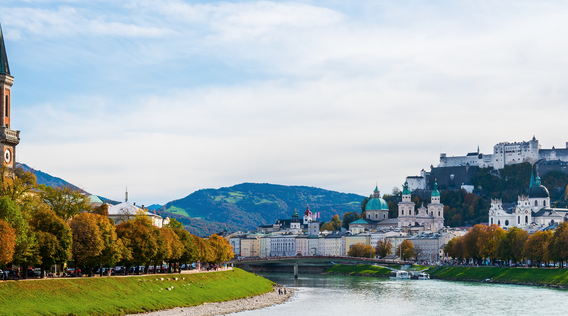
4.7 out of 5 stars

4.8 out of 5 stars
More travel inspiration


Home » Destinations » Europe » Germany » 5-14 Day Germany Itinerary: A Guide For Planning Your Perfect Germany Trip
5-14 Day Germany Itinerary: A Guide For Planning Your Perfect Germany Trip
Links in this article may earn us a little money if you book/ order stuff. More here .
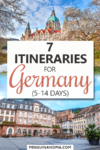
Plan Your Perfect Germany Itinerary with These Detailed Templates!
If you’re looking to plan the perfect trip around Germany, you are in luck! We’re passionate about exploring Germany because it’s a great country – and because Lisa is German!
Jokes aside, we’ve been lucky enough (and have made it a point) to see lots of different parts of the country – from the sea in the north to the mountains in the south. That said, Germany can be a tough country to plan a route or road trip through because there is just so much to see and do!
So, whether you’re looking for the best week in Germany or a Germany itinerary that covers 5 days or 14 days – here’s our master guide with 7 detailed Germany itineraries by train and/or by car! We’ve got cities, attractions, hotels and accommodations, directions, and distances to help you plan the best Germany travel route for you!
We’ve got other great posts to help you plan a visit to Germany:
- Must-Knows + Tips for Travelling to Germany for the First Time
- Helpful German Phrases to Get You By
- Discover 30 Beautiful Places in Germany
- Our Top Hostels in Germany (Stayed at all of them)
Table of Contents
Things to Consider When Travelling in Germany
Before you plan your trip to Germany, there are some things that you should know and keep in mind to make planning easier and to have a successful trip. While you probably know that the currency used in Germany is the Euro, here are some other topics that you should consider as well.
Best Time of Year to Visit Germany
Germany is actually a destination that you can visit year round – but it is important to plan accordingly and go in with the right expectations. If you’re planning a trip during the spring – let’s say from March to May – you could absolutely have beautiful weather… but it may also just rain a lot.
Unfortunately, the weather can be quite difficult to predict. However, as long as you prepare for different possibilities, you can have a great time no matter the weather! Generally you can say that Germany has a moderate climate with cool and rainy winters (more snowy the farther south you get) and warm – but not overly hot – summers.
July and August are usually the warmest months with an average temperature around 20°C. However, there can be days where you have 30°C. Of course, this can vary depending on the exact location you’re travelling to. Often, it is colder by the north coast than it is farther south.
We would honestly recommend that you avoid visiting the country in July if you dislike crowds since this is when the majority of kids are on their summer break from school. As a result, some cities can get quite busy.
Typically, we would recommend travelling in May or June and then from the end of August until the end of September (or even the middle of October). However, there is also a great reason to plan a Germany trip during the winter because of the many beautiful Christmas markets that you could visit at that time of year!
Public Transportation in Germany
Public transportation in Germany is quite good, especially when compared to North America. Yes, sometimes us Germans like to complain about the “Deutsche Bahn” – the German train company – but at the same time we are also super glad that it exists and works well.
If you’re wondering: Yes, all the itineraries mentioned below can absolutely be done if you want to take the train (minus the odd day trip to a castle here and there). If you want to check a train connection and/or buy tickets in advance you can do so on the DB Website . Alternatively, you can also download the DB app to your phone. We both have it and use it regularly.
As an alternative to the train, you can sometimes also use the bus to get from one city/town to another. Since 2013 (before this date it wasn’t allowed), long distance buses have established their presence in more and more cities and are now a popular way to get around for people who are more conscious of their money.
Unfortunately long distance train tickets can sometimes get quite expensive if you don’t book in advance – so the bus can be a good alternative in some cases.
The most popular long distance bus company in Germany is probably Flixbus. We have also used them multiple times to get between cities. If you want to look at the schedule and/or book a ticket, you can do so on their website .
In addition to the trains and long distance buses, the public transport within the cities is also usually pretty good – especially in bigger centres. Many of the cities – or transport associations – have their own transport apps. So, if you know where you are going and plan on using the local buses, trams, metros, etc. then downloading the local transport app would be a great idea!
Car Rental in Germany
If you want to rent a car and plan a Germany road trip, then that is certainly an option as well. Driving in Germany is generally pretty safe and people are not usually as reckless as in some countries in the south of Europe. However, it can get a little crazy in bigger cities like Berlin or Munich – especially if you are not used to driving in bigger centres.
In Germany, you drive on the right side as it is done in the United States, Canada, and many other countries as well. You have probably heard of the “Autobahn” – that’s simply the German name for our highway system. If you follow any of these itineraries, you’ll drive on many different highways.
While it is true that there is no speed limit in some parts of the Autobahn, there are lots of sections where there are actually speed limits in place. You can usually find limits imposed at/around construction zones along the way – so don’t think you can just speed all the time.
And PLEASE don’t drive on the Autobahn like you would on a highway in the United States or Canada – pass on the left and then get back over . If you’re going slower than other cars, there’s no need for you to be in the left (or even in the middle) lane. You can probably tell that this is something that Lisa complains about in Canada frequently, haha.
Since Germany is such a popular destination, there are lots of different rental car agencies to choose from. You can compare prices from different agencies for the duration of your trip with this handy rental car comparison tool . Please make sure to read the fine print so you know whether you need extra insurance, etc.
Also please be aware that many people in Germany drive cars with a stick shift. Rental cars with automatic transmissions exist, but the numbers available are usually lower and these cars might be slightly more expensive.
We’d also recommend that you reserve an automatic car well in advance if you need one – just so you can make sure that one is available for you. It probably wouldn’t be fun learning how to drive a stick shift while on a road trip in a foreign country.
Travel Insurance for Germany
If you’re planning a trip to Germany and you’re not from another EU country, then you should make sure to get travel insurance for the duration of your trip!
While you’ll probably be fine, accidents do happen and it could get really expensive if you’re not covered. That’s why we always travel with insurance.
If you live in another EU country and have health insurance there, you can get the blue health insurance card with which you are covered in other EU countries in emergency cases, as well.
If you don’t have that option – or are from outside of Europe – we recommend that you get private travel insurance.
Germany Itinerary 5 Days
If you only have a few days to travel through Germany, then have a look below at the two 5-day itineraries we have created. For these itineraries, we have assumed that you are not already in the country so they all start and end in bigger cities.
This should help make it easier for you to fly in/out of an airport with good connections if you are coming from overseas.
Depending on your preferences, you can choose between a trip through the northern part of Germany or a trip through the south of the country (mainly Bavaria). If you are interested in bigger cities and/or harbours, then we’d recommend the northern route.
In case you prefer half-timbered houses and beautiful old towns, then you should have a look at the southern route instead. Of course, you can always modify any itinerary to better suit your interests!
Germany Itinerary 5 Days – North
This 5-day Germany itinerary through the northern part of the country can certainly be considered a “sampler-type” of itinerary since you get to see the two biggest cities in the country – but not much more than that.
That’s completely fine though – you can only see so much in five days anyway. If you are interested in bigger cities and don’t have more than a few days, then this itinerary would be great for you!
The total driving time for this itinerary would be about 5 hours 30 minutes with a total distance of approx. 520 km. Of course, this can change depending on the route you are taking and the time of day you are travelling. Commuter traffic could add quite a bit of travel time to your journey.
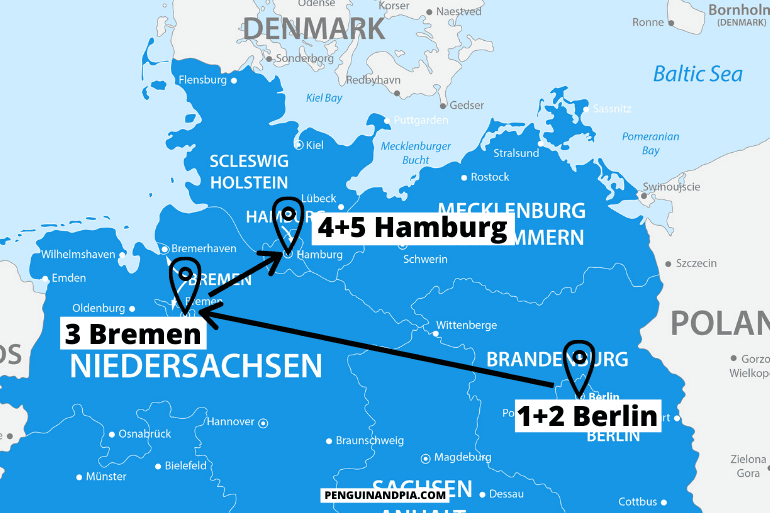
Day 1+2: Berlin Day 3: Bremen Day 4+5: Hamburg
Day 1+2: Berlin
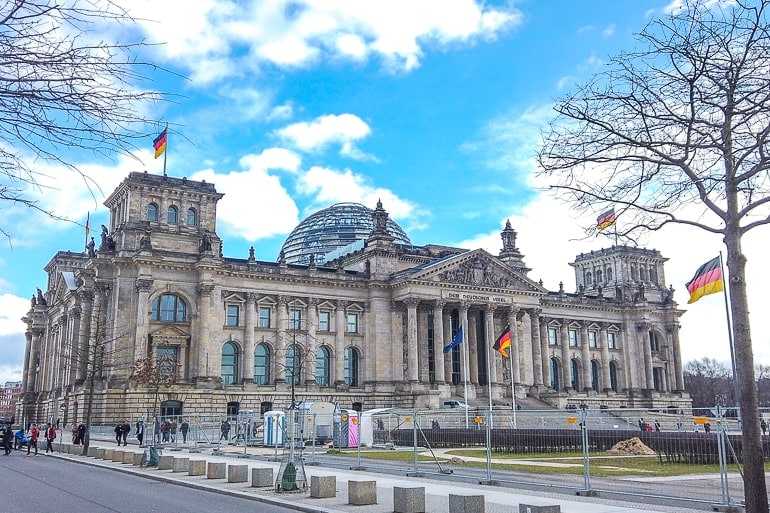
Berlin is a great place to start your adventure since it is the German capital, has multiple airports close by, and has really good train connections.
Since Berlin is such a popular tourist and business city, the car rental industry is well established and there are many different rental agencies to choose from.
— Compare prices from rental car companies in Berlin here
However, since you are only visiting bigger cities on this relatively short itinerary, we believe that a rental car is probably not necessary. Instead, for this trip, it might make more sense to take the train.
Since Berlin is such a big city with lots of things to do, it is worth it to spend (at least) two days in the city. So, remember to book your accommodation in Berlin for two nights .
Accommodation in Berlin : Berlin is a massive sprawling city with loads of different areas to stay and different accommodation options. You can check here for accommodations and hotels in Berlin .
If you are travelling to Berlin with a car, you’ll need a place to park. Check out Park Plaza Wallstreet Berlin Mitte for a stay right in the middle of the city close to Museum Island and other top attractions. It also has a tasty breakfast. Park Plaza has free parking on the street near the hotel (if available) or else it’s for a fee (but a reasonable price considering you’re in the middle).
If you are arriving into Berlin by train, you can check out NH Collection Berlin Mitte am Checkpoint Charlie . Located in the city centre right near the top sight “Checkpoint Charlie”, this popular hotel is in the heart of the action/attractions and is easy to get to via modes of public transit (metro – called the “U” for U-bahn).
If you are searching for a hostel/hotel, check out PLUS Berlin . Located over near the East Side Gallery (the piece of the Berlin wall with the artwork on it), Eric stayed here and really liked it! It’s also very easy to get to using public transit and is close to other areas to go out, etc.
Must-see Attractions in Berlin:
- Brandenburg Gate
- East Side Gallery (Berlin Wall)
We have also written a whole article about classic tourist attractions in Berlin in case you’d like some more inspiration. If you’re looking for some tips on how you could spend a day in Berlin, have a look at our One Day in Berlin Guide .
Day 3: Bremen
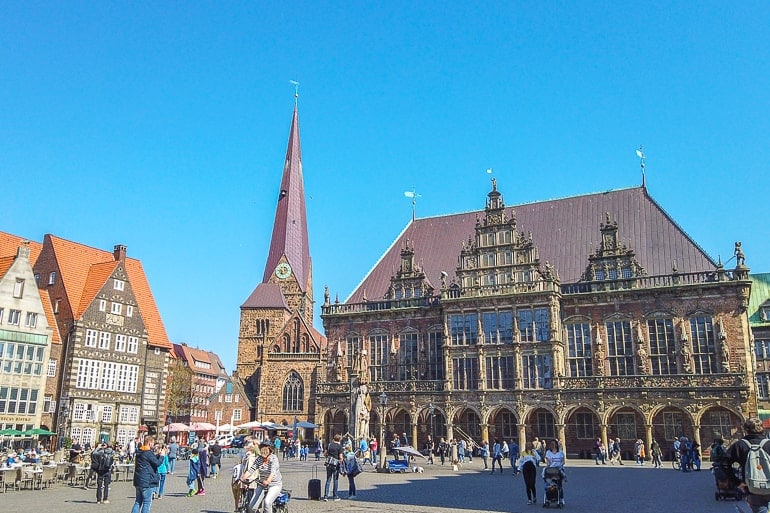
On the third day of your 5 days in Germany, you’ll head for Bremen. We’d recommend that you do the drive/train ride in the morning so you have enough time to explore the city once you get there.
Bremen is a hanseatic city with a nice old town – the market square with the town hall and the cathedral is especially popular. In German-speaking countries, the city is also known for a tale called the “Town Musicians of Bremen” by the Brothers Grimm. You’ll come across the animals of the tale (donkey, dog, cat, and rooster) many times as you stroll through the city.
The drive from Berlin to Bremen will take you approximately 4 hrs 10 min by car , but only around 3 hrs by train . If you take the train, try to book in advance if you can as this will usually save you some money.
Accommodation in Bremen: Bremen is a popular city to explore and it’s also on the larger side so you’ll find plenty of accommodations to suit your needs. There are hotels in the city centre/old town which put you within walking distance of the river and top attractions. You can check here for accommodations and hotels in Bremen .
For a popular choice in the historic middle, you should check out the very popular Radisson Blu Hotel Bremen . Funny story – we know there’s underground parking because we parked there when we visited Bremen by car.
If you want to stay closer to the train station just outside the historic centre (but still very central), check out the Dorint City-Hotel Bremen . This lovely and also very popular hotel is close to the pretty Windmill and flower gardens and has water views just outside the old city walls.
Must-see Attractions in Bremen:
- Marktplatz with Town Hall and Cathedral
- Böttcherstraße
- Schnoorviertel
If you want some more tips for Bremen, have a look at our detailed Things to do in Bremen Guide .
Day 4+5: Hamburg
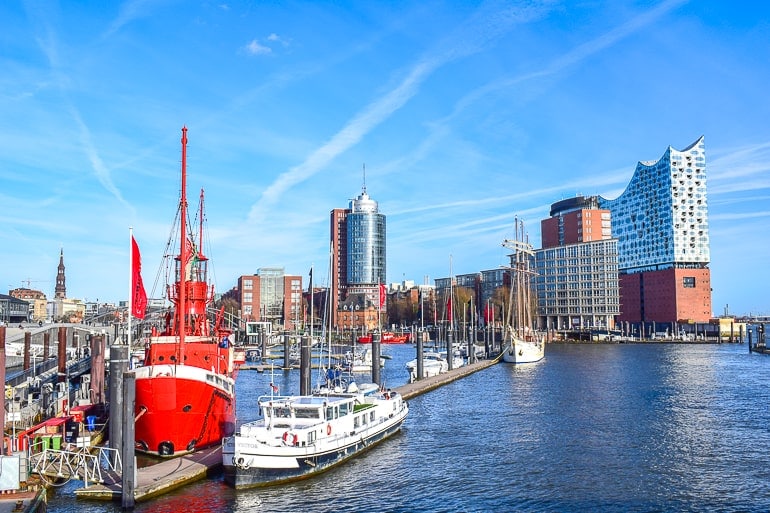
Hamburg is the second-biggest German city and the last stop on this short itinerary. We have been to Hamburg numerous times now and it is actually one of our favourite bigger German cities. You’ll find that the atmosphere of the city is very different than in Berlin. Not necessarily better or worse – just different.
Interesting (and slightly irrelevant) fact: The cities you visit on this itinerary are the three city states that exist in Germany in addition to the 13 area states such as Bavaria, Nordrhine-Westphalia etc.
The drive from Bremen to Hamburg is actually pretty simple and should only take around 1 hour 30 minutes by car and just around 1 hour if you take an ICE (fast train) . The train connection between these two cities is great with trains running pretty frequently. That should make it quite easy to find a train connection that works for your schedule.
Accommodation in Hamburg : Hamburg is popular city with loads of different accommodations and areas to stay in. You can check here for accommodations and hotels in Hamburg .
If you are travelling to Hamburg with a car, you might want to check out the Mövenpick Hotel Hamburg . Located in an old water tower, this unique hotel has a number of cool features with stunning views and parking onsite. It’s very popular – and also close to public transit for getting around!
If you are travelling to Hamburg by train, ARCOTEL Rubin Hamburg is a great hotel option for you to check out. Located in the cool area of St. Georg, you can easily walk to the hotel from the train station. It’s also walkable to other parts of the city centre and other attractions.
If you are looking for a hostel in Hamburg, you might want to check out Generator Hamburg as a reliable and popular hostel stay close to central station and the heart of the city.
If you want more details about accommodations in the city, we have a more detailed guide on where to stay in Hamburg .
Must-see Attractions in Hamburg:
- Speicherstadt
- Elbphilharmonie
- St. Pauli Piers
As one of our first ever articles on Penguin and Pia, we actually wrote a short Hamburg Guide . Have a look if you want some more Hamburg inspiration. Unfortunately it’s not nearly as detailed as our newer article – looks like it’s time for an update!
Germany Itinerary 5 Days – South
If you would like to explore the southern part of Germany instead of the north, then we would recommend the following 5 days Southern Germany itinerary. Compared to the northern itinerary, this trip includes stops in some smaller towns and cities. So, if you are interested in seeing some places of various sizes, beautiful old towns, and maybe a castle, then this might be a good itinerary for you.
The driving distance of this trip is just around 680 kilometres with a total driving time of approx. 7 hours . Depending on your mode of transportation, this can – of course – vary slightly.
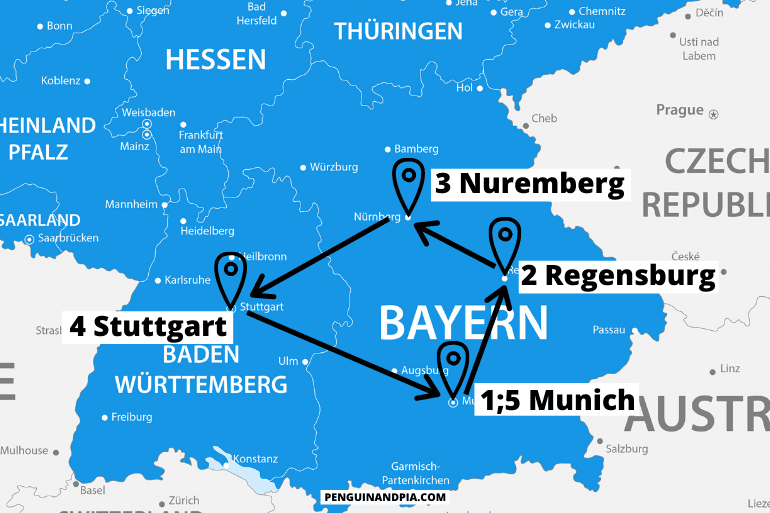
Day 1: Munich Day 2: Regensburg Day 3: Nuremberg Day 4: Stuttgart Day 5: Munich
Day 1: Munich

We are starting (and ending) this itinerary in Munich since it is an easy airport to fly in and out of from other parts of the world. If you are coming from another part of Europe by train, the connections to Munich are also usually pretty good.
Munich is the third-biggest German city and a very popular tourist destination. International travellers often mainly know the city because of the Oktoberfest which happens every year from the middle of September until October.
However, there is so much more to do and see in Munich than just the “Wiesn” (as the Oktoberfest is sometimes called as well). We are always happy to return to Munich because there is just so much to explore.
If you are thinking about renting a car for this itinerary, then you’ll be happy to know that it is quite easy to get a rental car in Munich. You can either pick it up directly at the airport after you land (if you arrive by plane) or in the city centre before you head to the next stop on this journey.
— Compare prices from rental car companies in Munich here
Accommodation in Munich: Munich is very large and popular city so finding a place to stay is no problem. The issue becomes that there are too many places to choose from! That said, you can check here for accommodations and hotels in Munich .
Specifically, we stayed at the very popular H2 Hotel München Olympiapark and we would highly recommend it for the value for money. The hotel has nice, cozy rooms, a super great breakfast buffet, and has a metro station steps from the front entrance to take you to the city centre.
There’s also onsite parking which makes this hotel perfect if you are travelling to Munich by car. The famous Olympic Park and BMW Museum are close by, too!
If you want to stay a little more in the city centre, then check out the Platzl Hotel Superior . This trendy hotel is in the heart of the Old Town just steps from top attractions like Marienplatz and the famous Hofbräuhaus. It’s also easy to get to the central train station either walking or on the metro.
If you are looking for more details on accommodations in this massive city, we wrote a detailed guide on where to stay in Munich .
Must-see Attractions in Munich:
- Marienplatz with New Town Hall
- Olympic Park
- Victuals Market
- English Garden
We also have a great little guide on how to spend one day in Munich if you want more details.
Day 2: Regensburg
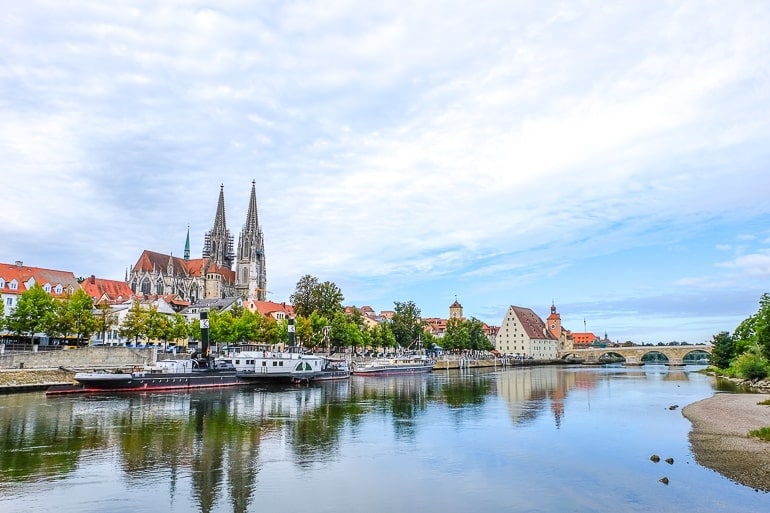
On day two of your trip you’ll be on your way to Regensburg, a small city in Bavaria on the Danube river. Due to its location by the river, Regensburg is a popular stop for people on a river cruise. So don’t be surprised if you see many different tour groups in the Old Town.
We recently spent a couple of days in Regensburg to get to know the city better and enjoyed our time there. One of the highlights is the Old Stone Bridge in the city centre which was built in the 12th century. We actually filmed a small YouTube video in Regensburg – which you can watch here if you are curious about what the city looks like.
The journey from Munich to Regensburg takes approximately 1 hr 20 minutes by car and around 1 hr 30 minutes by train . If you decide to travel by train – and especially if you are travelling with other people – we would recommend that travel with a “Bayernticket” (Bavaria Ticket). This ticket for train travel within the state of Bavaria usually allows you to save some money compared to regular prices.
Accommodation in Regensburg: If you are staying a night in Regensburg, you’ll have a number of great accommodations to choose from. To get started, you can check here for accommodations and hotels in Regensburg .
When we visited the city, we stayed at the Holiday Inn Express – Regensburg and really liked it. It’s a newer hotel and it really shows. The breakfast was excellent and there is even an onsite parking garage if you are travelling with a car. It’s not in the Old Town or near the river – but we did walk there one day and it only took about 15 minutes.
If you are travelling by train and you are on-foot, then check out the Altstadthotel Am Pach . This simple hotel is located right in the heart of the old town so you’re close to everything there is to see and do in Regensburg – including the beautiful Danube River. They also have breakfast included.
Must-see Attractions in Regensburg:
- Old Stone Bridge
- St Peter Cathedral
We are currently still working on our Regensburg Guide – but we’ll link it here once it is published.
Day 3: Nuremberg
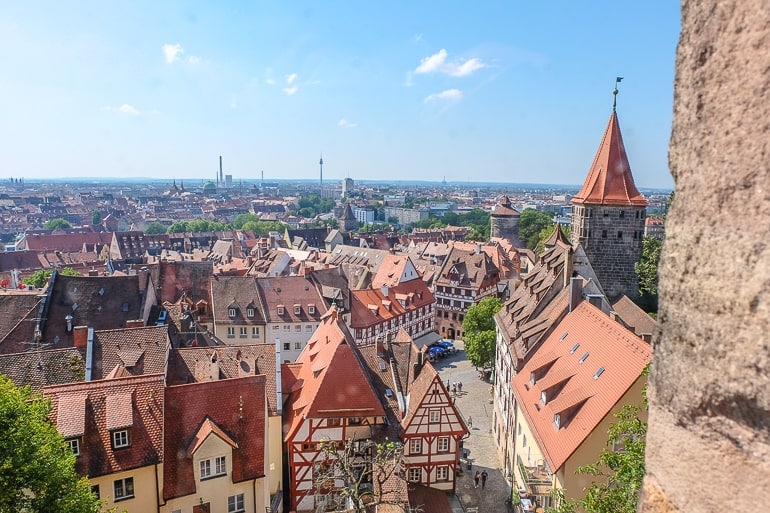
On the third day of this 5 day Southern Germany itinerary you’ll drive – or take the train – from Regensburg to Nuremberg. Nuremberg is a medium sized city in a part of Bavaria called Franconia. If you pay attention, you might notice that the dialect spoken here is quite different from that spoken in Munich and other places farther south.
Lisa actually grew up in this part of Germany so she has been to Nuremberg many, many times. Last year we also went to explore the city together and had a great time. Travellers from abroad mainly know the city for the Nuremberg Trials which took place there after World War II. You can certainly learn alot of history in this German city!
Since Nuremberg is quite close to Regensburg the drive won’t be long – giving you slightly more time to explore the city.
The journey takes approximately 1 hour 10 minutes by car and between 1-2 hours by train depending on which train you take (some stop more often than others). Once again, a regional ticket – such as the Bavaria Ticket – will probably save you some money if you travel with more people.
Accommodation in Nuremberg : Since Nuremberg is a very popular city to visit in Germany, there are many, many places to stay scattered throughout the city centre and around it. You can check here for accommodations and hotels in Nuremberg .
When we visited, we stayed at Five Reasons Hotel and Hostel and we really liked it. Located just inside the medieval city walls, we were really close to the train station and yet also steps from top attractions like the Germanisches Nationalmuseum. The place was bright and great value for the price which we liked a lot.
Close to Five Reasons, we had friends stay at the Sheraton Carlton Nuremberg and they loved it. We actually saw it with our own eyes – it had a pool with views of the city among other perks. There’s also a parking lot right across from the hotel if you’re coming to Nuremberg by car. It’s walking distance to the old centre and the central train station so best of all worlds!
Must-see Attractions in Nuremberg:
- Imperial Castle of Nuremberg (Kaiserburg)
- Documentation Center + Nazi Party Rally Grounds
- Albrecht Dürer’s House
As is the case with Regensburg, we are also still working on our article for Nuremberg. Once it’s live, we’ll link it here.
Day 4: Stuttgart
Stuttgart is the capital of the German state called Baden-Württemberg and the only place on this itinerary that is not located in Bavaria. The city is mainly known for being a “car hub” since both Mercedes-Benz and Porsche have their headquarters there. There are also museums dedicated to both car brands.
Stuttgart is a bit smaller than Munich but there is still a lot to see. In fact, one day won’t be enough to see the whole city – but it’ll allow you to get a good first impression. Next to the car museums, you could visit some of the many green spaces and/or old buildings that the city has to offer.
Driving from Nuremberg to Stuttgart by car will take you approximately 2 hours 15 minutes. If you have the time, you could even take a small detour and stop in Rothenburg ob der Tauber, known for its picturesque Old Town.
By train , the journey from Nuremberg to Stuttgart will take between 2 hrs 10 minutes and 2 hrs 30 minutes – depending on the type of train you are taking. Try to book your ticket in advance if possible as this can save you some money.
Accommodation in Stuttgart: There are many places to stay in Stuttgart – especially in the city centre. You can check here for accommodations and hotels in Stuttgart .
If you’re travelling to Stuttgart with a car, check out the Abalon Hotel ideal . Located very much in the city centre, this popular hotel has an underground parking garage and offers a good breakfast selection.
If you’re travelling to Stuttgart by train, you can check out the Pension am Heusteig . This guesthouse-style accommodation doesn’t have parking but offers a great breakfast and is a doable walk or metro ride from the train station. Funny enough, these two accommodations are very close to one another!
Must-see Attractions in Stuttgart:
- Schlossplatz
- Mercedes-Benz Museum
- Staatsgalerie Stuttgart
Day 5: Munich
On the last day of your trip you’ll make your way back to Munich since it is usually easier to leave Germany through the Munich airport than smaller airports in the surrounding area.
However, if you don’t have to get to an airport – and/or are taking the train home – you could also stay an extra night in Stuttgart if you wanted. Both cities are worth spending an extra few hours in – so you really just have to see what works best for you.
If you decide to get back to Munich, then the journey from Stuttgart to Munich will take approximately 2 hours 20 minutes by car and just slightly less (2 hrs 15 minutes) by train .
Accommodation in Munich : We already went over accommodations in Munich in Day 1 of this itinerary. So, you can head back up for the full details – but we would highly, highly recommend the H2 Hotel München Olympiapark as great value for money with great breakfast, parking, and a metro stop outside the front door.
Don’t forget we also have our detailed guide on where to stay in Munich if you want to have a deeper look at accommodations in the city.
We also have a post on spending one day in Munich if you want more details about the city!
Germany Itinerary 7 Days
If you have slightly more time to explore Germany, we have also created two 7 day Germany itineraries for you. Similar to the 5 day itineraries, we made two different itineraries since it’s pretty much impossible to see the whole country in just a week.
Instead of a northern and southern itinerary, this time we have focused on the western and eastern parts of the country. But please don’t read too much into that description – we use the terms quite loosely. As always, you’re welcome to modify any part of the itinerary to make it better fit your schedule/interests.
Germany Travel Itinerary 7 Days – West
For this itinerary, the total driving time would be around 14 – 15 hours and the distance would be slightly over 1100 km . For these calculations, we included the day trip to Monschau (and back to Cologne) as well as the day trip to Freiburg im Breisgau (and back to Stuttgart), which would be a longer day trip anyway.
So, depending on which day trips you decide to add on to (or remove from) this itinerary, your driving time and distance could be noticeably different than the estimates given above!
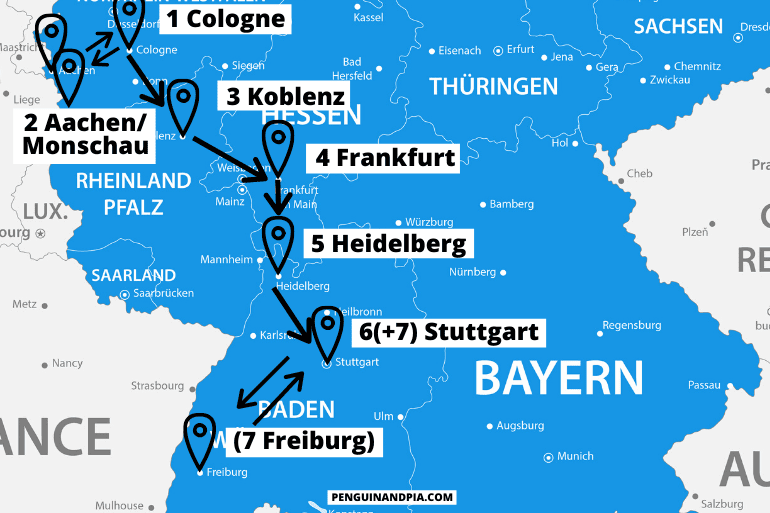
Day 1: Cologne Day 2: Day Trip to Monschau/Aachen Day 3: Koblenz Day 4: Frankfurt Day 5: Heidelberg Day 6: Stuttgart Day 7: Stuttgart / Day Trip to Freiburg im Breisgau
Day 1: Cologne
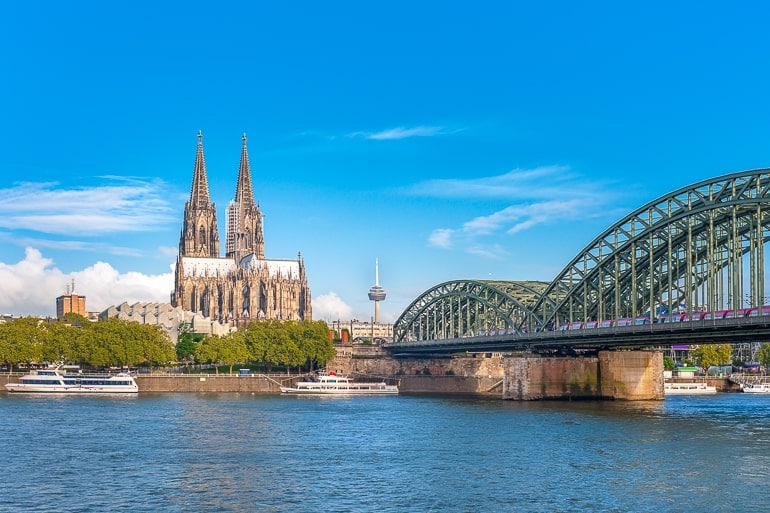
As we have already explained above, we like to start these itineraries in bigger cities to make it easier for people from overseas to get to Germany and start their adventure without hassle. Cologne is Germany’s fourth-biggest city (by population) and has two pretty good airports (Airport “Köln Bonn” and Airport “Düsseldorf”) close by for those coming from far away.
If you want to rent a car for this itinerary, it should be pretty easy to get one in Cologne since it’s quite an international city with lots of visitors.
— Compare prices from rental car companies in Cologne here
Cologne is a pretty spread-out city so you won’t be able to see the whole city in a day or two. However, the highlight of the city is certainly the Cologne Cathedral which is located right next to the central station and the Rhine River.
Make sure to plan some time to visit this impressive building – we always spend much longer in there than we originally plan. It’s free to enter so it can get very crowded depending on the day and time you’re visiting.
Accommodation in Cologne : Cologne is a very big city with multiple areas to stay in. As such, there are lots of accommodation options across the city. Wherever you book, remember to book your accommodation for two nights since you will go on a day trip and then return to Cologne on the second day. You can check here for accommodations and hotels in Cologne .
We have stayed in the Lindner Hotel City Plaza and loved it. The floors all have themes (we got Cologne Zoo with animals), the breakfast buffet is absolutely fantastic, and it’s a short walk to the Cathedral along one main street. There’s also parking available at/near the hotel for those with a car.
If you want to stay more in the heart of the city centre, check out something like the CityClass Hotel Residence am Dom . It’s popular, centrally located with shops and restaurants around, and only a short walk to the train station.
If you are looking for a hostel in Cologne, Eric once stayed at Cologne Downtown Hostel and it was honestly excellent. There’s a grocery store right below it and it’s located in the city centre. It also has a large balcony to enjoy the sunshine from!
Must-see Attractions in Cologne:
- Cologne Cathedral
- Cologne Chocolate Museum
Day 2: Day Trip to Monschau/Aachen
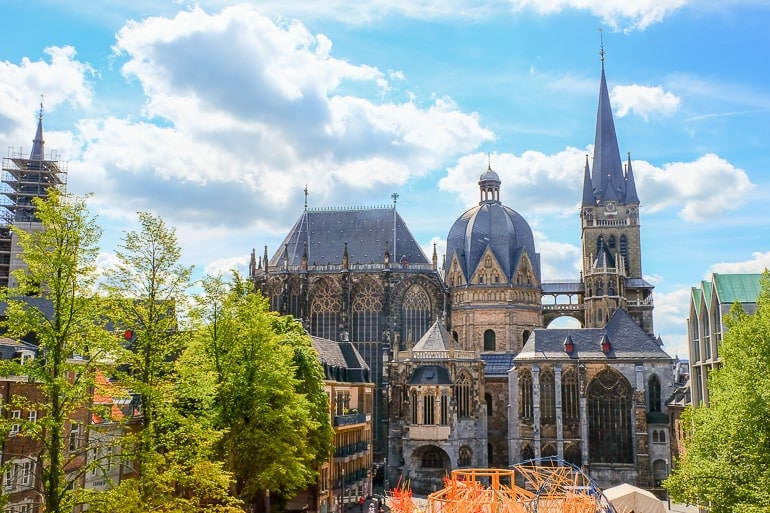
On the second day of this Germany itinerary, you have a few different option: you can either spend another day in Cologne if you feel like you haven’t seen enough of the city yet or take a day trip to Monschau or Aachen. Both of these are two places not too far from Cologne.
Monschau is a popular day trip in the area mainly because of its picturesque buildings in the old town. In fact, you probably have already seen photos of it on social media. To get to Monschau from Cologne, you can either drive or take a combination of trains and buses.
Getting to Monschau takes around 1 hr 40 minutes by car and approx. 2 hours by public transport . To visit Monschau by public transport, you can take the regional train from Cologne to Aachen-Rothe Erde and then take Bus #66 from there to Monschau.
Must-see Attractions in Monschau:
- Monschau Castle
If you want to go on a day trip but don’t want to venture that far, then Aachen would be another great option. This city is actually Germany’s most western city very close to the borders of The Netherlands and Belgium.
We’ve lived close to Aachen for a while and have written a whole guide full of things to do in Aachen that you should read if you want more information. In our opinion, one day is the perfect amount of time to explore the city since it doesn’t have that many attractions and the old town in the city centre is quite compact (but still very pretty).
Getting from Cologne to Aachen is also very easy. It takes approx. 1 hr 20 minutes by car and just around 50 minutes by regional train . You should look into getting a “Schönes Tag Ticket NRW” for the day if you’re travelling with more people as this can save you some money.
Must-see Attractions in Aachen:
- Aachen Cathedral
- Elisenbrunnen
Day 3: Koblenz
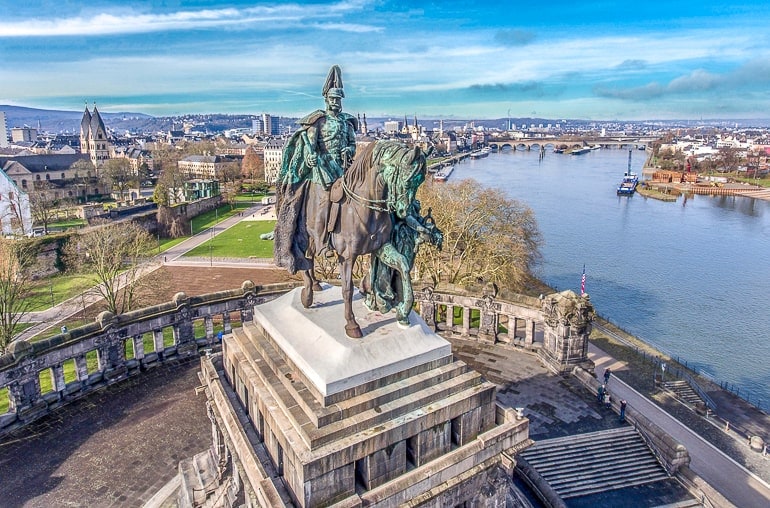
From Cologne, your journey continues to Koblenz – another city on the Rhine River. Koblenz is a smaller German city with a population of slightly over 110,000 inhabitants.
There are quite a few castles and nice hikes in the area which are easy to reach from Koblenz – just in case you decide that you don’t want to spend the day in the city. Depending on the time of year, you could also look into booking a boat tour on the Rhine river. This way, you get a unique perspective of the beautiful region.
Getting from Cologne to Koblenz is pretty easy and will take approximately 1 hour 30 minutes by car and between 50 minutes and 1 hr 10 minutes by train . We really like this train journey since the tracks follow the river for a majority of the trip. As a result, you get some really nice views – and might even spot some of the beautiful castles in the area!
Accommodation in Koblenz: Koblenz is certainly not a huge city – but you’ll still find a good number of places to stay for a night or two. You can check here for accommodations and hotels in Koblenz .
For a hotel right in the city centre, check out the Sander Hotel . This lovely hotel is super popular and close to shops and the rivers. If you are arriving to Koblenz by car, there is onsite parking at the hotel. However, since the city is smaller you can also easily reach the hotel by walking from the central train station.
Must-see Attractions in Koblenz:
- Deutsches Eck
- Ehrenbreitstein Fortress
- Koblenz Cable Car
Day 4: Frankfurt
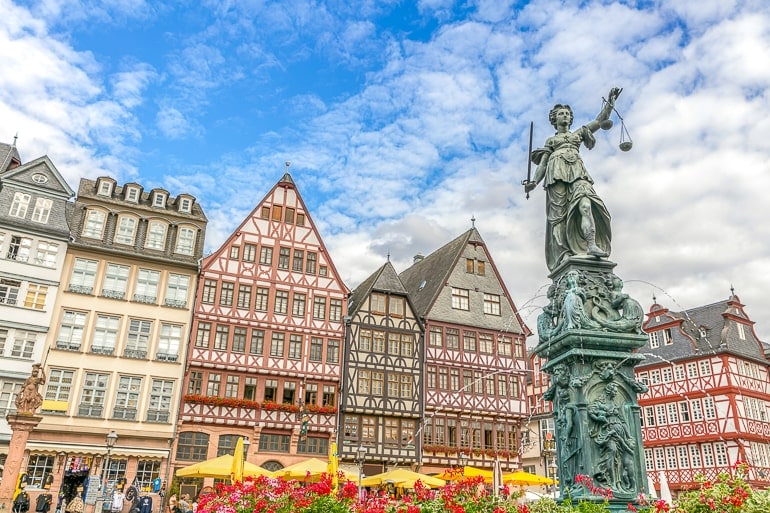
The next stop on your itinerary is Frankfurt, arguably one of the country’s most popular transport hubs due to the busy Frankfurt airport. Frankfurt is an interesting city that divided people: some people really enjoy it while other people don’t like it at all. To be fair, we haven’t spent enough time in the city to really solidify our opinion.
Either way, we do believe that Frankfurt is a stop that you shouldn’t miss if you are trying to get to know different areas of Germany. Known as the financial hub of Germany, this city with its many skyscrapers can feel quite a bit more modern than other German cities. However, the city also has a beautiful, historical market square that you should visit.
The journey from Koblenz to Frankfurt is another easy one – and if you are taking the train (we would recommend that!), you’ll once again follow the Rhine River for big parts of the journey and be rewarded with some great views.
The train ride will probably be between 1 hr 25 minutes and 2 hrs 12 minutes long – depending on the connection you choose. By car , the trip will take around 1 hr 30 minutes . Of course, this can vary depending on traffic.
Accommodation in Frankfurt : There are loads of places to stay in Frankfurt given its popularity and size. You can check here for accommodations and hotels in Frankfurt .
A great option in Frankfurt is the Motel One Frankfurt-Römer . Located very much in the heart of the city centre close to the old town and river, this cool hotel has underground parking if you are arriving to Frankfurt by/with a car. It also serves up a great breakfast!
If you are arriving by train to Frankfurt, you should check out Fleming’s Express Hotel Frankfurt . Located literally right beside the central station (which is in the city centre), this upscale hotel is very popular because it’s very affordable and also has a great breakfast.
Must-see Attractions in Frankfurt:
- Palmengarten
Day 5: Heidelberg
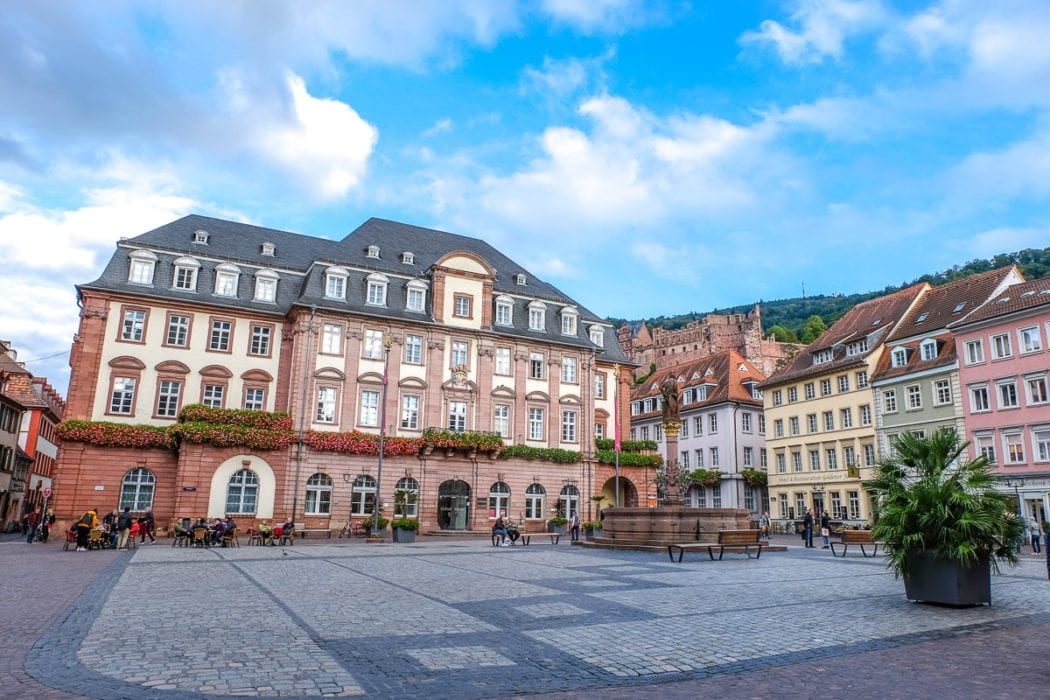
After your day in Frankfurt, you’re heading to Heidelberg which is actually one of our favourite German cities. The highlight of the city is certainly the castle on top of the hill which is visible from many different parts of the city.
Heidelberg is smaller than Frankfurt so you can see quite a bit in just 24 hours. The Old Town is beautiful and lots of attractions are located there. Our highlight was probably the tower climb of the Church of the Holy Spirit. From up there, you get a beautiful view of the Old Town. A very close second was the cable car ride up to the Königstuhl which was lots of fun – even in the rain.
Getting from Frankfurt to Heidelberg won’t take too long. The journey will be approximately one hour by car and between 45 minutes and 1 hr 30 minutes by train – depending on which type of train you are taking.
Accommodation in Heidelberg: If you’re heading for Heidelberg (good choice), there are lots of great places to stay. You can check here for hotels and accommodations in Heidelberg .
We stayed a little outside the old town – but close to the train station – at NinetyNine Heidelberg City . This hotel was really, really great. The beds were comfy and the decor has animals everywhere – you have to see it to understand!
There’s onsite parking (paid) and street parking (free, but not guaranteed) if you are travelling with a car. There’s also a tram stop right outside the hotel to get directly into the city centre in minutes.
If you are looking to stay in the historic old town, then check out colourful hotels like Hotel Holländer Hof which overlooks the river or Hotel Zum Ritter St.Georg which is literally overlooking the main Marktplatz.
Must-see Attractions in Heidelberg:
- Heidelberg Palace
- Church of the Holy Spirit (mainly tower climb)
If you want to learn some more about Heidelberg and what there is to do, you can read our detailed Heidelberg Guide here .
Day 6: Stuttgart
The next day you will drive to Stuttgart, a city that we’ve already mentioned in one of our Germany itineraries for 5 days. As we have already mentioned, you’ll probably really enjoy Stuttgart if you are interested in cars.
Even if you aren’t, there is still lots for you to explore. Did you know that wine also plays a huge role in Stuttgart and the surrounding region? If this is something that interests you and you’re there in the summer (specifically around the end of August), then you should stop by the “Stuttgarter Weindorf” (“wine village”) – but obviously, please don’t drink and drive.
As for getting from Heidelberg to Stuttgart, the journey will take you approximately 1 hr 20 minutes by car and between 40 minutes and 1 hr 30 minutes by train . As mentioned before, the time differs depending on the type of train you are choosing.
Accommodation in Stuttgart: Stuttgart has many places to stay so you can check here for accommodations and hotels in Stuttgart .
Be sure to see the Abalon Hotel ideal if you have a car. This hotel has underground parking available and a tasty breakfast. It’s also in the city centre which makes sightseeing easy.
Those coming to Stuttgart by train should look at the Pension am Heusteig . It’s a guesthouse that is located not too far from the first hotel here and it’s a doable walk or metro ride from the central station.
Day 7: Stuttgart / Day Trip to Freiburg im Breisgau
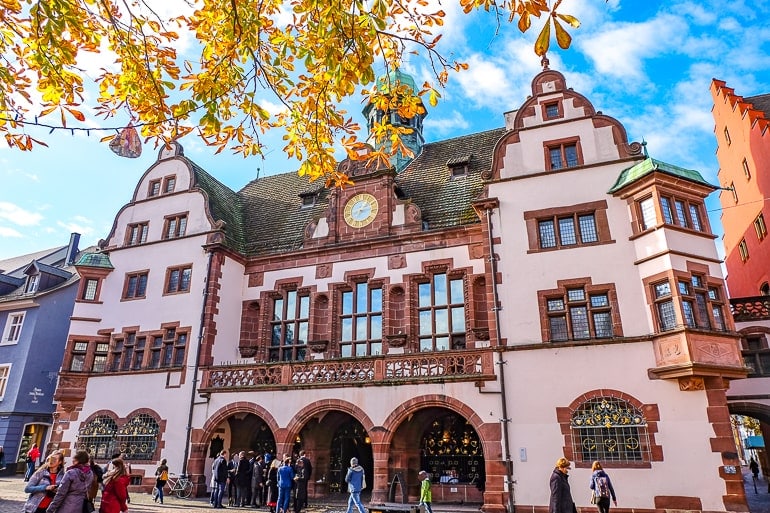
For this itinerary, you can decide how you would like to spend your last day. You could either spend another day to explore more of Stuttgart (and maybe relax for a bit) or you could head farther south and spend a day in Freiburg im Breisgau. We really enjoyed spending time in this small city in the south of Germany during our visit.
We are currently still in the process of writing our Freiburg guide, but we’ll link it here once it’s done. However, a good way to start your exploration of the city is by wandering the old town.
In Freiburg, you’ll find that many of the cobblestoney streets have small water-filled runnels – called Bächle – running alongside it. Sometimes they even have small yellow ducks in them!
The journey from Stuttgart to Freiburg im Breisgau is slightly longer than most other parts of this itinerary. It takes approximately 2 hrs 30 minutes by car and around 2 hours by train . Since this train journey will probably include at least one ICE (the fast train), we’d recommend that you book your train tickets early if you can to save some money.
Must-see Attractions in Freiburg:
- Freiburger Münster (Cathedral)
- Schlossberg + Tower
- New + Old Town Hall
Germany Travel Itinerary 7 Days – East
If the other week-long Germany itinerary doesn’t interest you and/or you really want to visit the German capital Berlin, then you might prefer this eastern route instead.
The driving time would be just slightly over 10 hours and would be approximately 900 km driving distance – including the day trip to Potsdam (which would honestly be easier with public transport, though)!
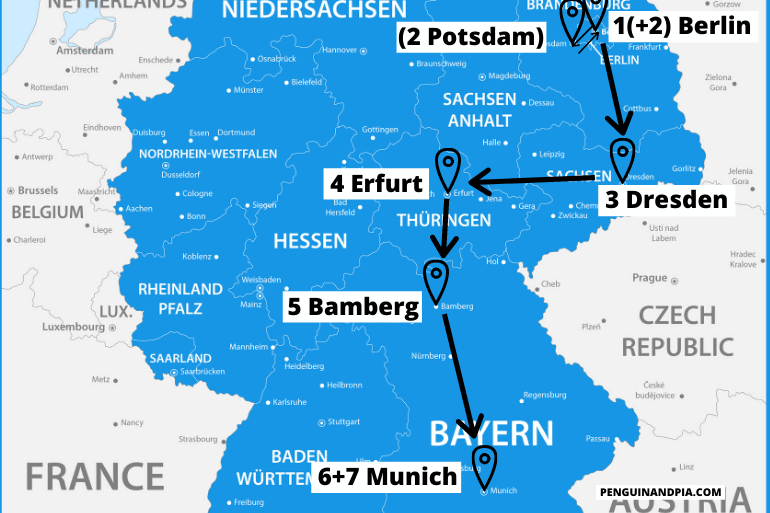
Day 1: Berlin Day 2: Berlin / Day Trip to Potsdam Day 3: Dresden Day 4: Erfurt Day 5: Bamberg Day 6+7: Munich
Day 1: Berlin
Once again, this itinerary begins in Berlin since it is one of the big cities that is easier to get to for people coming from overseas. Similar to the five day itinerary that started in Berlin, you’ll stay two nights in the German capital. There is just too much to see to spend only one day – and even in two days you wouldn’t be able to explore everything.
In case you’ve already been to Berlin on a different trip and/or aren’t a huge fan of big cities, we also give you the option of a day trip to Potsdam (a city close by) on the second day. More on that below.
Accommodation in Berlin : Finding a place to stay in Berlin can be tough because there are just so many options. You can check here for accommodations and hotels in Berlin .
If you have a car, check out Park Plaza Wallstreet Berlin Mitte . Located right in the middle of the city close to Museum Island, this hotel has a great breakfast and free parking on the street behind the hotel. Otherwise, parking is paid but for a decent price for the city centre.
Those without a car travelling by train should see the NH Collection Berlin Mitte am Checkpoint Charlie . If you want a hotel close to a top attraction that is easy to get to with public transport, this is definitely one of them!
Across the city, PLUS Berlin is a really good hostel/hotel that Eric stayed at a few years ago. It’s a big place but it was a great stay over by the East Side Gallery (part of the Berlin Wall with the graffiti on it).
As already mentioned above, if you want to read some more about Berlin, check out our articles on Things to do in Berlin and How to spend one day in Berlin .
Day 2: Berlin / Day Trip to Potsdam
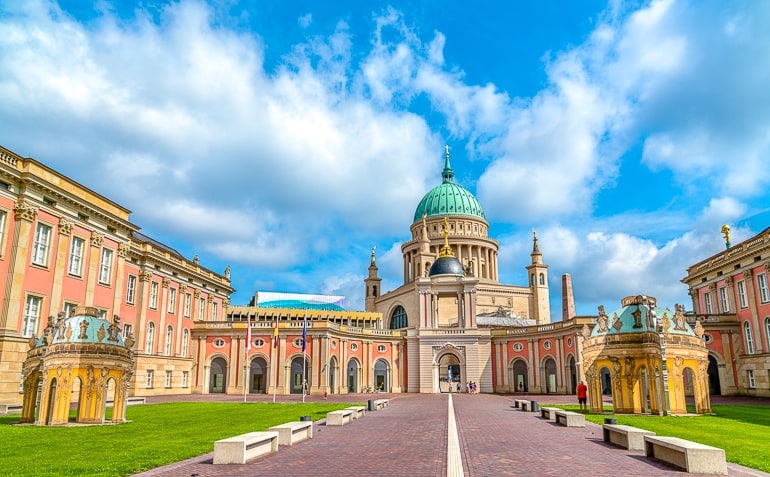
On your second day, you can choose between spending another day in Berlin to see more of the German capital or going on a day trip to Potsdam – which is a smaller city not far from Berlin.
Potsdam is actually the capital city of the German state called Brandenburg. It’s most popular attraction is probably Sanssouci Palace with the beautiful Sanssouci Park surrounding it.
During our visit, we also enjoyed walking through the Dutch Quarter with its small shops and cafes. Since the city isn’t too big, one day gives you a chance to get a good impression and check out some of the more popular sights.
It is also very easy to get to Potsdam from Berlin. If you decide to drive , it’ll take you approx. 40 minutes , but it could be longer – traffic depending. We would honestly recommend that you do this day trip by taking public transport. This way, you don’t have to worry about traffic and/or finding a parking spot.
For trains, you can take the S-Train #7 (S7) from Berlin Central Station (as well as other train stations) straight to Potsdam Central Station. The journey will take around 35 minutes with trains running very frequently throughout the day.
Must-see Attractions in Potsdam:
- Sanssouci Palace
- Dutch Quarter
- Cecilienhof
Day 3: Dresden
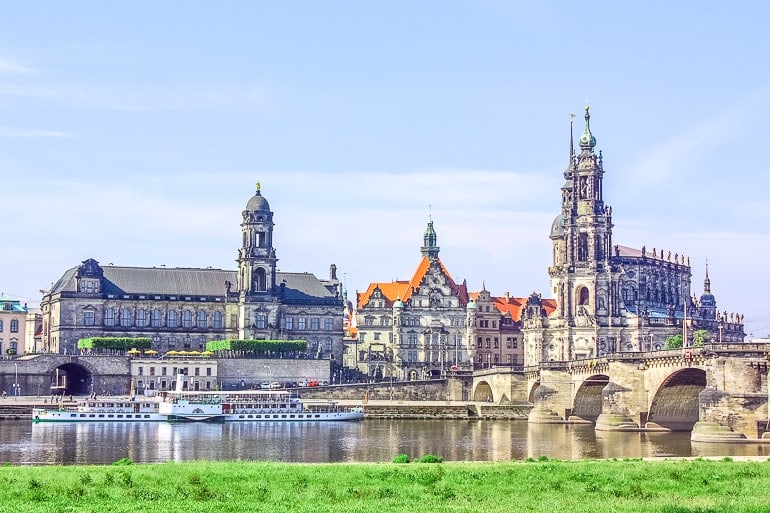
The third day of this Germany itinerary will take you from Berlin to Dresden which is a German city close to the Czech border. To be honest, we haven’t spend that much time in Dresden yet – and it’s certainly on our list of places to visit this year.
One of the city’s main attractions – the Zwinger – is known across the country and a sight that you shouldn’t miss during your visit. It’s a beautiful palace built in a baroque style.
Fun fact: When Lisa was a kid, she didn’t actually know that the “Zwinger” was a palace. Since that word can also mean “dog kennel” in German, she was always confused as to why people would want to visit it during their time in Dresden!
As for getting from Berlin to Dresden, the drive will take you around 2 hrs 10 minutes by car and around 2 – 3 hours by train. Once again, this depends on which connection you choose.
Accommodation in Dresden: There are a number of accommodations in the compact “Innere Altstadt” close to the River Elbe for you to choose from. You can check here for accommodations and hotels in Dresden .
For a great hotel option right in the old town, look no further than the Star Inn Hotel Premium Dresden im Haus Altmarkt . You’re a short walk to the train station, the river, and all the best old sights in Dresden if you stay here and arrive by train. If you come to Dresden by car, the hotel has discounted underground parking available.
Another option right in the old town (and even closer to the river) is Aparthotel am Schloss . Since this is an apartment-style hotel, it’s a great option if you are looking for more of a base to relax in a “home away from home”. It’s a very popular choice, too – and also has onsite parking.
Must-see Attractions in Dresden:
- Frauenkirche
Day 4: Erfurt
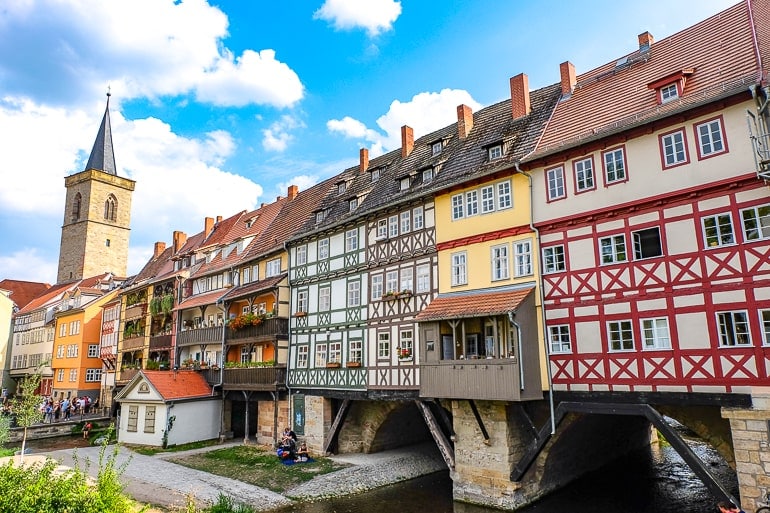
Erfurt is a popular city to visit in the middle of Germany – and it’s also the capital city of the German state Thuringia. We’ve spent some time in Erfurt a few months ago and instantly fell in love with the city. Its size is perfect (in our opinion) – giving you enough things to do without feeling overwhelming.
Maybe you’ve seen photos of one of the city’s most popular attractions, the Krämerbrücke. This bridge is not only pretty to look at and photograph, it’s also unique in the sense that there are buildings on the bridge and when you’re walking on it, you can’t actually see the water running below.
Visiting the bridge and climbing the tower of the Ägidienkirche, a church at one end of the bridge, is something we’d certainly recommend during your time in the city. We actually filmed a short video of our time exploring Erfurt. If you are interested in seeing what parts of the city look like, then you can find our video here .
Getting to Erfurt from Dresden won’t take you too long. It will take approx. 2 hours 20 minutes by car and between 2 and slightly over 3 hours by train .
Accommodation in Erfurt: Since Erfurt isn’t a huge city, there aren’t a ton of accommodations – but certainly more than enough to find one that works for your style and budget. You can check here for hotels and accommodations in Erfurt .
We stayed at Gästehaus in der Gotthardtstraße and really liked our stay. It’s located in a quiet neighbourhood just north of the city centre – a short walk to the Krämerbrücke. The host was lovely, the room was cozy, and there was secure onsite parking for those driving to Erfurt.
If you want to stay RIGHT in the city centre then you should check out Hotel Krämerbrücke Erfurt which is right beside the famous bridge. This might be a good place to stay if you are travelling to Erfurt by train and you’re on-foot.
Must-see Attractions in Erfurt:
- Krämerbrücke
- Erfurt Cathedral
- Citadel Petersberg
For more details, have a look at our Things to do in Erfurt article .
Day 5: Bamberg

Bamberg is a small city – or larger town – in the German state called Bavaria. It’s actually located in a region called Franconia, which is noticeably different from the Bavaria that you might know in the area surrounding Munich, etc.
We’ve been to Bamberg multiple times over the years (it’s also close to the part of Germany where Lisa grew up) and are always happy to come back. Bamberg is known for its cute, historic old town which is actually a declared UNESCO World Heritage Site.
One of the most popular buildings the city has to offer is the Old Town Hall (shown above) which is built on an artificial island. The story behind it is quite interesting.
The drive from Erfurt to Bamberg is doable and will take approx. 2 hrs by car and around 3 hrs by train . On the way, you’ll drive through quite a few tunnels since you’ll drive through an area known as “Thuringian Forest”.
Accommodation in Bamberg: Bamberg is a small place to visit so there aren’t a ton of options but still enough to find what you’re looking for. You can check here for accommodations and hotels in Bamberg .
Anywhere you stay is basically in or close to the old town/city centre. For a place to stay with parking (for those arriving by car), check out Welcome Hotel Residenzschloss Bamberg . It’s located right on the river.
You might also want to see Palais Schrottenberg to stay right in the middle of the Old Town! For reference, the train station is a short walk to the north of the river – not far from these places in the centre.
Must-see Attractions in Bamberg:
- Bamberg Cathedral
- Old Town Hall
- Alte Hofhaltung
If you want some more information about Bamberg, please read our detailed Bamberg, Germany Guide .
Day 6+7: Munich
From Bamberg, your journey will continue to Munich which will be the last stop on this 7 day eastern itinerary. Not only is this the third biggest city of the country, it is also one of the most internationally known destinations in Germany.
Whenever we come back to Munich, we always enjoy our time there. For some reason, the atmosphere always feels more laid back than in other big German cities and the people are usually quite friendly. We might also be a little bit biased, though, since Lisa grew up in this part of the country and is more used to the mentality, dialect etc. than in other parts of Germany.
For this itinerary, you’ll spend two days in Munich since there is quite a lot to see. Next to the obvious attractions like the Marienplatz with the New Town Hall and the Frauenkirche close by, there are also lots of museums and other things that you can explore.
If you’ve already been to Munich before and/or decide that one day in the city is enough for you, you could also opt for a day trip on one of these days. We’ve just recently written a whole Day Trips from Munich Guide , which you can browse through to get some inspiration!
Driving from Bamberg to Munich will take about 2 hrs 20 minutes by car and between 2 and 3 hrs by train . If you decide to only take regional trains instead of the ICE (fast train), you should look into getting the Bayernticket. This can save you some money, especially when you’re travelling with more people.
Accommodation in Munich: Since Munich is so large and popular to visit, there is definitely no shortage of places to stay! You can check here for accommodations and hotels in Munich .
That said, we loved our stay at H2 Hotel München Olympiapark . Located up by the famous Olympic Park, we’d highly recommend it since it was amazing value for money. The breakfast was huge and delicious and there’s a metro station outside the lobby door that takes you into the heart of the old town in minutes. There’s also parking if you are arriving by car.
For a hotel that is a little more central, you should see the Platzl Hotel Superior this hotel is really popular – and for good reason. It’s located around the corner from attractions like Marienplatz and the famous beer hall, Hofbräuhaus.
For more help looking into accommodations and neighbourhoods in Munich, check out our where to stay in Munich guide .
(Check out our guide to one day in Munich if you want more details on things to do and see.)
Germany Itinerary 10 Days
Although we have tried to create short itineraries that allow you to see more than just the standard cities, it is no doubt easier to see more of Germany if you are able to travel for longer than one week. To give you a couple different options that you could look at (and then potentially modify), we have created two 10-day Germany itineraries.
Once again, we believe that ten days would not be enough time to see the whole country – and even if you managed to do that it would be too stressful (in our opinion). Both of the following itineraries give you a good mix of bigger and smaller cities as well as a few interesting day trips. So, have a look and see which one you like better!
Germany Itinerary 10 Days – North
If you’re interested in seeing more of the northern part of Germany and experiencing the mentality and way of life of people in the flatter part of the country, closer to the sea, then have a look at the following 10-day itinerary!
The total driving time would be slightly less than 17 hours with a distance of approx. 1470 kilometres. For these calculations, we have included the day trips to Schloss Drachenburg, Lübeck, and Flensburg. So, if you decide to skip any of these, your driving time and distance would obviously be slightly lower.
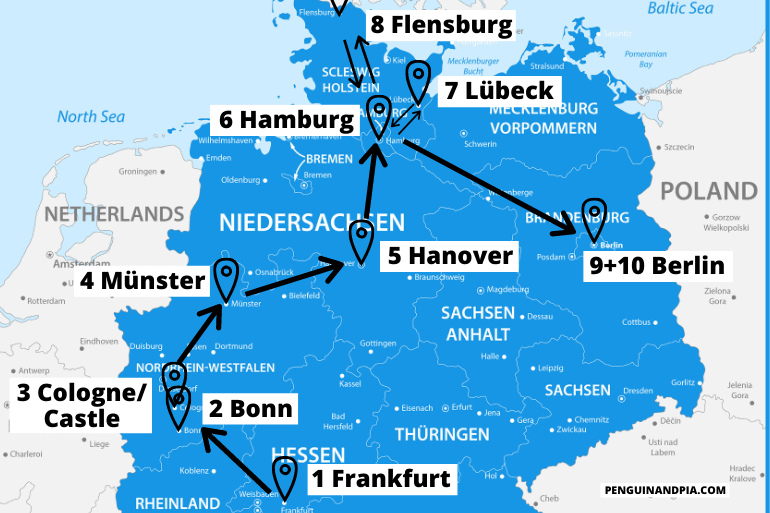
Day 1: Frankfurt Day 2: Bonn Day 3: Day Trip to Schloss Drachenburg / Cologne Day 4: Münster Day 5: Hanover Day 6: Hamburg Day 7: Day Trip to Lübeck Day 8: Day Trip to Flensburg Day 9+10: Berlin
Day 1: Frankfurt
Similar to some of the other itineraries mentioned in this article, we start this 10-day itinerary in Frankfurt. By now you should probably already know why – Frankfurt has the biggest airport of the country which should make it easier for people coming from overseas to get to Germany and start their adventure.
Furthermore, Frankfurt is quite centrally located so it is easy to get to many different cities from here. So even if you decide against following our itineraries step-by-step, Frankfurt would be a good starting point!
— Compare prices from rental car companies in Frankfurt here
Accommodation in Frankfurt : You’ll find plenty of places to stay in Frankfurt. You can check here for accommodations and hotels in Frankfurt .
One really popular hotel in Frankfurt is the Motel One Frankfurt-Römer . This Motel One is near the river and walking distance to lots of things in the city centre. If you are coming to Frankfurt with a car, Motel One has underground parking which can make life easy! They also have a nice breakfast.
A hotel option closer to the train station is Fleming’s Express Hotel Frankfurt . This hotel is just to the north of the main station which makes it a great option if you are arriving by train and have no car. It’s popular because it has a great breakfast and is good value for money.
Day 2: Bonn
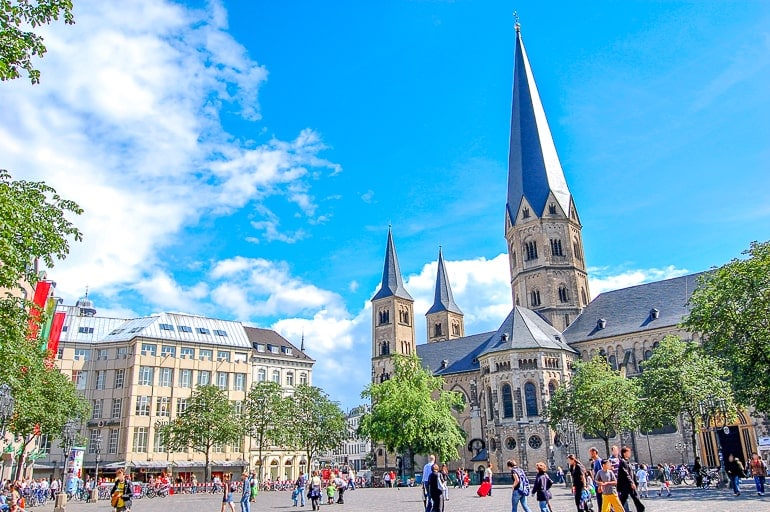
On the second day, you’ll head from Frankfurt to Bonn. As you might know, Bonn used to be the capital of the Federal Republic of Germany during the time that Germany was split into two countries. Later, the capital was relocated from Bonn to Berlin.
If you are interested in learning more about the history of Germany during your time in the country, then Bonn would be a good city to do that in. For example, you could visit the so-called “Haus der Geschichte” which is a museum about the history of the Federal Republic of Germany.
It won’t be difficult to get from Frankfurt to Bonn since the two cities are not too far apart. The journey will take approximately 1 hr 50 minutes by car and between 1 hr 20 minutes and 2 hrs if you take the train . Once again, we’d recommend that you book your train ticket in advance if possible.
Accommodation in Bonn: There are a number of accommodation options in Bonn which you can choose from – many are right in the city centre/old town. You can check here for accommodations and hotels in Bonn .
Keep in mind to book your accommodation for two nights for this itinerary. (You could also spend the following night in Cologne if you day tripped to there, though).
For a great hotel in the heart of the old town, check out BrauHotel Bonn . You can easily walk here from the central train station but they also have a and parking garage close by if you arrive by car. There’s also a craft beer bar on the ground floor!
Another option is the Hilton Bonn . This hotel offers you amazing views of the Rhine River. It’s a bit north of the city centre but still very much close to it. There is parking but it can be expensive so keep that in mind when you book.
Must-see Attractions in Bonn:
- Bonn Minster
- House of the History of the Federal Republic of Germany (Haus der Geschichte)
Day 3: Day Trip to Schloss Drachenburg / Cologne
On day three of this itinerary, you can choose to stay in Bonn, or go on one of two day trips: to Schloss Drachenburg (a castle not far from Bonn) or to Cologne which is also close by.
Schloss Drachenburg is actually a private villa/mansion that was built to look like a castle in the 19th century. Today, it is a popular attraction in the area.
From Bonn, you can either drive to Königswinter by car (and then leave your car at the car park) or take public transport to the Königswinter/Clemens-August-Straße station. You can find more information about that and opening hours etc. on the offical website .
If you are not a huge fan of castles, then you might opt for a day trip to Cologne instead. In this case, you might even decide to change your base and spend the night in Cologne instead of returning to Bonn at the end of the day. That is definitely an option that you can choose since there are lots of accommodation options in Cologne as well.
Getting to Cologne from Bonn will take you around 40 minutes by car (this can obviously depend on traffic) and only approx. 25 minutes by train . Just a quick warning: Trains can get very full if you are travelling during rush hour traffic – so try to avoid that if you don’t like being surrounded by lots of people in a small space.
Day 4: Münster
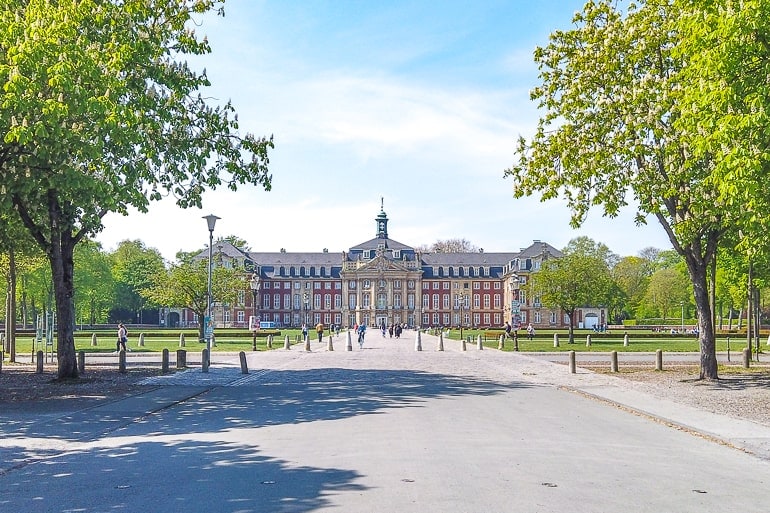
The next day you’ll head from Bonn – or Cologne – to Münster. Since Bonn and Cologne are so close, the journey wouldn’t really differ much from either city.
Münster is a smaller German city that we really enjoy. To be honest, it sometimes reminds Lisa of Copenhagen – mainly because of the many bikes that you can see all around the city. The University of Münster plays a big role in the city and the vibe – depending on which part of the city you are in – is noticeably younger.
One of the highlights of the city – for locals and visitors alike – is the lake Aasee which is located quite centrally. When the weather is nice, there are always people sitting on the grass enjoying the sun and maybe even out on the water (depending on the time of year). You can rent a small paddle boat to explore the lake from a unique perspective.
The journey from Bonn to Münster should take you slightly less than 2 hrs by car and between 2 hrs and slightly more than 3 hrs by train . If you want to save some money and are travelling with other people, then you should look into getting an “NRW Schönes Tag Ticket”. With this ticket, you wouldn’t be allowed to travel on ICE’s (the fast train), but the connections using only regional trains wouldn’t be much longer.
Accommodation in Münster: Münster might feel small but it’s actually pretty spread out and offers accommodations for all styles and budgets. You can check here for accommodations and hotels in Münster .
If you want a popular hotel option right in the centre, the H4 Hotel Münster is a short walk to the heart of the historic centre. It also has onsite parking for those travelling to Münster by car – but you can easily walk there from the train station in the south of the city centre.
Must-see Attractions in Münster:
- Münster Prinzipalmarkt
- Historic Town Hall
- Münster Cathedral
For a more detailed guide, have a look at our Things to do in Münster, Germany article .
Day 5: Hanover
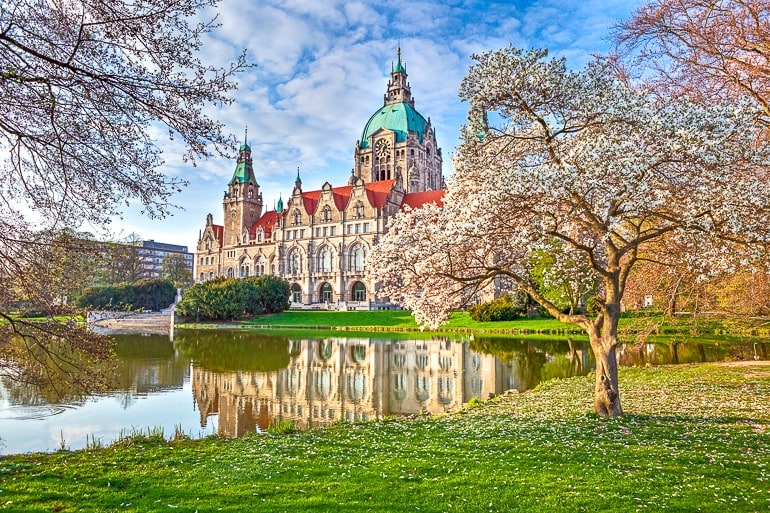
The following day you are travelling from Münster to Hanover. In German “Hannover” is actually written with two “n”, so don’t be surprised if you see it being written slightly differently.
Hanover is the biggest city and the capital of the German state called Lower Saxony. Compared to some other cities on this itinerary it is a less popular tourist destination. To be fair, even we haven’t spent that much time in Hanover yet. Hopefully we’ll be able to change that soon. However, that’s not to say that Hanover is not worth a visit.
Not only can you explore some beautiful gardens and interesting museums in the city, but it is also located pretty much halfway between Münster and Hamburg. That makes it a great stop to break up the journey and spent another day in a city that allows you to explore without too many other (international) tourists around.
By car , the journey from Münster to Hanover will take you around 2 hrs . If you choose to travel by train instead, it will take you approximately the same amount of time .
Accommodation in Hanover: Hanover is a larger city but the accommodation are still relatively packed together in and around the historic city centre. You can check here for accommodations and hotels in Hanover .
For a stay right in the city centre, check out the Hotel Loccumer Hof . This popular hotel is a very short walk from the central station which is perfect if you are arriving to Hanover by train. That said, they also have parking onsite so this hotel works well if you arrive by car!
For another hotel option, check out the Arthotel ANA Prestige am neuen Rathaus . This boutique hotel is directly across from the beautiful New Town Hall in the south end of the city centre by the greenspace and water! They also have a really nice breakfast and parking available.
Must-see Attractions in Hanover:
- New Town Hall
- Marktkirche
- Herrenhausen Gardens
Day 6: Hamburg
On day six of this 10-day itinerary you’re on your way to Hamburg. If you’ve read the details of any of the shorter itineraries in this article, you’ll know that we really like Hamburg.
The city offers modern areas, such as “HafenCity”, mixed with historic (e.g. “Speicherstadt”) and alternative areas (“Sternschanze”) . This makes exploring the city all the more interesting – there is truly something for everyone. During your time in the city, we’d also recommend that you climb the tower of the St. Michael’s Church. From up there, you get a beautiful view of most parts of the city.
The journey from Hanover to Hamburg won’t be long. Depending on the route you are taking (Highway A7 or A1), it’ll take between 1 hr 30 minutes and 2 hrs by car . If you opt for the train , you can expect the journey to take between 1 hr 15 minutes and 1 hr 30 minutes . This depends on the connection you choose.
Accommodation in Hamburg : Hamburg has many, many places to stay. You can check here for accommodations and hotels in Hamburg .
The Mövenpick Hotel Hamburg might be a good option if you have a car while you travel around Germany. This cool hotel is inside an old water tower which gives guests stunning views of the city around. There’s also parking onsite and it’s close to a transit stop for getting around the city.
Located not too far from the central train station, ARCOTEL Rubin Hamburg makes for a good hotel option if you don’t have a car. It’s located in St. Georg which is a lively area within walking distance of the city centre.
Those that need hostel for their stay in Hamburg might be happy with Generator Hamburg . It’s a popular hostel in the city and is close to the train station for easy getting around. If you’re unsure about where to stay, you can always check out our detailed guide on where to stay in Hamburg .
Once again, if you’d like to read our (very) short Hamburg guide, you can find our Things to do in Hamburg article here .
Day 7: Day Trip to Lübeck
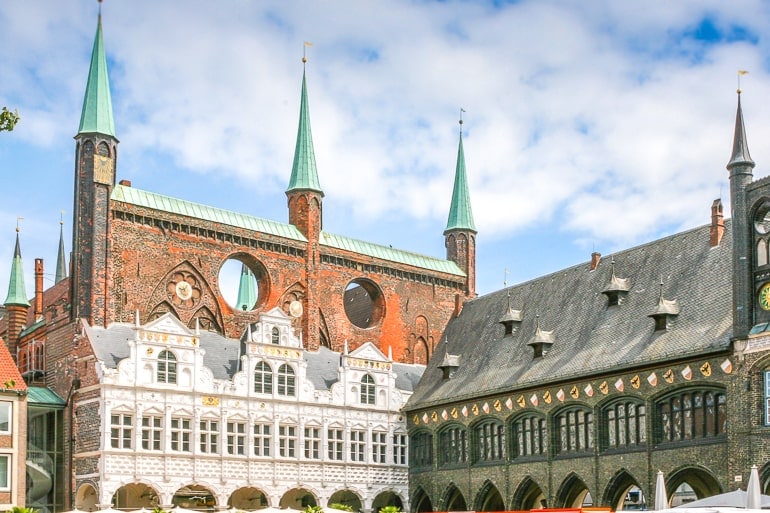
For the next couple of days, we decided to include some day trips from Hamburg. This allows you to stay in one accommodation for longer than just one night and gives you the option to see some more of Hamburg as well. If you don’t want to visit any other cities and want to spend more time in Hamburg instead, then feel free to skip one or both of the day trips mentioned.
Lübeck is the closer one of the two day trips mentioned from Hamburg. Within Germany the city is mainly known for its delicious “Lübecker Marzipan” (Lübeck Marzipan) – but of course there is much more to the city than just that. One of the highlights is the Holsentor, a red-brick city gate dating back to the 15th century.
The journey from Hamburg to Lübeck will take you slightly over 1 hr by car and just around 45 minutes by train . In our opinion, that’s great for a day trip since it gives you lots of time to actually see the city instead of spending a lot of time in the car/on the train.
Must-see Attractions in Lübeck:
- Marienkirche
- Heilig-Geist-Hospital
Day 8: Day Trip to Flensburg
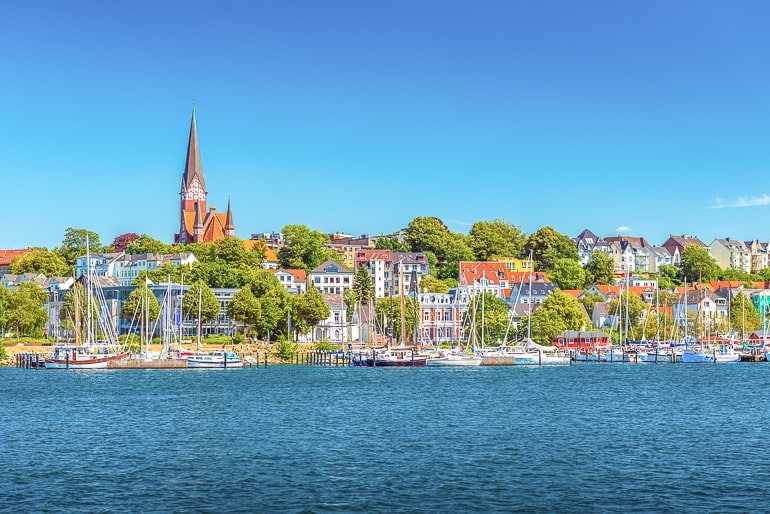
For the following day, we have another day trip option for you. The journey to Flensburg is slightly longer than to Lübeck – but it would be worth it. Flensburg is a smaller German city in the north of Germany, very close to the Danish border.
Since it is located close to the water, shipping plays an important role in the city to this day. If you’re interested in learning more about that, then the Maritime Museum would be a good place for you to visit.
Another thing we would recommend is a walk along the Rote Straße. Here you’ll find different “Hinterhöfe” (similar to backyards) with cute cafes and small shops.
Getting to Flensburg from Hamburg should take slightly less than 2 hrs by car and the same amount of time by train . As already mentioned, it would be a longer journey than to Lübeck, but if you want to experience a smaller, maritime city, the trip would be worth it!
Must-see Attractions in Flensburg:
- Historischer Hafen (Historic Harbour)
- Flensburger Schifffahrtmuseum (Maritime museum)
- Museumsberg Flensburg
Day 9+10: Berlin
On the second to last day of this itinerary, you’ll head from Hamburg to Berlin where your journey ends. This allows you to spend two days in the German capital. Since there is so much to do in Berlin, we’d recommend that you do some research beforehand to narrow down which attractions you’d like to visit.
If you’ve never been to Berlin before classics like the Brandeburg Gate and the Reichstag would be a good place to start. We’ve written a few different articles about Berlin – one about classic attractions (link below). Maybe these will be a good starting point to gather some more information!
The drive from Hamburg to Berlin will be one of the longest mentioned as part of this itinerary – so you should keep that in mind. It’ll take approximately 3 hrs 20 minutes by car (with traffic it could be longer), but just 1 hr 50 minutes by train .
It’s a popular train route since it connects the two biggest German cities so trains run frequently throughout the day. Once again, we’d recommend to book your train ticket in advance to get one of the discount tickets and save some money.
Accommodation in Berlin : As the capital city, there are lots of accommodation options for Berlin. You can check here for accommodations and hotels in Berlin .
Those travelling to Berlin with a car should look into the Park Plaza Wallstreet Berlin Mitte for a hotel in the city centre with free street parking available. There’s always paid parking for a reasonable fee if those are full and you’ll be close to top attractions.
The NH Collection Berlin Mitte am Checkpoint Charlie is a popular hotel option for those coming to Berlin by train since it’s close to attractions in the city centre and you can get there very easily with the metro.
Finally, if you need a hostel/hotel, check out PLUS Berlin . This is where Eric stayed a few years back and really enjoyed it. You’ll be close to the East Side Gallery – the part of the Berlin wall with the artwork on it. It’s also easy to get in and out of the city centre from here.
Also feel free to have a look at our guide on Berlin Attractions and tips for a day in Berlin .
Germany Itinerary 10 Days – South
This 10 day Germany itinerary begins and ends in Frankfurt – so it’s pretty much a small loop through the southern part of the country. If you want to be closer to the mountains (for part of the trip at least) instead of the sea, then this itinerary might be better suited for you than the other 10 day version.
For this itinerary, the total driving time would be slightly over 17 hours with a total distance of approx. 1330 kilometres. This includes the day trips to Neuschwanstein Castle, Garmisch-Partenkirchen, and Tübingen. So depending on if/how you modify the itinerary, these estimates could differ.
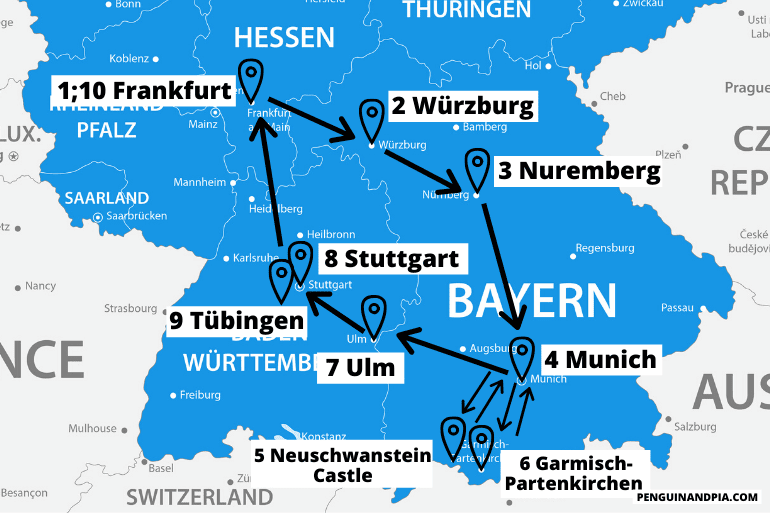
Day 1: Frankfurt Day 2: Würzburg Day 3: Nuremberg Day 4: Munich Day 5: Day Trip to Neuschwanstein Castle Day 6: Day Trip to Garmisch-Partenkirchen Day 7: Ulm Day 8: Stuttgart Day 9: Day Trip to Tübingen Day 10: Frankfurt
Similar to the northern version of this itinerary for 10 days, you begin your adventure in Frankfurt. During your day in the city, you shouldn’t forget to visit the Römerberg with the beautiful half-timbered houses. If you want to get a nice few of the city from above, then you should look into visiting the Main Tower as well.
Frankfurt is also a great place to pick up your rental car – if you decide to complete this itinerary by car instead of using public transport. You can either pick up a car at the airport or at different spots in the city centre. This obviously also depends on the rental company you choose.
Accommodation in Frankfurt: Frankfurt is full of accommodation options – from the city centre to the airport. You can check here for accommodations and hotels in Frankfurt .
For a hotel in the heart of the city, check out the Motel One Frankfurt-Römer . Complete with underground parking, good breakfast, and a top location in the centre and close to the river, this hotel is a decent option if you are travelling around with a car.
For those not travelling with a car (and taking the trains around Germany), check out Fleming’s Express Hotel Frankfurt . This nice looking hotel is really popular for its breakfast, price, and the fact that it’s steps from the central train station.
Day 2: Würzburg
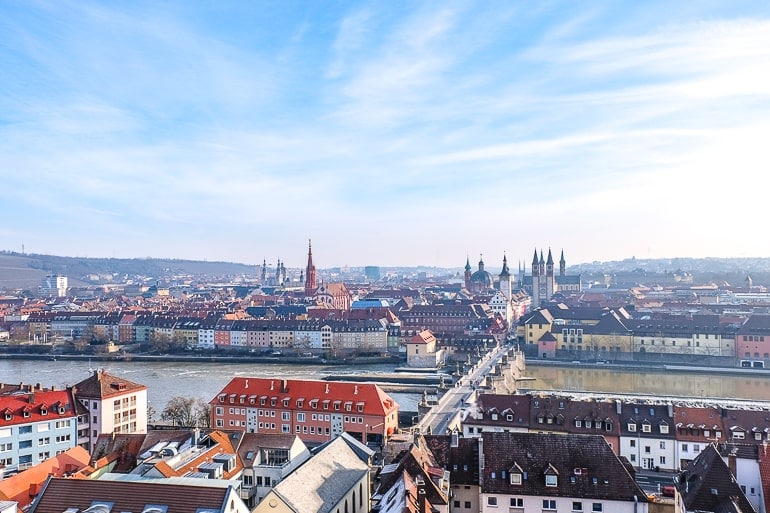
On day two of this itinerary, you’ll be on your way to Würzburg, a small German city that we’re always happy to return to. Similar to Stuttgart, Würzburg is located in a region that is known for its wine.
As such, it comes as no surprise that a highlight in Würzburg is to drink a glass of (white) wine on the Old Bridge across the Main river. We’ve done that multiple times and would especially recommend it during the evening when it gets dark.
Another thing you shouldn’t miss in Würzburg is the short walk up the hill to Marienberg Fortress. Up there you can not only explore the old fortress, but you also get a beautiful view of the old town and other parts of the city.
We actually wrote a whole guide about Würzburg (link below) where we not only talk about things to do but also mention some great cafes and restaurants!
The drive from Frankfurt to Würzburg will be a short one. It should only take you around 1 h 20 minutes by car and between 1 h 07 minutes and 1 hr 50 minutes by train depending on the type of train you’re taking (ICE vs. regional train).
Accommodation in Würzburg: Würzburg isn’t a huge city so you’ll find a number of places to stay packed together in the city centre and a number of other hotels and guesthouses around. You can check here for accommodations and hotels in Würzburg .
On a recent trip, we stayed at the Best Western Hotel Würzburg-Süd . It’s a little south of the city centre but the tram stop is right outside the hotel so you’re into the historic city centre in minutes. There is also an onsite parking lot if you’re arriving to Würzburg by car. We booked this one last minute but we would stay again.
If you want to stay a little more central, then you can check out Hotel Strauss . With a location close to the river, the train station, and the city centre – it’s a great option fo those arriving by train.
We also once stayed at Hostel Babelfish for a budget accommodation and it was honestly not too bad, either. It’s right across from the train station for easy access in and out of the city.
Must-see Attractions in Würzburg:
- Marienberg Fortress
- Würzburg Residence
If you want more tips for visiting Würzburg, have a look at our detailed Things to do in Würzburg Guide (+ insider tips) .
The next day you’ll be on your way to Nuremberg, which is another city in Bavaria that we really like. In German, Nuremberg is actually written/called “Nürnberg” – just an FYI, so you’re not confused when you see this written somewhere.
As we have already mentioned in the description of one of the shorter itineraries, there is a lot of history to be found in the city. Not only can you explore an old castle in the middle of the city, you can also learn a lot about Germany’s dark history if you’re interested.
Getting from Würzburg to Nuremberg will take approx. 1 hr 20 minutes by car and between 53 minutes (ICE) and 1 hr 13 minutes (regional) by train . If you’re travelling with more people and decide to just take a regional train, look into getting a “Bayernticket” as that could save you some money.
Accommodation in Nuremberg : Nuremberg is a larger and well-travelled city in Germany so you will have no problem finding a place to stay! You can check here for accommodations and hotels in Nuremberg .
We ended up staying in the very popular Five Reasons Hotel and Hostel and we enjoyed our stay. The room was bright with new furnishings. It’s also located just inside the old city walls so we were close to the metro, a short walk to central train station, and also close to the heart of the old town!
Very nearby was the Sheraton Carlton Nuremberg – we had friends stay there. They really liked this hotel which had a swimming pool with city views and other great perks. If you are arriving to Nuremberg by car, there’s a parking lot across the street from the hotel as well as street parking around. The train station is very close as well so it’s a great location overall.
- Documentation Center Nazi Party Rally Grounds
Day 4: Munich
On day four of this Germany trip, you’ll be on your way to Munich. As you might know Munich is the capital of the German state called Bavaria and there are lots of things to do in this city.
That’s why you’ll spend three nights in Munich. This way you can explore the city in more detail if you want or go on a couple of day trips from Munich to see other popular attractions as well. It’s really up to you.
The journey from Nuremberg to Munich won’t be overly long and it’s a route Lisa has driven many times. It’ll take you around 2 hrs by car (of course traffic depending) and between 1-3 hrs by train.
Since this is a popular train route, there are lots of different connections of varying length – some are quick and others are slower trains with more stops. Since that’s the case, we’d recommend that you plan in advance and try to catch a better connection to avoid an unnecessarily long train ride!
Accommodation in Munich: Since Munich is such a popular and large city, there are plenty of accommodation options for you to choose from. You can check here for accommodations and hotels in Munich . Just remember to book your accommodation for three nights if you are following this itinerary!
We stayed at the H2 Hotel München Olympiapark which is a very popular hotel because of the price and the value. It was a prefect stay. The breakfast was amazing, they had parking, and the location was great – only a quick metro to the heart of the city centre. You also have the Olympic Park and BMW Museum as top attractions nearby!
If you’re itching to stay right in the heart of the action in Munich, check out the Platzl Hotel Superior . This is a hotel around the corner from Marienplatz in the old town with the famous beer hall Hofbräuhaus just steps away. The central train station is also walkable from here.
Of course, you can learn all about the best areas to stay in more detail with our Munich accommodation and neighbourhood guide .
Learn more about Munich with our one day in Munich post!
Day 5: Day Trip to Neuschwanstein Castle
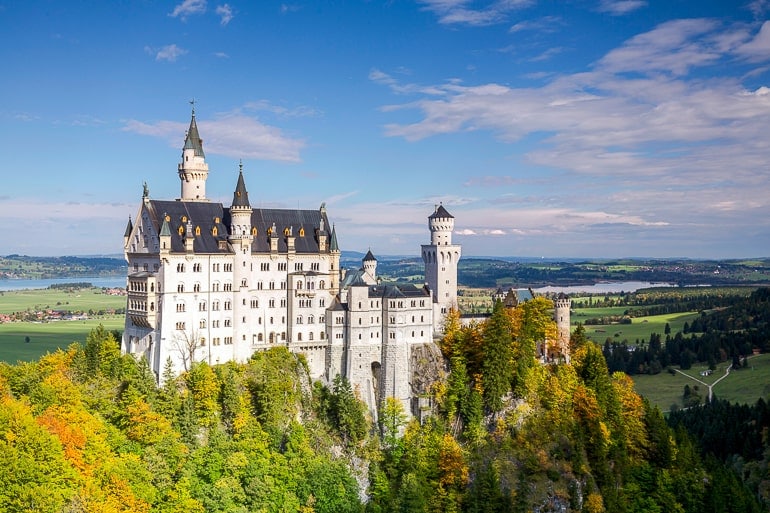
Neuschwanstein Castle probably doesn’t need a lot of introduction – it is arguably one of the most popular day trips from Munich. If you want to see this fairy-tale castle with your own eyes, then this day trip might be for you.
However, it is such a popular attraction that depending on the time of year it can get incredibly crowded. So if you are planning this itinerary for the middle of summer, we’d honestly recommend that you think twice about whether you really want to do this day trip. A second day in Munich wouldn’t be so bad either, would it?
If you are set on visiting Neuschwanstein Castle, then have a look at our Day Trips from Munich Guide . In that article – under the Neuschwanstein Castle section – we talk about all the different ways you can get to the castle.
In case you don’t want to stress too much about logistics and are not travelling with a rental car, you could always look into a day tour that brings you to Neuschwanstein Castle and then back to Munich. Here are some examples:
- Neuschwanstein and Linderhof Palace – A very popular tour to check out two castles in one day!
- Just Neuschwanstein Castle – Grab your live guide and check out the classic castle you came to see!
- Neuschwanstein Castle and Füssen – Explore the surrounding area on this day trip + see that great castle!
Day 6: Day Trip to Garmisch-Partenkirchen
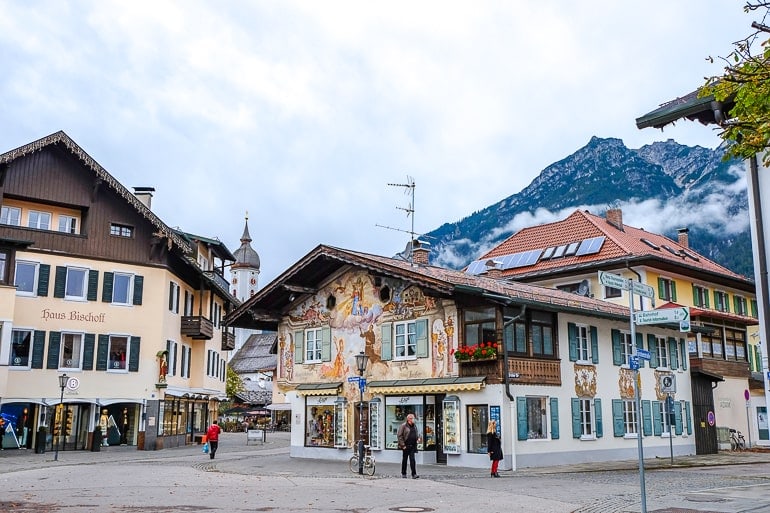
Another popular day trip from Munich – and the one we would recommend for Day 6 of this itinerary – is a trip to Garmisch-Partenkirchen in the south of Bavaria, close to the Austrian border.
We have been to Garmisch-Partenkirchen recently and really enjoyed our day there. However, that was during the shoulder season, so we can’t really say much about how busy it gets in the summer or during the ski-season.
There are a few good reasons for visiting Garmisch-Partenkirchen. The obvious one is that the town is super close to the mountains and it is very easy to reach the “Zugspitze” (Germany’s highest mountain) from here.
Of course, you don’t have to go that high up – there are also lots of other mountains and great hiking trails in the area if you’re looking for a day in nature.
Other reasons why people come to Garmisch-Partenkirchen is to visit the Partnach Gorge which is quite beautiful and/or the old town where you can admire the decorative paintings found on many houses.
It’s actually quite easy to get from Munich to Garmisch-Partenkirchen. By car , it should take you around 1 hr 10 minutes and by train the journey would be approx. 1 hr 22 minutes . It’s actually a nice drive/train ride since you’ll get some great views of the mountains as you get closer to your destination.
Must-see Attractions in/close to Garmisch-Partenkirchen:
- Partnach Gorge
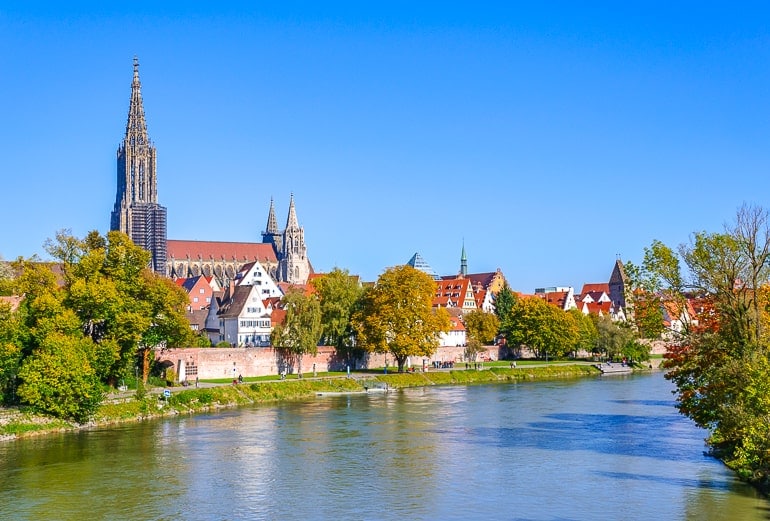
The following day you’ll travel from Munich to Ulm, a small city in the German state of Baden-Württemberg. It is actually located right by the border with Bavaria – “Neu Ulm” in fact is a city on the Bavarian side. When you’re there, it sometimes feels like it is just one bigger city. For you as a visitor, this doesn’t really matter – just an interesting side note.
Ulm is mainly known for having the church with the tallest steeple in the world – so that is something you shouldn’t miss during your visit. Other than that, we’d also recommend that you check out the Fishermen’s Quarter where you can find some beautiful, half-timbered houses.
Getting from Munich to Ulm won’t take you long. The journey will take approx. 1 hr 40 minutes by car and between 1 hr 19 minutes and 2 hrs by train. Once again, this depends on which type of train connection you choose (ICE vs. regional trains).
Accommodation in Ulm: It’s best to stay in the centre of Ulm since it’s not huge and the attractions can mostly be found there. You can check here for accommodations and hotels in Ulm .
For a boutique hotel option right in the city centre, check out Boutique 005 Ulm City . This hotel is super walkable to the train station if you are arriving by train but also offers an option for parking. It’s location makes it really close to all the top attractions in the city.
For a stay closer to the river, you can check out the Hotel am Rathaus – Hotel Reblaus . With onsite parking available and a really good breakfast, this more “authentic” hotel is an experience not to be missed in Ulm.
Must-see Attractions in Ulm:
- Ulmer Münster
- Fishermen’s Quarter
Day 8: Stuttgart
From Ulm, you’ll head to Stuttgart on the next day. Stuttgart is a city that we have mentioned a few times in this article already. If you’ve read some of the other itineraries, you’ll know that Stuttgart is known for both cars and wine.
Of course, there’s more to see in the city than that. If you’re interested in architecture, you might enjoy visiting the New Palace at the “Schlossplatz” and if you’re into art, the Staatsgalerie (an art museum) might be for you.
Getting to Stuttgart from Ulm will only take slightly over 1 hr by car and approx. the same amount of time by train . There are slower trains – called RB instead of RE which stands for “Regional Express” – that take longer than that. However, if you plan ahead, you shouldn’t have a problem catching an RE or ICE Train since they run frequently throughout the day.
Accommodation in Stuttgart: Since there are a number of places to stay in, you can check here for accommodations and hotels in Stuttgart .
Those with a car can check out the Abalon Hotel ideal because it has an underground parking garage while those travelling to Stuttgart by train can check out the Pension am Heusteig since it’s easy to get to walking or with the metro.
Day 9: Day Trip to Tübingen
On day 9 of this itinerary, you have the choice between either spending a second day in Stuttgart or taking a day trip to Tübingen, a university town not far away.
Tübingen is a popular day trip from Stuttgart and is mainly known across the country for its old university. In fact, some of Lisa’s friends have studied there. When in town, you shouldn’t forget to visit the market square with its 15th century town hall. Another popular attractions is the Hohentübingen Castle on the hill which nowadays is home to a museum.
It won’t take you long at all to get to Tübingen from Stuttgart. That makes it great for a (half-)day trip. The journey should only take around 42 minutes by car and between 43 minutes and 1 hr 30 minutes by public transport – depending on the connection you choose.
Must-see Attractions in Tübingen:
- Hohentübingen Castle
- Market Square with Town Hall
- Hölderlinturm
Day 10: Frankfurt
On the last day, you’ll make your way back to Frankfurt. This is where your itinerary ends since it will hopefully be easy for you to get back home from here.
The journey from Stuttgart back to Frankfurt will probably be the longest one for this trip – but it’s still easily doable. It should take you approx. 2 hrs 25 minutes by car and between 1 hr 17 minutes and 3 hrs 30 minutes by train. Once again, this is dependent on the connection you choose (ICE vs. regional trains).
Accommodation in Frankfurt: Since you’re back in Frankfurt, we already went over accommodations in Day 1 of this same itinerary. That said, you can check here for accommodations and hotels in Frankfurt and specifically check out the Motel One Frankfurt-Römer for a central hotel with parking.
Germany Itinerary 14 Days
This Germany itinerary is the longest one that we have for you – for now. If anyone is interested in a 21 day version, please let us know!
The distance you’d cover with this 14 day itinerary would be around 1960 kilometres . The driving time would be approx. 22.5 hours – but of course, this varies depending on traffic and the exact route you decide to take.
As you’ll see below, sometimes the driving time between two cities is longer than 3 hours. So, while this itinerary is totally doable in two weeks – if you wanted to slow down the pace a bit, you could just as easily spend more time in some of the cities and complete the itinerary in more days.
Since you have probably already read about most of these places in some of the itineraries above, we’ll try to keep the descriptions short and not get too repetitive.
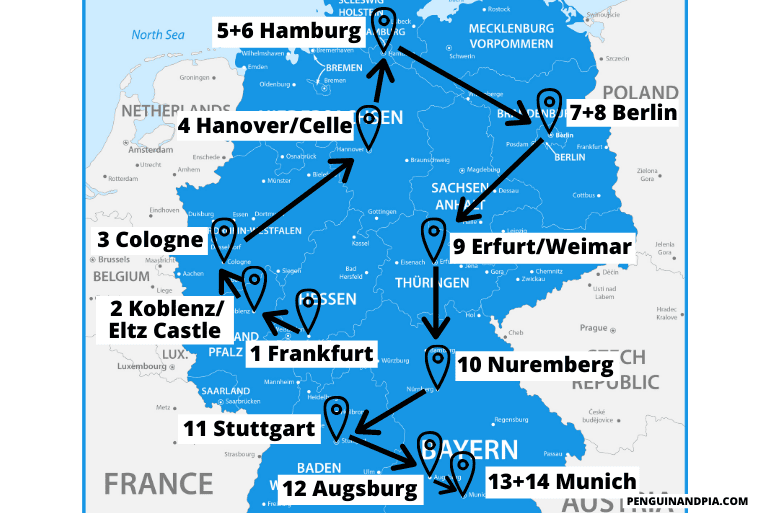
Our version here is written as an “incomplete route” from Frankfurt to Munich. However, as with most of our itineraries, you are welcome to reverse the direction if that works better for you and/or start and end in the same city. So, to see a big part of the country, your 14 day Germany itinerary could look something like this:
Day 1: Frankfurt Day 2: Koblenz / Eltz Castle Day 3: Cologne Day 4: Hanover or Celle Day 5+6: Hamburg Day 7+8: Berlin Day 9: Erfurt or Weimar Day 10: Nuremberg Day 11: Stuttgart Day 12: Augsburg Day 13+14: Munich
Once again we begin this itinerary in Frankfurt since it is an easy city to get to. As we have mentioned before, there are a few things to see in the city so you can start exploring on day one!
Frankfurt is also a great city to pick up a rental car. Since many international (business) travellers fly into Frankfurt, there should be many cars available with automatic transmissions. In smaller German towns you’ll find that this is not always the case.
Accommodation in Frankfurt: If you are making a stop in Frankfurt, you can check here for accommodations and hotels in Frankfurt .
As for accommodation options, the Motel One Frankfurt-Römer has parking available and is located in the city centre close to the Main River. That’s important if you have a car with you but it’s also walkable to the train station, so you know.
Another great hotel option that is even closer to the train station is Fleming’s Express Hotel Frankfurt . This hotel is known for its prime location to the north of the station, its tasty breakfast, nice decor, and fair price. This is definitely a popular place you should at least look into if you are travelling by train around Germany.
Day 2: Koblenz / Eltz Castle
On day two of this itinerary, you’ll be on your way to Koblenz, a small German city on the Rhine river. You can either explore the city or use it as a base to visit one of the many castles close by.
Our suggestion would be a visit to Eltz Castle which is a beautiful medieval castle surrounded by a forest. Please keep in mind that the castle is not open year round. You can check opening hours here .
You could also visit Eltz Castle as a day trip from Frankfurt but then you’d have to return to Frankfurt at the end of the day. This wouldn’t make much sense unless you want to spend some more time in Frankfurt anyway, as Cologne (your next destination) is closer to Koblenz and Eltz Castle than Frankfurt.
The drive from Frankfurt to Koblenz should take around 1 hr 30 minutes by car . If you want to take the train , the journey would take between 1 hr 30 minutes and 2 hrs 15 minutes . From Koblenz, it is only about a 30 minute drive to Eltz Castle.
Accommodation in Koblenz: Since Koblenz isn’t that large, you should have no problem finding and choosing an accommodation that works for you. You can check here for accommodations and hotels in Koblenz .
If you want a popular option right in the heart of the city centre, you should see the Sander Hotel . This hotel is located within walking distance to the rivers as well as restaurants and shops in the centre. If you travel by car to Koblenz, they have onsite parking which is handy. That said, you can also easily walk from the hotel to the train station in minutes.
Day 3: Cologne
The next stop on your 14 day Germany itinerary is Cologne, a city we have mentioned already in some of the previous itineraries. As you might know, the highlight of the city is the Cologne cathedral which is quite an impressive sight. As the city is located on the Rhine river, a boat tour might also be a great activity depending on the time of year you are visiting.
Getting to Cologne from Koblenz takes around 1 hr 15 minutes by car and between 50 minutes and 1 hr 15 minutes by train . The train tracks follow the Rhine river for part of the journey which allows for some beautiful views!
Accommodation in Cologne : There are lots of great places to stay in Cologne. You can check here for accommodations and hotels in Cologne .
We recently stayed at the Lindner Hotel City Plaza which was great value for money. The breakfast buffet is incredible and it’s an easy, short walk into the city centre near the Cathedral. It also has parking available for those with a car.
If you want to stay a little closer to the river and the Old Town, check out the CityClass Hotel Residence am Dom . With many things around to keep you busy – like attractions, food, and/or drinks – you’re just a short walk to the central train station if you stay here.
For those looking for a hostel, Cologne Downtown Hostel was a great stay for Eric a number of years ago. It’s really popular, in a great location, and has a nice rooftop balcony to enjoy.
Day 4: Hanover or Celle
Day 4 of this itinerary will take you to either Hanover or Celle depending on your preference. Celle is a noticeably smaller city/town than Hanover and the two places are only a few minutes apart.
Getting from Cologne to Hanover will take approximately 3 hrs 10 minutes by car and between 2 hrs 40 minutes and 3 hrs 5 minutes by train .
Accommodation in Hanover: Since Hanover is a well-travelled city for people moving around Germany, there are a number of accommodation options in and around the city centre. You can check here for accommodations and hotels in Hanover .
To stay very close to the central train station in the city centre, you should see the Hotel Loccumer Hof . The location makes it great if you are travelling by train and on foot. They also have onsite parking if you are arriving to Hanover with a car!
To the south of this hotel, the Arthotel ANA Prestige am neuen Rathaus is an option right across from the New Town Hall. This hotel has a beautiful, light style and is also close to the water/parks. Complete with breakfast and onsite parking, you can’t go wrong here!
If you want to spend a night in a smaller German city instead, then Celle is a good option as it is not far from Hanover. That will make it easy to reach the next stop on your itinerary without too much of a detour. The journey from Cologne to Celle would be slightly longer and take around 3 hrs 30 minutes by car and 3 hrs 19 minutes by train .
Accommodation in Celle: Celle isn’t that big at all – so there are only a handful of places to stay. That said, there are still some great options. You can check here for accommodations and hotels in Celle .
Of note, check out Hotel Borchers . This hotel – one of only a handful located in the heart of “city centre” is a top pick with a tasty breakfast and an underground car park. You can also walk there from the Celle train station which is located not too far across town.
Must-see Attractions in Celle:
- Celle Castle
- Bomann Museum
- French Garden
Day 5+6: Hamburg
An itinerary across a large part of the country wouldn’t really feel complete without including Hamburg. Since there is quite a bit to see in this hanseatic city, you’ll spend two nights in the city to give you more time to explore.
Getting from Hanover to Hamburg will take you approx. 1 hr 45 minutes by car and between 1 hr 15 minutes and 2 hrs 30 minutes by train . As mentioned before, this varies depending on the type of train connection you choose.
The journey from Celle to Hamburg will be approximately 15 minutes shorter at 1 hr 30 minutes by car . If you opt for the train, you can expect travel times between 1 hr 10 minutes and 2 hrs .
Accommodation in Hamburg : Since Hamburg is a well-travelled city, it makes sense that there are loads of places and areas to stay in. You can check here for accommodations and hotels in Hamburg .
The Mövenpick Hotel Hamburg might work for those with a car since they have onsite parking. This old water tower is a different hotel than you might be used to but it’s a great experience overall.
Something closer to the central station to get to on foot would be the ARCOTEL Rubin Hamburg which is located in St. Georg. This is an area with shops and restaurants and is very much part of the city centre.
Those looking for a budget accommodation can check out Generator Hamburg which is a popular hostel close to the train station. If you’re ever unsure or want more advice, we have a detailed guide on where to stay in Hamburg .
Day 7+8: Berlin
Of course, we couldn’t forget to include a stop in the capital of the country when planning a longer trip through Germany. Since there is so much to do and see in Berlin you will spend two nights there.
This will also give you some more time to recover from all the driving you have done so far on this journey. Getting from Hamburg to Berlin takes approximately 3 hrs 20 minutes by car (obviously traffic depending) and just about 1 hr 50 minutes by train .
Accommodation in Berlin : There are lots of hotel options in Berlin. You can check here for accommodations and hotels in Berlin .
The Park Plaza Wallstreet Berlin Mitte is a good option in the city centre for those coming to Berlin with a car while the NH Collection Berlin Mitte am Checkpoint Charlie is located right at the attraction “Checkpoint Charlie” in the city centre.
A great option for a hostel/hotel where Eric stayed a few years back is PLUS Berlin . You can find it near the famous East Side Gallery which is a very popular attraction to check out.
As mentioned a few times now, we also have more articles on t hings to see in Berlin and a one day Berlin itinerary .
Day 9: Erfurt or Weimar
For the following day you have the choice between Erfurt or Weimar as your next destination. Both are small cities in the state of Thuringia with Weimar being smaller than Erfurt. If you know anything about Martin Luther, an important figure in the Protestant reformation, then you might have heard of one or both of these places before.
If you’re looking for a place with a beautiful old town and some nice churches as well as buildings for you to explore, then we’d really recommend Erfurt. We had a great time during the days we spent there. The city also has some really nice, cozy cafes if that is something that you care about.
Getting to Erfurt from Berlin will take a while – but it is a great stop on the way to the south of Germany. You can expect the journey to take approx. 3 hrs 40 minutes by car and just around 1 hr 50 minutes by ICE (fast train) .
Accommodation in Erfurt: With Erfurt being a smaller city with a smaller central area to explore, finding a place to stay isn’t too difficult. You can check here for hotels and accommodations in Erfurt .
When we visited Erfurt, we booked the Gästehaus in der Gotthardtstraße . This was a simple guesthouse with a nice host and cozy rooms located just a short walk north of the Krämerbrücke. There’s also a small parking lot onsite if you’re coming to Erfurt with a car.
For a stay that is more central, check out Hotel Krämerbrücke Erfurt . It’s located basically right beside the Krämerbrücke making it a great option if you are travelling by train and you’re on foot.
Once again, if you want to learn some more about Erfurt before you visit the city, check out our detailed Erfurt Guide here .
If you instead preferred to learn some more about the well-known German writers Goethe and Schiller – or about Germany’s dark past – then you should plan to visit Weimar instead.
Two of the highlights there are Goethe’s and Schiller’s House – now turned into museums. Close to Weimar there’s also the Buchenwald Memorial which was a former Nazi concentration camp. This was the first KZ-Memorial Lisa ever visited. It was a somber experience, but also an important one in regards to understanding more about Germany’s past.
The journey from Berlin to Weimar will be slightly shorter than to Erfurt – at least by car. It’ll take approx. 3 hrs 15 minutes by car and around 2 hrs 20 minutes by train .
Accommodation in Weimar : There are a handful of places to stay in Weimar since it’s a smaller city – but you still have good options. You can check here for accommodations in Weimar .
In particular, check out Amalienhof Hotel und Apartment . This classic and very popular hotel is just south of the heart of the city centre. It features parking onsite and an excellent breakfast. It’s also not too far to walk to the train station if you are arriving on foot.
Must-see Attractions in/close to Weimar:
- Buchenwald Memorial
- Goethe’s House
- Schiller’s House
Day 10: Nuremberg
On day 10 of your itinerary, you’ll drive – or take the train – from Erfurt/Weimar to Nuremberg. This Franconian city has also been mentioned in some of the shorter itineraries.
The journey from Erfurt to Nuremberg will take approx. 2 hrs 40 minutes by car in a southern direction. The drive from Weimar to Nuremberg will just be a couple minutes longer.
If you decide to take the train, the journey would take between 1.5 hrs and 2 hrs from Weimar and between 1 hr 10 minutes and 1 hr 30 minutes from Erfurt .
Accommodation in Nuremberg : Nuremberg is a city with loads of history and attractions so it’s very popular. As such, you will find hotels and accommodations all over the city – from the old town to the surrounding areas. You can check here for accommodations and hotels in Nuremberg .
We booked a stay at Five Reasons Hotel and Hostel and we would recommend it. You can find the place inside the massive old city walls so the location was great – walkable to the central train station and also to go find top attractions.
On the same trip, friends of our stayed at the Sheraton Carlton Nuremberg . It was close to where we stayed and they really enjoyed it. There’s this great pool on an upper floor with city views as well as a parking lot across the street if you travel to Nuremberg by car. The train station is close as is the old town by walking so it’s great option overall, too.
Day 11: Stuttgart
The following day you will be on your way from Nuremberg to Stuttgart – once again, a city we have mentioned multiple times now during this article. From Nuremberg, it’ll take you around 2 hrs 15 minutes by car and between 2 hrs 10 minutes and 2 hrs 30 minutes by train to get to Stuttgart.
As we’ve mentioned before, if you are driving and have the time, you could take a small detour and stop in Rothenburg ob der Tauber for a stroll through its beautiful old town. We’ll leave that up to you!
Accommodation in Stuttgart: You can check here for accommodations and hotels in Stuttgart .
The Abalon Hotel ideal has parking for those with a car while the Pension am Heusteig is a guesthouse close by but is easy to get to by the metro system if you arrive by train to central station and you are walking.
Day 12: Augsburg
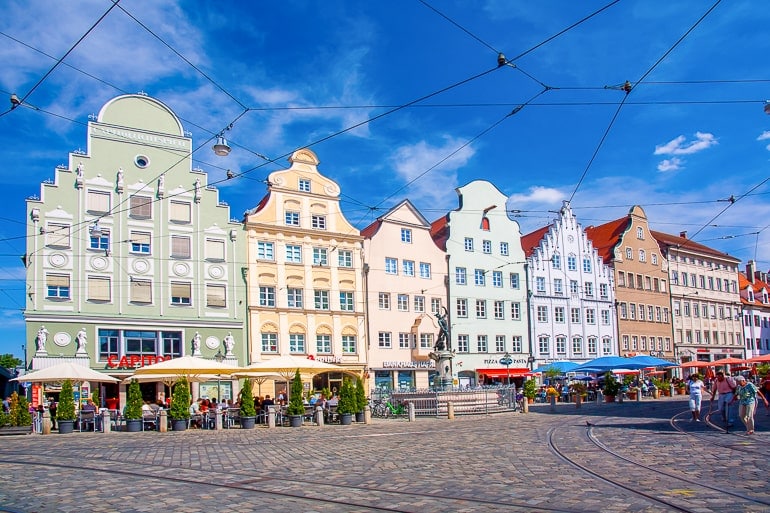
On day 12 you’ll be on your way from Stuttgart to Augsburg, a small city in Bavaria and one of Germany’s oldest cities. Around Germany, most people have heard of Augsburg because of its “Fuggerei” – a historic social housing complex where rent has increased very slowly over the centuries. It’s certainly worth a visit!
It’ll take you around 2 hrs by car to get from Stuttgart to Augsburg. If you opt for the train , then you can expect the journey to take approx. 1 hr 40 minutes .
Accommodation in Augsburg: In Augsburg, you will find a number of places to stay around the city centre. You can check here for accommodations and hotels in Augsburg .
For a reliable stay, check out Hotel Augusta . This popular hotel – located right in the city centre – features breakfast and has parking available if you are travelling to Augsburg by car.
The nice thing about Augsburg is that because it’s a smaller city, you can easily walk to the hotel from the train station if you are arriving by train.
You might also check out City Hotel Ost am Kö which is another hotel in the heart of the centre walkable to the station. It also has breakfast and parking garage right nearby.
Must-see Attractions in Augsburg:
- Augsburg Cathedral
- Perlach Tower
Day 13+14: Munich
On your second to last day of this itinerary you will drive from Augsburg to Munich. That’s the last stop on your two week Germany adventure. In Munich, there is more than enough to see to spend two days in the city.
Munich also has an airport with good international connections in case you’re coming from overseas and need to take a plane to get back home. If that’s not the case, we’d encourage you to see whether the train would be an alternative to get you back home as well.
The journey from Augsburg to Munich should take just less than 1 hr by car and between 30 and 48 minutes by train. So it’s certainly one of the shortest transitions mentioned in this article.
Accommodation in Munich: If you’re exploring Munich while in Germany, there is no shortage of places to stay and areas to check out. You can check here for accommodations and hotels in Munich . For this itinerary, remember to book your Munich accommodation for two nights.
We really liked our stay at the H2 Hotel München Olympiapark . From the really good breakfast, nice rooms, and excellent location with metro access nearby – you cannot beat the price for Munich. There’s also parking available if you’re travelling with a car to Munich.
For a spot right in the heart of Munich’s charming old town, check out the Platzl Hotel Superior . This is a trendy hotel that puts you super close to all the action at busy Marienplatz and is steps from Hofbräuhaus, the beer hall made famous decades ago. You can also catch the metro or walk to the central train station from here.
If you are looking for more details on accommodations in this city, we wrote a detailed guide on where to stay in Munich .
To learn more about the city – as we have mentioned before – check out our post on Munich in a day if you want more details about the city!
And there you have it – one massive Germany guide with more than one Germany itinerary to suit your travel needs! Whether you’re looking for a short 5 day or a wild 14 day itinerary – we’re sure you’ll have a great time exploring Germany. We’re actually really happy to have created this post – Lisa especially. It’s always fun to help others explore your home country!
As always, Happy Germany Itinerary Waddlin’, – L&E
- Compare flights on Skyscanner
- Check for Hotel Deals or Book A Hostel
- Get A Rental Car (depending on the destination)
- Research plug types and possibly get a travel adapter
- Go over our packing list
Pin it for later!
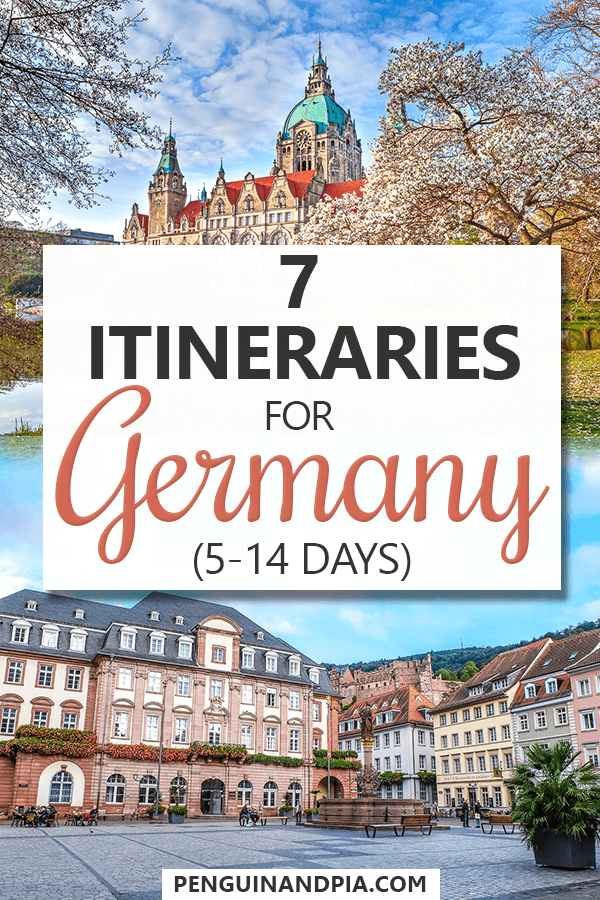
As an Amazon Associate we earn from qualifying purchases.
Destinations
Privacy policy
Disclaimer & Affiliate Disclosure
Terms of use
© 2024 Creativlier Media Inc.
- Natural Wonders
- Federal States
- UNESCO Sites
- Architecture
- Art Museums
- Famous People
- Holidays & Customs
- Plants and Animals in Germany
- Extreme Sports
- Family Trips
- The Romantic Road
- Top Ski Resorts
- Do's & Don'ts
- Privacy Policy
- About Lydia
Welcome to My Germany
Discover the adventures that await.
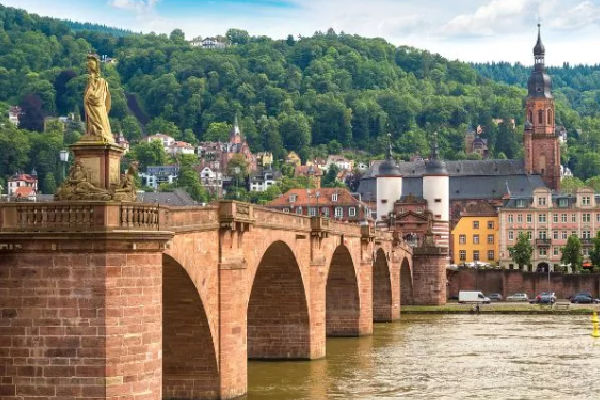
Discover Cities
A rundown of the best cities in Germany to visit. Where to go for historical, cultural, and culinary experiences set in stunning landscapes and beautiful architecture.
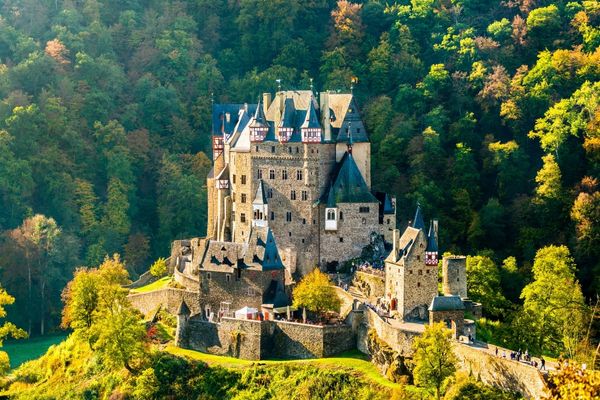
Discover Castles
Discover some of Germany's famous castles, from the iconic Neuschwanstein to the tiniest of country lodges. Uncover interesting facts and helpful tips as you explore!
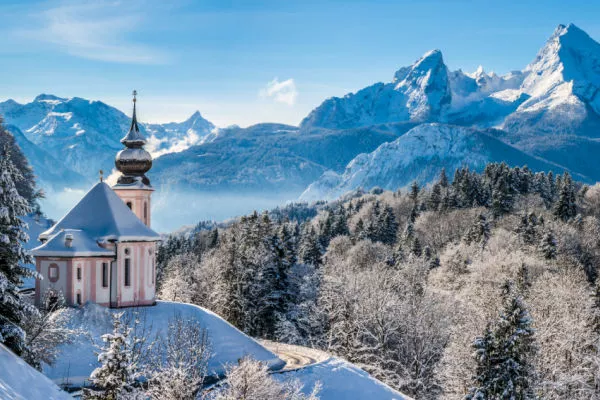
Discover Natural Wonders
Embark on a journey through the natural wonders of Germany with our guide to breathtaking alpine landscapes, turquoise waters, and stunning rock formations.
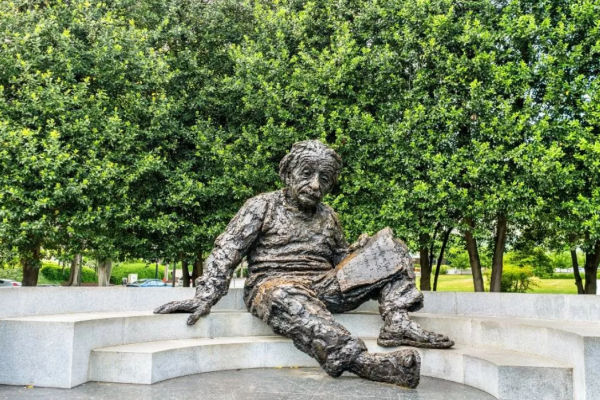
Discover Famous Germans
From famous musicians and poets to kings and queens, Germany was the home to so many inspirational and entertaining folk. Let's learn about the famous Germans in history!
Tour My Germany Travel Guide: Discover the Best of Germany
Do you know where the best place to eat bratwurst in Germany is? Why are there shelves inside German toilets? What is the most famous fairy tale castle to visit?
For answers to all these questions and more , read on!
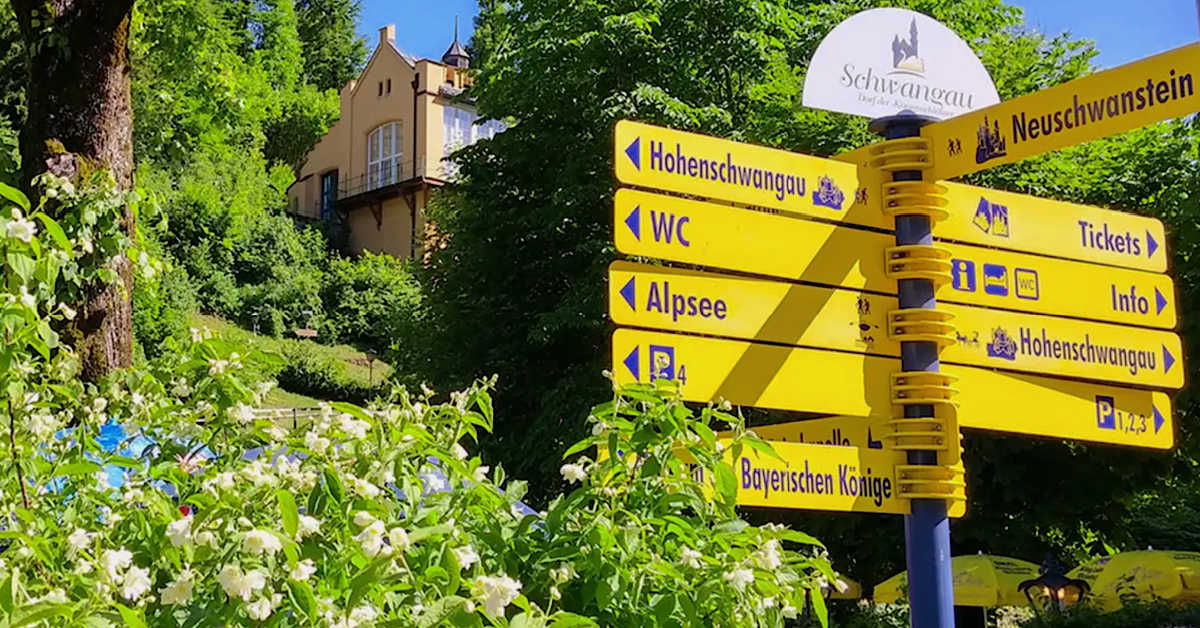
Herzlich willkommen!

I'm Gerhild and for over 15 years, I've been sharing my German cuisine on Just Like Oma . Join me now as we tour my Germany to see where these delicious foods originate.
As we travel, we'll marvel at the spectacular scenery, delve into the local culture, uncover hidden historical treasures, and find the best destinations off the beaten track that are worth exploring.
Joining us on this tour is my son Eran and my granddaughter Lydia each writing as they travel throughout Germany, discovering more about their heritage. Experience the country through their eyes as we:
- Gaze upon fairytale castles and baroque palaces
- Embark on a river cruise along the Rhine River
- Camp in interesting locations throughout Germany
- Drive down the scenic drive down picturesque Romantic Road
- Stroll through the charming Christmas markets in places like Rothenburg ob der Tauber
- Explore historic cities , towns, and the natural wonders of Germany
- Visit more than one UNESCO World Heritage Site
Be inspired to join us! Discover this popular destination in Central Europe, Germany, but not just as a tourist following the typical Germany travel guides.
- The Black Forest and the Rhine valley
- The picturesque shores of Lake Constance
- The iconic Brandenburg Gate
- The majestic peaks of the Bavarian Alps and other natural wonders
- The grand palaces and iconic landmarks and buildings
- The famous Oktoberfest celebration in Munich
Experience all of this in the best way possible, with the help of the travel tips you'll find throughout our Tour My Germany guide.
Gain insights into German culture, including customs, etiquette, and popular activities, whether you're taking a road trip, using train stations, public transportation or some of the busiest airports. Be prepared, making travel plans with the best time to go, whether during peak season or not, and the best things to do and things to avoid .
Explore today's Germany by touring the heart of Europe and visiting the major cities or fairytale towns in southern Germany, or the big cities and smaller towns in northern Germany. Meet the welcoming German people, who will inspire you to continue your quest to learn about all things German, including interestingly strange and fun facts . And of course, savor the delicious German cuisine throughout your journey!
Recent Articles and Newest Posts
Castle Hotels in Germany : The Best Castle Hotels to Stay in

Famous Architecture in Germany: Iconic Landmarks and Buildings

Plants and Animals in Germany: The Flora and Fauna of the Regions

Things to do in Heidelberg: Amazing must-see attractions

Hamburg, Germany: Things to do and the best places to see.
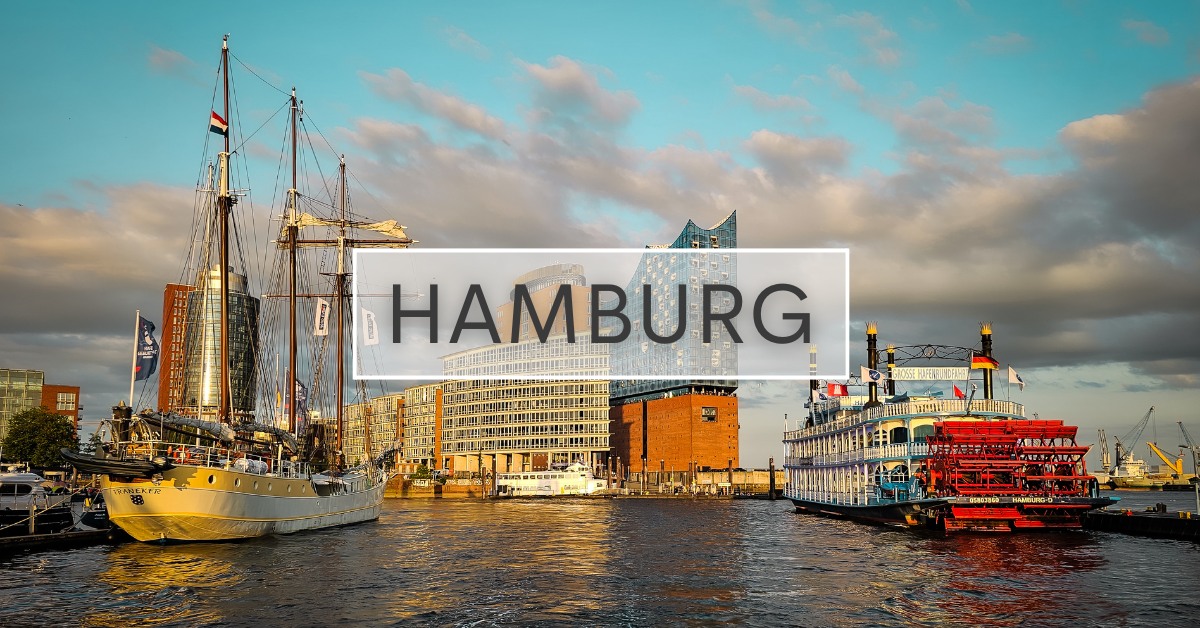
Top Things to do in Stuttgart: More Than Just Fast Cars.
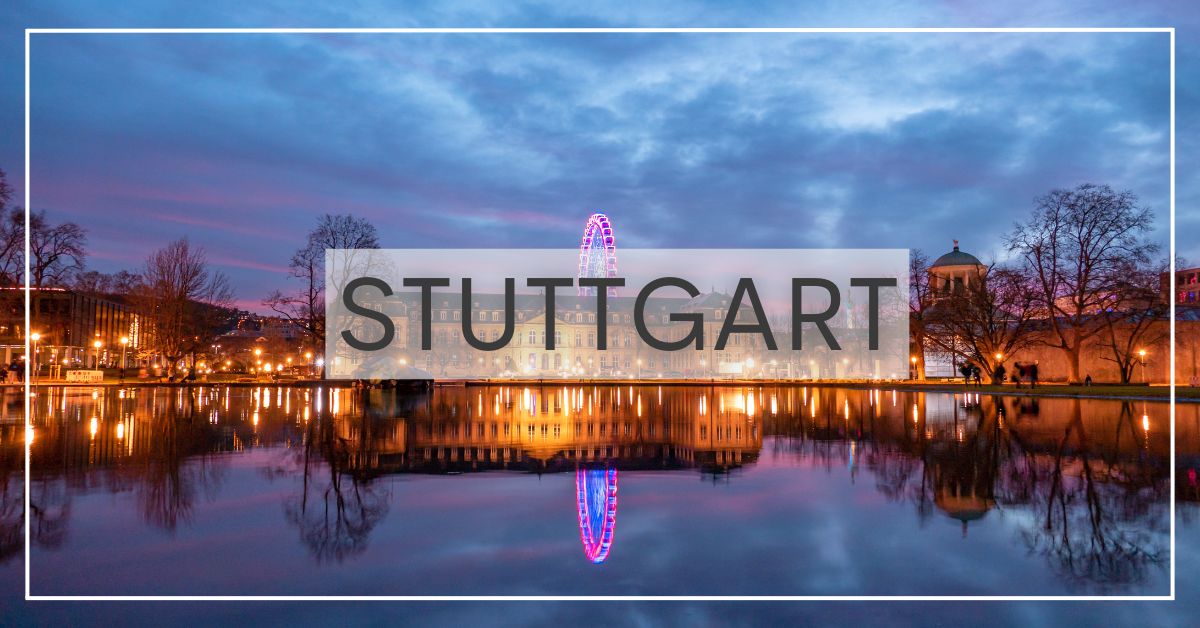
Things To Do in Cologne: A Guide to the City's Best Attractions
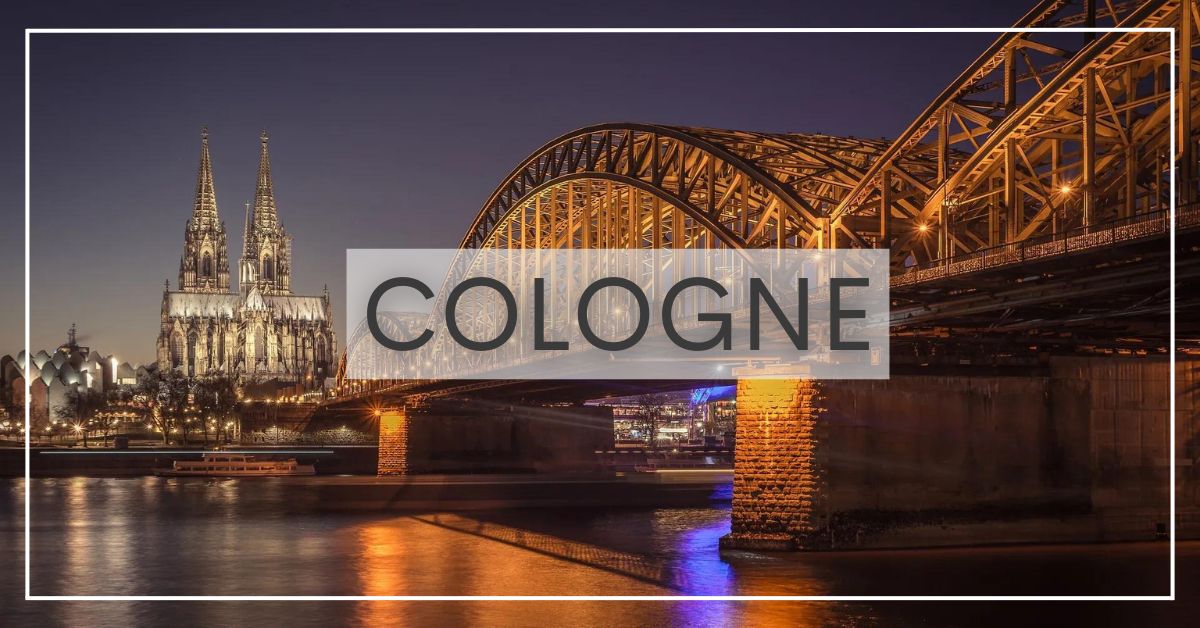
Pears, Beans, and Bacon: Birnen, Bohnen, und Speck (from Bremen)
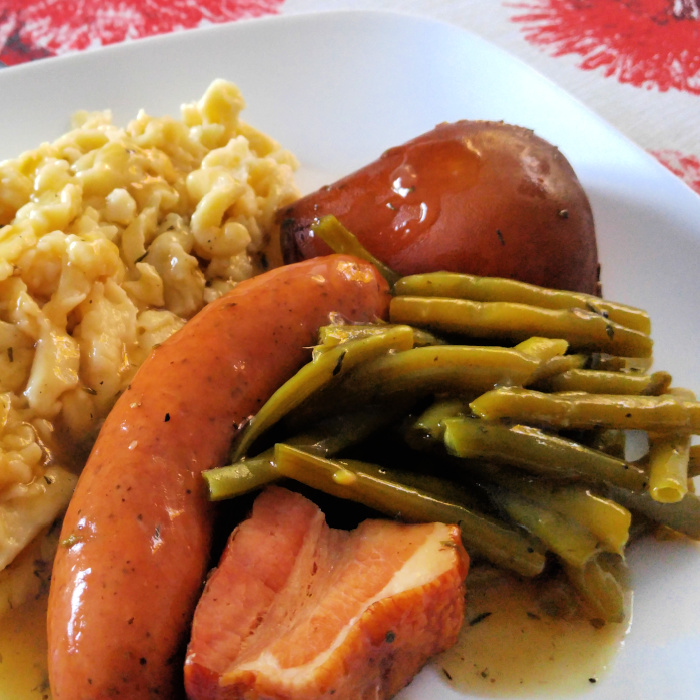
Best Things to do in Rothenburg ob der Tauber
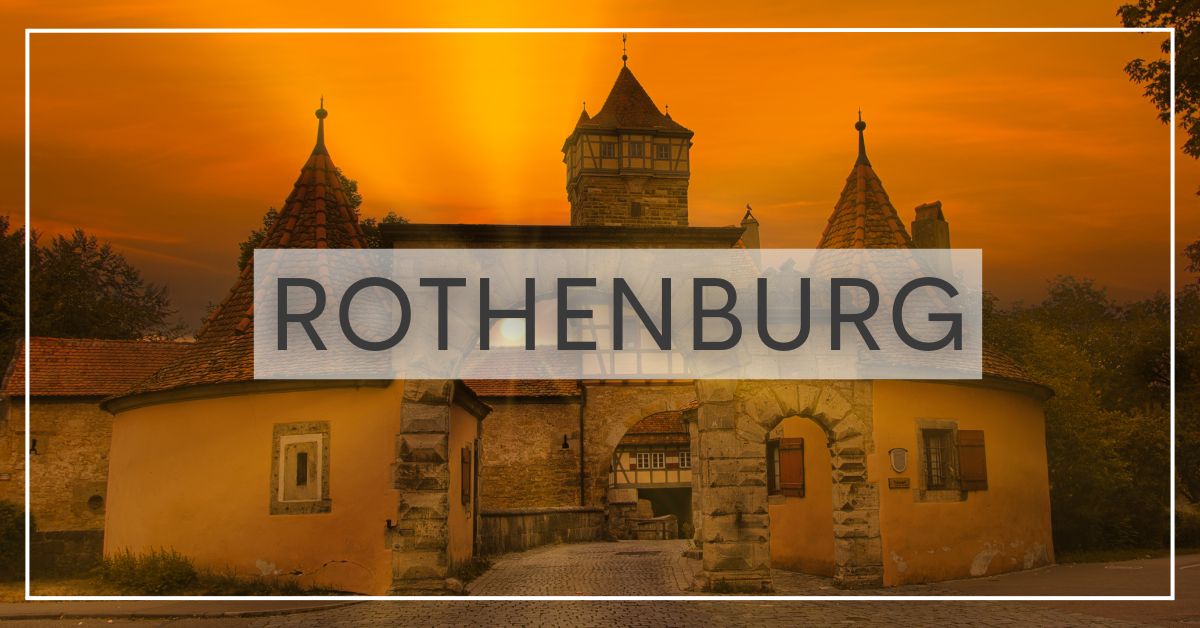
Tour My Germany Affiliate Sign Up
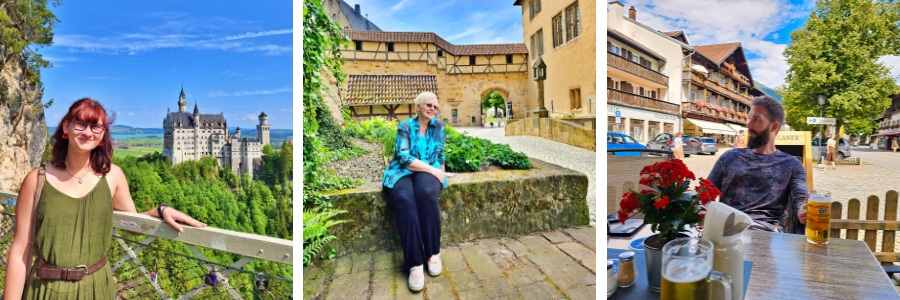
Attractions to See in Dresden: Uncover the Hidden Gems
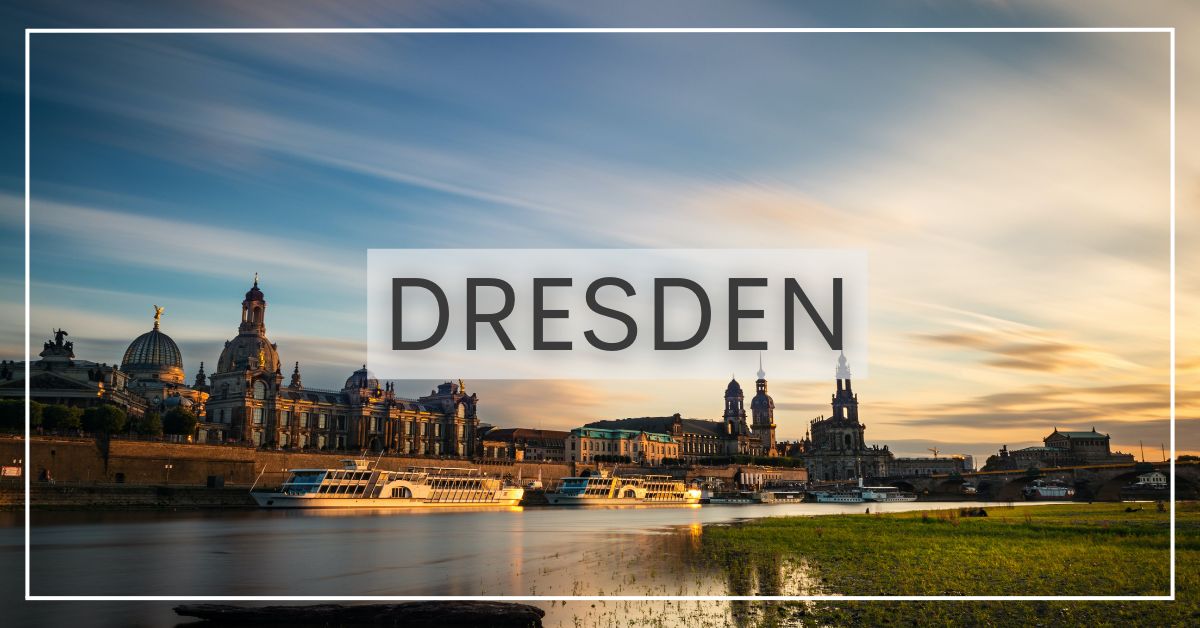
Unique Things to do in Berlin: More than a museum or two.
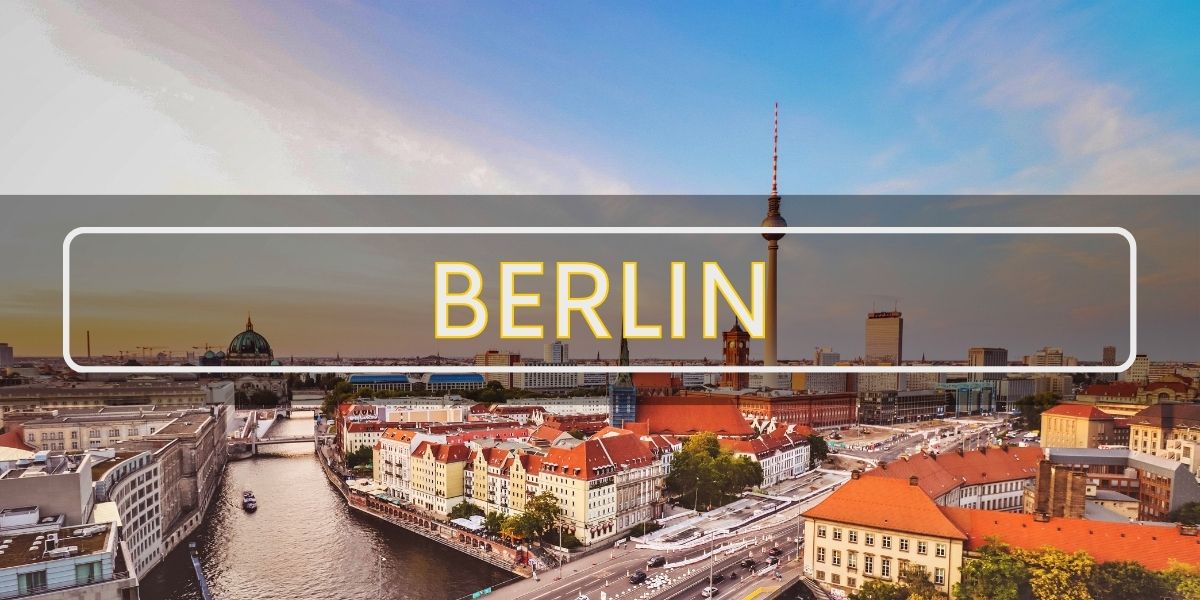
Looking for something different? Use the search in the upper-right corner or go to our sitemap .
Follow us on
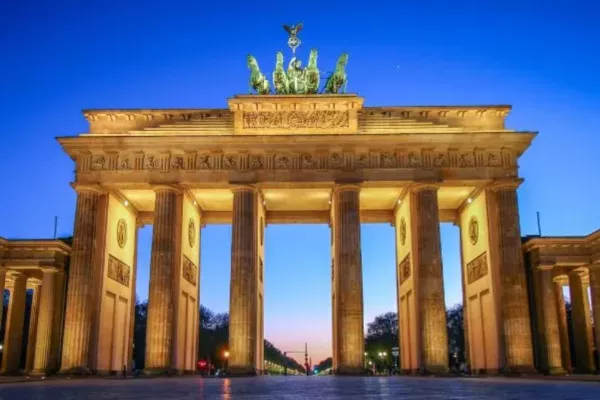
Recent Articles
SITEMAP | Privacy Policy | Disclaimer | Terms and Conditions | affiliate program
AFFILIATE DISCLOSURE : Tour My Germany participates in various affiliate advertising to provide a means to earn advertising fees by linking to retail websites. We are a participant in the Amazon Services LLC Associates Program, an affiliate advertising program designed to provide a means for us to earn fees by linking to Amazon.com and affiliated sites. We will not promote products WE do not own or would not buy ourselves. Our goal is to provide you with product information and our own personal opinions or ideas. At times, We will showcase services, programs, and products. We aim to highlight ones that you might find interesting, and if you buy items from those companies, we may get a small share of the revenue from the sale.
We are independently owned, and the opinions expressed here are our own. YOU SHOULD ALWAYS PERFORM DUE DILIGENCE BEFORE BUYING GOODS OR SERVICES ONLINE.

15 Best Germany Travel Guides
This post may contain affiliate links. Read my disclaimer policy.

Looking for the best Germany travel guide to take on your trip? Here are 15 of the most useful options for travelers planning trips to Germany!
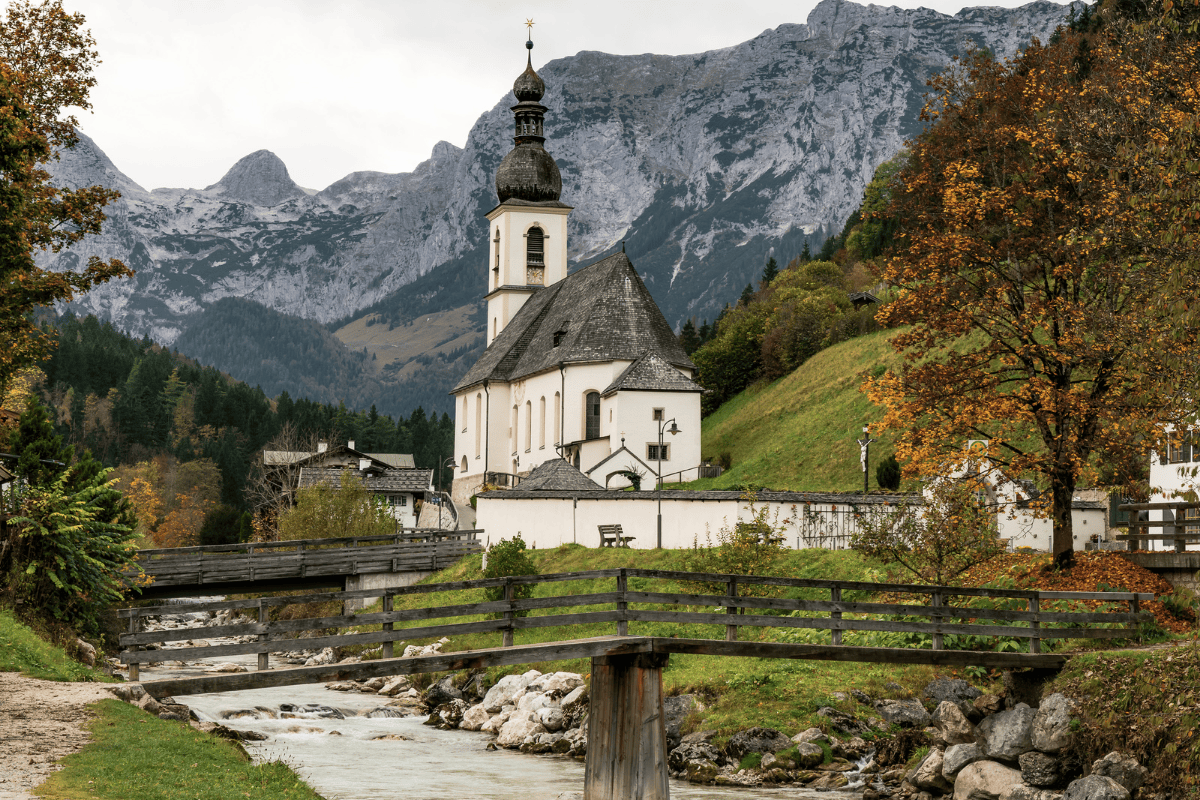
Germany is a world class tourist destination in the heart of Europe.
Every year, millions of people travel there to taste its many famous beers and traditional German cuisine , visit enchanting fairy tale castles , national parks, and beautiful sights, learn about its rich history and culture, and much more.
No matter whether you plan to visit busting big cities or Germany’s many thriving smaller cities, you’ll find tons of attractions and points of interest. But they can be difficult to explore effectively without a guide to help you along the way.
Join our FREE Germany Trip Planning Facebook Group!
This article shows you the best Germany travel guides out in the market today (both in hard copy and Kindle) and how you can choose the best one for your trip.
Whether you plan to spend time in Berlin, the Rhine, Bavaria (or elsewhere!), want to travel by cruise, train or take a road trip, or are traveling solo, with a partner or your entire family, there’s a guide for every kind of itinerary and traveler!

- 1 Quick Guidebook Recommendations
- 2 Why Use A Travel Guide?
- 3 Germany Travel Guides Comparison Chart
- 4 How To Choose The Best Travel Guide For You
- 5 15 Best Germany Travel Guides
- 6 What To See And Do In Germany?
- 7 When Is The Best Time To Go To Germany?
Quick Guidebook Recommendations
Check out this quick list of our favorite guide books if you’re in a hurry, or continue scrolling to see our full list with in-depth reviews.
- For Insider Tips On Hidden Gems : Fodor’s Essential Germany
- For Kindle Unlimited Users : The Rough Guide to Germany
- For First-Time Travelers to Germany: Rick Steves Germany
- For multiple formats and off-line maps: Lonely Planet Germany
- For DIY Berlin Walking Tours: National Geographic: Walking Berlin
- For Visiting Munich, Bavaria & The Black Forest: Lonely Planet: Munich, Bavaria, and the Black Forest
- For Visiting Rothenburg & the Rhine: Rick Steves’ Rothenburg & the Rhine
- For Road Trips & Day Trips in Germany, Austria & Switzerland : Lonely Planet’s Guide to Germany, Austria, and Switzerland
- Best City Pocket Guide s: Lonely Planet’s Pocket Guide Berlin, Hamburg, Munich
- For Roadtrips in Germany: DK Eyewitness Road Trips
- For Rail Travel in Germany: Europe by Rail
- For River Cruises: Lonely Planet Cruise Ports European Rivers
- Best Guide for Kids: Kids Travel Guide Germany
- For Quickly Learning About German Culture: Culture Smart Germany
- For Learning German Language: 1,000 German Phrases
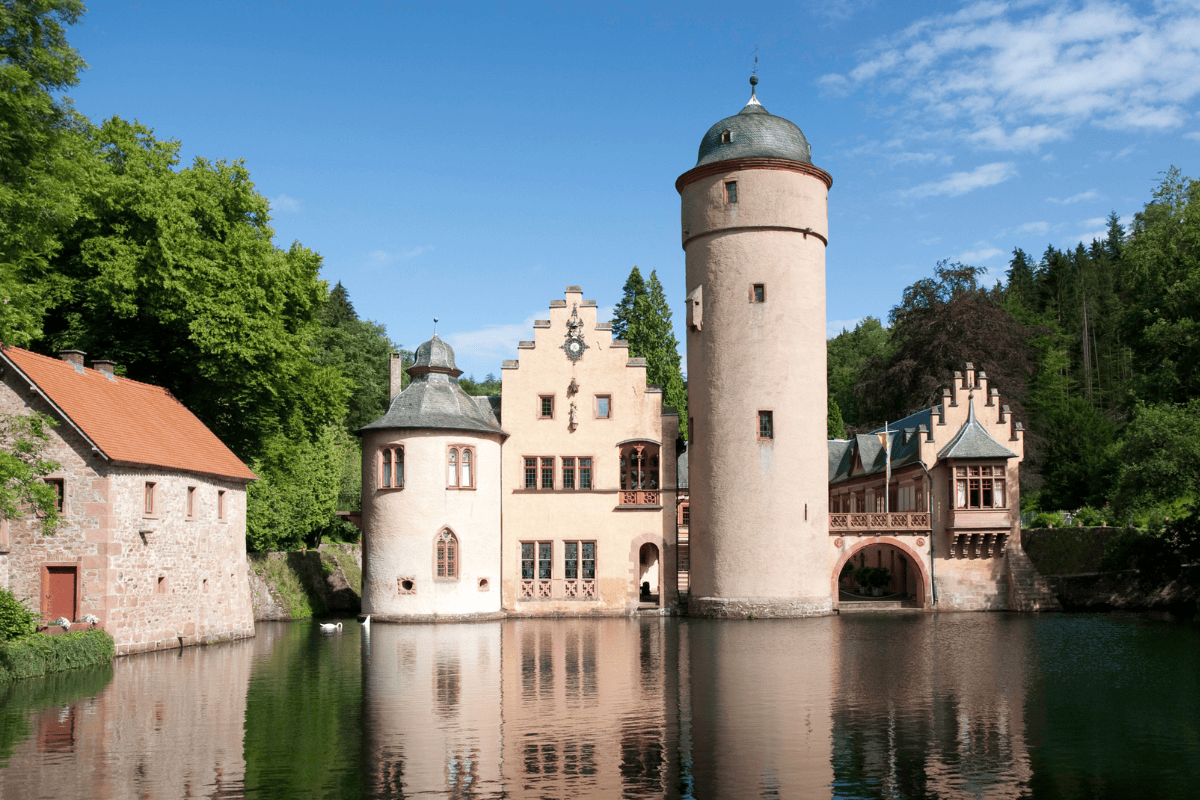
Why Use A Travel Guide?
Germany travel guides are a great resource for planning specific aspects of your trip, especially when combined with the info we provide on this website.
You can never have too much trip planning information, and a good travel guide provides essential travel information without the need for wifi.
Travel guides are especially useful for people who don’t have a lot of experience traveling abroad or who don’t speak the language of their destination country.
The guides we highlight below can help you find good restaurants, learn about regional customs and traditions, and avoid scams in specific locations.
If you’re looking for something more specific than general travel advice, there are many specialty travel guidebooks available that cover everything from hiking trails to famous literary locations around the world!
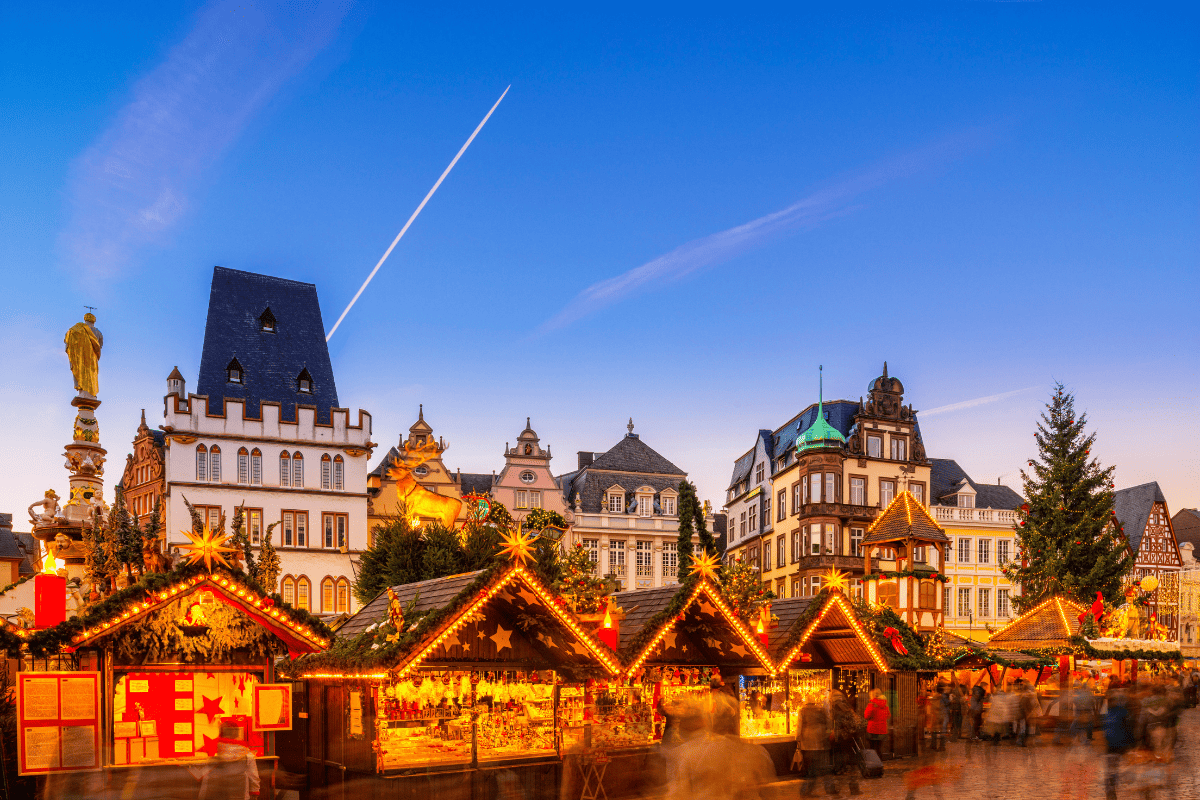
Germany Travel Guides Comparison Chart
Here’s an overview of the best guidebooks for Germany travel. Scroll down for a more detailed review of each book!
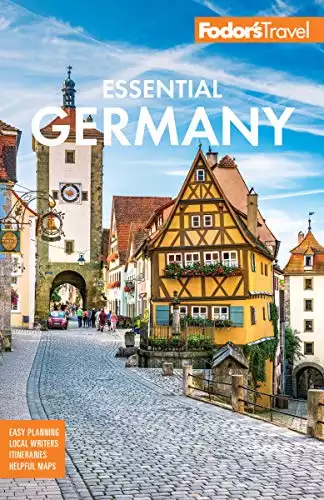
- Perfect for insider tips
- Full-size street maps
- Sample itineraries
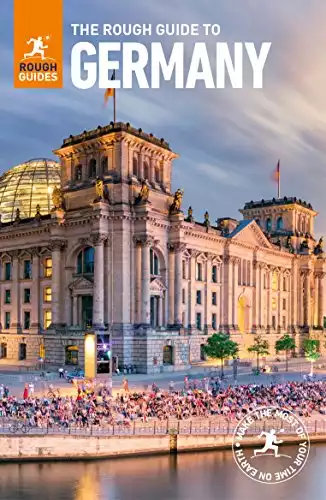
- Free with Kindle Unlimited (as of now)
- Carefully planned itineraries
- Full-color maps
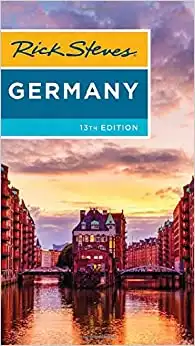
- Perfect first timers
- Strategic advice for making the most out of your budget
- Tips on how to plan a multi-week trip to different cities in Germany
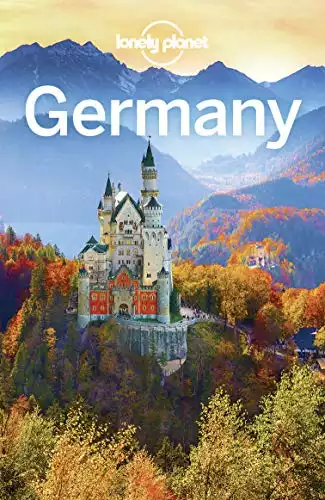
- Honest reviews of restaurants
- Free on Kindle Unlimited too
- Add notes to personalize your digital guidebook
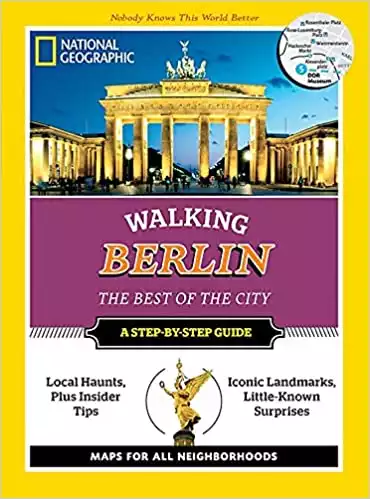
- 15 walking tours
- Step-by-step itineraries
- Detailed maps
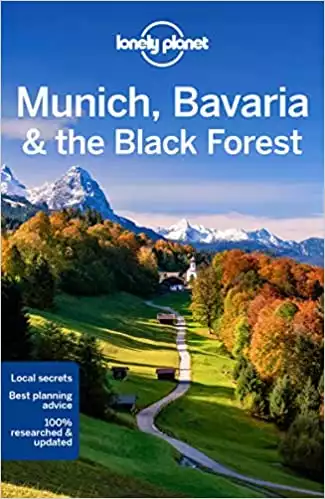
- Up-to-date research on travel information and what businesses are still open after light of Covid-19
- “What’s new” sections featuring cultural trends
- New, up-and-coming areas to visit
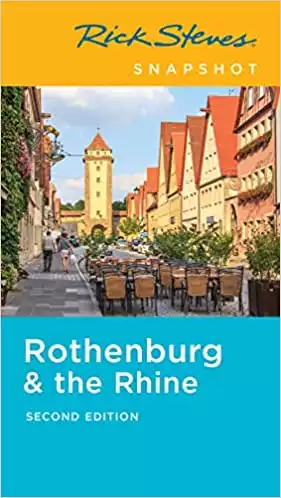
- Insider travel tips
- How to avoid tourist traps
- Rothenburg & Rhine focused
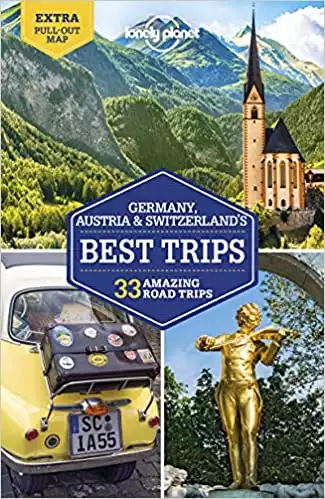
- Germany, Austria & Switzerland
- 33 trip ideas
- Fastest travel routes & scenic detours
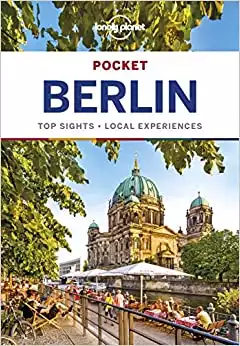
Small & handy
Books for Berlin, Hamburg & Munich
Expert advice on top tourist destinations & neighborhoods
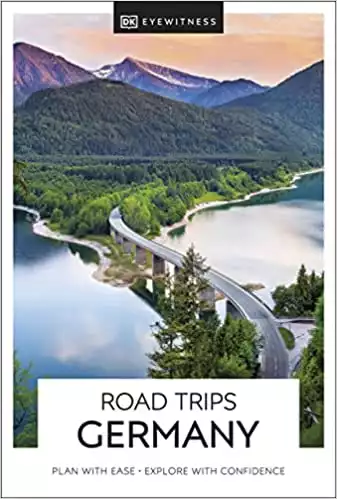
- 24 well-researched driving routes.
- Discover stunning views and hidden gems off the beaten track
- Practical tips for driving in Germany
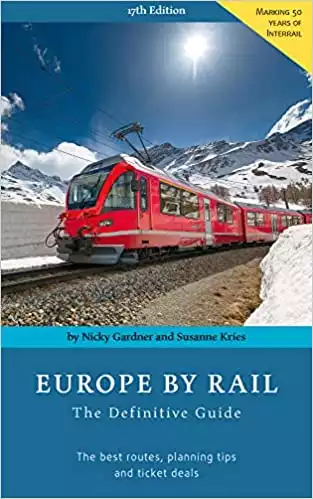
50 key routes
Tips on the best ticket deals
Fun sights to see along the routes
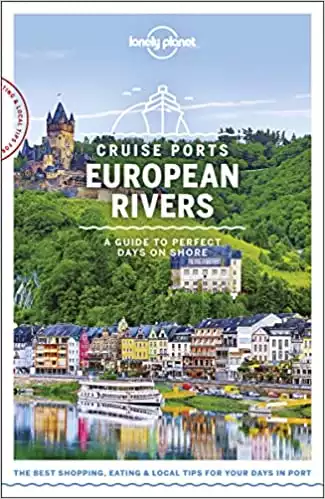
- Advice for first-timers
- Covers Germany & other European cruise routes
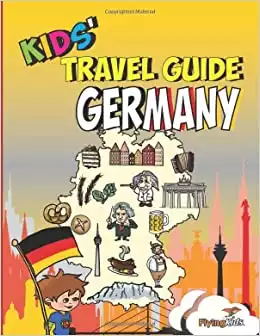
- Fun facts about Germany
- Language learning
- Coloring pages, quizzes, puzzles & journal pages
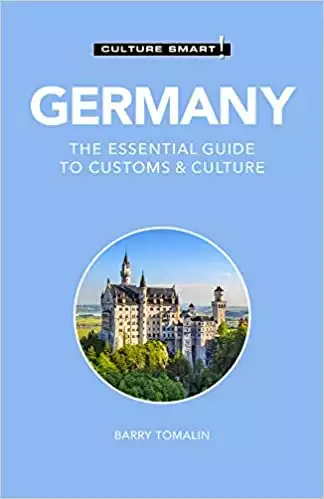
- German history
- Cultural values, traditions & etiquette
- Regional cultural differences
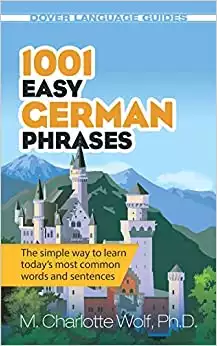
- 1,000 basic words, phrases, and sentences in German
- Small talk, asking for directions, finding a bank, ordering at restaurants
- Phonetic pronunciation guide!
How To Choose The Best Travel Guide For You
There are a lot of travel guides on the market, making it pretty overwhelming to find the right one. When choosing the best travel guide for your trip, there are a couple of things you should take into consideration.
Grab our FREE Germany Trip Planning Checklist Now!
What are your travel plans?
If you’re going on a multi-week trip across Germany, visiting several cities and regions, then the best travel guide for you will be a comprehensive general country guide on Germany.
These kinds of guides usually have multiple chapters dedicated to all the big cities and regions, making it easy to flip through whichever destination you’re going to along your trip.
On the other hand, if you’re mostly staying in a specific region or a couple of cities, then it’s better to find a regional guide that really narrows in the area you’re visiting. This way you won’t be bogged down with city information that may not be applicable to your trip.
What’s your travel style?
If you’re going on road trips, you’ll find guidebooks with specific information and helpful tips on driving in Germany, the best scenic routes, and more. Likewise, if you’re going on a river cruise, find a guide that covers that specific type of travel. There are also guides that are geared towards kids.
What’s your preferred writing style?
Do you prefer matter-of-fact, objective, no-frills writing? Or do you gain more value from reading personal guides filled with the author’s own anecdotes and experience of the city?
There are also guides that focus heavily on history, others on beautiful travel photography. Make sure to read reviews to get a gist of the style and content of the guide!

Fodor’s Essential Germany is the perfect guide for those who want insider tips on how to experience Germany like a local.
Fodor’s Travel Guides are all written and researched by local experts, who can offer you unique insights you might not find in other guides.
In this guide you’ll find fully updated information on all of Germany’s main attractions and hidden gems, which includes restaurants, hotels, and even outdoor activities.
As well as full-size street maps and beautiful photographs, you’ll also have access to multiple sample itineraries to help you make the most out of your travel time.

The Rough Guide to Germany is one of the best options for those who want a guidebook on their Kindle – it’s free with Kindle Unlimited (as of now)!
You’ll have rundowns of must-see landmarks, carefully planned itineraries, and full-color maps to navigate the streets of Berlin or Munich without the need to go online.
This guide covers a vast majority of areas in Germany, not just the major cities . If you’re spending more time in a certain region, then the detailed regional coverage will be very useful.

Rick Steves is one of the most well known travel writers from the United States. His mission is to empower Americans to go on fun and culturally enriching trips to Europe and his guidebook to Germany reflects that.
People who are traveling to Germany for the first time will find this guide very useful. It has strategic advice on how to make the most out of your budget and time with tips on how to plan a multi-week trip to different cities in Germany.
Other handy features include self-guided walking tours, a packing checklist, and a German phrasebook. This edition also has up to date detailed information reflecting the changes brought about Covid-19.
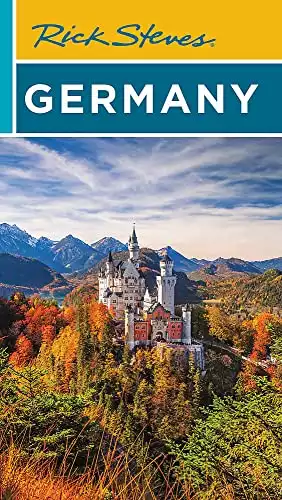
Lonely Planet has some of the best guidebooks in the market and the Lonely Planet’s Germany is no exception - it's currently the #1 best seller on Amazon.
They provide comprehensive and trustworthy information on everything you need to know about Germany, from the most visited tourist areas to less well known historic cities.
This guide makes sure to provide itineraries and honest reviews of restaurants, shops, landmarks that cater to every kind of travel style and budget.
The book is available in both digital (it’s free on Kindle Unlimited too!) and paperback versions. The digital version comes with downloadable PDF and offline maps that are great for preventing extra roaming charges, embedded links to recommendations with websites.
You can even add notes to personalize your guidebook. The paperback version is small and sleek, making it easy to bring around while traveling.
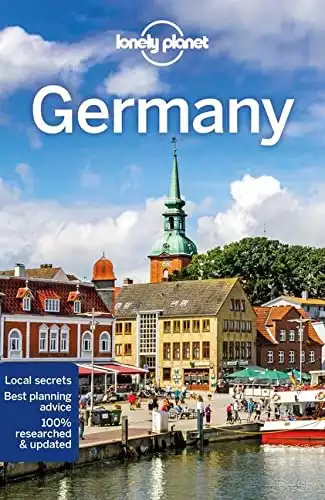
If you’re staying in Berlin for some time, then you’ll probably be spending a good amount of time walking (alongside using their excellent public transport).
And there’s no better way of getting to know a city than by walking! National Geographic Walking Berlin is the best guidebook for this.
This book contains 15 walking tours with step-by-step itineraries and detailed maps that will have you roaming and exploring Berlin like a true local in no time.

Lonely Planet just came out with their newest guide on Munich, Bavaria, and the Black Forest.
Whether you’re looking for the perfect spa town to relax along the Black Forest or celebrating Oktoberfest in Munich, this guidebook will have you covered.
Since it was just recently published, you’ll be able to find up-to-date research on travel information and what businesses are still open after light of Covid-19.
Aside from all the essential reading, there are also “what’s new” sections that feature cultural trends and new, up-and-coming areas to visit.

From wandering around quaint villages, going back in time exploring ancient castles ruins, or dining in good restaurants by scenic vineyards, the Rhine Valley is a must-visit.
It’s particularly known as a romantic destination, but every kind of traveler can enjoy it. Rick Steves’ guide to the Rhine is a great place to start planning your trip.
It includes insider travel tips on how to beat crowds and avoid tourist traps. The selective coverage also includes information on Rothenburg, a picturesque well-restored medieval city.

Lonely Planet’s Guide to Germany, Austria, and Switzerland is perfect for those whose travel plans always include day trips or road trips.
Especially if you’ve planned your itinerary with the goal of visiting neighboring countries like Austria or Switzerland, then this guide is for you.
This guide covers everything from the Romantic Road, Lake Bodensee, the Swiss Alps, Zurich, Lake Geneva, Vienna, Salzburg, and more! It features over 33 trips to take with useful advice on breaks to stretch your legs along the way, the fastest travel routes, and scenic detours.

The Lonely Planet’s Pocket Guide series are perfect for those taking shorter trips over a weekend or maybe those who have limited leisure time during business trips.
These guides are small and handy, getting down to the basics of each German city. It’s easy to use and concise, with expert advice on the top tourist destinations, neighborhood chapters, and day planners.
Click here for more information on Pocket Berlin, Pocket Hamburg , and Pocket Munich

DK Eyewitness Road Trips is ideal for those who want to explore Germany through road trips.
This guide contains 24 well-researched, easy to follow driving routes. Each lasts from 1 to 5 days, so you can choose any depending on your time and preference.
You’ll get to learn about stunning views and hidden gems off the beaten track that you can only discover on the road. It’s full of practical tips like road conditions, detours, parking info, and navigation details for GPS use.
Plus, each tour includes ideas for activities and sights along the way.

Europe by Rail is the definitive guide for planning your European trail travel journey using Interrail or Eurail.
This guide includes 50 key routes that you can follow or incorporate into your Germany itinerary.
It also contains tips on the best ticket deals, where to stay, and fun sights to see along the routes. It covers popular routes such as Glacier Express, the Rhine Valley, French Riviera, and the Scottish Highlands with information on new routes to Slovakia, Greece, and more.

River cruises have been gaining popularity, with many tourists loving the different perspective you get as you travel by water through scenic riverfront views.
Riverboats are usually much smaller than Mediterranean cruises, making for a more social experience and more frequent stops and onshore activities.
This Lonely Planet guide is perfect for those going on a European cruise through a number of different countries but who do not want to buy a guide book for each country.
It covers the following routes: Northern Rhine, Southern Rhine (France, Germany, Switzerland), Western Danube (Austria and Germany), Eastern Danube (Hungary and Serbia), the Seine (France), and the Elbe (Czech Republic and Germany).

Traveling with children to Germany for the first time can be intimidating. Kids Travel Guide Germany is here to help ease your worries!
This guide is a fun gift to give your kids as a way to cultivate their interest in traveling from a young age. Leonardo, the cute cartoon tour guide, will teach your kids fun facts about Germany and even basic German words.
It also comes with an activity book full of coloring pages, quizzes, puzzles, and journal pages to document their trip.

Nothing enriches travel experiences like immersing yourself in the country’s local culture. Culture Smart Germany shows you everything you need to know about German culture and way of life.
You’ll find chapters discussing history, values, cultural differences between regions, cultural traditions, and common etiquette to follow.
It’s great for navigating day to day life while you travel and even for more formal business trips.

This German phrase book is the ideal companion for your trip to Germany.
With more than 1,000 basic words, phrases, and sentences in German it covers every travel situation you could think of from small talk, asking for directions, finding a bank, and ordering at restaurants.
Easy to use and straight to the point, this guide will help you familiarize yourself with the German language and navigate social situations with locals. It also comes with a phonetic pronunciation guide!

What To See And Do In Germany?
If you’re not sure which guidebook will work best for you, consider where you most want to spend your time.
Germany is filled with tons of historic places to learn from, beautiful landscapes to admire, and fun cultural activities to experience. To get a gist of what awaits you in your Germany trip, let’s break it down to some of the main travel destinations in the country.
Berlin, the capital of Germany (and the largest city), is where you’ll find some of the most iconic landmarks of German history. You won’t run out of things to see from the Brandenburg Gate, the East Side Gallery, the Holocaust Memorial, the German Parliament Building (Reichstag), and many more.
For more information on the top historic places to visit in Berlin, read our guide to planning the ultimate Berlin itinerary.
This dynamic city has also undergone a lot of changes in the past decades, growing into one of the most interesting cities to visit in central Europe. Many people are drawn to the vibrant Berlin arts scene and music scene.
After all, the capital city is home to world-class museums (including some that give you a glimpse into what life was like in East Germany) and some of the best nightlife in Europe.
Plus, it’s the gateway to rugged Rügen island to the north on the Baltic Sea, historic Dresden to the south, as well as “Swiss Saxon” national park area.
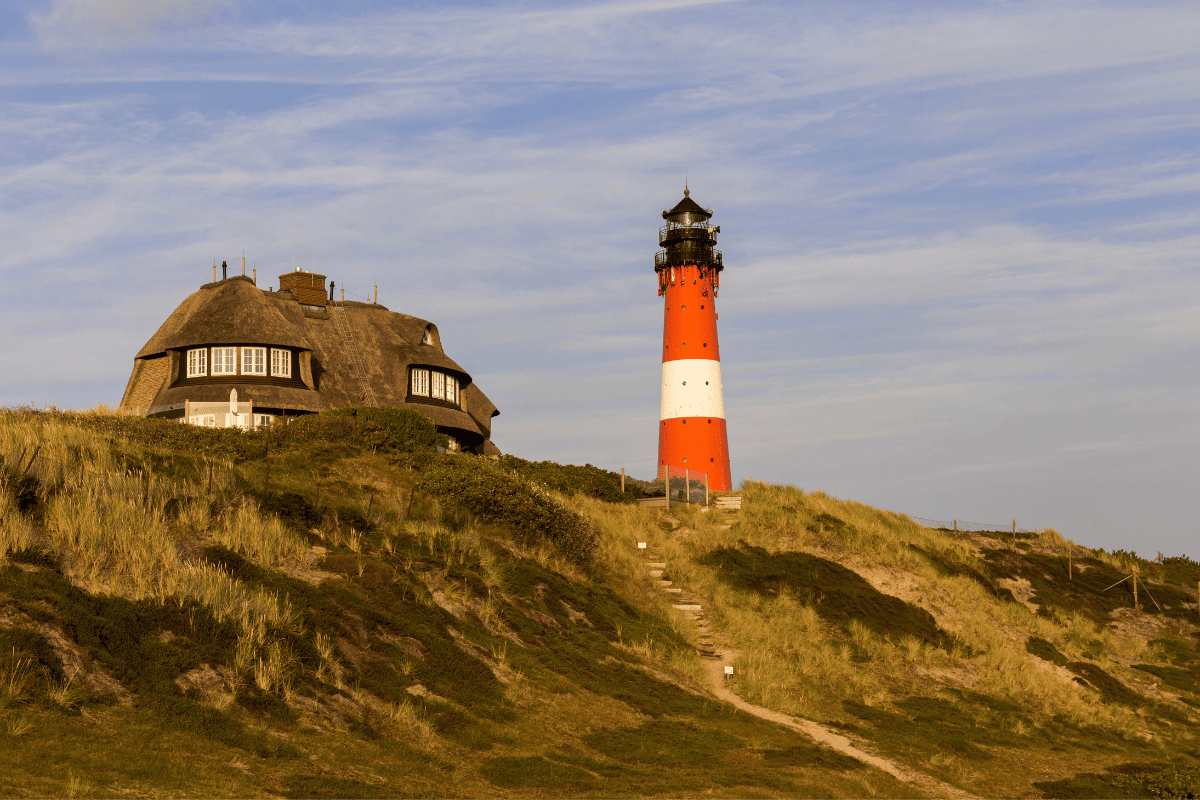
Hamburg, located on the Elbe river in northern Germany, is one of the most unique German cities. Famous for its ports, lakes, canals, and rivers running throughout the city, Hamburg shows you a different side of Germany.
Whether you canoe through the canals (super fun!) or try delicious fresh seafood after a harbor cruise, you won’t run out of fun activities to do in Hamburg. It’s one of my favorite cities in Germany!
The Black Forest is a region worth visiting for its spectacular scenery, small towns, and close proximity to France and Switzerland. It’s one of the best places to visit for those who love outdoor activities. There are hundreds of miles of hiking trails to explore and lakes and waterfalls to admire.
In-between immersing yourself in nature, you can explore picturesque smaller towns like Baden-Baden, Heidelberg, or Freiburg, and villages like Titisee-Neustadt, Triberg, and Gengenbach. You can also spend an afternoon seeing how people used to live at the Black Forest Open Air Museum.
Making your way to southern Germany, you’ll find the Bavarian Alps. For a scenic drive that makes the most out of your experience, we recommend driving south down the Romantic Road.
This route connects storybook castles , medieval towns, and breathtaking landscapes. It’s also one of the best ways to get to Neuschwanstein, the fairy tale castle that’s undoubtedly one of Germany’s most popular attractions.
A staple in all Germany itineraries is, of course Munich, the biggest city in Bavaria. It’s a popular destination for good reason – it’s a beautiful city rich with history far beyond the famous Oktoberfest. Munich (and Bavaria in general) is what most people envision when they think of Germany.
From Munich’s beer gardens, lush urban parks, and historic plazas, you won’t run out of things to see! Check out our guide on how to plan the perfect Munich weekend itinerary here.
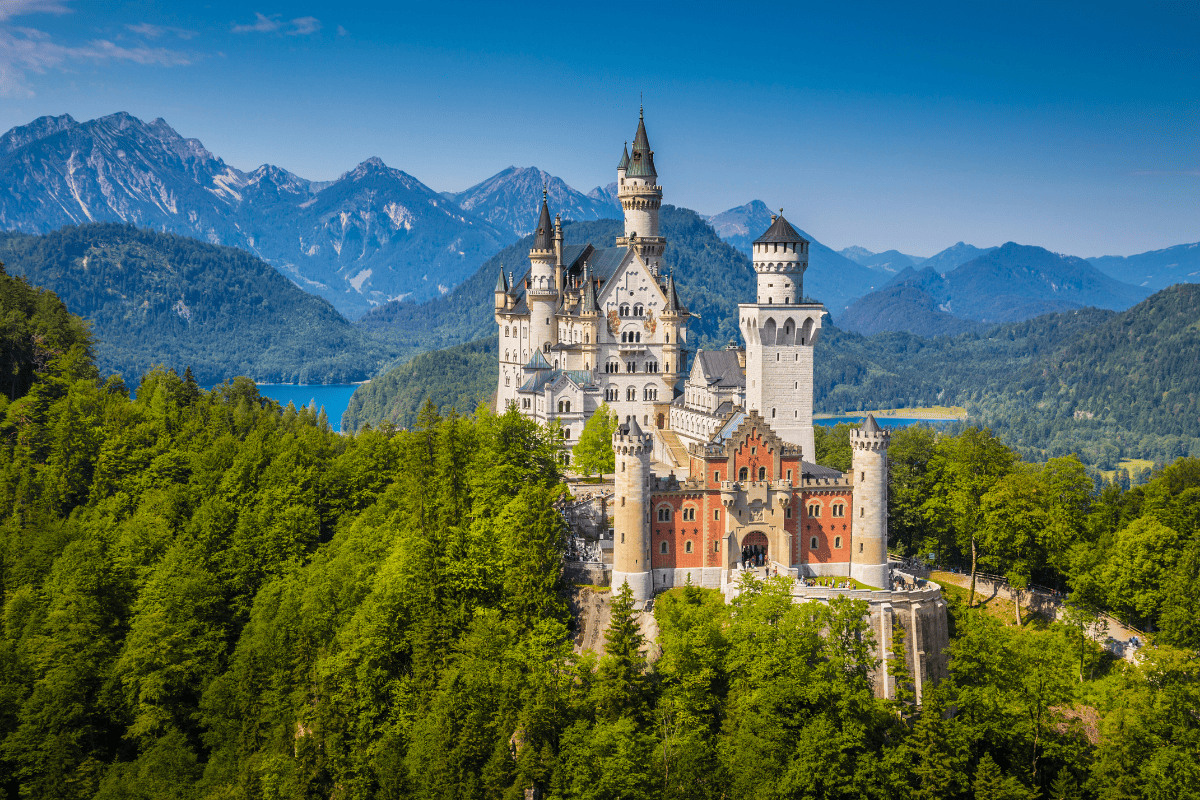
Before leaving southern Germany, make sure to stop by Lake Constance (Bodensee in German). Found along the country’s border of Austria and Switzerland, this region with its lakeside small towns is a great place for sunny summer holidays.
In Central Germany, you’ll find the Rhine Valley which holds great historical and cultural importance as a UNESCO World Heritage Site. It’s also a popular romantic destination where you can do activities like wine tasting in hillside vineyards and going on a cruise on the Rhine river. We recommend exploring the area on a boat tour to bring you to quaint villages and ancient castles.
Cologne is a great gateway city to the Rhine Valley. The city’s old town is home to the famous Cologne Cathedral and it’s a great walkable area with lots to see.
Another nearby major city is Frankfurt. Though you may only know Frankfurt as Germany’s financial capital or home to one of the world’s busiest airports, the city is fun to explore for its modern architecture, the contrasting historic old town, and interesting museums. Read our guide to spending a day in Frankfurt here or how to day trip to the many castles in the area.
We hope this gives you a good idea of all the exciting things to see and do in Germany. We know there’s a lot to take into consideration. That’s why we also prepared a step-by-step guide on how to plan the perfect Germany vacation that answers everything from where to stay, what cities to visit, and how to get around!
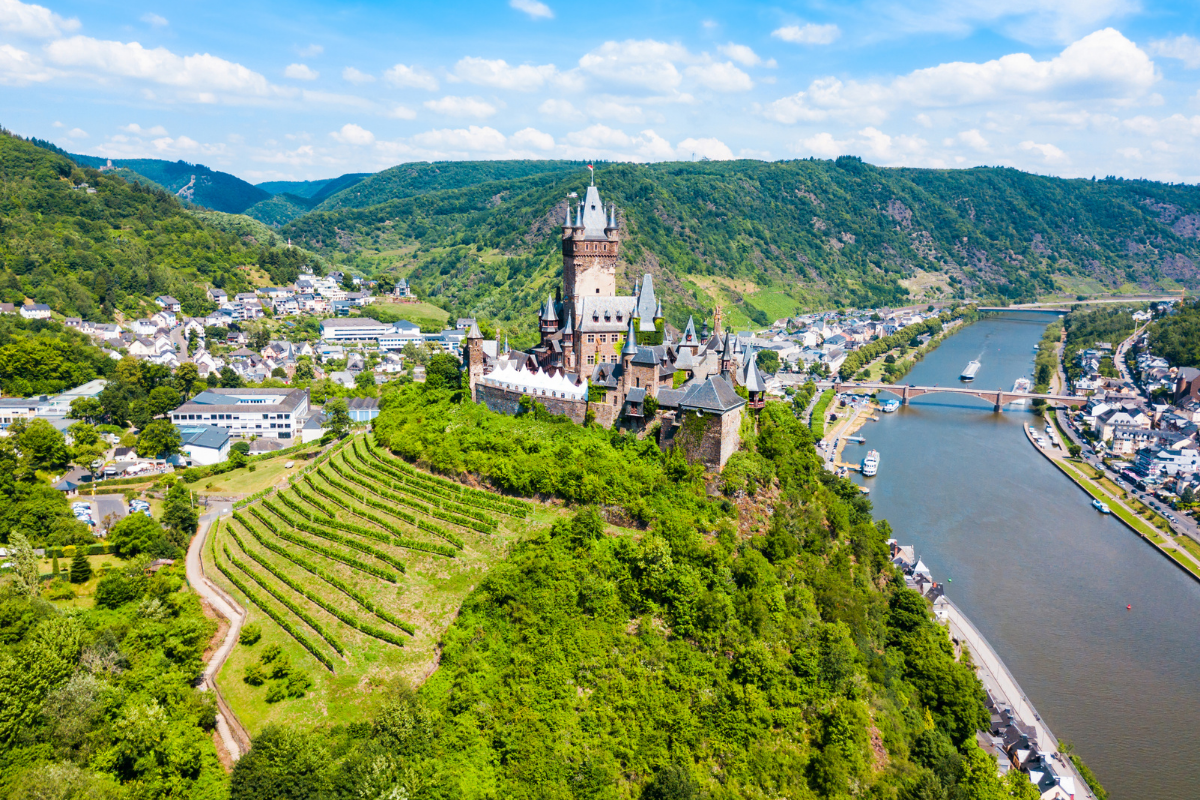
When Is The Best Time To Go To Germany?
We get this question a lot! The best time to go to Germany totally depends on what kind of experience you’re looking for. There’s really no bad time to visit because each season has something great and unique to offer!
During summer, you’ll get to enjoy warm and sunny weather. The long days are perfect for sightseeing since the sun sets as late as 10:00-10:30 pm. Be aware that you won’t always be guaranteed clear, blue skies, though. Some days can be rainy or windy but that kind of weather usually doesn’t last longer than a couple of days.
On the flip-side, it can also get really hot during heat waves, and you won’t find A/C in all restaurants and hotels.
Another downside is that since it’s peak season, streets and tourist attractions can be much more crowded with families from all over the world traveling during summer break. Prices for tickets and accommodations are also at their highest so we recommend booking reservations as early as possible.
Winter can also be a beautiful time to visit, but you’ll obviously have a very different experience. Snow, cold weather, and short days with the sun setting as early as 5 pm are just some of the things that you can expect.
Luckily, you’ll have the festive bright lights and cozy atmosphere of Christmas markets to make up for it. It’s also an ideal time to visit if you love winter activities like skiing or sledding.
Fall can be a good time to visit, especially if you want to participate in Oktoberfest festivities which take place late September to early October. The autumn weather means it’s still pleasantly enough for strolls, though you’ll have colder nights as you approach winter.
Weather during spring can be a bit of a toss-up. Some days can bring light breezes and warmth but other days can be gloomy and rainy. But you’ll get to see cities come alive and locals spend more time in parks or beer gardens as flowers bloom and outdoor activities kick into gear.

Cate has been traveling to Germany for 30+ years. She has lived in Germany, taught college German, and has a PhD in German Applied Linguistics. She loves helping travelers plan their dream trips to Germany!
Similar Posts

2023 Black Friday Deals For Germany Travel
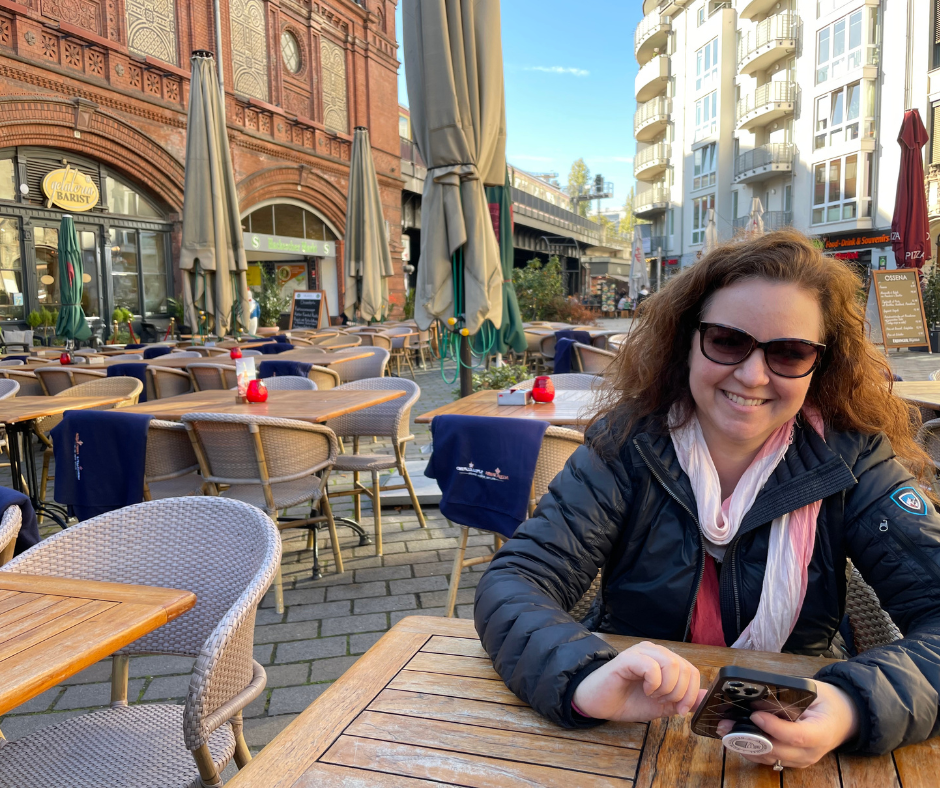
3 Easy Travel Journal Ideas (Plus Tips And Prompts)

Best Hidden Pocket Scarf For Travel
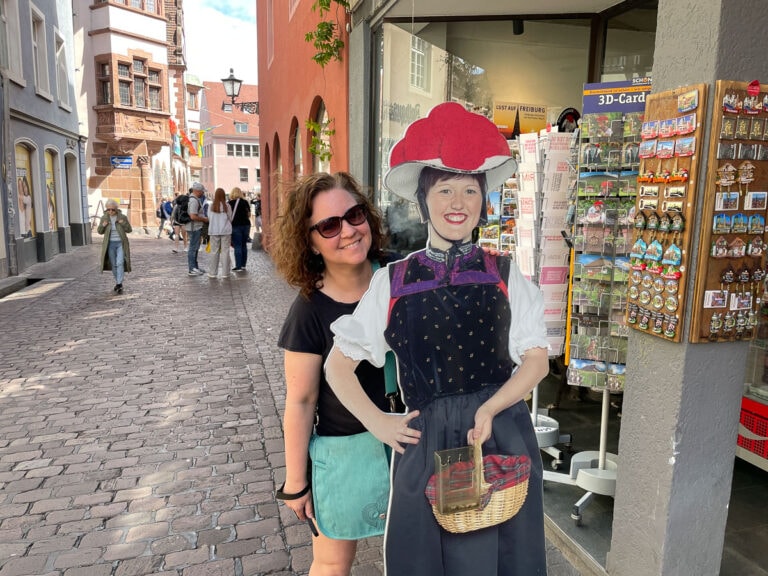
Best Crossbody Purse for Travel in Germany in 2024
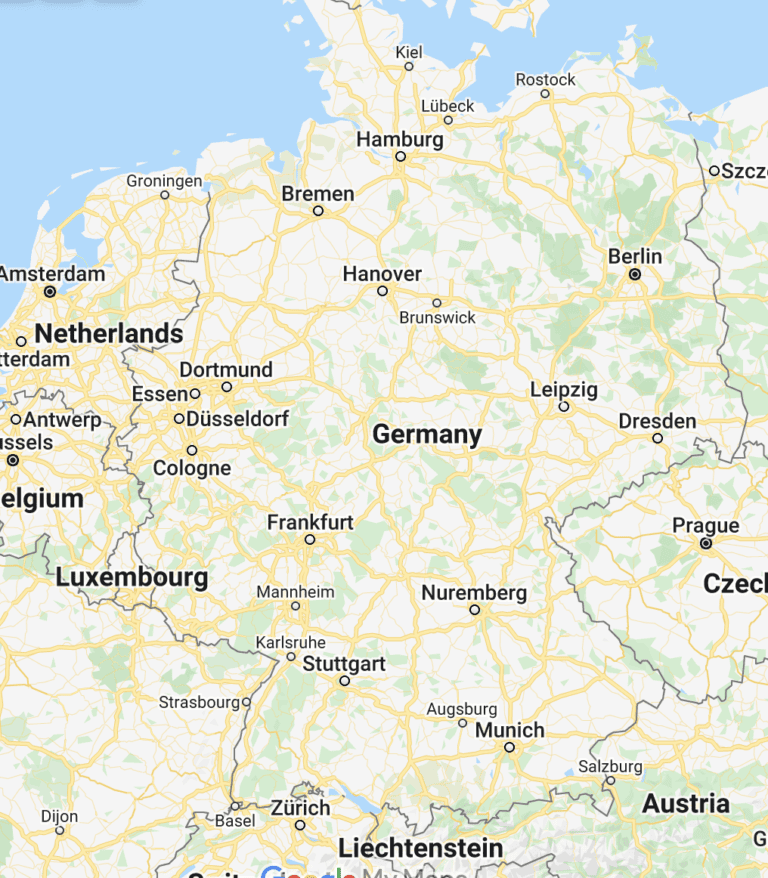
10 Days in Germany: Itinerary Ideas For the Perfect Trip
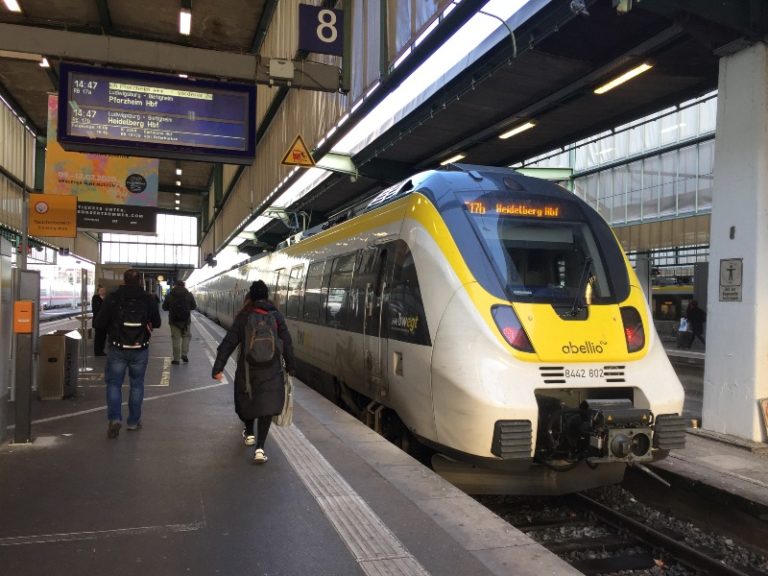
How to Buy the Deutschland-Ticket For Your Trip to Germany Without a German Bank Account
Here’s how we can help you plan your perfect trip in 2024.
GERMANY TRAVEL PLANNER: Just getting started? Have questions about Germany’s confusing train tickets or how to find the best guided tours? Not sure which parts of Germany should be in your itinerary (and what to leave out)? Our Germany Travel Planner answers those questions and more via how-to videos, our interactive Germany Planning Map, City Cheatsheets, and MUCH more. Click here to unlock the best of Germany the easy way!
GERMANY TRAVEL CONSULT: Feeling overwhelmed? Itinerary just not coming together? Wonder if a few tweaks would take your trip to the next level? Book a Mini or Full consult with Cate! She’ll help you create or tweak your itinerary, recommend train tickets/passes, hotels, things to do, guided tours, show you how to buy train tickets, orient you to specific cities, help you plan out day trips, and answer your Germany travel questions.
ACCOMMODATIONS: We recommend using Booking.com since they have widest range of accommodations available from hostels, boutique hotels, luxury chains, aparthotels, at the best prices. Check out our accommodation guides for specific recommended hotels.
WHAT TO PACK: If you’re bringing your phone, be sure to bring this plug adapter , this power bank , and this wrist strap . They’ve been lifesavers for us! You can see our other packing essentials here and here .
TICKETS & TOURS: For guided tours, day trips, private tours, and skip-the-line tickets, Get Your Guide is our go-to!
TRAINS & BUSES: To research train schedules and buy tickets or a Germany Rail Pass, we recommend the official Deutsche Bahn (German Rail System) website (and download their DB Navigator app). For buses, look at FlixBus , which offers tickets for routes within Germany and to other European countries. FlixBus is often cheaper than trains but can take longer.
Leave a Reply Cancel reply
Your email address will not be published. Required fields are marked *
Save my name, email, and website in this browser for the next time I comment.
- Vacation (United Kingdom)
- Vacation (United States)
- Islands & Coast
- German Food
- Infos & Tips
Tourism.de – Awesome travel destinations in Germany

Tourism.de - Your Germany travel guide (non-official)
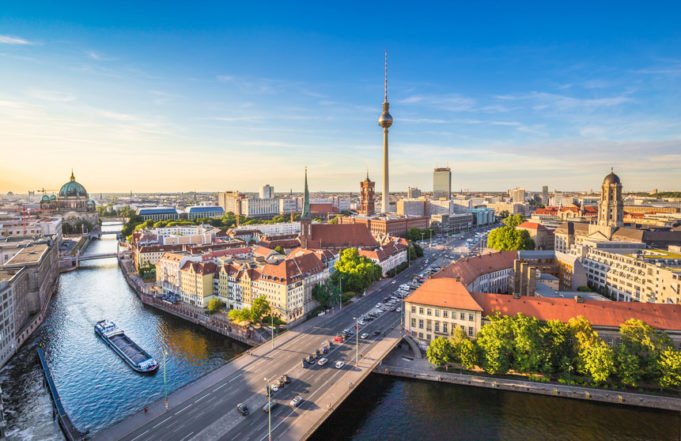
Berlin – The Green Capital
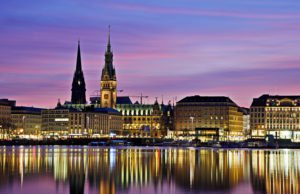
Hamburg: A Port City with a Difference
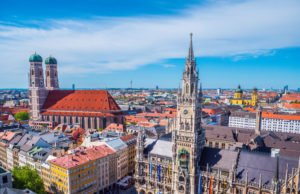
Munich – The Heart of Bavaria
Cologne – cathedral city on the rhine.
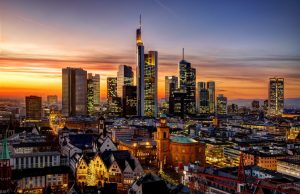
Frankfurt – The city for everyone
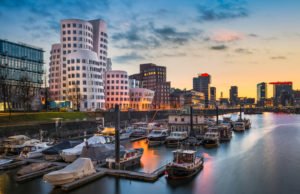
Düsseldorf – The vibrant Altbier City
Nuremberg – a beauty in franconia.

An Insider’s Guide to Drinks in Germany
Radler beer: the perfect summer refreshment, warm up with a german classic: glühwein, cream lovers bremen – the best sweets and so much more, bean filled pillow – the 16 best products compared, bean filled neck pillow – the 16 best products compared, bean cushions – the 16 best products compared, travel germany - plan your visit to germany now.
Germany is a hidden gem when it comes to awesome travel destinations. Whatever suits you best – you can have it all:
- amazing city trips
- wonderful nature
- stunning mountain views
- beautiful islands
- great regional food
Tourism.de is your Germany travel guide.
Enjoy your vacation!
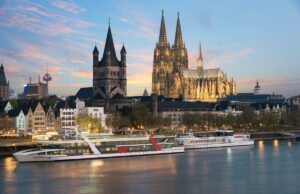
How to Plan the Perfect Rhine River Cruise
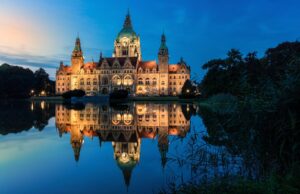
Things to do in Hannover, the green city
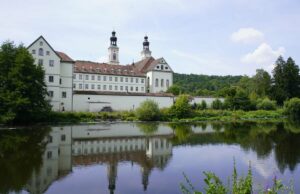
Hohenfels Germany – An Underestimated Place to Be!
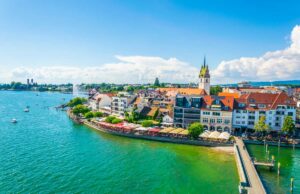
Friedrichshafen Germany: A Guide to the City of Zeppelins
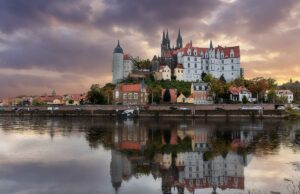
Exploring Meissen, Germany: A Guide to Rich Cultural Heritage
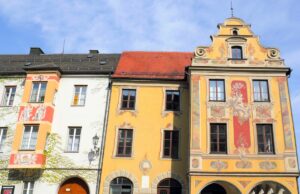
Explore Memmingen Germany: A Hidden Gem of Bavaria
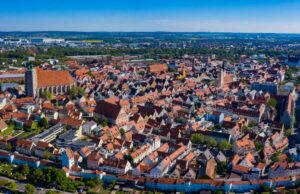
Explore the Enchanting Charm of Ingolstadt in Germany
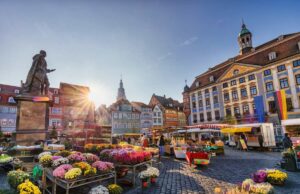
Discover the Enchanting Charm of Coburg in Germany
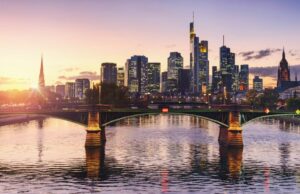
Frankfurt Boat Tour: Discover the beauty of the city from the water
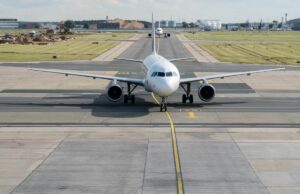
Airport Express Berlin: Everything you need to know about the fast airport transfer!

Berlin’s Art Museums: A Cultural Journey Through Time
Discovering the charm of bad tölz: a guide to this bavarian gem, unveiling hidden gems: your ultimate guide to stuttgart’s attractions, bayreuth germany, southern germany – a region worth exploring, exploring trier: one of germany’s oldest cities, ravensberg, germany: a town steeped in history, amberg: a hidden gem in northern bavaria, experience erlangen, ramstein germany – a city rich in history, saxony: a land of culture and natural beauty, 3 places you have to visit in nuremberg, kochel am see: scenic nature just outside of munich, munich central station: a transportation hub at the heart of bavaria, splash tour lübeck, let your wanderlust take you to regensburg.
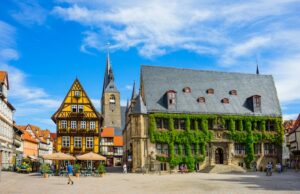
Quedlinburg – A Medieval Gem
Laser tag bremen: an exciting indoor experience, dresden and its countryside: the beauty of baroque and nature.
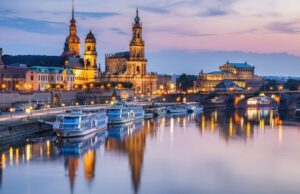
Dresden – A city with many facettes
Tourist attractions in hamburg, tourist attractions in munich – find your next adventure, stuttgart – a lively and modern city, the beauty of the german landscape, tourist info bamberg, visit bamberg: impressive architecture and bavarian charm.
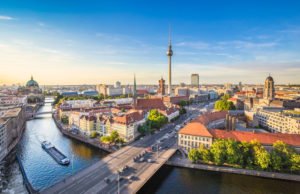
Baden-Baden – The Spa and Casino City
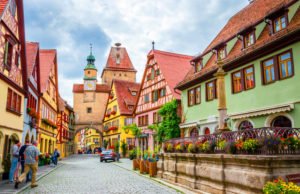
Rothenburg ob der Tauber
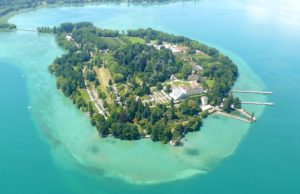
Mainau – Island of Flowers
Koblenz – wine city at deutsches eck.
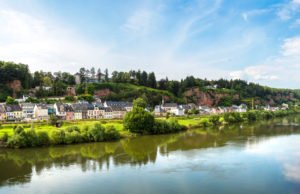
Trier – Roman Heritage and German Wine
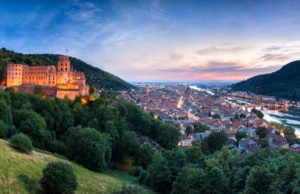
Heidelberg – Gorgeous College Town on the River Neckar
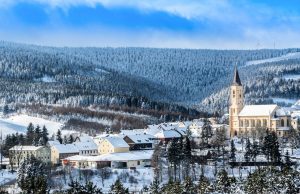
Oberwiesenthal – The highest Town in Germany
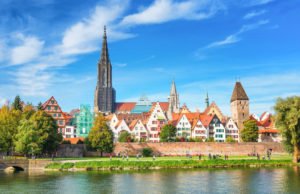
Ulm – Lovely City on the River Danube
Mainz – the carnival city.
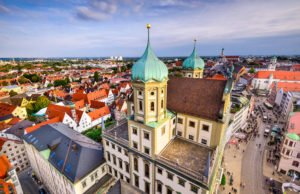
Augsburg – The Lovely Capital of Swabia
Heilbronn – rich history, fine wines and live music.
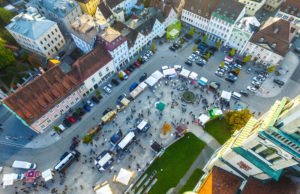
Kempten – Lovely City in the Allgäu
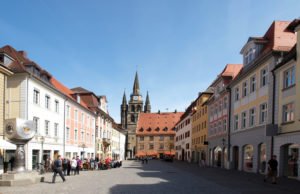
Ansbach – The Hidden Rococo Gem
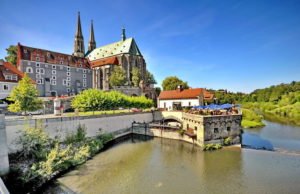
Görlitz – Gorgeous City in the Upper Lusatia
Füssen – nature, history, and hospitality.
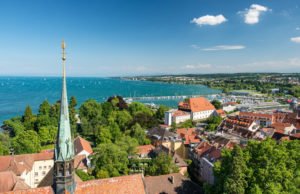
Konstanz – A Lovely City at Lake Constance
Oberstdorf – a paradise for hiking and skiing.
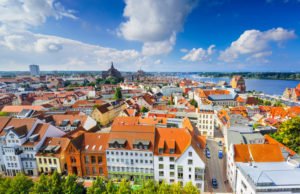
Rostock – A Baltic Paradise
Stuttgart – enjoyable city at the neckar river, münster – cultural centre of westphalia.
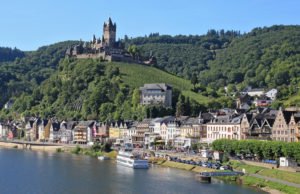
Cochem – Idyll along the Moselle
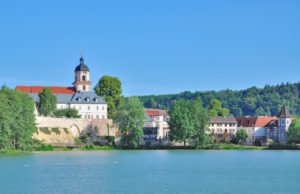
Bad Salzungen – The Spa Town
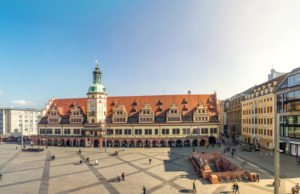
Leipzig – The Heart of Saxony
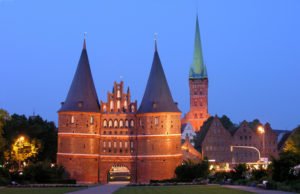
Lübeck: Queen of the Hanseatic
Potsdam – the city of parks, passau – city of three rivers.
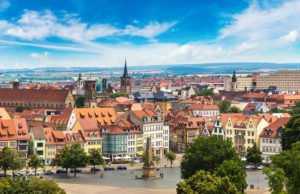
Erfurt – Beauty in the East
Winterberg: fun in the snow.
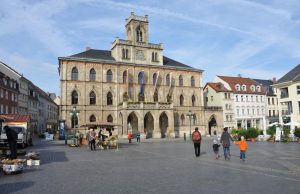
Weimar – Centre of culture
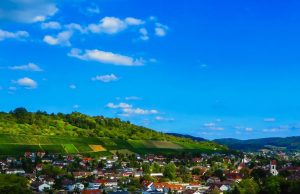
Weil am Rhein – The city of chairs
Regensburg: gorgeous world heritage.
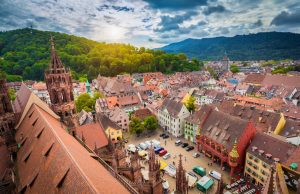
Freiburg im Breisgau: The sunny city
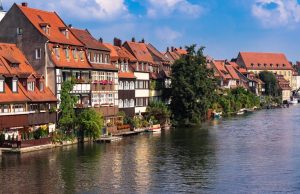
Bamberg: The franconian Rome
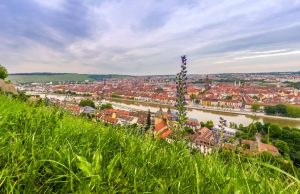
Beautiful Würzburg
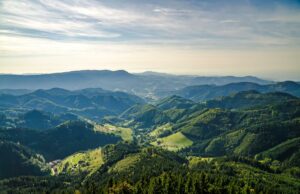
Hiking In the Black Forest – Your Guide to Your Magical Adventure
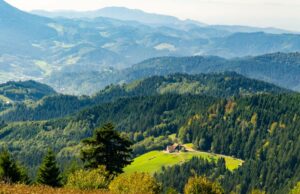
Discovering the Black Forest Weather
A guide to chiemsee: germany’s lake paradise, discover the beauty of the bavarian alps.
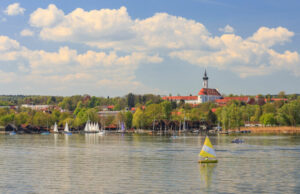
Ammersee Bavaria: A Charming Escape in Southern Germany
Herrenhausen gardens – one of the great gardens of the world, mittenwald: a hidden gem in the bavarian alps, the green heart of munich: the english garden.

The Travel Guide to the Harz Mountains
Königssee – an alpine jewel, ammergau alps – a paradise for walkers.
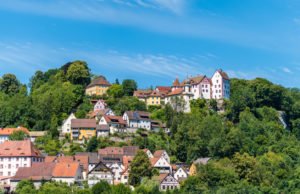
Franconian Switzerland: A Mountainous Wilderness
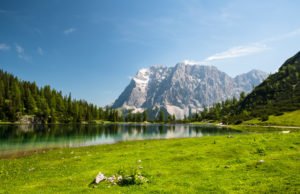
Zugspitze – Germany’s Highest Mountain
Garmisch-partenkirchen – a lovely mountain resort town, oberammergau: passion and beauty in the ammergau alps.
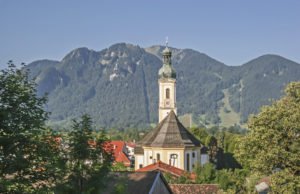
Lenggries – Picturesque Place in the Alps
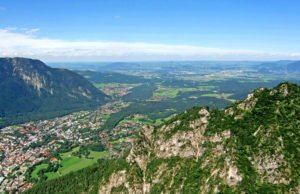
Bad Reichenhall – A Wonderful Alpine Town
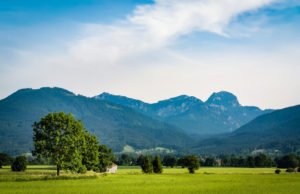
Bad Aibling – Relaxing in a gorgeous Spa Town
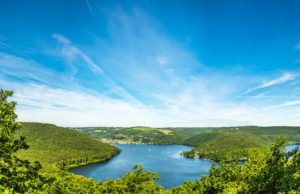
The Eifel – A fiery, natural Paradise
Meersburg – city of museums, wernigerode – the colorful town in the harz foothills.
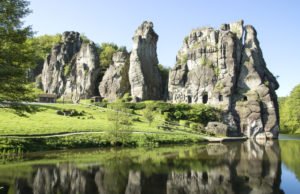
Teutoburg Forest
Thuringian forest.
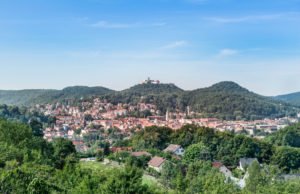
Eisenach – Home of Wartburg Castle
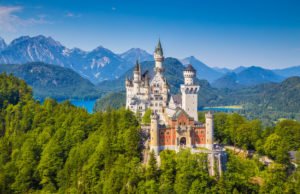
Neuschwanstein Castle
Mecklenburg lake plateau, lake constance.
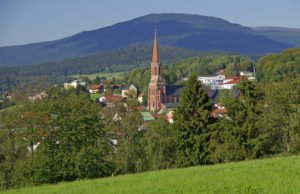
Bavarian Forest
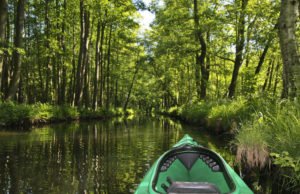
Spreewald – Picturesque Woodlands
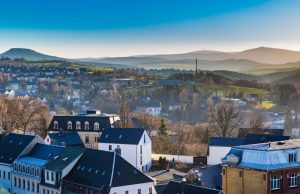
The Ore Mountains
Berchtesgadener land.
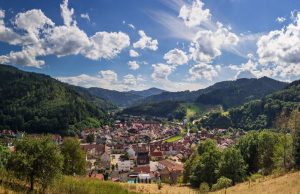
Black Forest
Braunlage: beauty in the harz mountains.
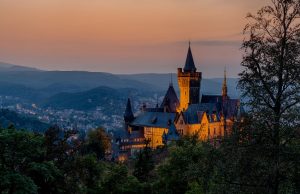
Gorgeous Harz Mountains
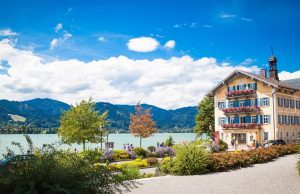
Touring Tegernsee, Germany
Islands and coast, german north sea coast, fischland-darss-zingst.
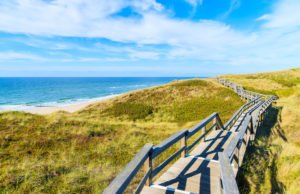
Sylt – The Largest Island in North Frisia
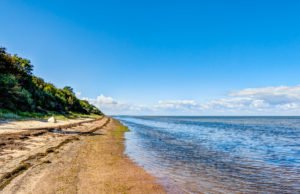
Poel Island – A Beauty in the Baltic Sea
Kühlungsborn – the charming sea side town.
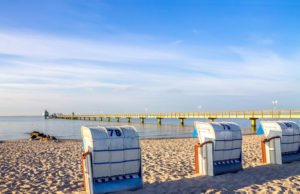
Grömitz: The Baltic’s Peaceful Coastline
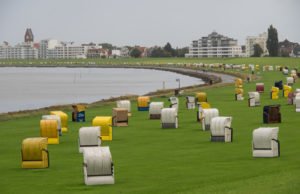
Cuxhaven – The Small Shining Pearl of Northern Germany
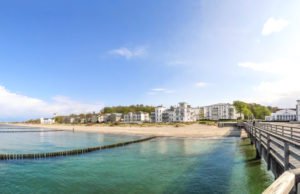
Heiligendamm – The White Town by the Sea
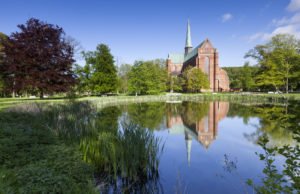
Bad Doberan – Relaxing near the Baltic Sea
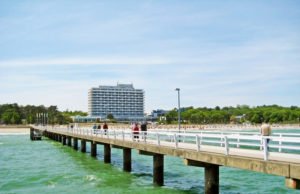
Timmendorfer Strand – Enjoying the Beach Life
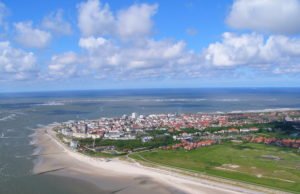
Norderney – Stunning Coastal Vistas
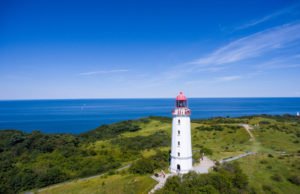
Hiddensee – The Feel-Good Island
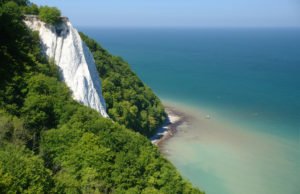
Rügen Island – The Jewel of Germany’s Baltic Coast
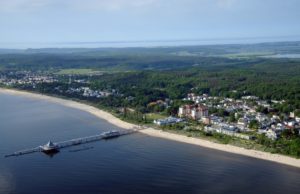
Heringsdorf – The Imperial Spa and Seaside Resort Town
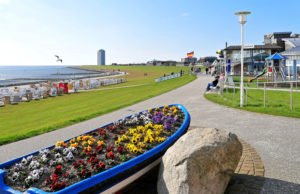
Büsum – Home of the North Sea Shrimps
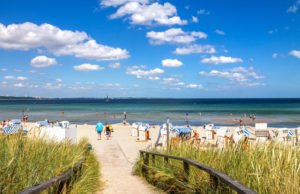
Scharbeutz – Sun, Sand and Stew
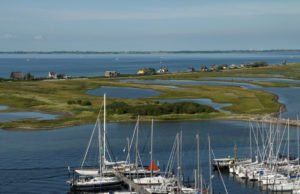
Heiligenhafen – Gorgeous place at the Coast
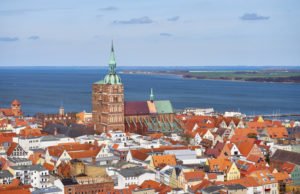
Stralsund – A Gothic Seaside Town
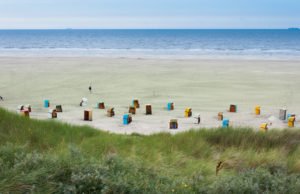
Juist – Cozy island in the North Sea
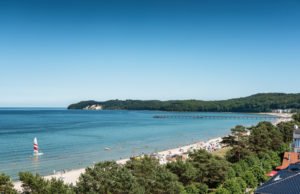
Binz – A georgeous seaside resort
Usedom – the sunny island, borkum – a lovely seaside health resort.
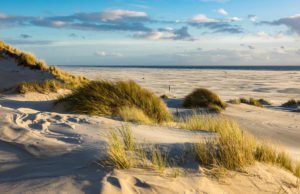
Amrum – Pearl of the North Sea
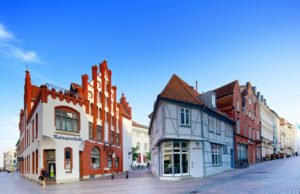
Wismar – City with outstanding architecture
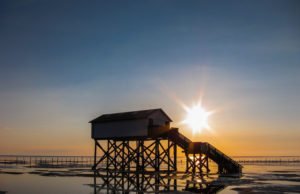
Sankt Peter-Ording
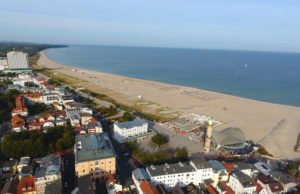
Warnemunde – Peaceful Seaside Resort Town
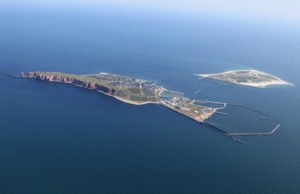
Heligoland – The Unique Island
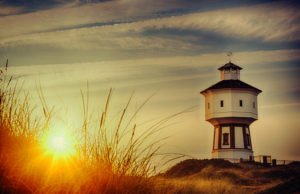
Langeoog: The Island for life
Travemunde – lovely town at the baltic sea, föhr – the green island, by the river.

LEGOLAND Munich – Visit the Brick Kingdom
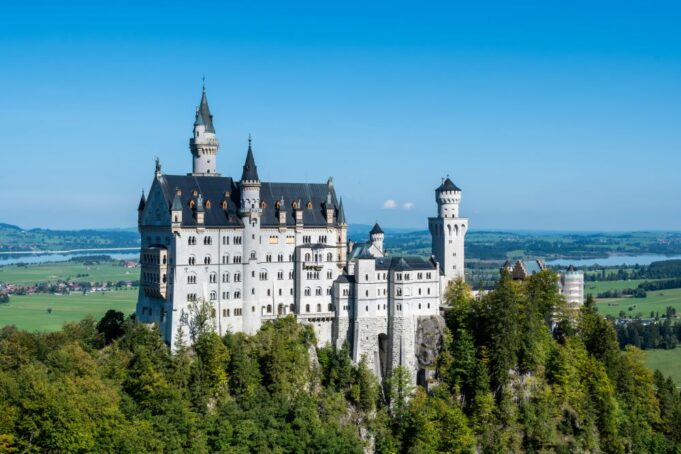
Discover the Enchantment of Bavarian Castles
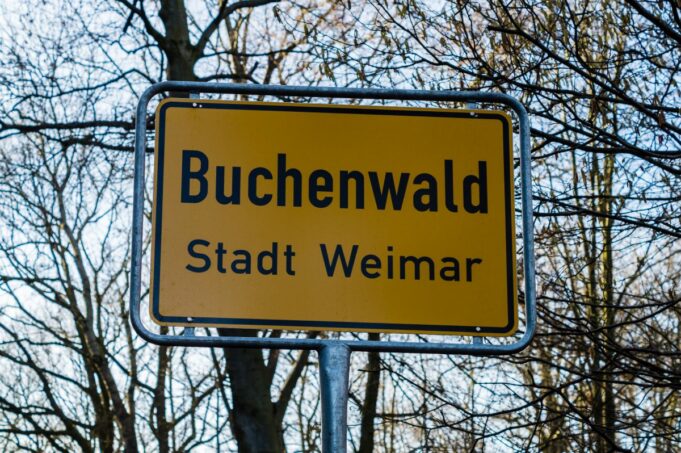
The Untold Chronicles of Buchenwald Concentration Camp
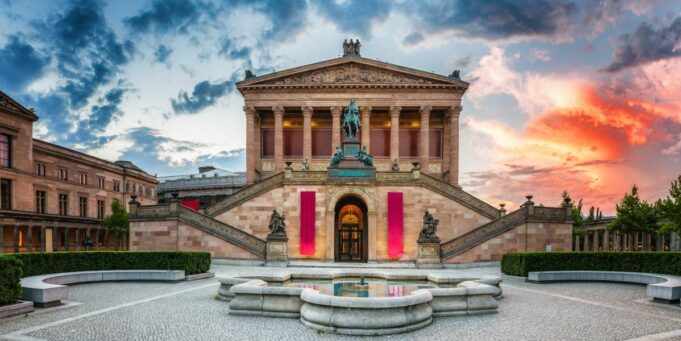
Caves in Germany – here’s what you cannot miss!
- Privacy Policy

Spring is here!
Great ideas for your next visit to Munich.
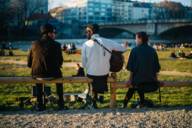
Local Love Munich
Munich's districts are diverse, contrasting and worth exploring. Immerse yourself!
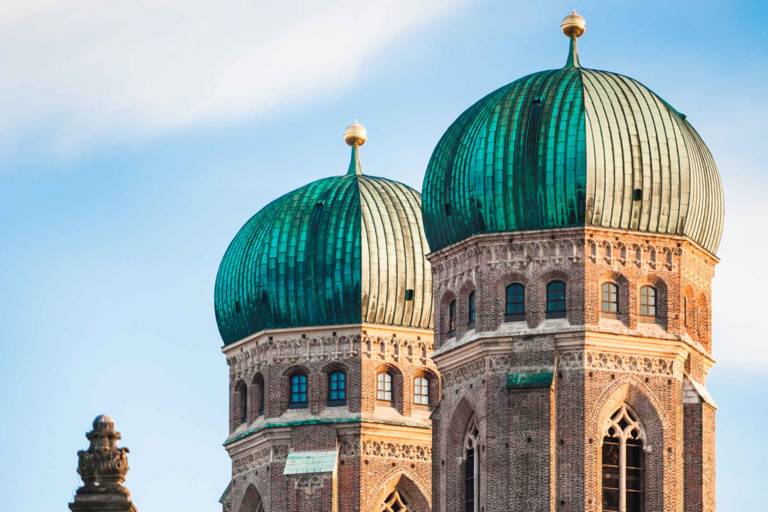
Frauenkirche: Visit of the South Tower
Book a visit to the observation deck of Munich's Frauenkirche and enjoy a 360-degree panoramic view of the city.
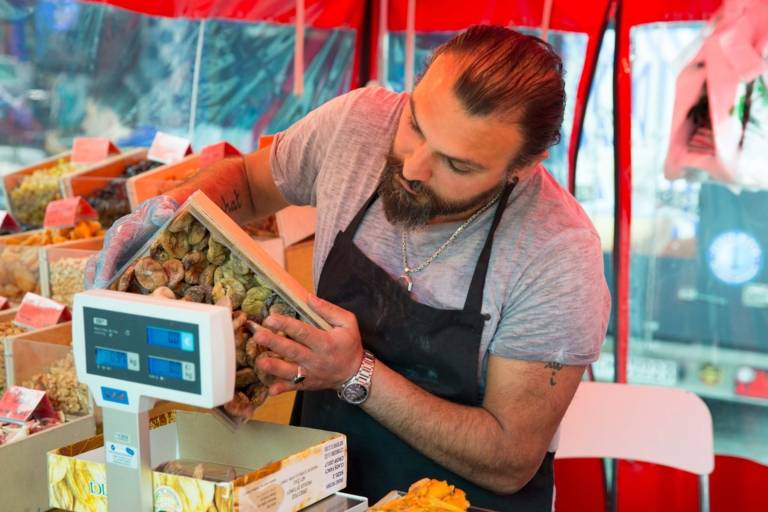
Viktualienmarkt Tasting Tour
Discover the most delicious delicacies of the city and learn all kinds of interesting facts about Munich's most famous food market.
Discover the most delicious delicacies of the city and learn all kinds of interesting historical facts about Munich's most famous food market.
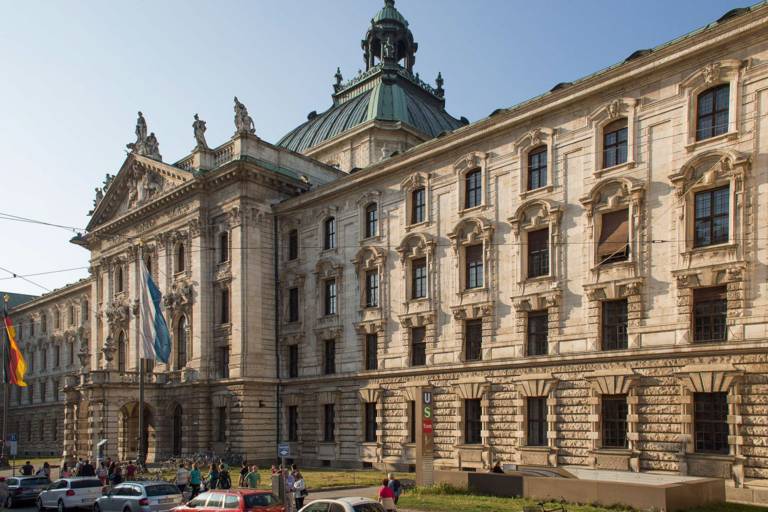
Justizpalast Tour
During the guided tour of the present-day seat of the Bavarian State Ministry of Justice, you will learn everything about the history and significance of the neo-baroque court and administrative building.
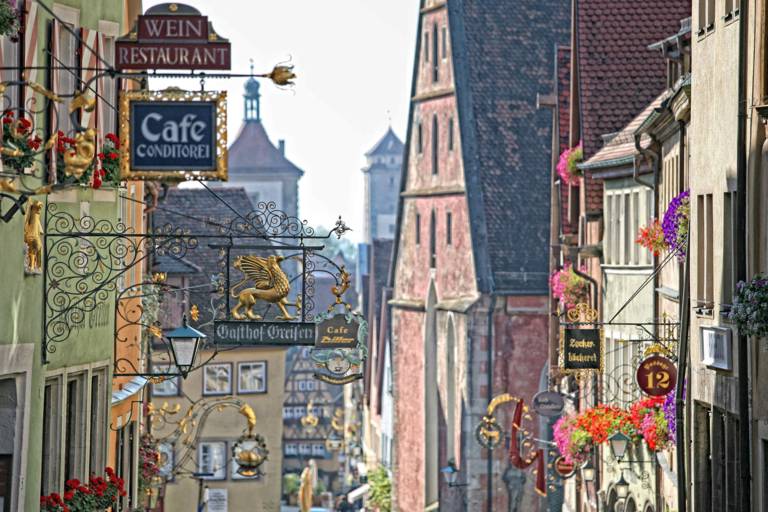
Romantic Road: Rothenburg and Harburg
Hop on and be whisked away by one of the world's most beautiful stretches of street: the Romantic Road to Rothenburg and Harburg.
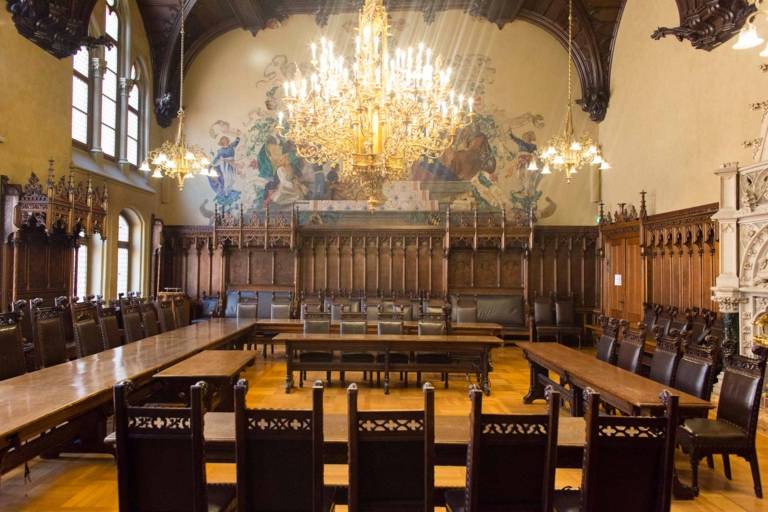
New Town Hall Tour
Explore the Neue Rathaus on Marienplatz with an official City of Munich tour guide. A visit of the famous law library is also included!
Explore the Neue Rathaus on Marienplatz with an official tour guide. A visit of the famous law library is also included!
Magistrates, Monachia and magnificent celebrations: explore the Neue Rathaus on Marienplatz with an official City of Munich tour guide. A visit of the famous law library is also included!
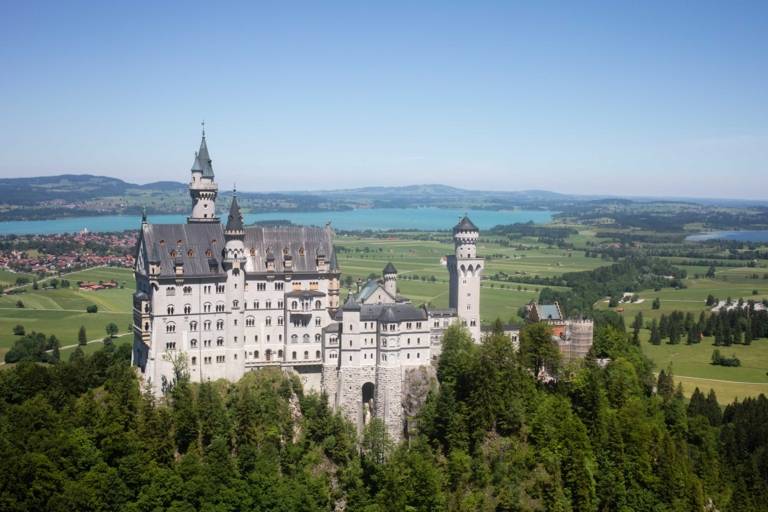
Dream castles Neuschwanstein & Linderhof
Immerse yourself in the world of the fairytale king!
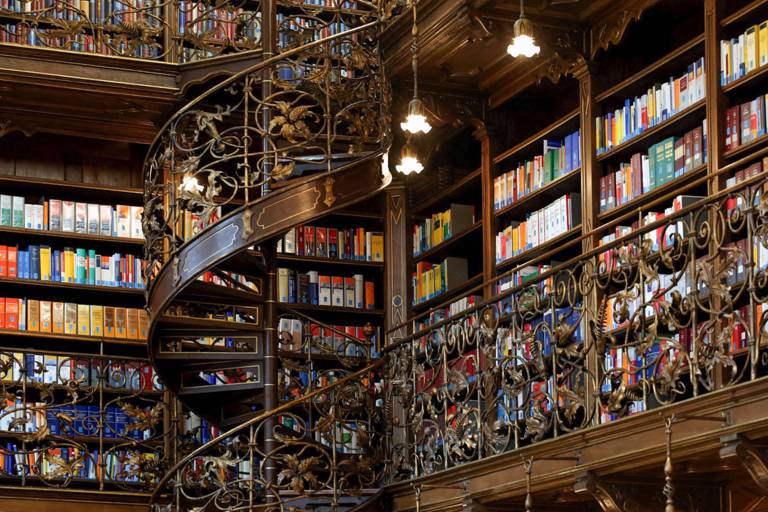
Visit of the Law Library: Juristische Bibliothek
Impressive architecture and unique ambience: discover the Law Library in the New Town Hall.
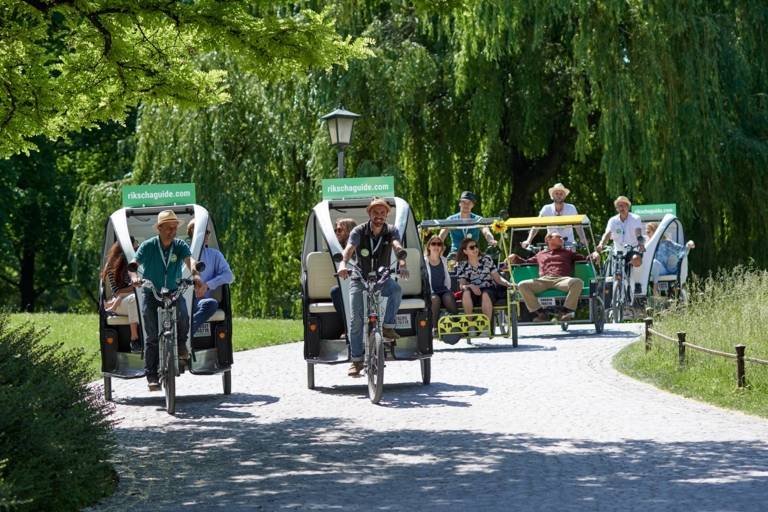
Pedicab tour through the old town and nature
Enjoy this special tour and pedicap ride past all the famous sights of Munich's old town and into the Englischer Garten.
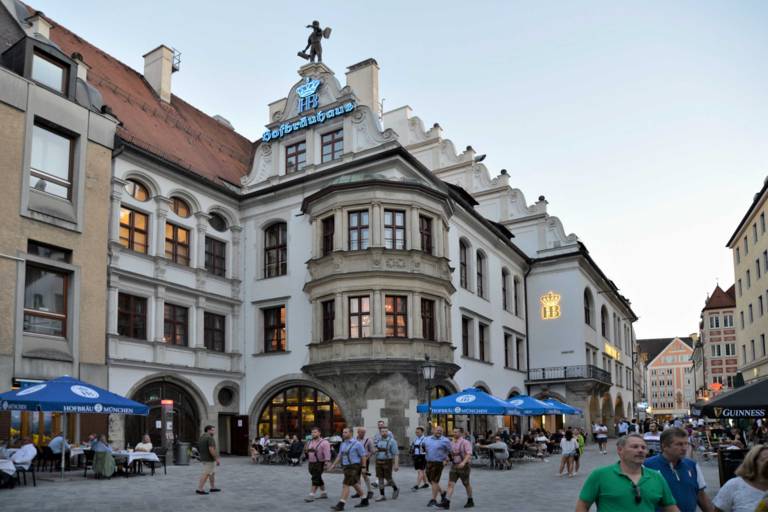
Hofbräuhaus Tour
Discover the most famous beer hall in the world with an official guide of the city of Munich and enjoy a fresh Mass of beer afterward!
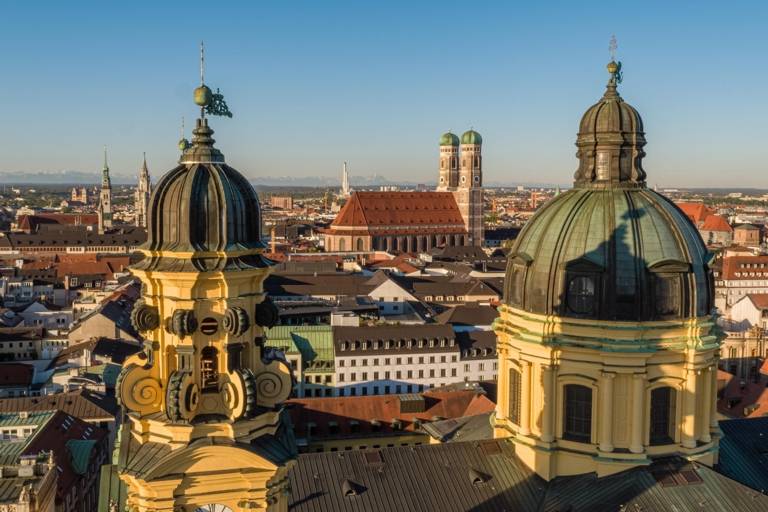
City trip incl. Munich Card and Tower Ascent
We look forward to seeing you again in Munich. Our tip: the exclusive travel package with Munich Card and Tower Ascent.
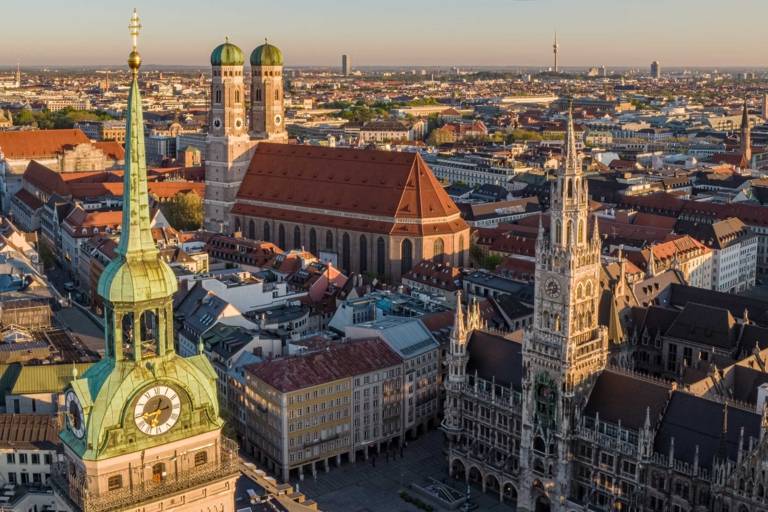
Old Town Tour
The city walk for everyone who wants to become acquainted with the most beautiful parts of Munich's city centre.
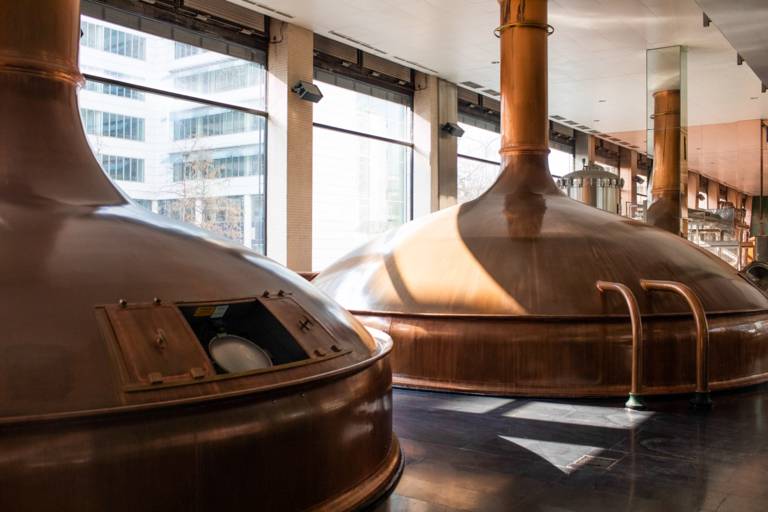
Spaten Brewery Tour
Experience a brewery tour at Spaten with a look behind the scenes, interesting facts about the company history and beer tasting in the brewery tower.
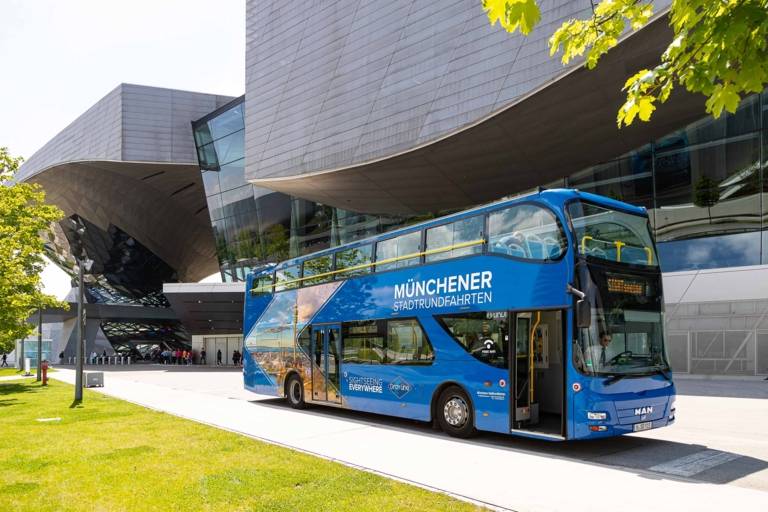
Hop-On Hop-Off city bus tours Gray Line
The hop-on hop-off city bus tours of Gray Line will let you collect unforgettable impressions of Munich.
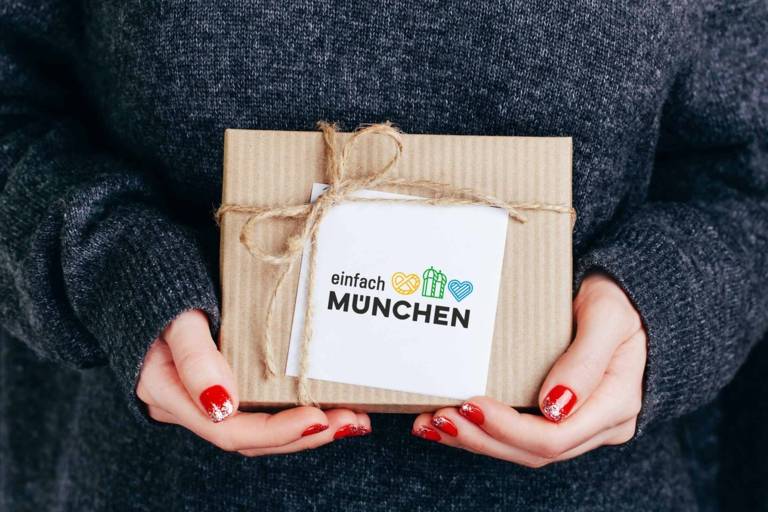
Buy now vouchers for your visit in Munich. The ideal gift! Guided tours, guest cards and more...
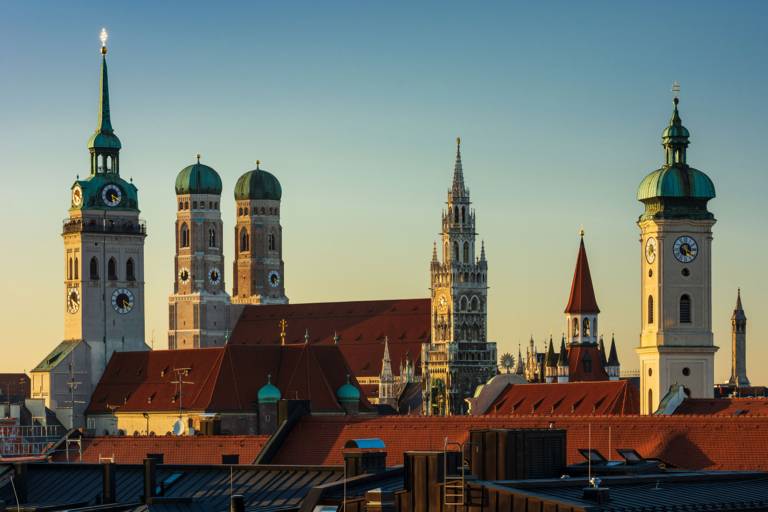
Private guided tour through Munich's Old Town
Exclusive and safe: Discover the most beautiful sights and corners of Munich's city centre with your official personal guide.
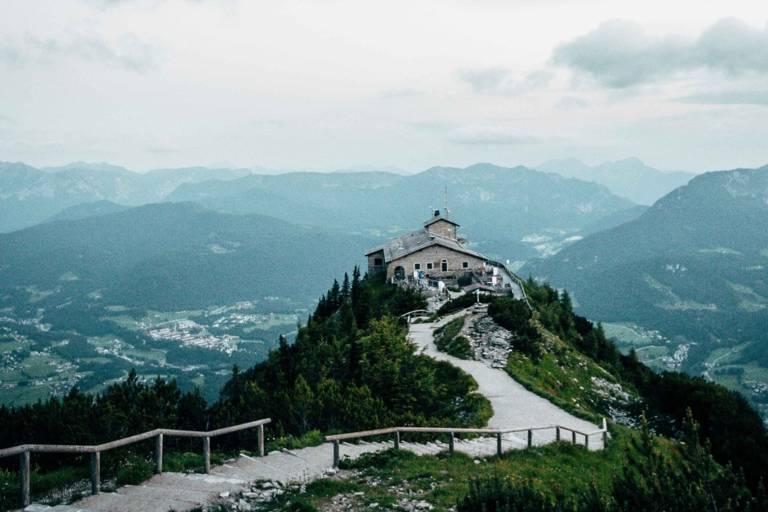
Berchtesgaden area and Eagle's Nest
The day trip takes you along the Alpine Road to Berchtesgaden area with its dreamlike scenery.
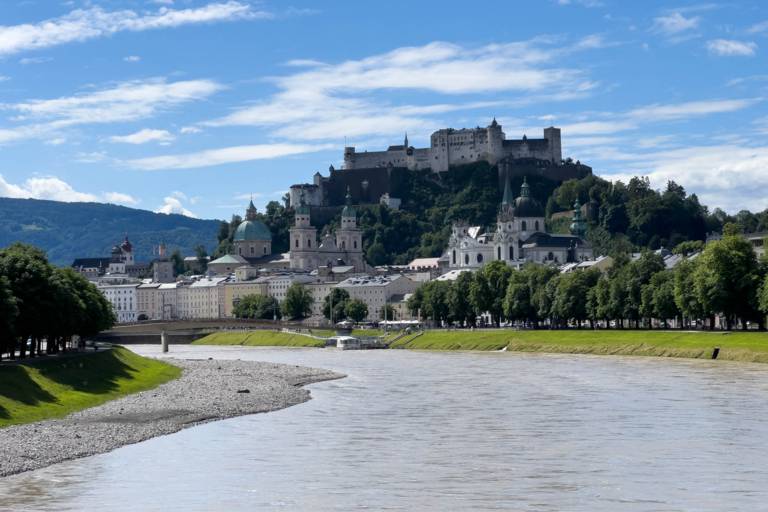
Salzburg and the Lake District
Visit the birthplace of Wolfgang Amadeus Mozart and relax on the journey to beautiful Lake Wolfgang.
Visit the birthplace of composer extraordinaire Wolfgang Amadeus Mozart, stroll through the Baroque old town and then relax on the journey to beautiful Lake Wolfgang.
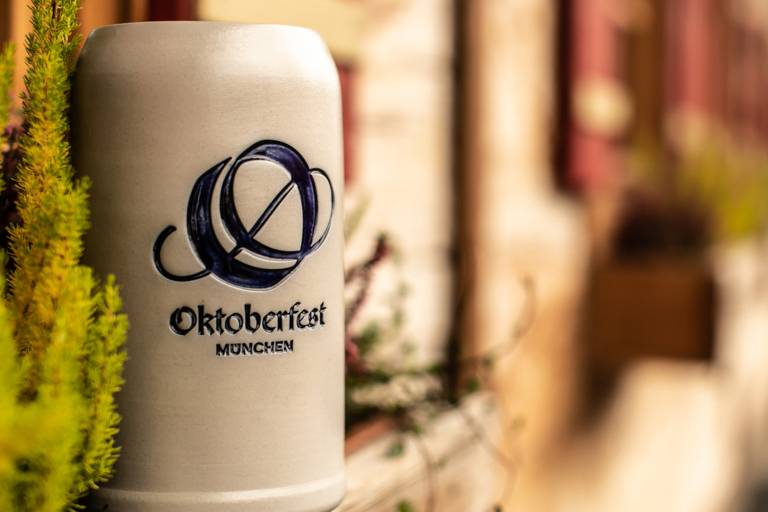
Oktoberfest Shop
Bring a piece of Oktoberfest home: Purchase official souvenirs such as the Wiesn poster or the Oktoberfest beer stein in the official Oktoberfest shop.
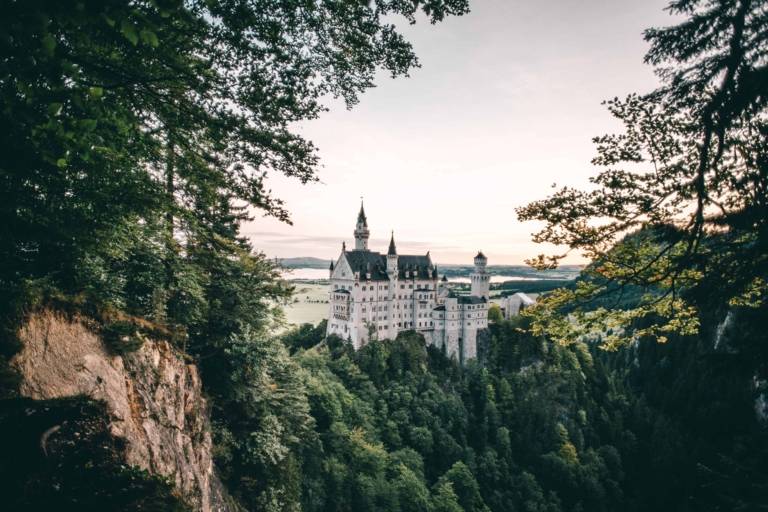
Dream castles Neuschwanstein & Linderhof VIP
As VIP in the footsteps of King Ludwig II. On this day tour in the luxurious long-distance coach of Gray Line Sightseeing you can visit both dream castles of the fairytale king.
A day tour in the luxurious long-distance coach of Gray Line Sightseeing.
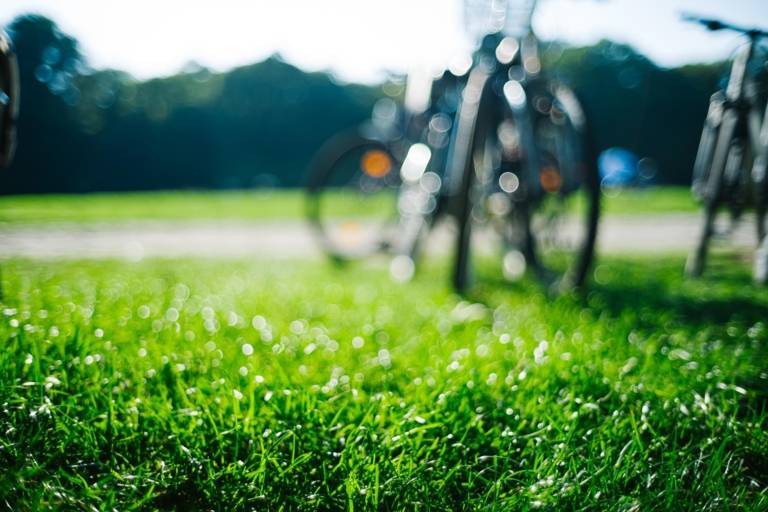
Rental bike 1 day
With a rental bike, you can experience Munich at your own personal pace. Discover hidden alleys and charming districts off the beaten track.
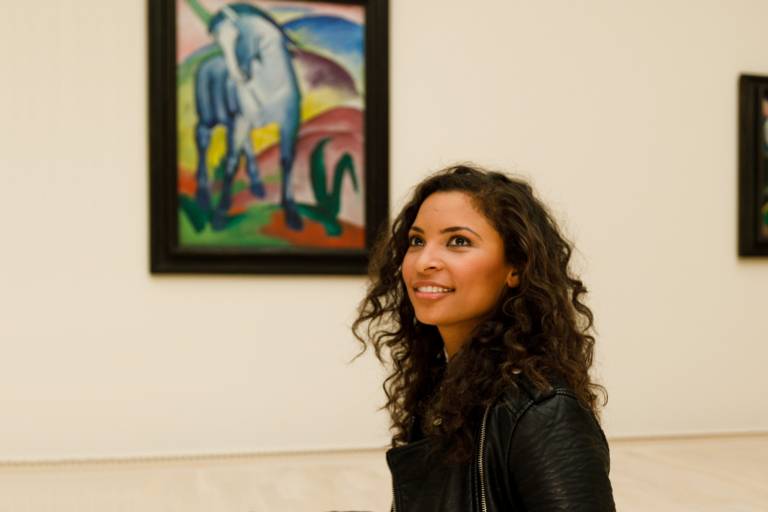
Discovery trip incl. City Pass
2 nights in your selected hotel and - thanks to the City Pass - free admission to 45 museums, sights and attractions: our travel package for explorers.
Neighbourhood Ambassadors Munich
Immerse yourself in the colorful variety of Munich's neighborhoods, and be guided by the inspiring recommendations of our neighborhood ambassadors.
Hungry for art
From the Old Masters to the new young things: Munich's museums showcase art from all branches and eras. Here are some exhibitions that you'll definitely want to catch in 2024!
2024 Pentecostal Season in Munich
When peonies bloom and warm days fade away into mild evenings, the Pentecostal season is just around the corner. Here are the top tips for planning your holiday in Munich in 2024.

Munich Card & City Pass
Discover Munich in a relaxed and uncomplicated way: discounts for the diverse range of art, culture and leisure activities with our guest cards.
Free Public transport
Reduced or included!
Public transport is included
Many discounts with the Card, many things for free with the Pass.
Online or at the tourist information offices
Vouchers for Mother's Day
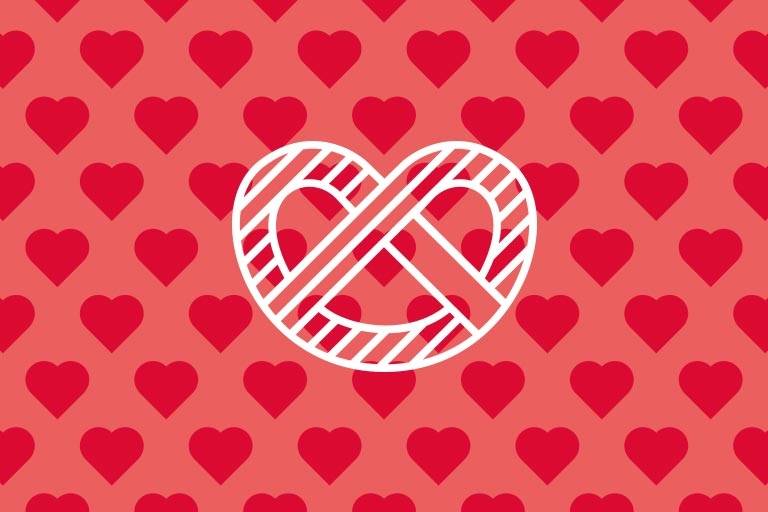
Guided Tours
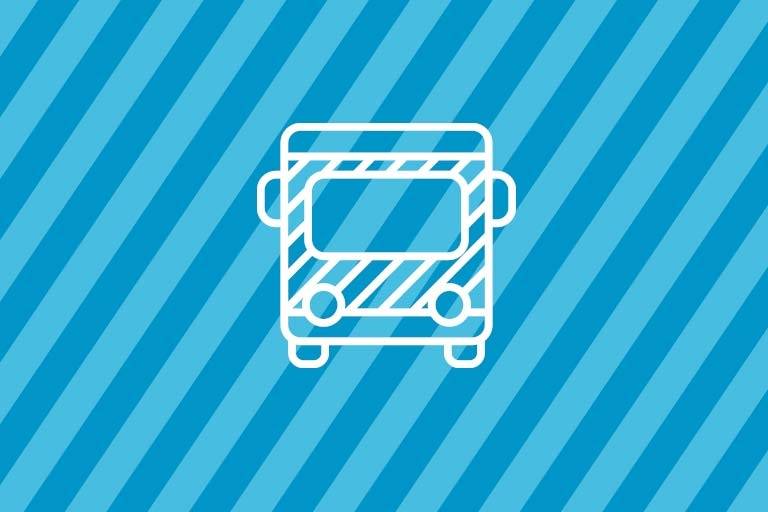
Travel Packages
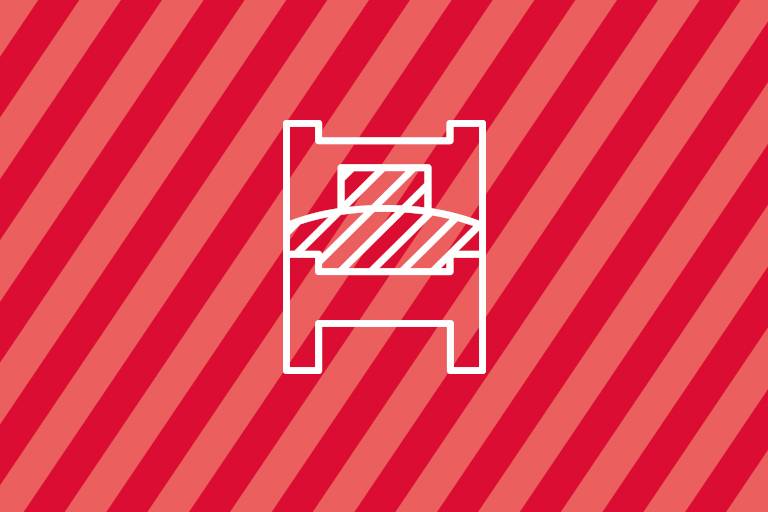
Accomodation
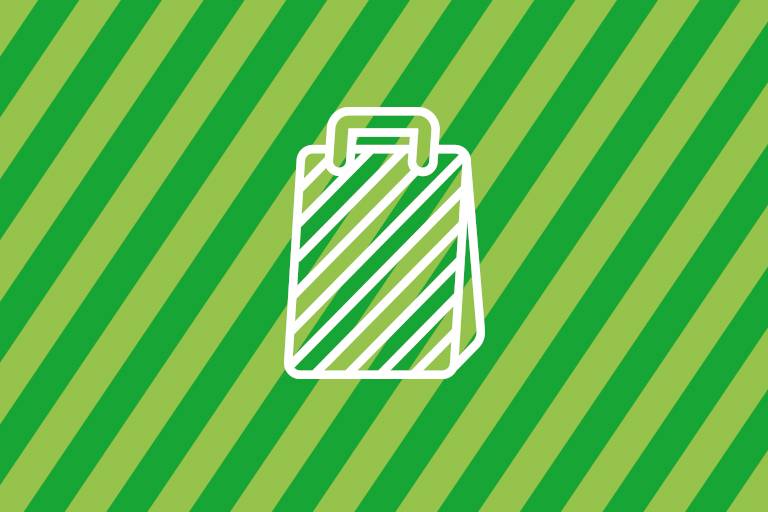
Give the gift of a special Munich voucher: we also offer vouchers for all our guided tours. Here you can book unique Munich experiences directly online, print them out and give them as a gift voucher to friends or family.
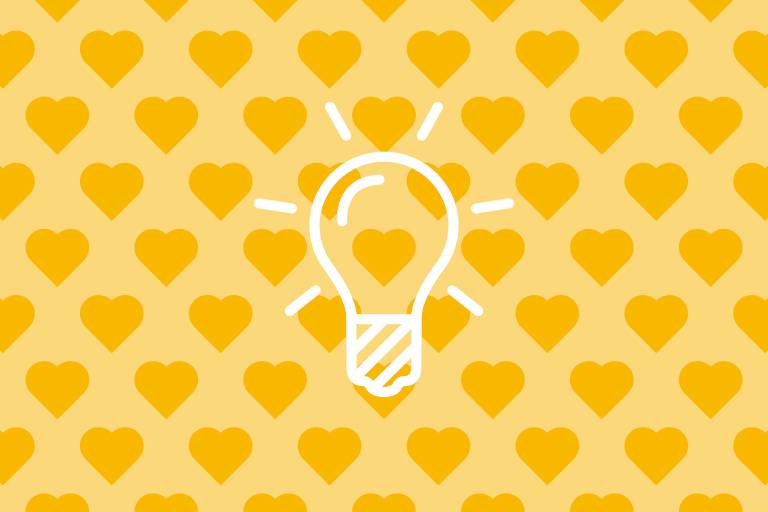
As soon as the first spring-like temperatures arrive in Munich, the city's restaurants and cafés begin the big chair shuffle.
A Maze of Gold and Glitter
Our author was born and raised in Munich – and yet has never been to the Residenz (city palace). Now it's time for a first visit!
A Pot-pourri of Curiosities
For the “I've never been to...“-series, Anika Landsteiner explores the Valentin-Karlstadt-Musäum for the first time.
Hey, street art fans! Munich is a treasure of colorful street art waiting to be explored. Be amazed by the artistic marvels showcased as you take a leisurely stroll through the city streets.
Great activities for families
Munich is one of the most popular destinations with children. These are our suggestions for families at any time of year and in any weather!
Event calendar
Find things to do in Munich by month with our special event calendar. See Munich's top events.
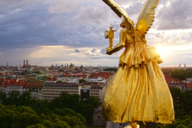
The most important sights in Munich at a glance
Places in Munich that you should definitely visit at least once!
- Book excursions
- Book the Munich-Card
- Book guided tours
Find your hotel now
Travel date
- Contrast Contrast
City of Freedom
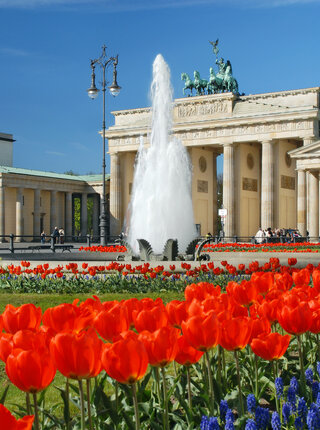
1 ticket for all museums
Admission to all museums & exhibitions
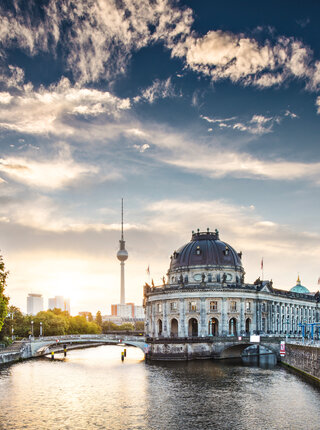
The most beautiful performances & productions
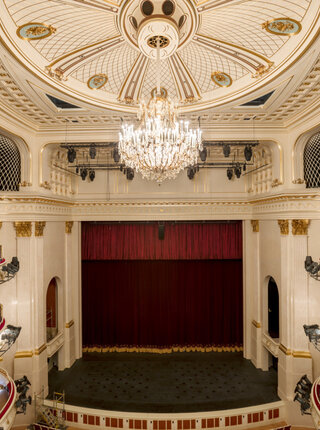
Discover dinosaurs & more
An experience for the whole family
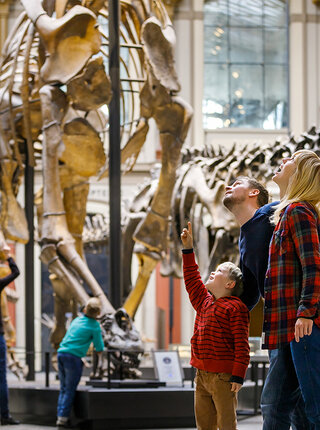
Highlights in Berlin's Museums
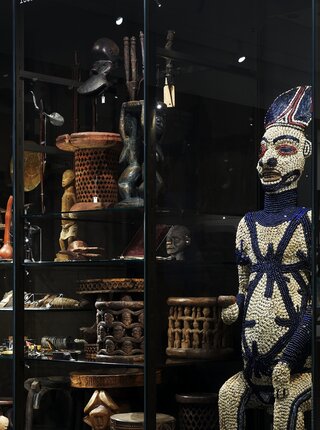
Bypass the queue
Enjoy a unique panoramic view
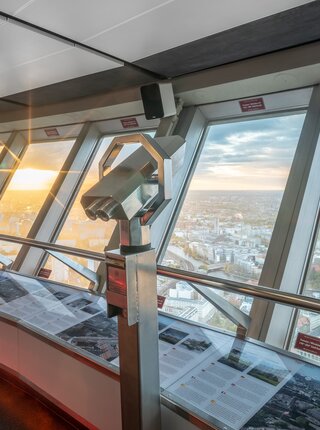
Tips for your journey to Berlin
Be inspired.
Berlin awaits you. Visit the great museums & sights and then relax in a café. Look forward to concerts & shows, stroll through the shops and discover with us all the diversity of Berlin.
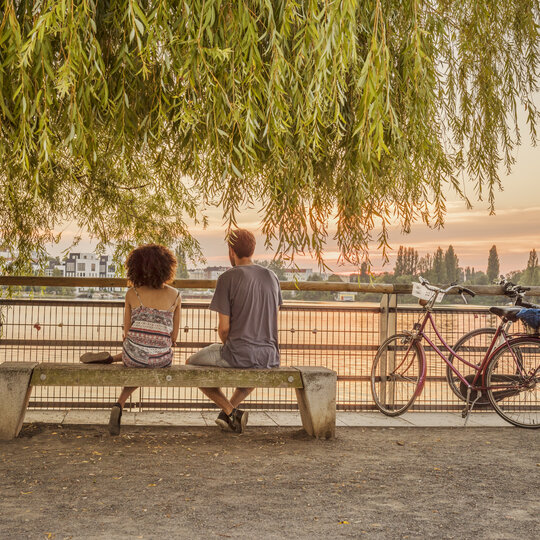
Summer in Berlin
Hot tips for long summer days
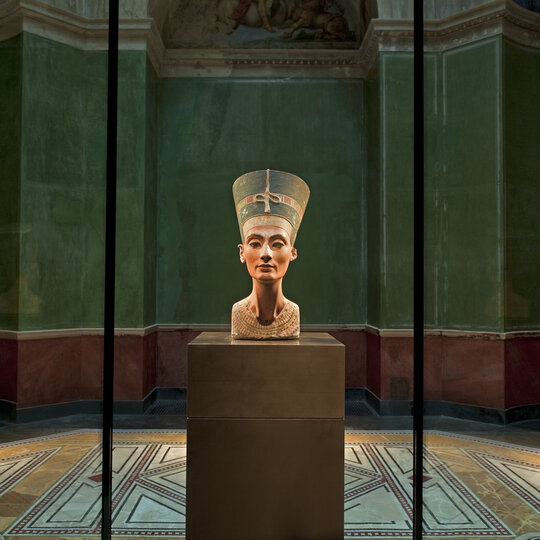
Tickets for the museums & exhibitions in Berlin
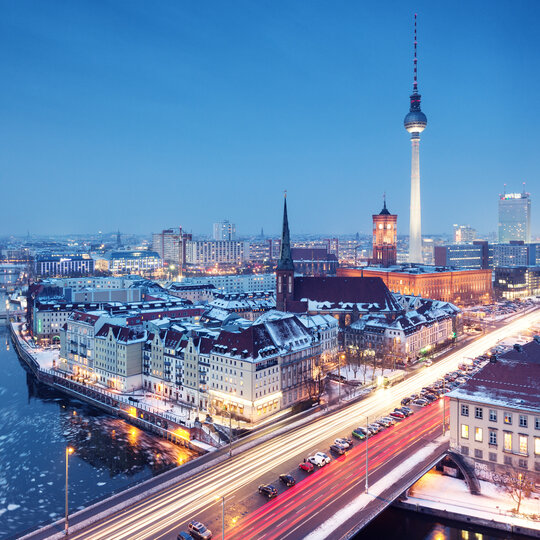
Berlin 2024 – the main events
Events, exhibitions, openings
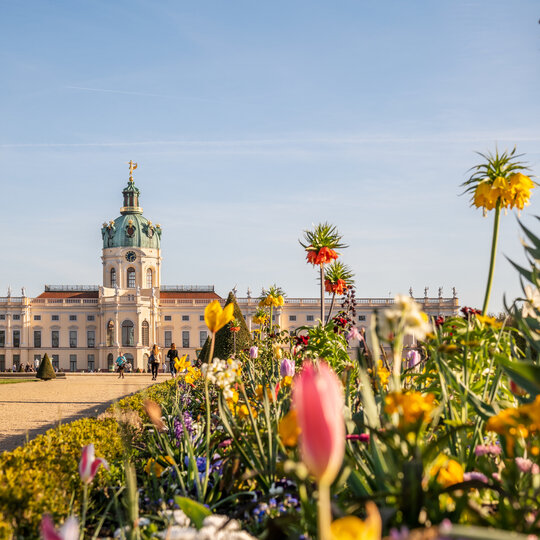
Berlin's Top 10 Attractions

Travel offers to Berlin
4 days in Berlin from €193
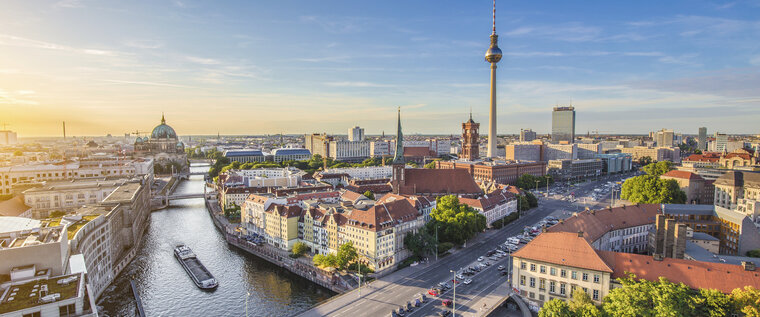
Berlin's official tourist ticket
- Free public transport in Berlin
- Choose from many attractions - savings up to 50%
- Free City Guidebook – including map
More than 15m sold tickets
Event tips in Berlin

FALLING | IN LOVE
Berlin's show jewel: The new Grand Show at Friedrichstadt-Palast Berlin, curated and visually designed by star designer Jean Paul GAULTIER
Show details
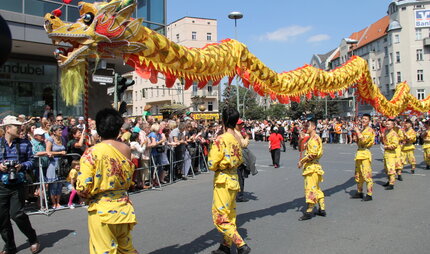
Karneval der Kulturen
The Carnival of Cultures is one of the largest city festivals in Germany and reflects the diversity of Berlin. Since 1996, the Carnival of
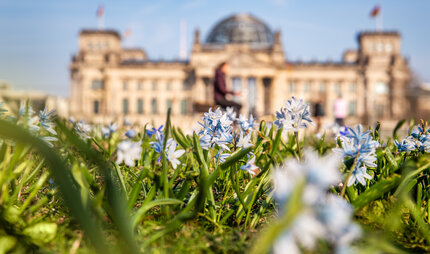
All tips for a long weekend
Ascension Weekend in Berlin
Ascension Day is a national holiday in Germany. Here you will find the best tips for excursions, tours, and lots of other event highlights.
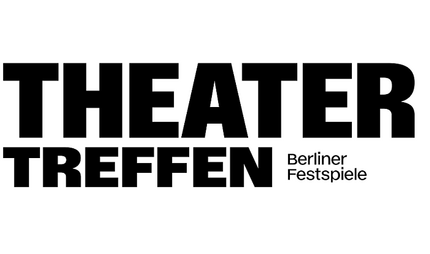
Theatertreffen 2024
The 61st Theatertreffen will take place from 2 to 19 May 2024. The 10 remarkable productions from German-speaking countries selected by a
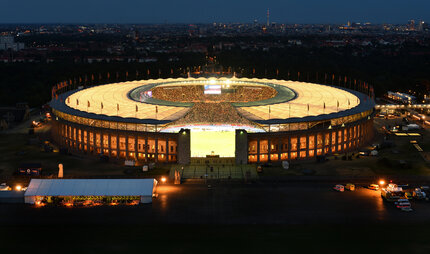
German Football Association Cup Final live in Berlin - 25. May 2024
Football fans from all over Germany are hoping their team will play in Berlin in May. Each year, the DFB Cup Final attracts thousands of
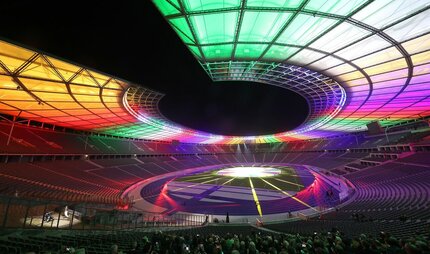
All about the European Football Championship in Berlin
European football history will be written in Berlin in 2024. Be there when 2.5 million football fans from 120 countries cheer on their team
Highlights in Berlin
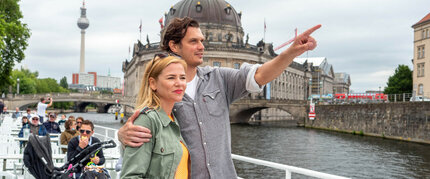
1-hour boat tour in Berlin on the river Spree
Classic city tour: Discover the historical & modern Berlin
from €21.00 1hr Tour
- 1-hour boat tour on the river Spree
- Discover historical & modern Berlin highlights
- Daily tours from Friedrichstraße/Tränenpalast
Tickets & dates
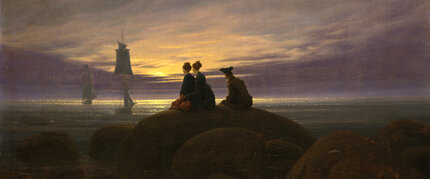
Ticket: Caspar David Friedrich - Infinite Landscapes Exhibition
Temporary exhibition at the Alte Nationalgalerie
from €16.00 online tickets
- The Art and History of Caspar David Friedrich
- Exhibition with 60 paintings & 50 drawings
- open from 19.04.2024
This you'll find only in Berlin: our tips!
You definitely don´t want to miss that in Berlin! Besides the top sights, Berlin has a lot more to offer.
Berlin has been the stage for a lot of world history and not just the fall of the Berlin Wall. You can still discover the traces of history in countless places around the capital. You can also explore traces of history in the modernist housing estates , which are UNESCO World Heritage Sites. Every three years, the large, supra-regional festival of building culture, the Triennale der Moderne , focuses on Berlin's modernist architecture.
Berlin is also a proper shopping destination . Besides luxury shops along Kurfürstendamm, you will also want to check out the numerous flea markets around the capital. Go on a shopping tour of Berlin: we're certain you'll find something you'll treasure.
Be sure to visit the popular food markets in Berlin's market halls and try out street foods from all over the world. And no Berlin visit is complete without a taste of local cuisine: we have the best tips for you and your travel companions.
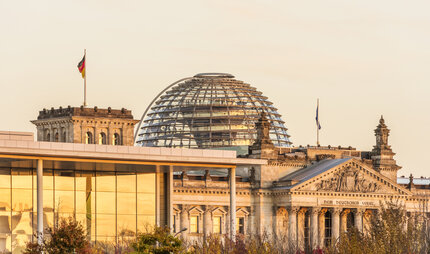
Berlin through the ages
Historic places in Berlin
Berlin’s history is full of highs and lows. Go on a hunt for clues and experience fascinating encounters with the past throughout the entire
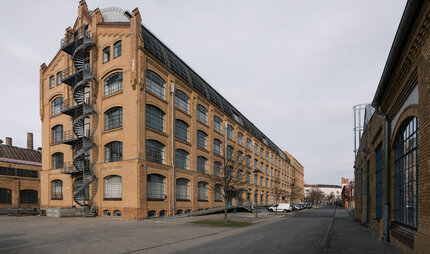
Industrial heritage in Berlin
Berlin Modernism
Art in the factory hall, fashion shows in the cold store, theatre in the transformer station – all over the city, Berliners have brought
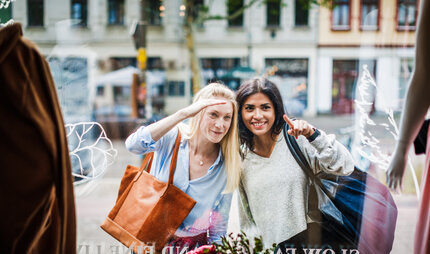
Look forward to going shopping
Shopping in Berlin
Go for a wander. Berlin’s shopping malls, shops and department stores are an inviting place to embark on an extra-special shopping trip

The historic centre of Berlin in rapid transformation
Berlin’s new cultural centre
Berlin’s historical centre is undergoing a dynamic change: new museums and major cultural projects are opening their doors.
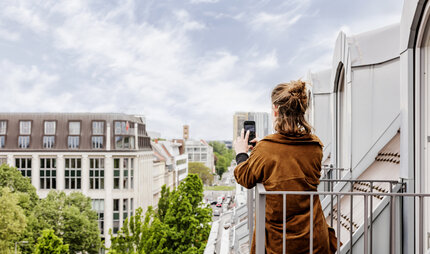
Discover Berlin’s coolest neighbourhoods by foot
The 15-minute city
Enjoy a Berlin city break by foot with the 15-minute city concept. Explore hidden gems and hip neighbourhoods just a stroll from your hotel.
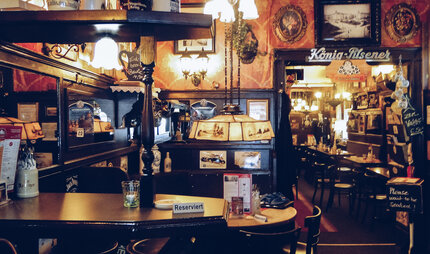
Meals for real guys
Berlin Cuisine
The food is half the experience when travelling, and Berlin cuisine won't disappoint. Enjoy a hearty meal after a long day of sightseeing.

Berlin is that sustainable!
For an environmentally conscious visit to Berlin
- Stay in certified hotels
- Enjoy vegetarian & vegan delicacies
- Shop responsibly
Favourite tickets
Discover the greatest places to visit from other visitors! Here, you can find tickets for the sights and attractions our Berlin visitors love!
Our travel service offers the ideal way to enjoy a stress-free holiday in Berlin, making it easy to buy tickets online for sightseeing tours, museums and exhibitions, attractions, sights and shows.
And it’s fast – so you can find the right ticket in just three minutes!

FALLING | IN LOVE Grand Show
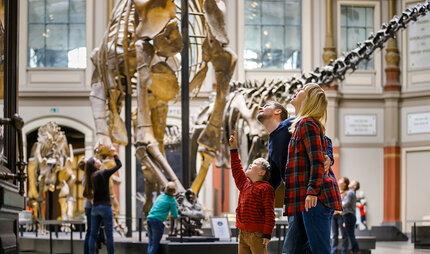
Tickets & Berlin Activities for Families with Children
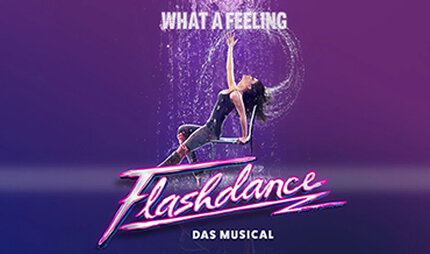
Flashdance - The Musical

LEGOLAND® Discovery Centre Berlin: Fast Entrance Ticket

Hans Uhlmann "Experimental forming"

Tickets for hop-on hop-off & sightseeing tours
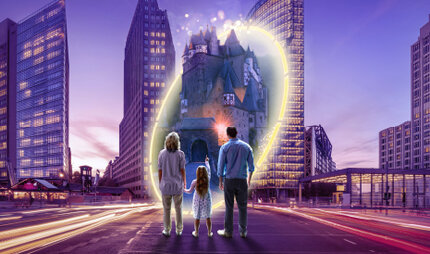
Deutschlandmuseum

Tickets for Zoo, Aquarium & Tierpark in Berlin

BMW Motorrad Welt: welcome home!
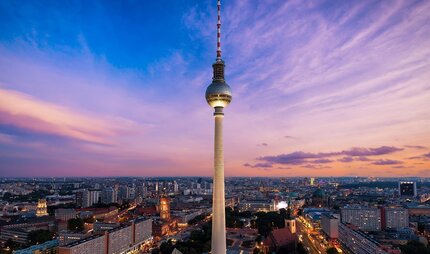
Tickets Berlin TV Tower & Restaurant Sphere
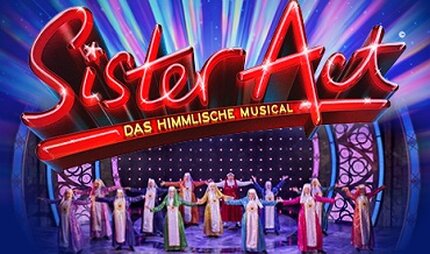
Praise Be, the Nuns rock Berlin!
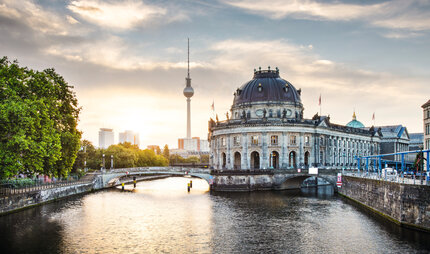
Berlin Museum Island: Day Ticket
Which berlin do you want to see.
Berlin: experience the German capital just the way you like. No problem with our Berlin insider tips. Whether you want to photograph Berlin's sights, visit museums, or experience events, we have the tips and information to get you there.
If you've already done the "big sights," we recommend heading out to Berlin's neighbourhoods, where there's lots of water, nature, and one or two insider tips.
Berlin also has a lot to offer for shopaholics, lovers of luxury, foodies, cyclists, and sports fans. Let yourself be inspired by our recommendations.
We also offer tips and tour suggestions for a relaxed holiday in Berlin with children.
Berlin is tolerant and open: you can be yourself here. We have also compiled tips for LGBTI* visitors including events, bars and clubs.
Whether with or without a disability, we want you to explore Berlin comfortably. Find out more at visitBerlin.de.

Berlin for explorers
We show you those sights in Berlin everyone expects you to have seen: the TV Tower, the Reichstag, the Brandenburg Gate, and Museum Island.
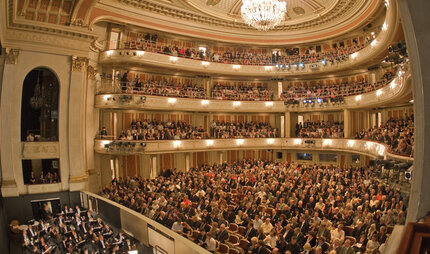
The best events for every day of the year
Berlin for the adventurous
Every day, there are so many events taking place in Berlin that we can hardly count them all. But we've put together a selection of the best
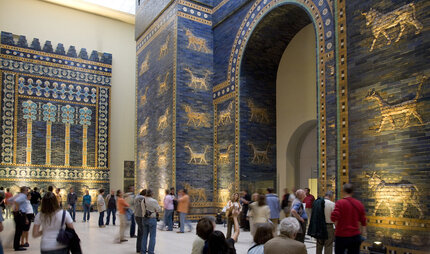
More museums than rainy days
Berlin for culture fans
There are some 170 museums in Berlin, that's more museums than rainy days in a year. We help you find the right exhibition.

Get to know the real Berlin
Exploring Berlin neighbourhoods
12x Berlin: we show you largely unknown spots in the neighbourhoods of Berlin's 12 districts. Because one thing is clear: there's more to
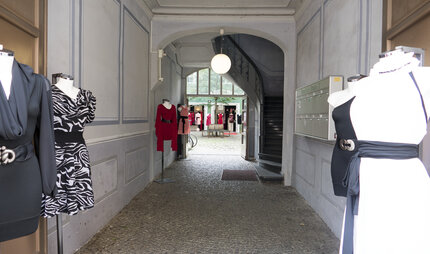
Flea markets, malls & luxury shops
Berlin for Shopaholics
From Kurfürstendamm to flea markets in rear courtyards: in Berlin, everyone becomes addicted to shopping. We show you Berlin's endless

Only the best of Berlin for you
Berlin for Luxury Lovers
Take a break in Berlin and let yourself be spoiled: in 5-star restaurants, premium department stores, and top-class restaurants.
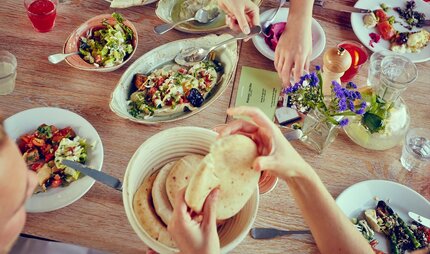
Food markets, restaurants & currywurst
Berlin for Foodies
Whether a trendy restaurant or a curry sausage, whether vegan or a burger, from street food markets to market halls to snack bars, we show
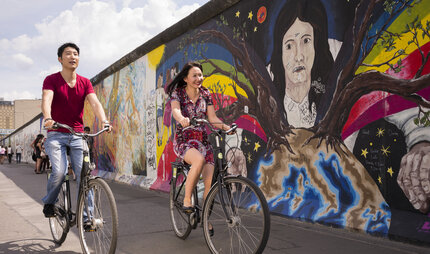
Tips & tours through the city
Berlin for Cyclists
Experience sightseeing from a different angle and pedal hard on your sightseeing tour through Berlin. It's a completely different

Berlin is sports central!
Berlin for Sports Fans
Cheer on Berlin teams in football, basketball and other sports. Or discover the many different trendy and recreational sports on offer here.

Tips for your family holiday
Berlin with small & big children
Berlin's range of offerings for children is huge. Whether you are bringing toddlers, schoolchildren, or teenagers, there are plenty of
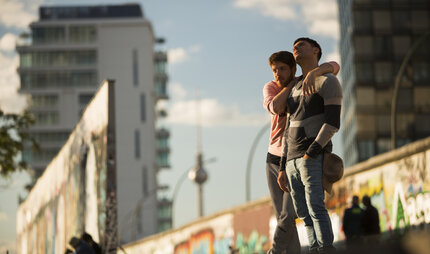
The best tips for the scene
Berlin for LGBTI*
Berlin is one of the most open and tolerant cities in the world today and the gay and lesbian scene in the German capital is flourishing

A Berlin guide for all visitors
Berlin for everyone, whatever your abilities
Discover barrier-free Berlin: on land, on water, or high up over the city. Check out our tips and recommendations.
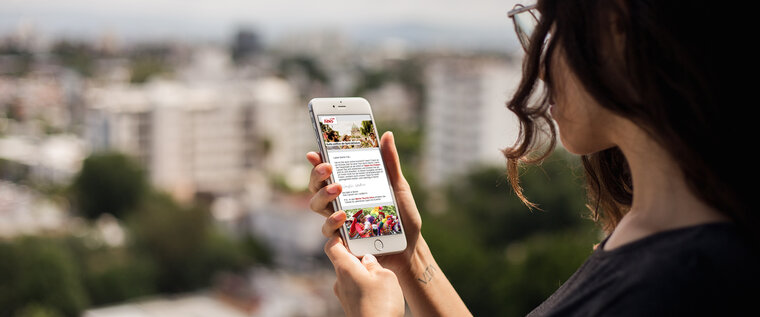
Berlin Newsletter
- Berlin news, events & trends
- Every month & for free
- Exclusive offers
Legal notice Privacy Statement
Book your city break to Berlin
We want your holiday to be a memorable experience – and we support you with a range of services and exclusive deals for your trip to Berlin. Looking for the right hotel? We have a wide selection of hotels for you – from budget accommodation to 5-star luxury.
And we have inspected all the hotels – to ensure you can enjoy a perfect holiday in Berlin. Our hotel selection includes accessible, family friendly and LGBTI* hotels.
And best of all – we give you one night free in our Berlin hotels . A special deal you wouldn’t want to miss! Bahnhit Berlin gives you a fantastic rail deal for Berlin – with your train ticket and hotel included.
Our travel advisors are happy to assist you and answer all your questions.
Because: We love Berlin and know our city like no other!
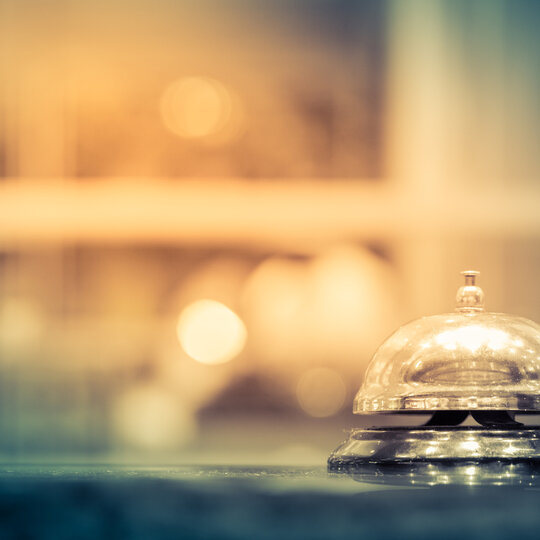
Your Hotel in Berlin
More than 300 certified hotels
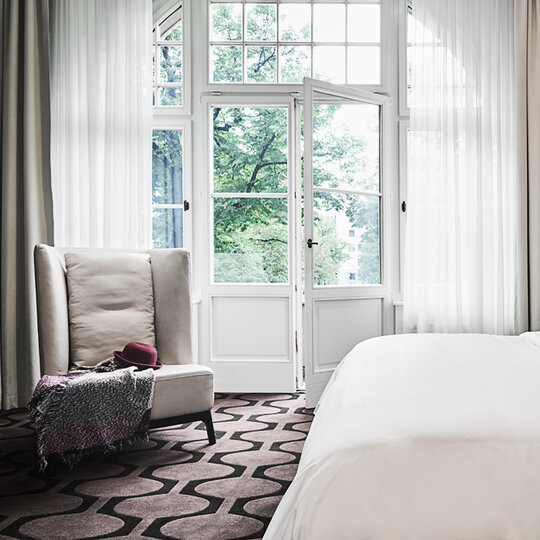
Special Deal: Stay 4, Pay 3 from €242
Choose hotel & save
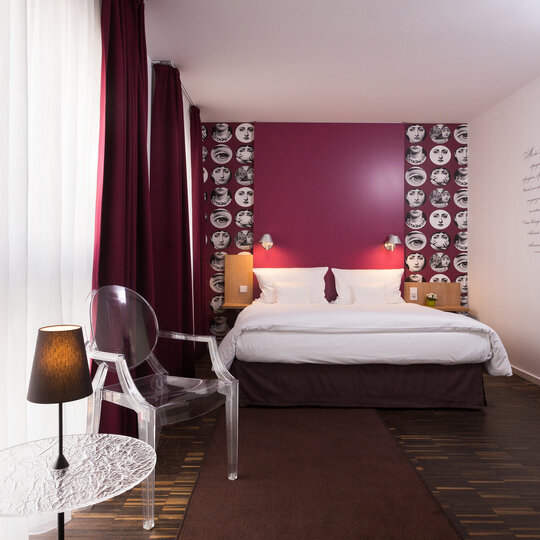
Special Deal: Stay 3, Pay 2 from €156.00
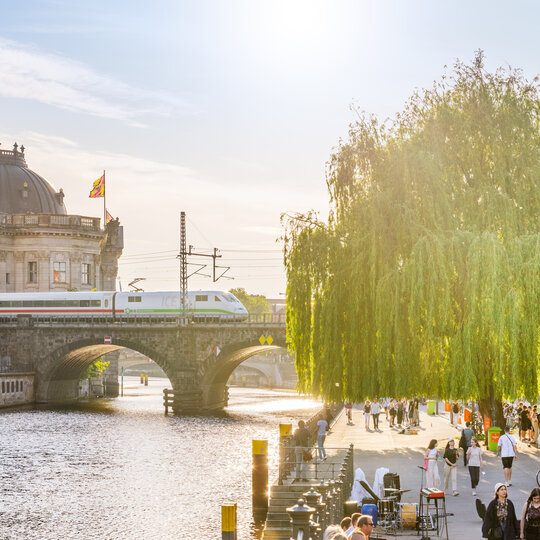
Berlin for a bargain price
Including train journey & hotel

Booking advantages on visitBerlin.de
- Your complete Berlin holiday – hotels, city trips, tickets & tips
- Secure booking on the official Berlin travel portal
- Qualified Berlin experts with over 20 years experience
- Free of charge travel advice, no commission fees
- Exclusive prize games for our newsletter readers
- American Express
Useful information for your trip to Berlin

City Trips for many
Group travel to Berlin
From school and college tours to company trips or activity and fun tours by larger groups of friends – we’ll be happy to help you plan your
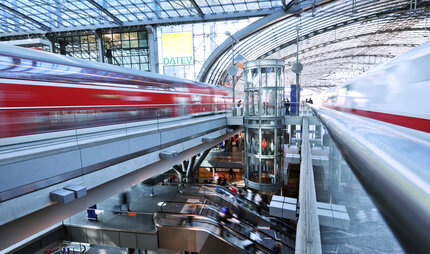
Everything you need to know
Travelling to Berlin
How best to get to Berlin? By train, by car or by coach? Check out our tips for travelling to the German capital.

Information on hotels, tickets and more
Berlin Tourist Infos
Get information and advice for your Berlin visit from the experts at the Berlin Tourist Information Offices dotted around the city.

IMAGES
VIDEO
COMMENTS
Summer At Last: Beer Gardens, Swimming Fun, Strawberry Ice Cream. Summer Pleasures in Germany. Golden sunshine, colourful forests: the Indian summer can also be found in Germany. An ideal time for active holidaymakers and wellness fans. And for epicures, since this is harvest time. Autumn Holidays in Germany. Winter is the favourite season for ...
Germany is blessed with some of Europe's most high-powered sights. It has spectacular scenery — the jagged Alps, flower-filled meadows, rolling hills of forests and farms, and mighty rivers — dotted all over with castles and churches of every variety. In Deutschland's idyllic half-timbered villages, you can enjoy strudel at the bakery or sip a stein of beer while bikes rattle by over the ...
Here are some German trip itinerary ideas…. Germany itinerary ideas for a taste of everything: Southern Germany Classic: Munich, the Allgäu (for Castles!), Garmisch Partenkirchen, Berchtesgaden National Park, Stuttgart & Area, Black Forest. Eastern Germany Classic: Berlin, Dresden, Saxon Switzerland.
Budget Travel. 10 tips for traveling in Germany on a budget. May 4, 2024 • 5 min read. From Deutsche Bahn rail passes to camping in the summer months, there are plenty of ways to save money in Germany.
Germany Travel Guide. Last Updated: April 29, 2024. Germany. The country is synonymous with beer, sausages, incredible hiking, majestic castles, serious people, and wild techno parties. It's huge, diverse, and utterly amazing. There's a vibrant art and music scene in Berlin, beautiful forests in the west, majestic cathedrals and castles ...
What To Expect. Language: The official language of Germany is German, though most Germans that work in tourism speak English as well. Currency: The official currency of Germany is the Euro (EUR), and the exchange rate is currently 1 USD to 0.88 EUR. Credit Cards & ATMs: Germany is a predominately a cash-focused society, you will have no problem using your credit card when in Germany.
Welcome to your ultimate Germany Travel Guide! If you're yearning to explore a nation where history and modernity coalesce, Germany is your go-to destination. This guide aims to be your compass, pointing you to Germany's must-see sights, hidden gems, and unique experiences. From culinary delights to architectural wonders, we've got you covered.
Saxony-Anhalt and the Harz Travel Guide. The Alps and eastern Bavaria Travel Guide. The Black Forest Travel Guide. Thuringia Travel Guide. World Heritage sites in Germany. Bremen and Lower Saxony. Munich. UNESCO world heritage sites in Germany. Germany sport a whopping 46 UNESCO world heritage sitesworth your visit.
2. Cologne. Cologne (Köln) is known for its liberal climate and its wealth of historic sights. Taking its name from the Romans (who founded it in the first century CE as Colonia Claudia Ara Agrippinensium), it's been a major center of German history for centuries.
Germany (German: Deutschland), officially known as the Federal Republic of Germany (Bundesrepublik Deutschland) is the largest country in Central Europe.An economically, politically, and culturally influential nation, Germany is the richest and most populous European Union member state. Known for its rich cultural heritage, innovative inventions, its old-world charm and Gemütlichkeit ...
Planning Your Trip. Best Time to Visit: If you're traveling to see the sites, the months of May and September usually offer less crowds and better weather. However, events like Oktoberfest and Germany's ever-popular Christmas markets draw tourists every year. Getting Around: Every corner of Germany is well-connected by car or train, with ...
Winter travel in Germany can be cold but beautiful. One of my favorite times of year to travel in Germany is during the four weeks of advent at Christmas. Yes, it gets dark early (by 5pm or a bit earlier) but the lights, decorations, and Christmas markets more than make up for it. Plus, you can go skiing and enjoy other winter activities.
Germany Travel Guide Basics. Currency: Euro Language: While German is the national language, the country has several dialects that originated in different regions with influences from surrounding countries. Most people also speak English, especially in larger cities. UNESCO-listed sites: Germany is home to an astounding 52 UNESCO World Heritage Sites, but some of the most well-known are ...
Get information on Germany Travel Guide - Expert Picks for your Vacation hotels, restaurants, entertainment, shopping, sightseeing, and activities. Read the Fodor's reviews, or post your own.
Germany Travel Itinerary 7 Days - West. For this itinerary, the total driving time would be around 14 - 15 hours and the distance would be slightly over 1100 km. For these calculations, we included the day trip to Monschau (and back to Cologne) as well as the day trip to Freiburg im Breisgau (and back to Stuttgart), which would be a longer ...
Experience all of this in the best way possible, with the help of the travel tips you'll find throughout our Tour My Germany guide. Gain insights into German culture, including customs, etiquette, and popular activities, whether you're taking a road trip, using train stations, public transportation or some of the busiest airports. Be prepared ...
15. 1001 Easy German Phrases. $7.95. This German phrase book is the ideal companion for your trip to Germany. With more than 1,000 basic words, phrases, and sentences in German it covers every travel situation you could think of from small talk, asking for directions, finding a bank, and ordering at restaurants.
Germany is a hidden gem when it comes to awesome travel destinations. Whatever suits you best - you can have it all: amazing city trips. wonderful nature. stunning mountain views. beautiful islands. great regional food. Tourism.de is your Germany travel guide. Enjoy your vacation!
Our tip: the exclusive travel package with Munich Card and Tower Ascent. Book now. 3 days from 218 € for 2 pers. Munich Card & City Pass. Discover Munich in a relaxed and uncomplicated way: discounts for the diverse range of art, culture and leisure activities with our guest cards. Book now from 8,90 Euro.
Because: We love Berlin and know our city like no other! Your complete Berlin holiday - hotels, city trips, tickets & tips. Secure booking on the official Berlin travel portal. Qualified Berlin experts with over 20 years experience. Free of charge travel advice, no commission fees.
Last year, Germany was also very popular with Chinese visitors, who made up the largest group of Asian tourists in the country. Chinese nationals, however, require a Schengen area visa. To apply ...
Germany: Threat of various strikes ends On 25 March, Deutsche Bahn reached an agreement with Germany's GDL train drivers' union, bringing an end to five months of negotiations and strikes.